List Of Mammals Of South America on:
[Wikipedia]
[Google]
[Amazon]
This is a list of the native wild mammal species recorded in South America.



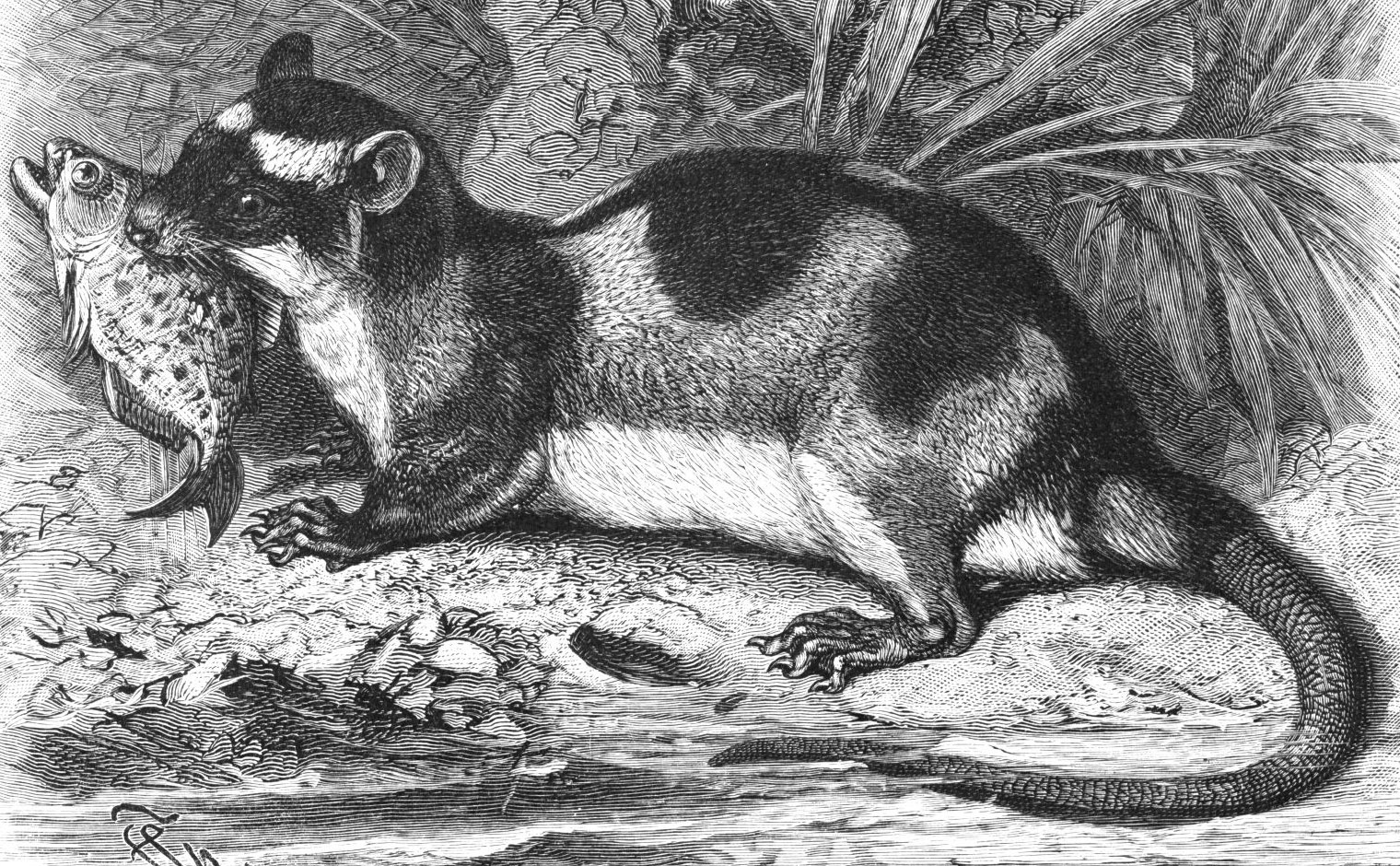





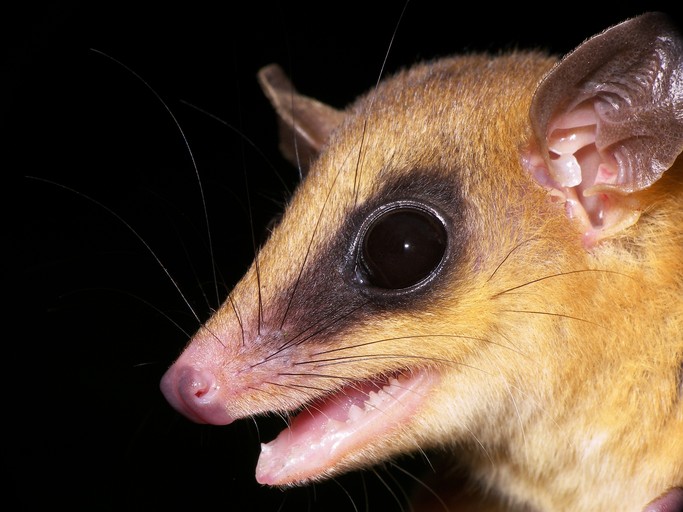
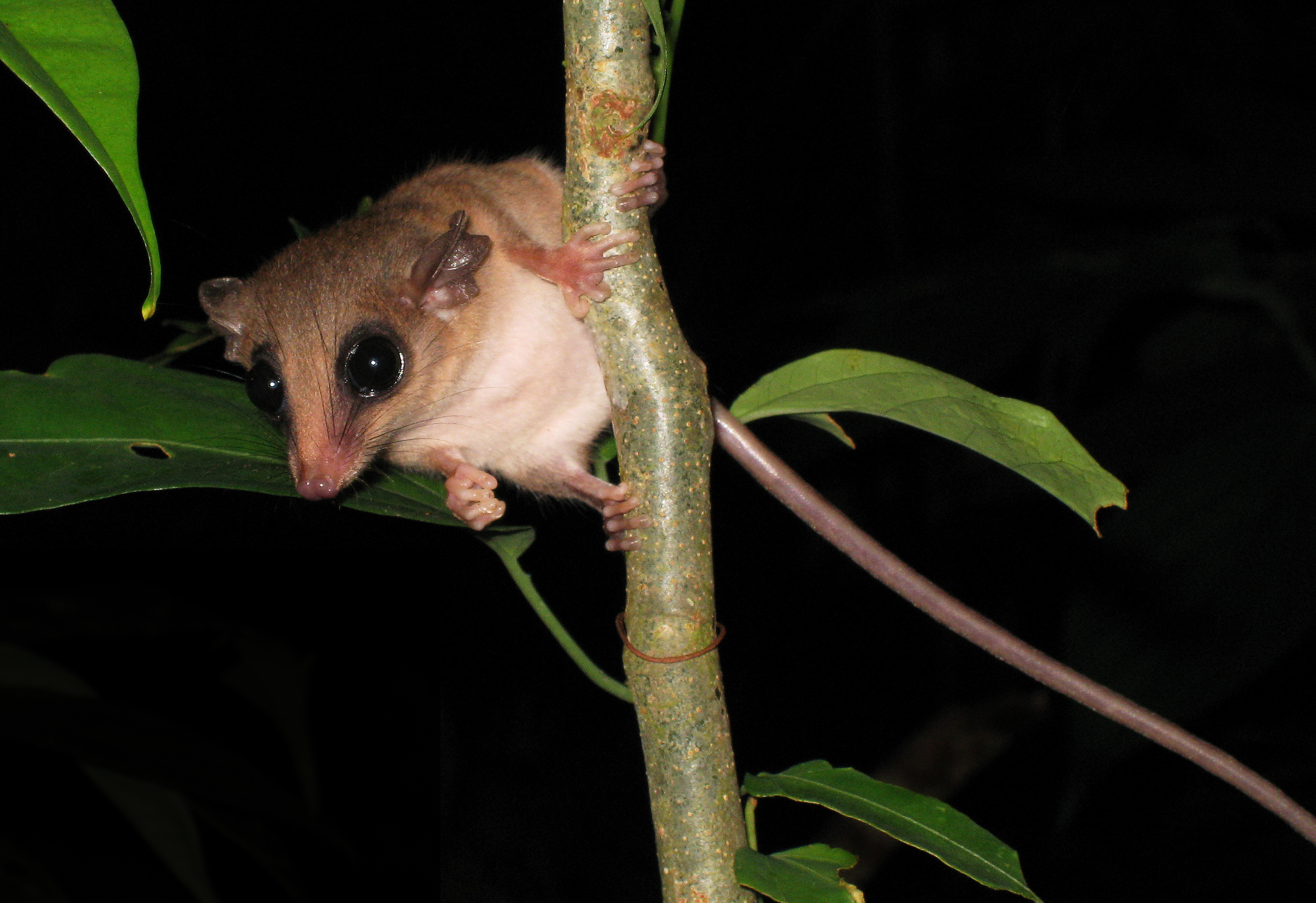


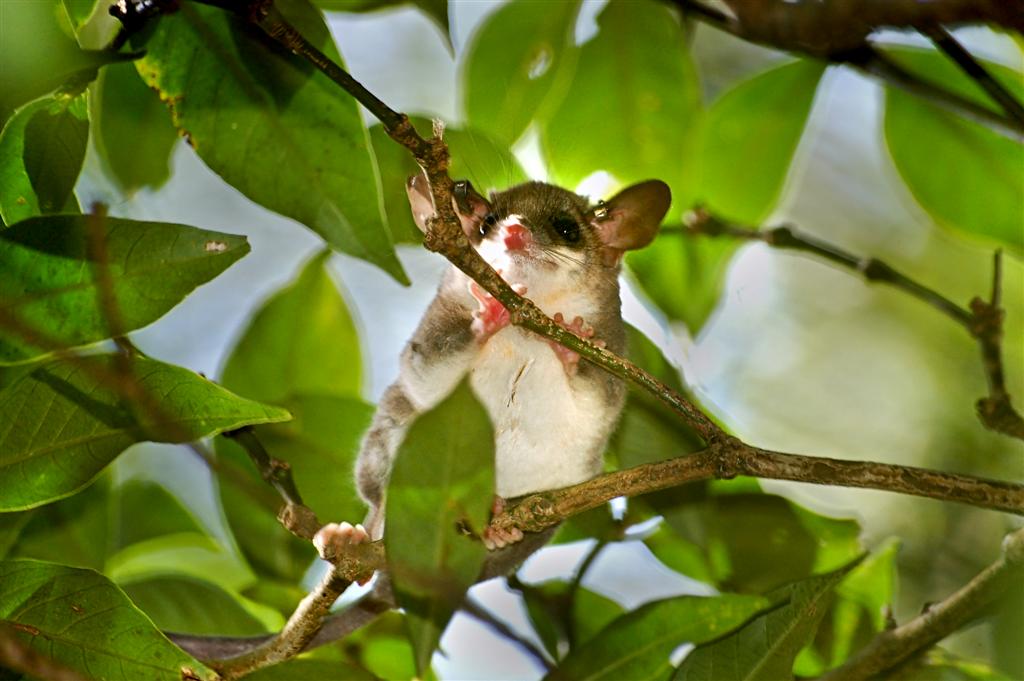


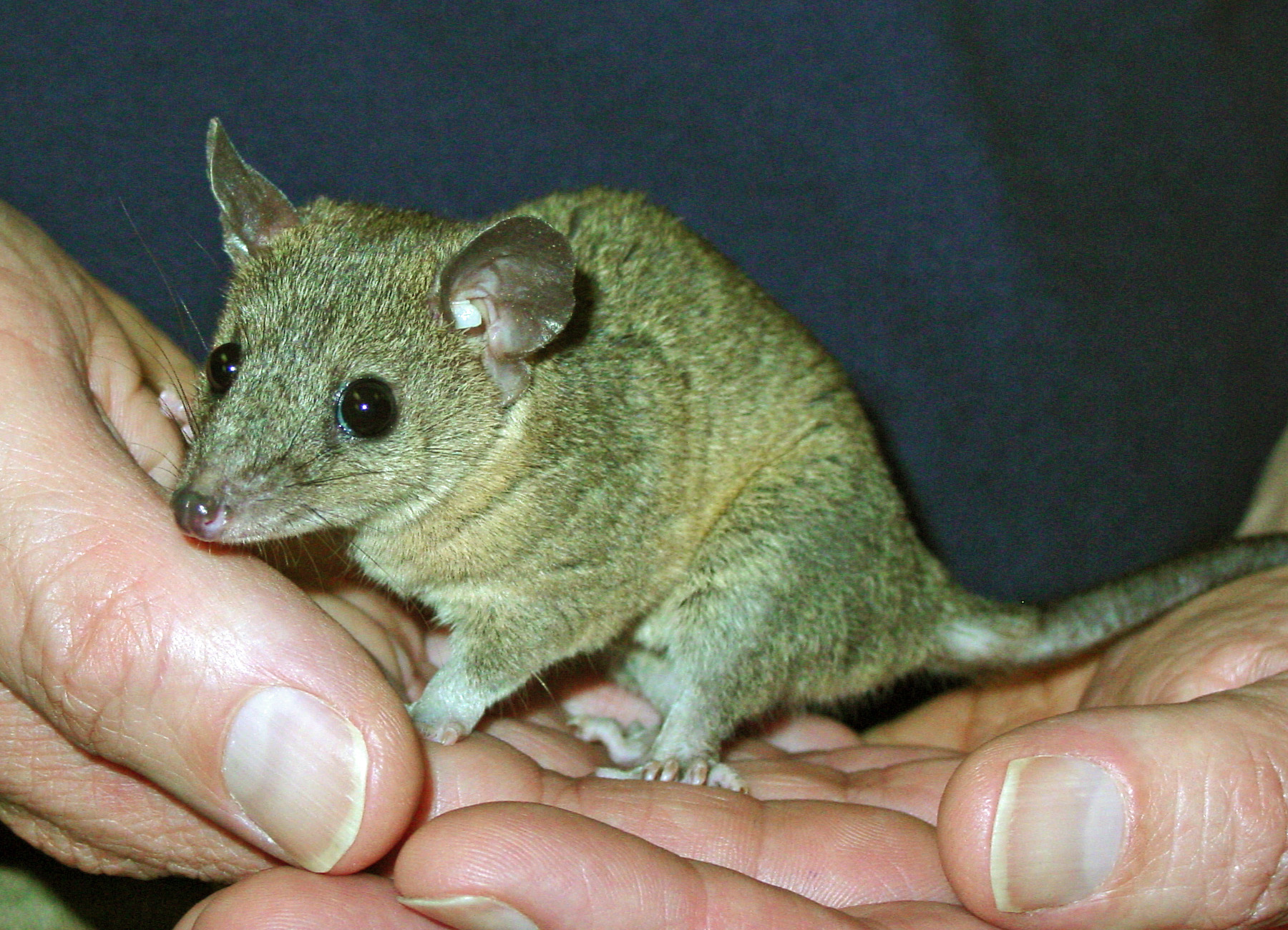


 There are six
There are six

 Sirenia is an order of fully aquatic, herbivorous mammals that inhabit rivers, estuaries, coastal marine waters, swamps, and marine wetlands. All four species are endangered. They evolved about 50 million years ago, and their closest living relatives are
Sirenia is an order of fully aquatic, herbivorous mammals that inhabit rivers, estuaries, coastal marine waters, swamps, and marine wetlands. All four species are endangered. They evolved about 50 million years ago, and their closest living relatives are




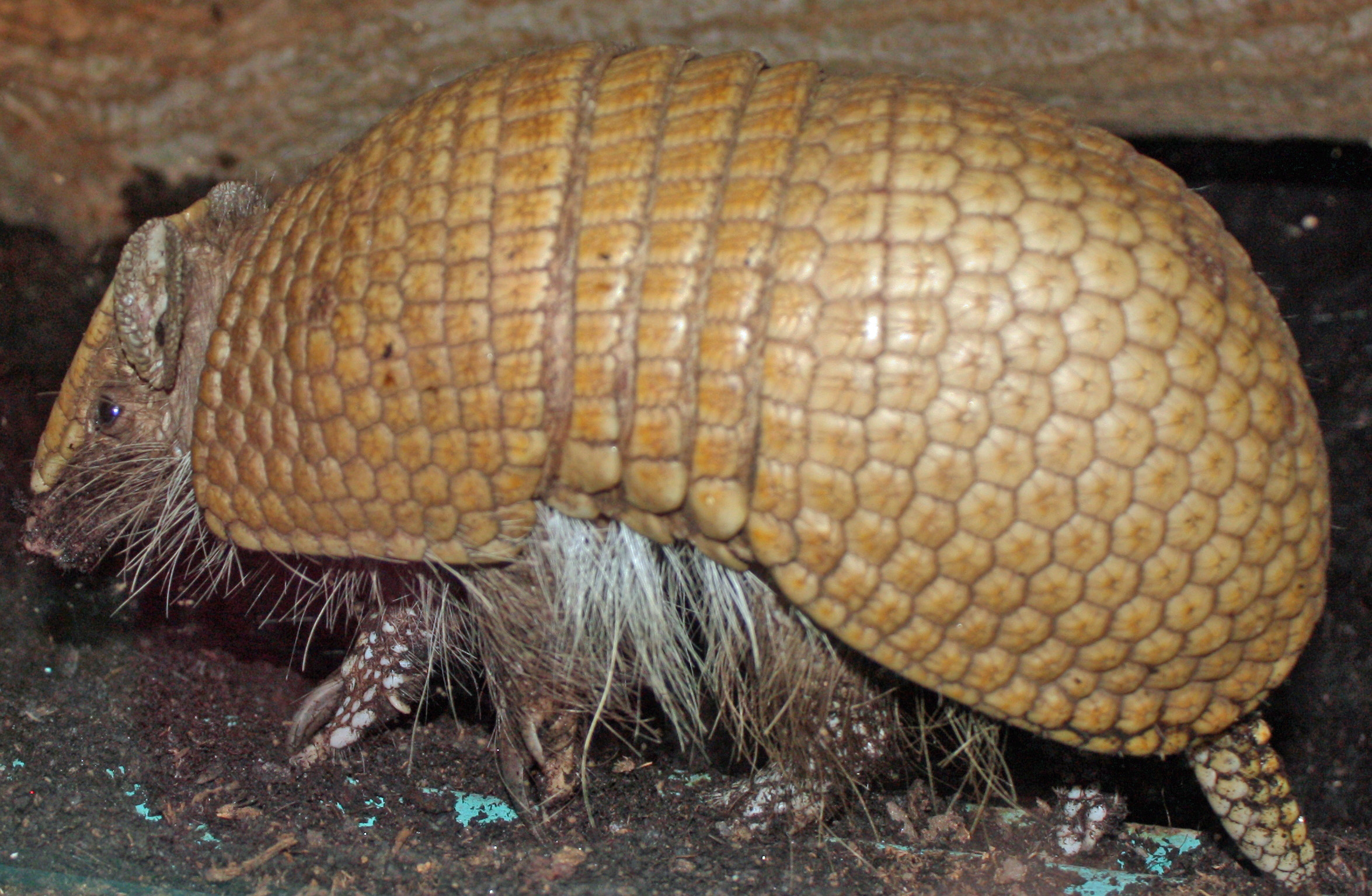 The armadillos are small mammals with a bony armored shell. All 21 extant species are found in South America, where they originated. Their much larger relatives, the pampatheres and
The armadillos are small mammals with a bony armored shell. All 21 extant species are found in South America, where they originated. Their much larger relatives, the pampatheres and 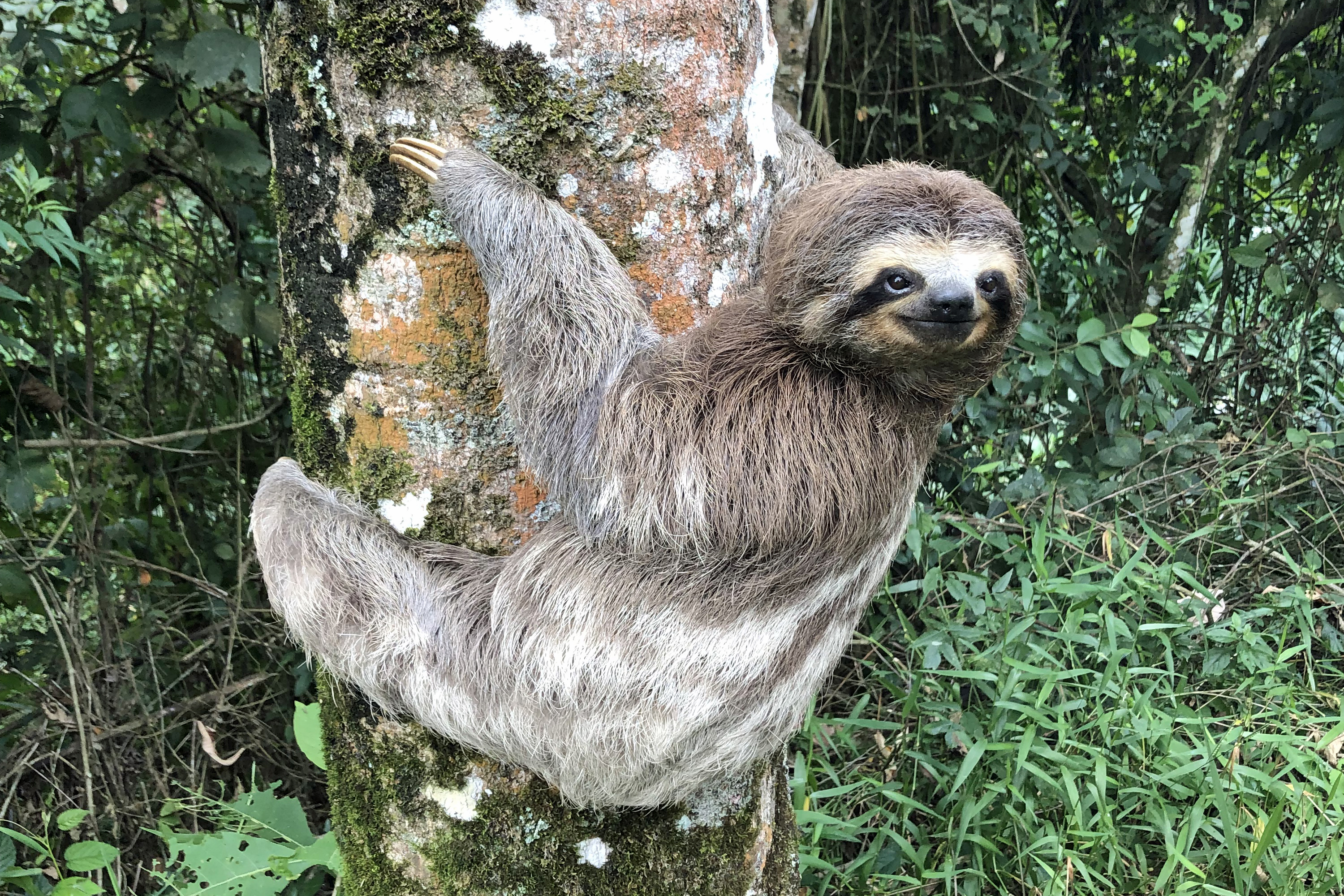








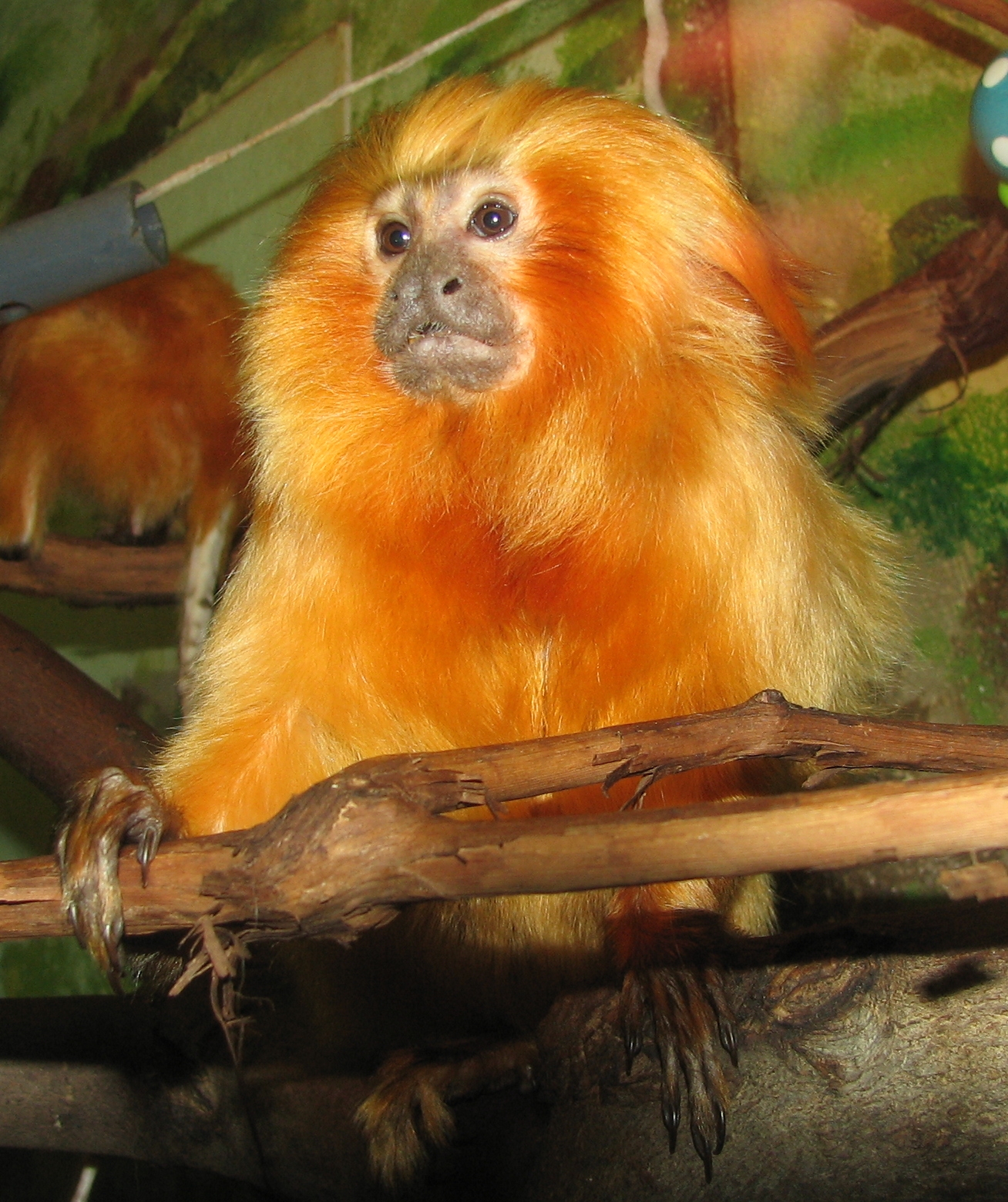


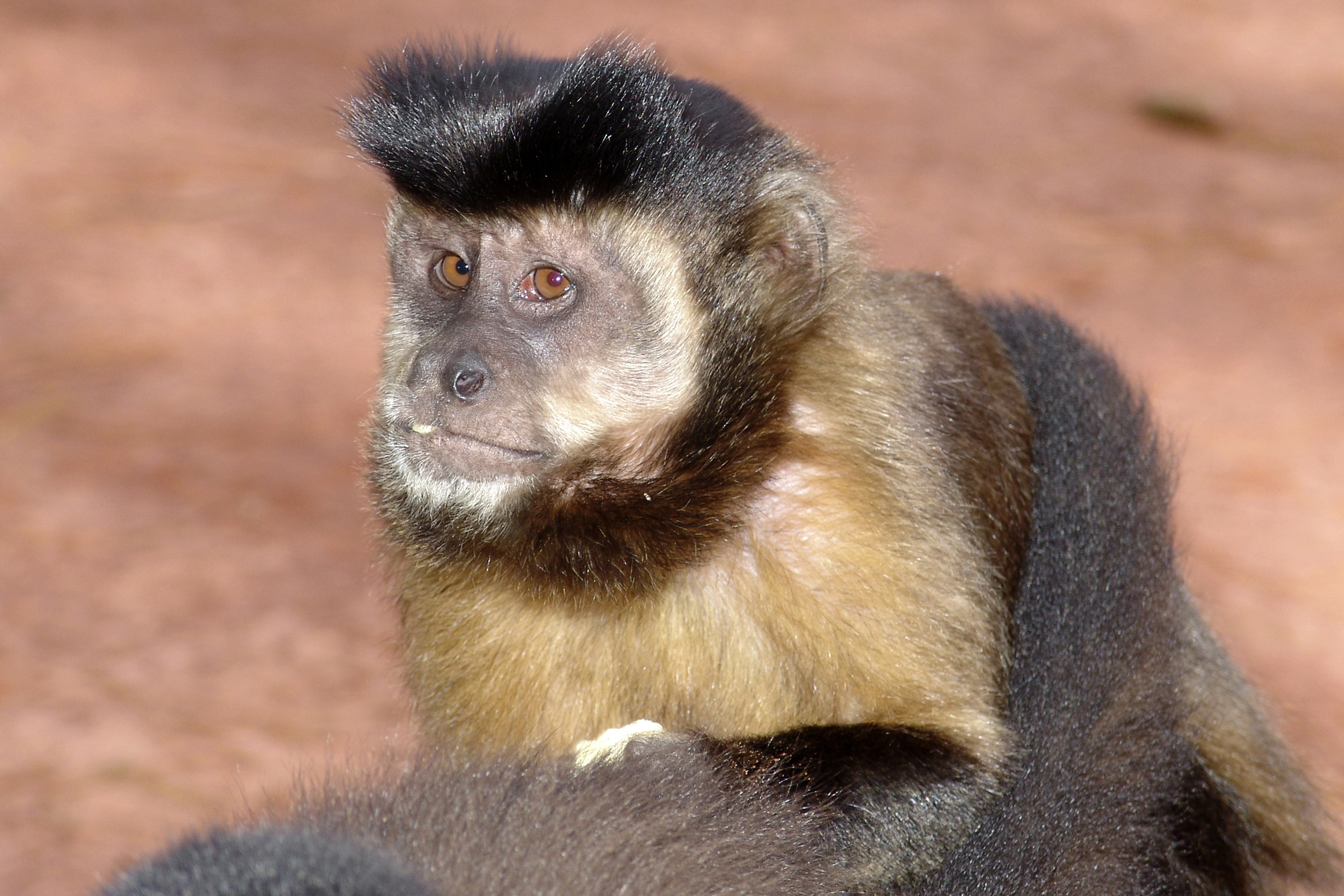





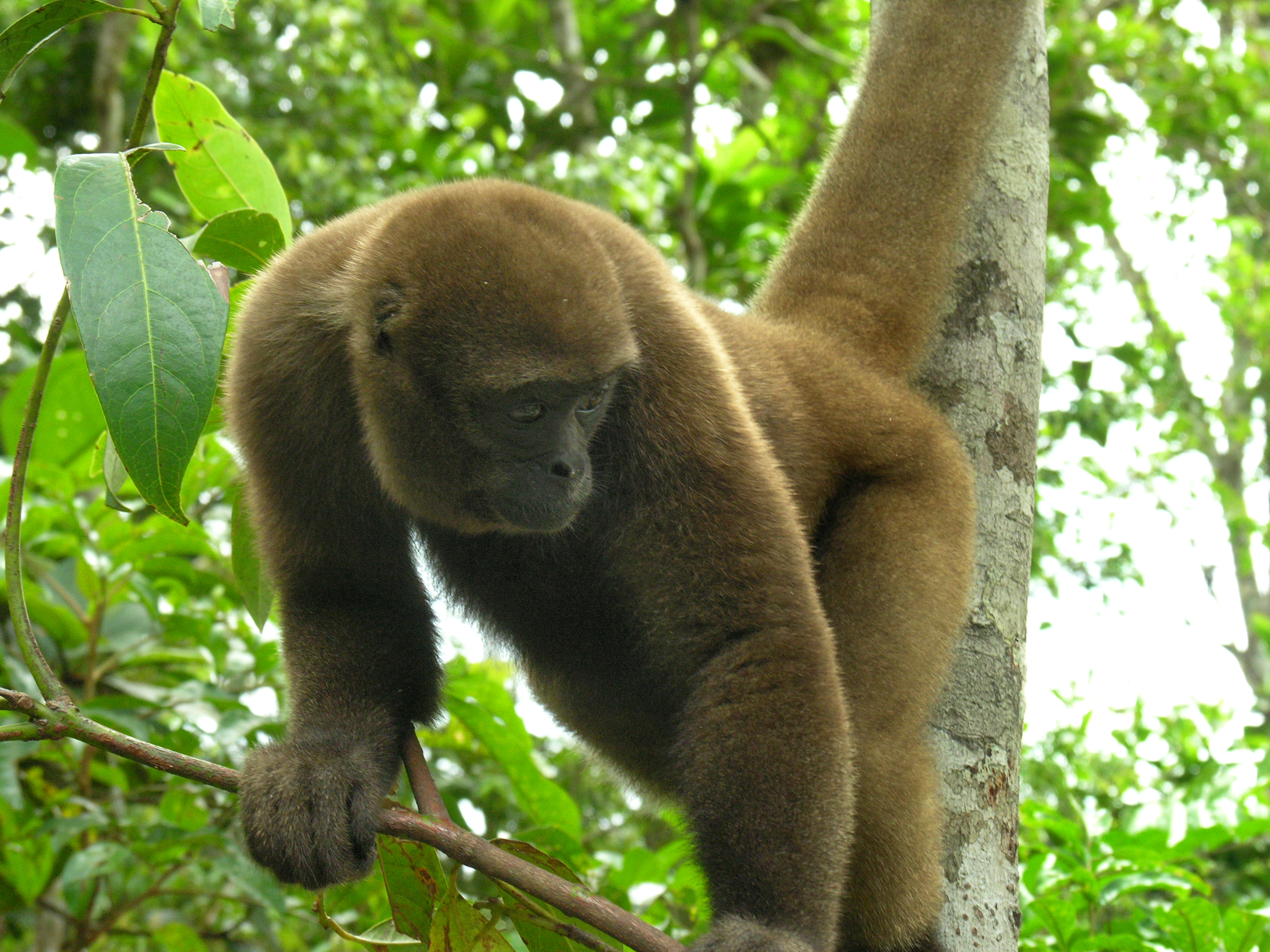



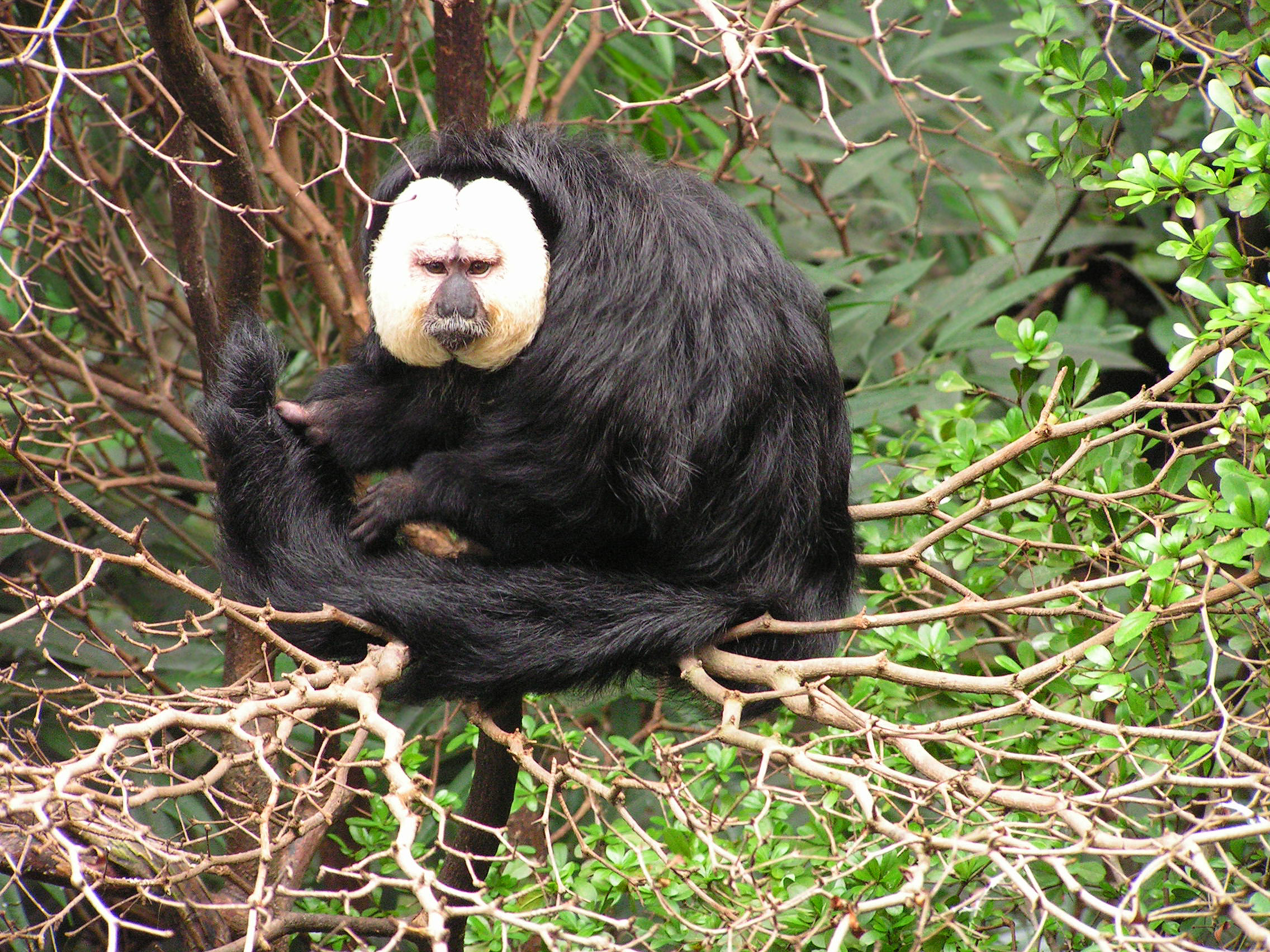



 The order Primates includes the
The order Primates includes the





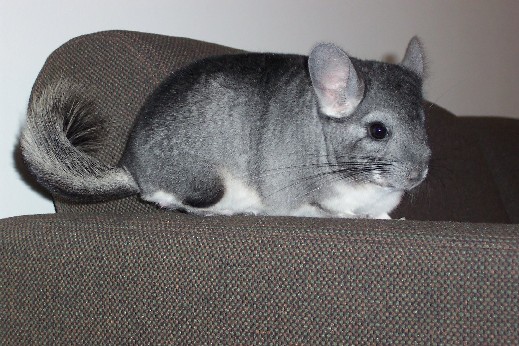
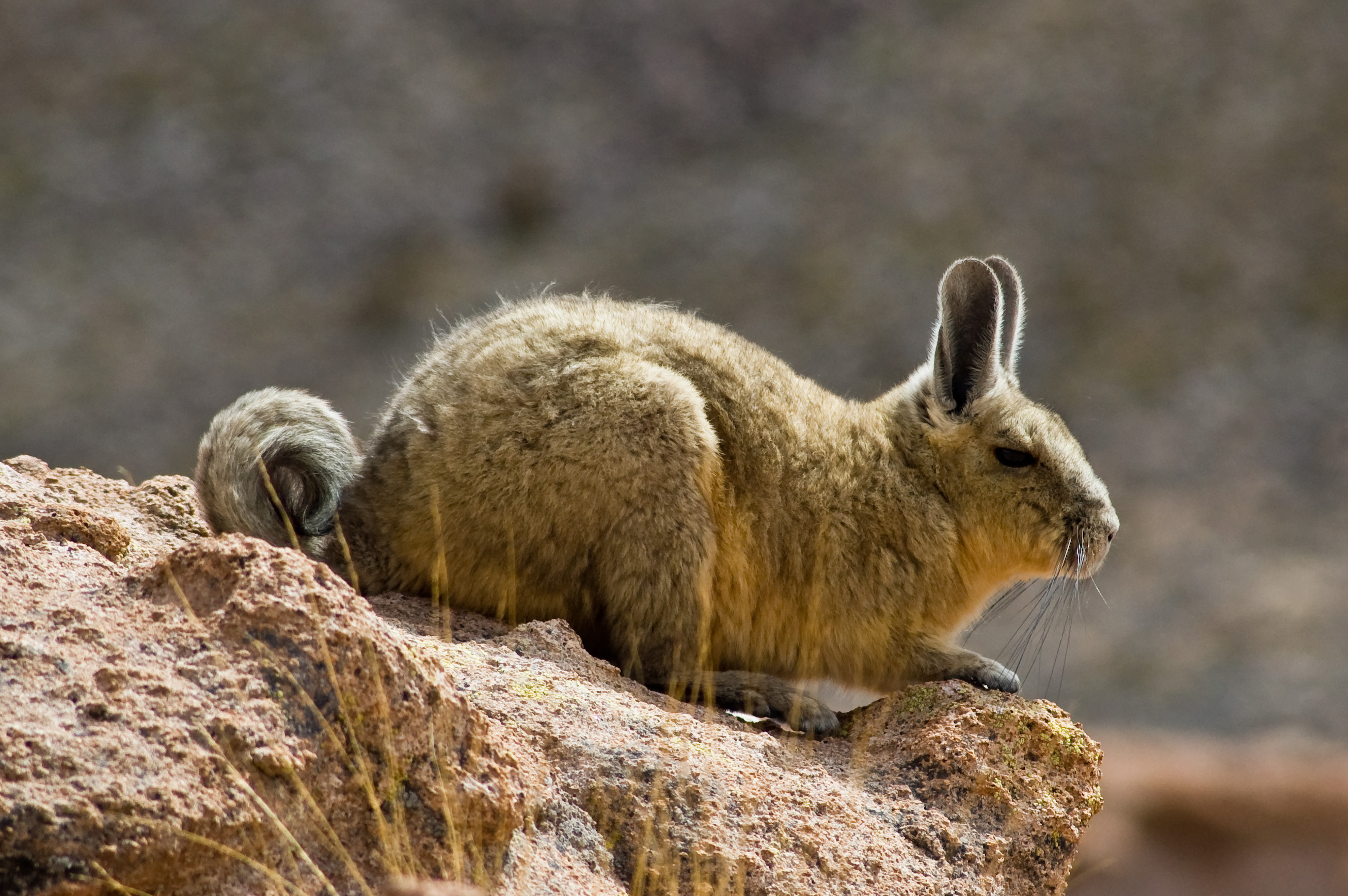




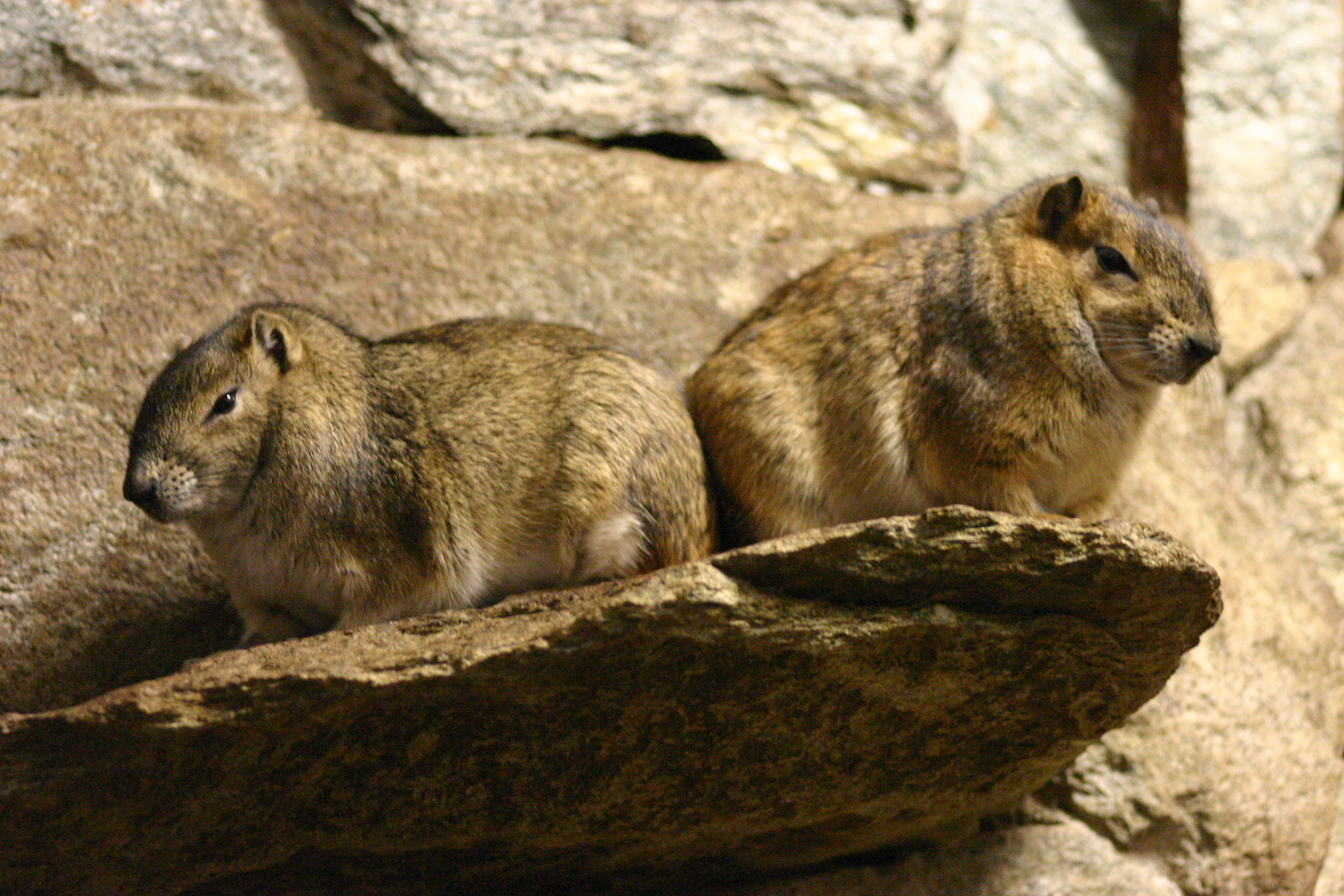
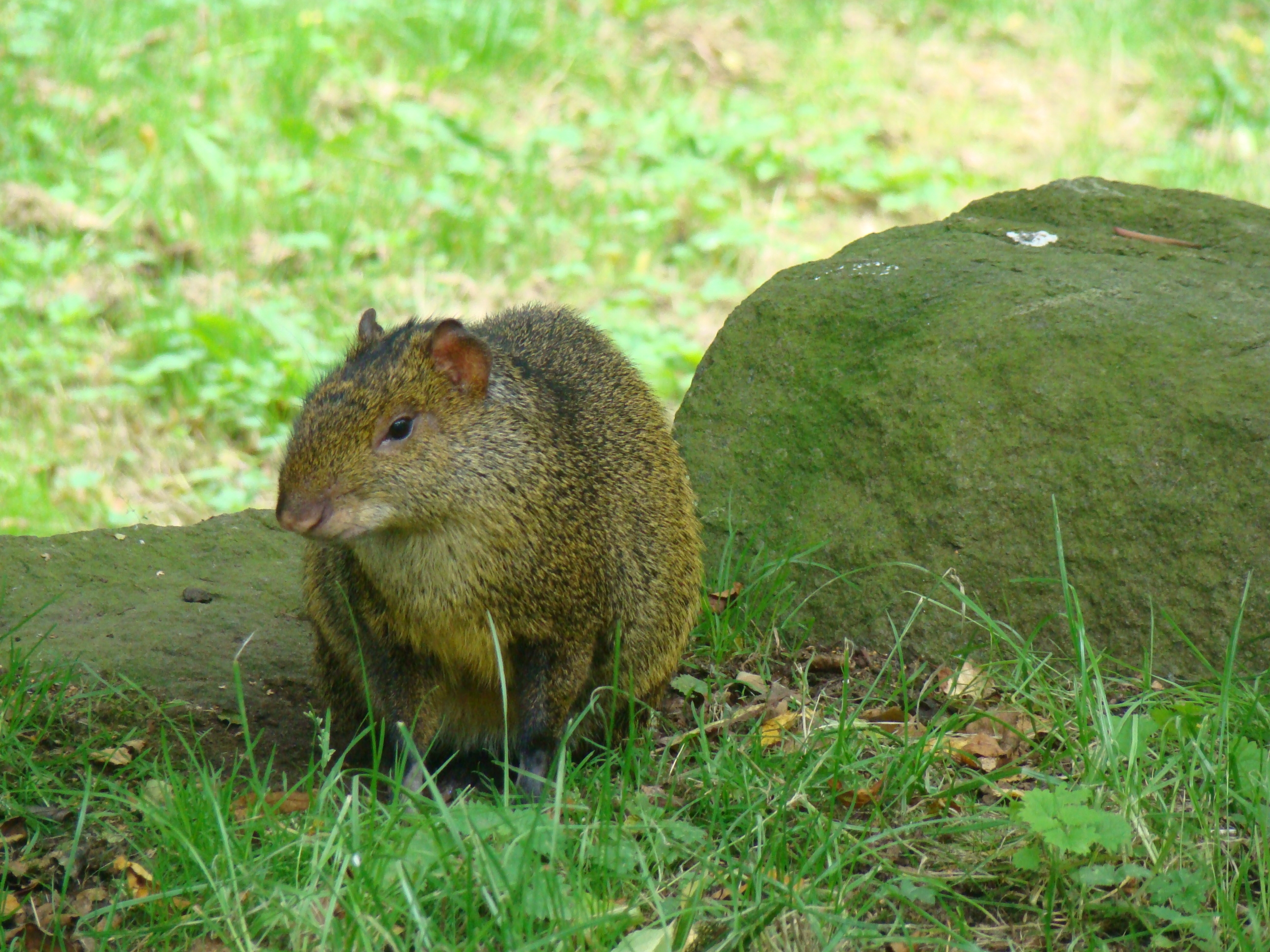


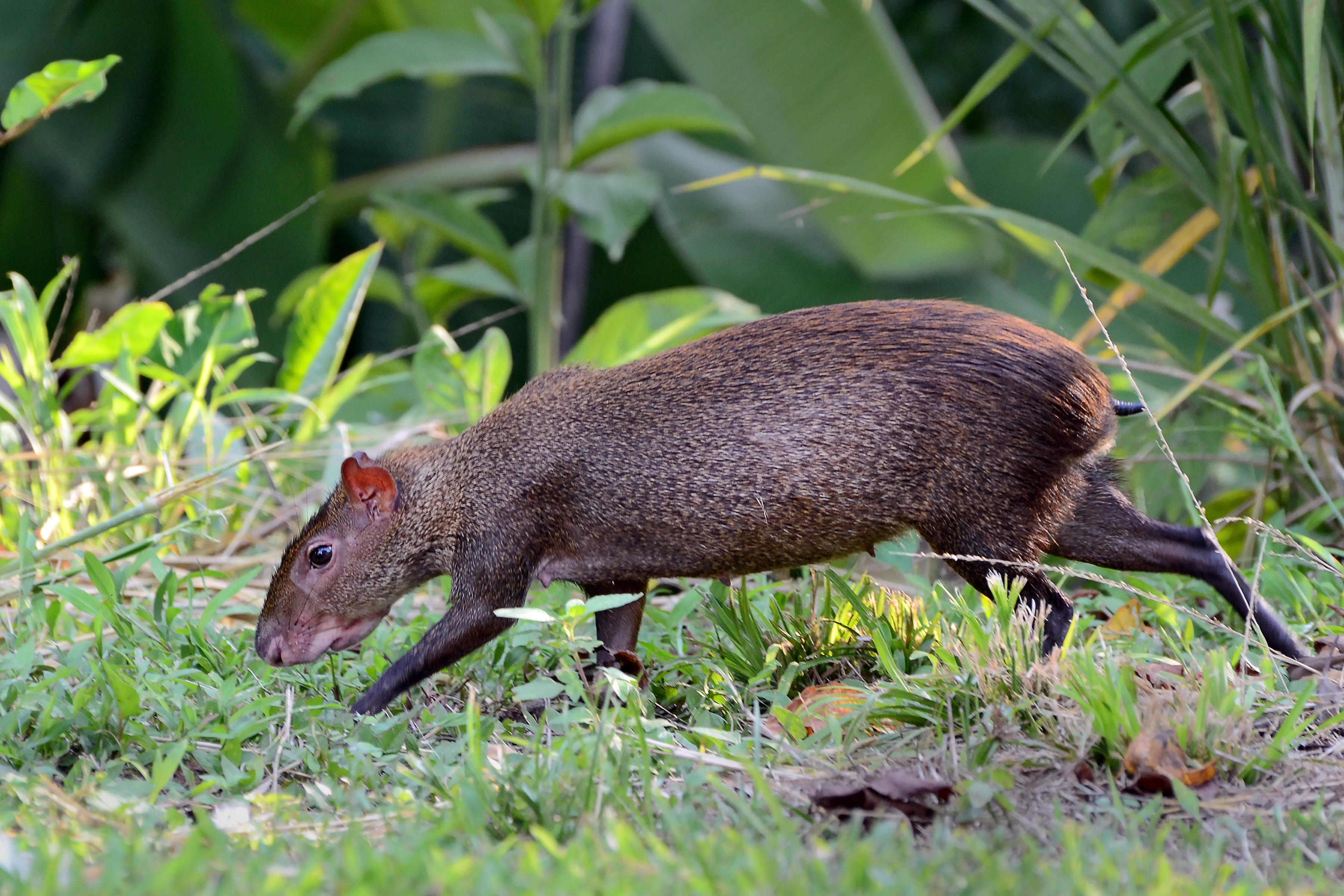


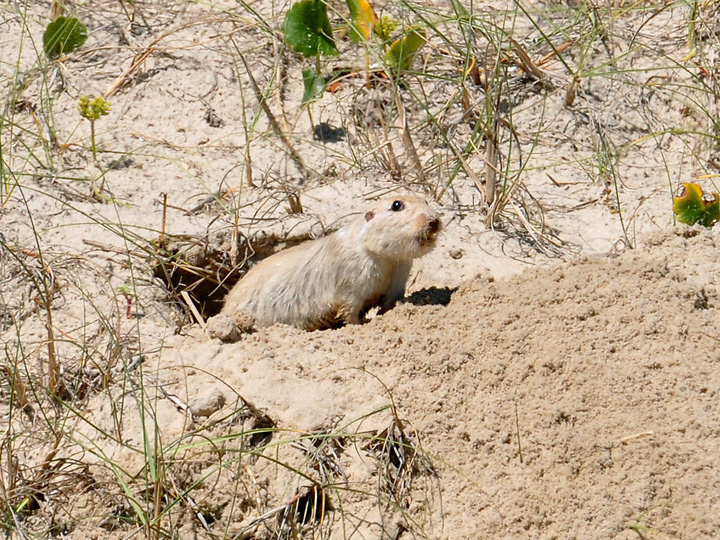







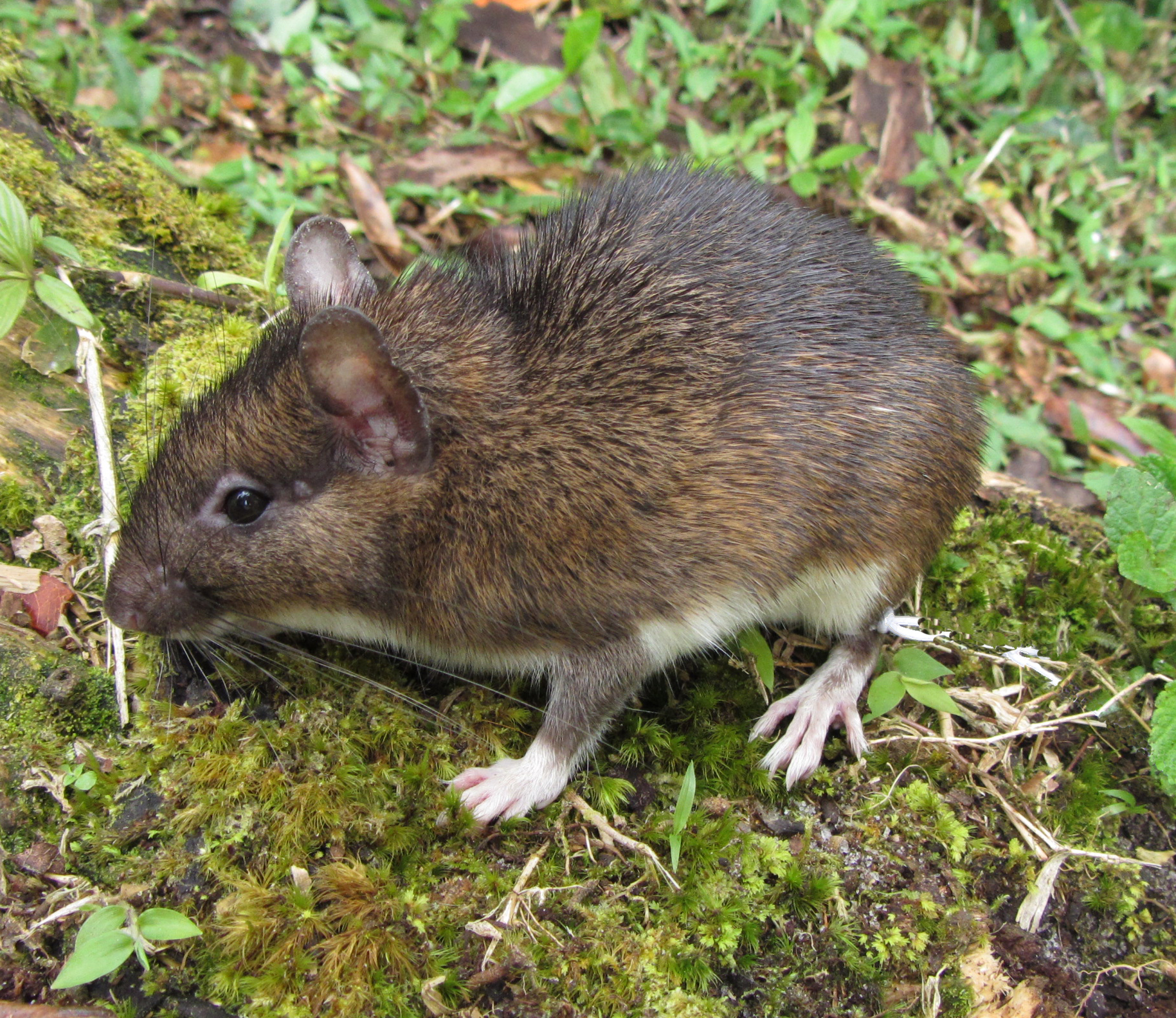
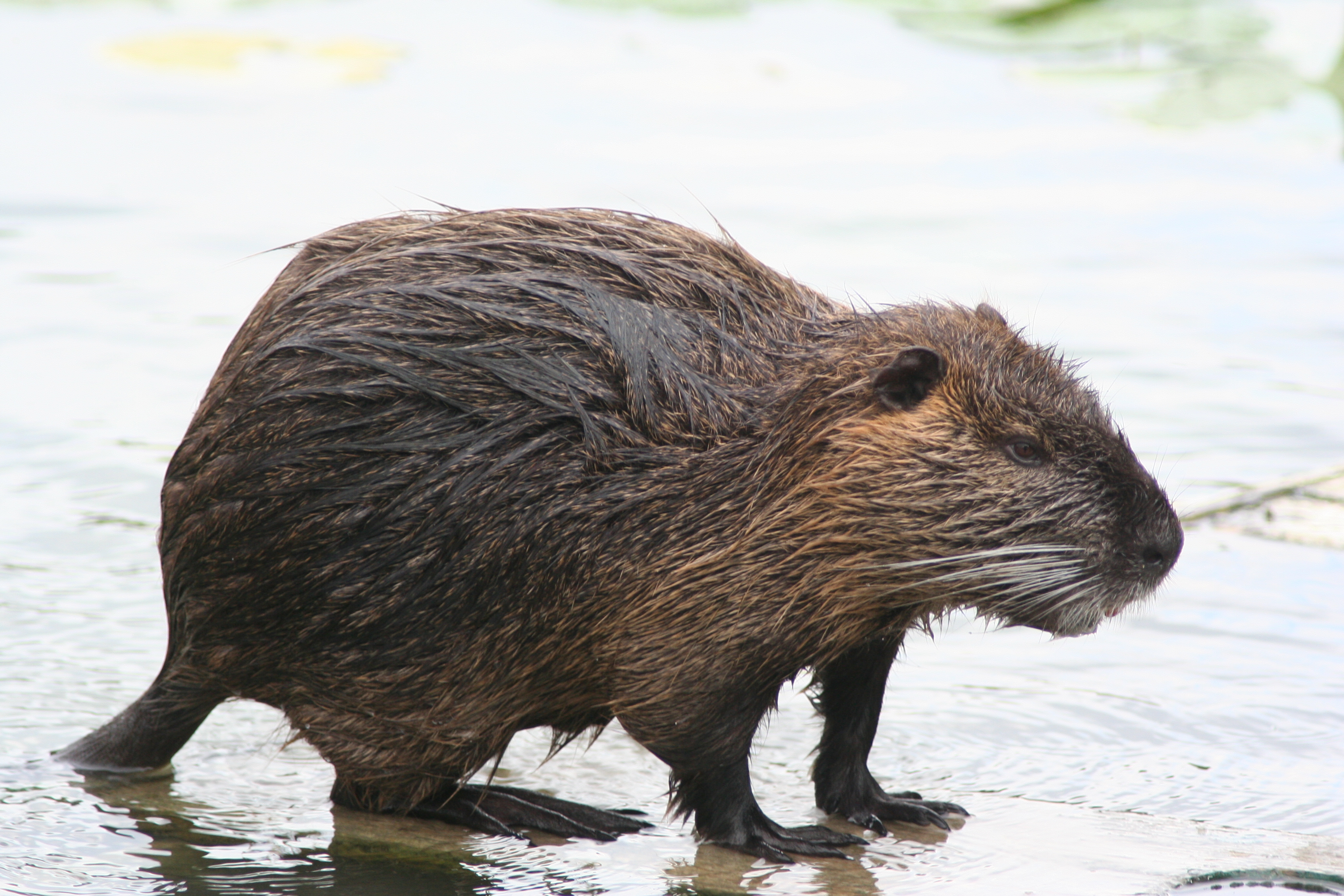 Rodents make up the largest order of mammals, with over 40% of mammalian species. They have two incisors in the upper and lower jaw which grow continually and must be kept short by gnawing. Most rodents are small, although the capybara can weigh up to 45 kg (100 lb). South America's rodent fauna today is largely an outgrowth of two spectacularly fortunate ancient "sweepstakes" Biological dispersal, dispersal events, each of which was followed by explosive Speciation, diversification. Caviomorpha, Caviomorphs, the first rodents to reach the continent, are believed to have washed ashore after rafting across the Atlantic from Africa over 30 million years ago. More recently, ancestral Sigmodontinae, sigmodontine rodents apparently island hopping, island-hopped from
Rodents make up the largest order of mammals, with over 40% of mammalian species. They have two incisors in the upper and lower jaw which grow continually and must be kept short by gnawing. Most rodents are small, although the capybara can weigh up to 45 kg (100 lb). South America's rodent fauna today is largely an outgrowth of two spectacularly fortunate ancient "sweepstakes" Biological dispersal, dispersal events, each of which was followed by explosive Speciation, diversification. Caviomorpha, Caviomorphs, the first rodents to reach the continent, are believed to have washed ashore after rafting across the Atlantic from Africa over 30 million years ago. More recently, ancestral Sigmodontinae, sigmodontine rodents apparently island hopping, island-hopped from  *Suborder: Sciuromorpha
**Family: Sciuridae (squirrels)
***Subfamily: Sciurillinae
****Genus: ''Sciurillus''
***** Neotropical pygmy squirrel, ''Sciurillus pusillus'' DD
***Subfamily: Sciurinae
****Tribe: Sciurini
*****Genus: ''Microsciurus''
****** Central American dwarf squirrel, ''Microsciurus alfari'' LC
****** Amazon dwarf squirrel, ''Microsciurus flaviventer'' DD
****** Western dwarf squirrel, ''Microsciurus mimulus'' LC
****** Santander dwarf squirrel, ''Microsciurus santanderensis'' DD
*****Genus: ''Sciurus''
****** Brazilian squirrel, ''Sciurus aestuans'' LC
****** South Yungas red squirrel, ''Sciurus argentinius''
****** Fiery squirrel, ''Sciurus flammifer'' DD
****** Yellow-throated squirrel, ''Sciurus gilvigularis'' DD
****** Red-tailed squirrel, ''Sciurus granatensis'' LC
****** Bolivian squirrel, ''Sciurus ignitus'' DD
****** Northern Amazon red squirrel, ''Sciurus igniventris'' LC
****** Atlantic Forest squirrel, ''Sciurus ingrami''
****** Andean squirrel, ''Sciurus pucheranii'' DD
****** Junín red squirrel, ''Sciurus pyrrhinus'' DD
****** Sanborn's squirrel, ''Sciurus sanborni'' DD
****** Southern Amazon red squirrel, ''Sciurus spadiceus'' LC
****** Guayaquil squirrel, ''Sciurus stramineus'' LC
*Suborder: Castorimorpha
**Family: Geomyidae
***Genus: ''Orthogeomys''
**** Thaeler's pocket gopher, ''Orthogeomys thaeleri'' LC
**Family: Heteromyidae
***Subfamily: Heteromyinae
****Genus: ''Heteromys''
***** Trinidad spiny pocket mouse, ''Heteromys anomalus'' LC
***** Southern spiny pocket mouse, ''Heteromys australis'' LC
***** Overlook spiny pocket mouse, ''Heteromys catopterius'' NE
***** Desmarest's spiny pocket mouse, ''Heteromys desmarestianus'' LC
***** Paraguaná spiny pocket mouse, ''Heteromys oasicus'' EN
***** Ecuadoran spiny pocket mouse, ''Heteromys teleus'' VU
*Suborder: Sciuromorpha
**Family: Sciuridae (squirrels)
***Subfamily: Sciurillinae
****Genus: ''Sciurillus''
***** Neotropical pygmy squirrel, ''Sciurillus pusillus'' DD
***Subfamily: Sciurinae
****Tribe: Sciurini
*****Genus: ''Microsciurus''
****** Central American dwarf squirrel, ''Microsciurus alfari'' LC
****** Amazon dwarf squirrel, ''Microsciurus flaviventer'' DD
****** Western dwarf squirrel, ''Microsciurus mimulus'' LC
****** Santander dwarf squirrel, ''Microsciurus santanderensis'' DD
*****Genus: ''Sciurus''
****** Brazilian squirrel, ''Sciurus aestuans'' LC
****** South Yungas red squirrel, ''Sciurus argentinius''
****** Fiery squirrel, ''Sciurus flammifer'' DD
****** Yellow-throated squirrel, ''Sciurus gilvigularis'' DD
****** Red-tailed squirrel, ''Sciurus granatensis'' LC
****** Bolivian squirrel, ''Sciurus ignitus'' DD
****** Northern Amazon red squirrel, ''Sciurus igniventris'' LC
****** Atlantic Forest squirrel, ''Sciurus ingrami''
****** Andean squirrel, ''Sciurus pucheranii'' DD
****** Junín red squirrel, ''Sciurus pyrrhinus'' DD
****** Sanborn's squirrel, ''Sciurus sanborni'' DD
****** Southern Amazon red squirrel, ''Sciurus spadiceus'' LC
****** Guayaquil squirrel, ''Sciurus stramineus'' LC
*Suborder: Castorimorpha
**Family: Geomyidae
***Genus: ''Orthogeomys''
**** Thaeler's pocket gopher, ''Orthogeomys thaeleri'' LC
**Family: Heteromyidae
***Subfamily: Heteromyinae
****Genus: ''Heteromys''
***** Trinidad spiny pocket mouse, ''Heteromys anomalus'' LC
***** Southern spiny pocket mouse, ''Heteromys australis'' LC
***** Overlook spiny pocket mouse, ''Heteromys catopterius'' NE
***** Desmarest's spiny pocket mouse, ''Heteromys desmarestianus'' LC
***** Paraguaná spiny pocket mouse, ''Heteromys oasicus'' EN
***** Ecuadoran spiny pocket mouse, ''Heteromys teleus'' VU

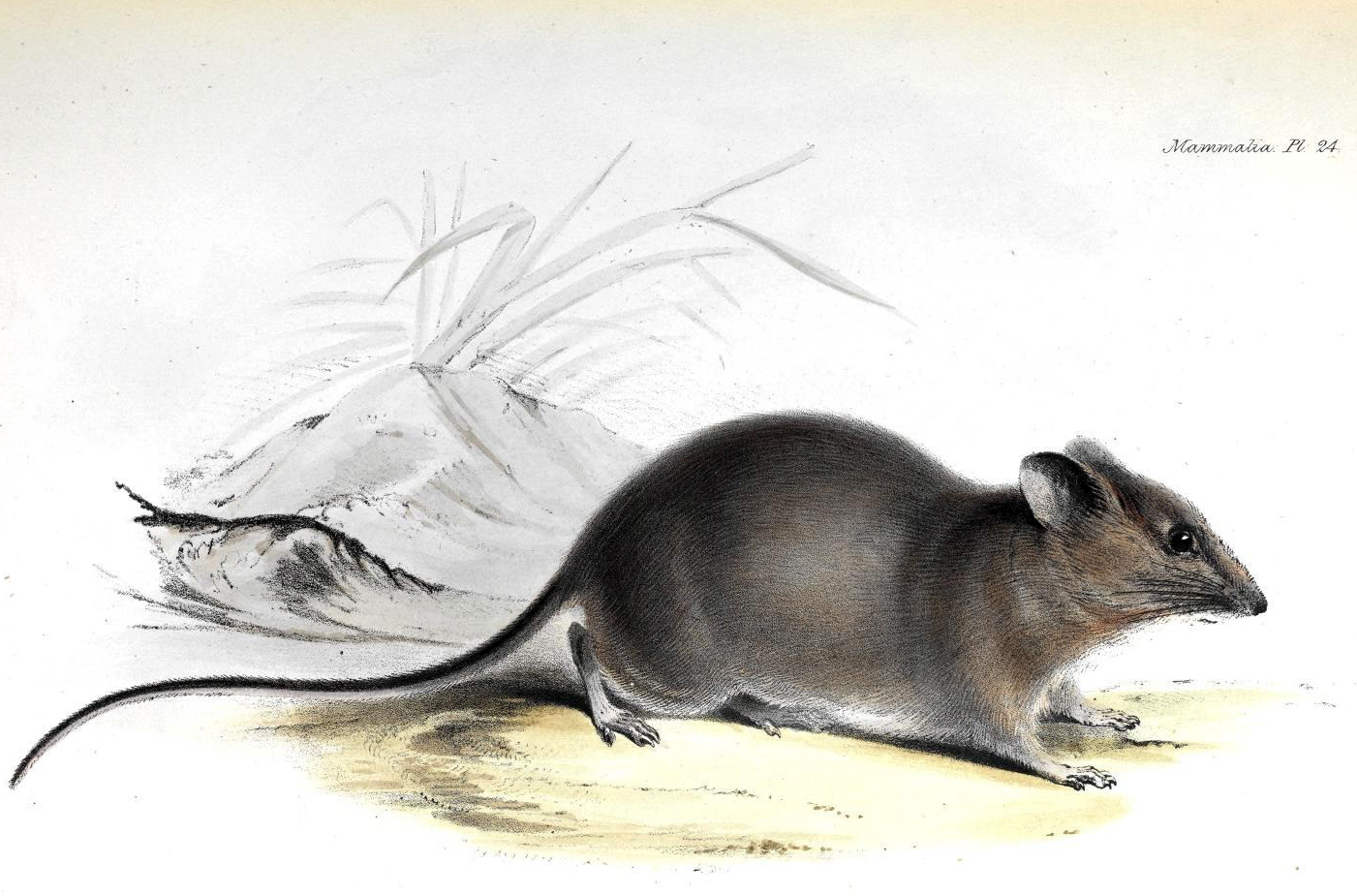
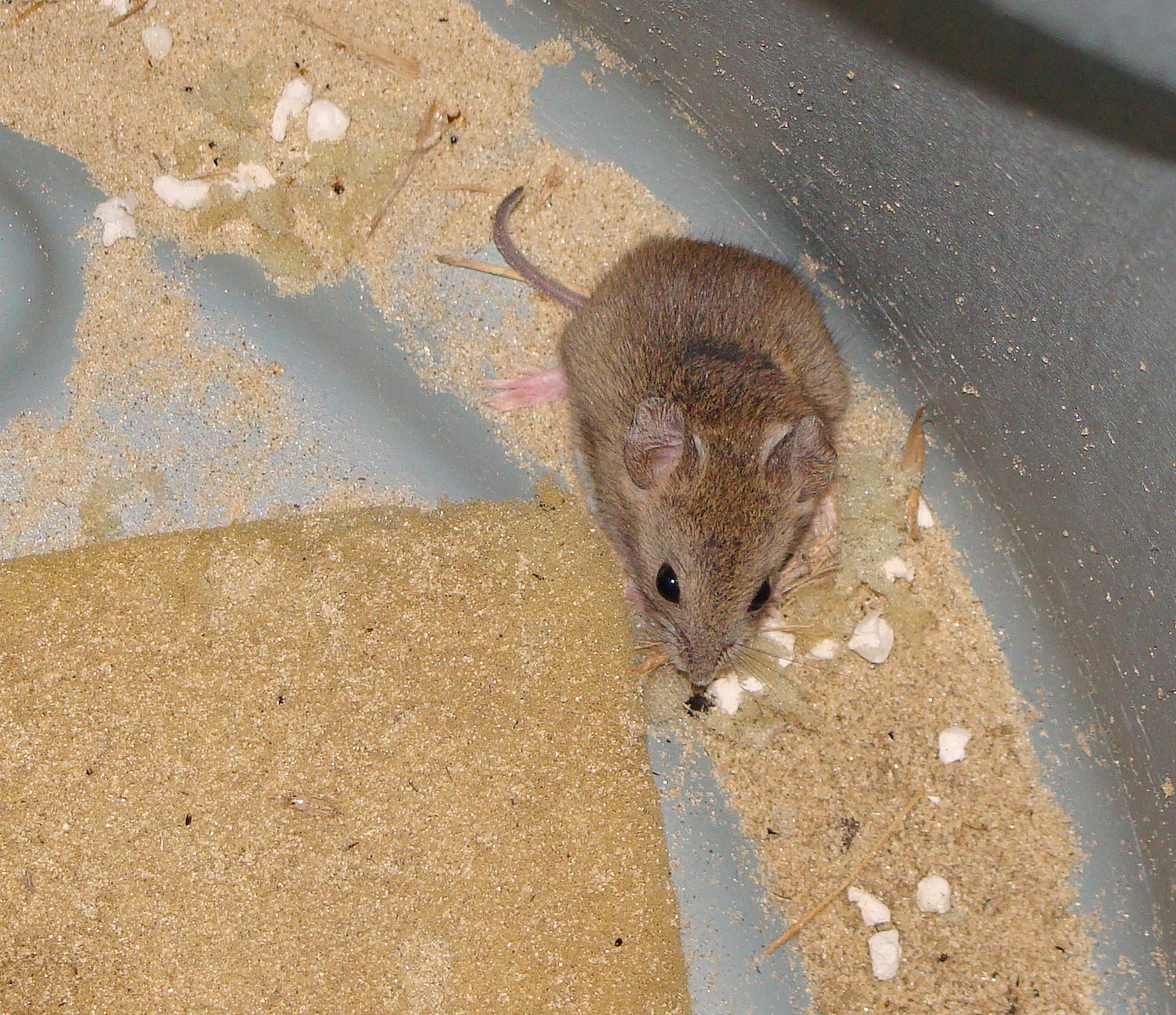
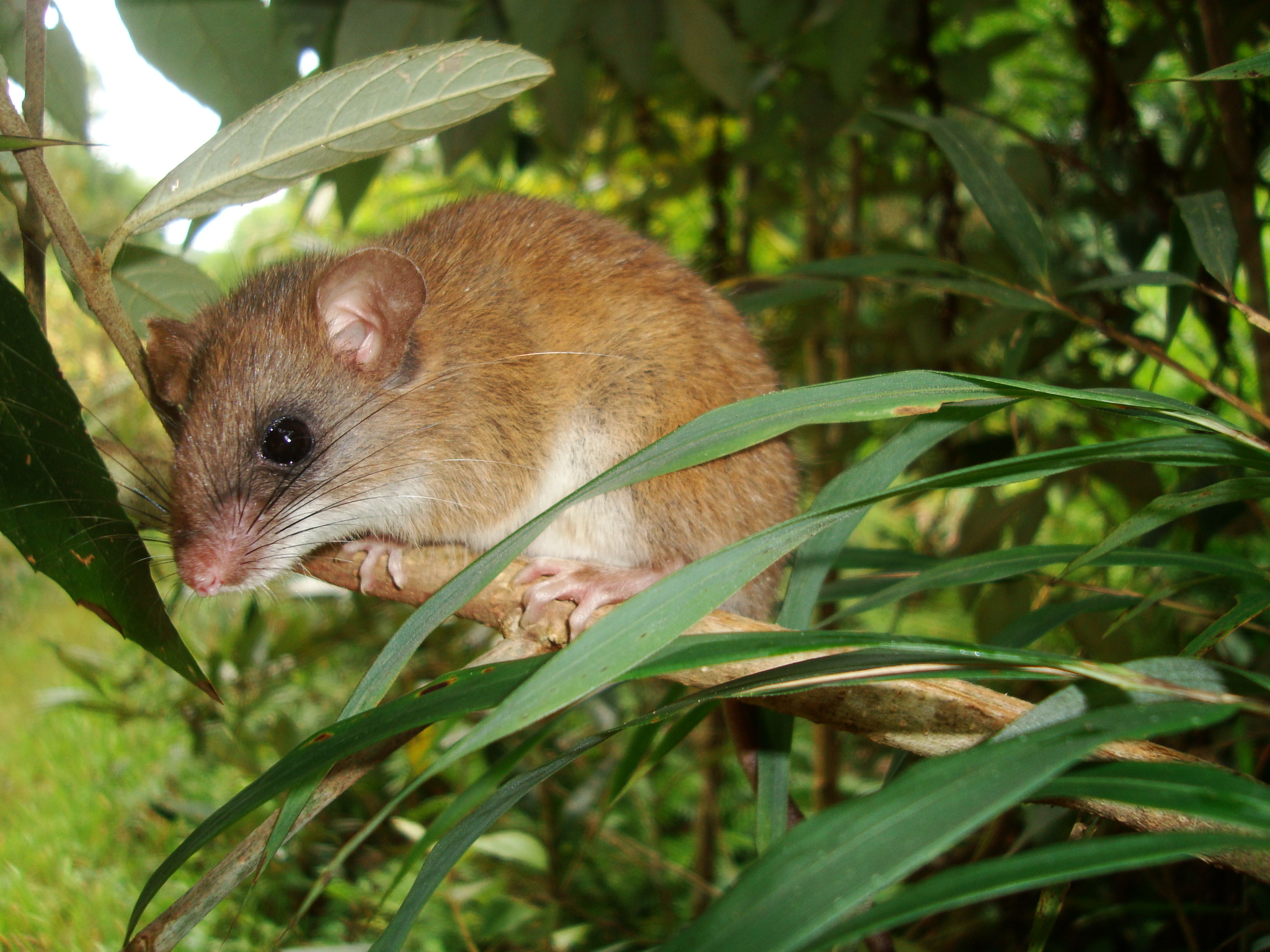
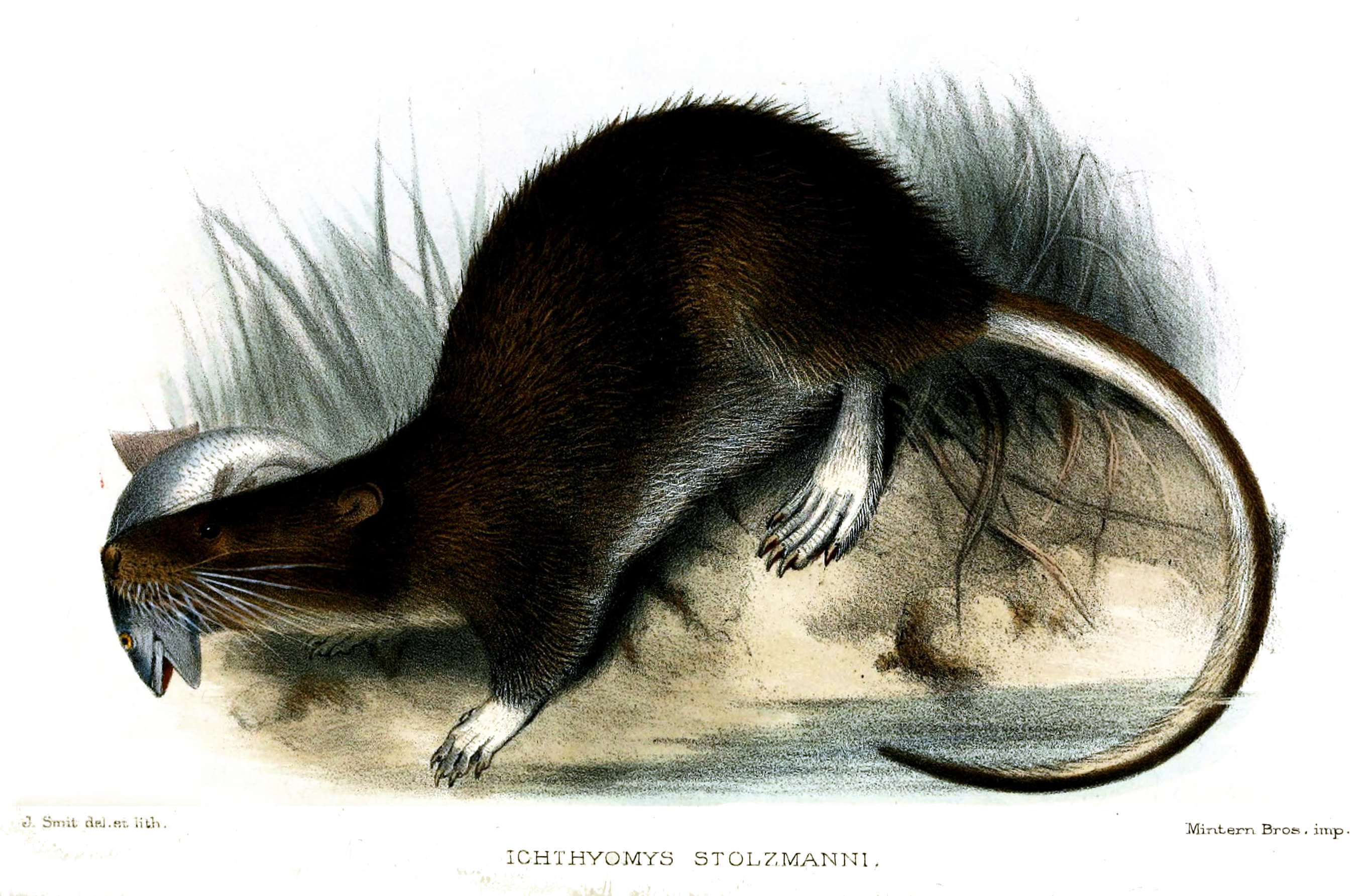




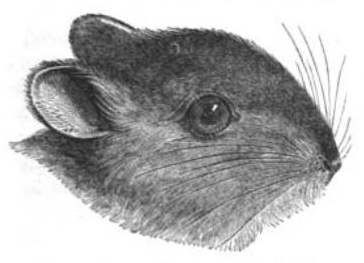

 *Suborder: Myomorpha
**Family: Cricetidae
***Subfamily: Tylomyinae
****Genus: ''Tylomys''
***** Mira climbing rat, ''Tylomys mirae'' LC
***Subfamily: Neotominae
****Genus: ''Reithrodontomys''
***** Mexican harvest mouse, ''Reithrodontomys mexicanus'' LC
***Subfamily: Sigmodontinae
****Genus: ''Abrawayaomys''
***** ''Abrawayaomys chebezi''
***** Ruschi's rat, ''Abrawayaomys ruschii'' LC
****Genus: ''Abrothrix''
***** Andean Altiplano mouse, ''Abrothrix andinus'' LC
***** Hershkovitz's grass mouse, ''Abrothrix hershkovitzi'' LC
***** Gray grass mouse, ''Abrothrix illuteus'' NT
***** Jelski's Altiplano mouse, ''Abrothrix jelskii'' LC
***** Woolly grass mouse, ''Abrothrix lanosus'' LC
***** Long-haired grass mouse, ''Abrothrix longipilis'' LC
***** Olive grass mouse, ''Abrothrix olivaceus'' LC
***** Sanborn's grass mouse, ''Abrothrix sanborni'' NT
****Genus: ''Aepeomys''
***** Olive montane mouse, ''Aepeomys lugens'' LC
***** Reig's montane mouse, ''Aepeomys reigi'' VU
****Genus: ''Aegialomys''
***** Galápagos rice rat, ''Aegialomys galapagoensis'' VU
***** Yellowish rice rat, ''Aegialomys xanthaeolus'' LC
****Genus: ''Akodon''
***** Highland grass mouse, ''Akodon aerosus'' LC
***** Colombian grass mouse, ''Akodon affinis'' LC
***** White-bellied grass mouse, ''Akodon albiventer'' LC
***** Azara's grass mouse, ''Akodon azarae'' LC
***** Bogotá grass mouse, ''Akodon bogotensis'' LC
***** Bolivian grass mouse, ''Akodon boliviensis'' LC
***** Budin's grass mouse, ''Akodon budini'' LC
***** ''Akodon caenosus''
***** Cursor grass mouse, ''Akodon cursor'' LC
***** Day's grass mouse, ''Akodon dayi'' LC
***** Dolorous grass mouse, ''Akodon dolores'' LC
***** Smoky grass mouse, ''Akodon fumeus'' LC
***** ''Akodon glaucinus''
***** Intelligent grass mouse, ''Akodon iniscatus'' LC
***** Junín grass mouse, ''Akodon juninensis'' LC
***** Koford's grass mouse, ''Akodon kofordi'' LC
***** Ecuadorian grass mouse, ''Akodon latebricola'' VU
***** Lindbergh's grass mouse, ''Akodon lindberghi'' DD
***** Altiplano grass mouse, ''Akodon lutescens'' LC
***** Thespian grass mouse, ''Akodon mimus'' LC
***** Soft grass mouse, ''Akodon mollis'' LC
***** Montane grass mouse, ''Akodon montensis'' LC
***** Caparaó grass mouse, ''Akodon mystax'' DD
***** Neuquén grass mouse, ''Akodon neocenus'' DD
***** El Dorado grass mouse, ''Akodon orophilus'' LC
***** Paraná grass mouse, ''Akodon paranaensis'' LC
***** Tarija akodont, ''Akodon pervalens'' DD
***** Philip Myers's akodont, ''Akodon philipmyersi'' DD
***** ''Akodon polopi''
***** Reig's grass mouse, ''Akodon reigi'' LC
***** São Paulo grass mouse, ''Akodon sanctipaulensis'' DD
***** Serra do Mar grass mouse, ''Akodon serrensis'' LC
***** Cochabamba grass mouse, ''Akodon siberiae'' NT
***** White-throated grass mouse, ''Akodon simulator'' LC
***** Spegazzini's grass mouse, ''Akodon spegazzinii'' LC
***** Puno grass mouse, ''Akodon subfuscus'' LC
***** Silent grass mouse, ''Akodon surdus'' VU
***** Forest grass mouse, ''Akodon sylvanus'' LC
***** ''Akodon tartareus''
***** Chaco grass mouse, ''Akodon toba'' LC
***** Cloud forest grass mouse, ''Akodon torques'' LC
***** Variable grass mouse, ''Akodon varius'' DD
****Genus: ''Amphinectomys''
***** Ucayali water rat, ''Amphinectomys savamis'' DD
****Genus: ''Andalgalomys''
***** Olrog's chaco mouse, ''Andalgalomys olrogi'' LC
***** Pearson's chaco mouse, ''Andalgalomys pearsoni'' LC
****Genus: ''Andinomys''
***** Andean mouse, ''Andinomys edax'' LC
***** ''Andinomys lineicaudatus''
****Genus: ''Anotomys''
***** Aquatic rat, ''Anotomys leander'' VU
****Genus: ''Auliscomys''
***** Bolivian big-eared mouse, ''Auliscomys boliviensis'' LC
***** Painted big-eared mouse, ''Auliscomys pictus'' LC
***** Andean big-eared mouse, ''Auliscomys sublimis'' LC
****Genus: ''Bibimys''
***** Chaco crimson-nosed rat, ''Bibimys chacoensis'' LC
***** Large-lipped crimson-nosed rat, ''Bibimys labiosus'' LC
***** Torres' crimson-nosed rat, ''Bibimys torresi'' NT
****Genus: ''Blarinomys''
***** Brazilian shrew-mouse, ''Blarinomys breviceps'' LC
****Genus: ''Brucepattersonius''
***** Gray-bellied brucie, ''Brucepattersonius griserufescens'' DD
***** Guaraní brucie, ''Brucepattersonius guarani'' DD
***** Red-bellied brucie, ''Brucepattersonius igniventris'' DD
***** Ihering's hocicudo, ''Brucepattersonius iheringi'' LC
***** Misiones brucie, ''Brucepattersonius misionensis'' DD
***** Arroyo of Paradise brucie, ''Brucepattersonius paradisus'' DD
***** Soricine brucie, ''Brucepattersonius soricinus'' DD
****Genus: ''Calomys''
***** Bolivian vesper mouse, ''Calomys boliviae'' LC
***** Crafty vesper mouse, ''Calomys callidus'' LC
***** Large vesper mouse, ''Calomys callosus'' LC
***** ''Calomys cerqueirai''
***** Caatinga vesper mouse, ''Calomys expulsus'' LC
***** Fecund vesper mouse, ''Calomys fecundus'' LC
***** Hummelinck's vesper mouse, ''Calomys hummelincki'' VU
***** Small vesper mouse, ''Calomys laucha'' LC
***** Andean vesper mouse, ''Calomys lepidus'' LC
***** Drylands vesper mouse, ''Calomys musculinus'' LC
***** Peruvian vesper mouse, ''Calomys sorellus'' LC
***** Delicate vesper mouse, ''Calomys tener'' LC
***** Tocantins vesper mouse, ''Calomys tocantinsi'' LC
***** Córdoba vesper mouse, ''Calomys venustus'' LC
****Genus: ''Cerradomys''
***** Langguth's rice rat, ''Cerradomys langguthi''
***** Maracaju rice rat, ''Cerradomys maracajuensis'' LC
***** Marinho's rice rat, ''Cerradomys marinhus'' DD
***** Lindbergh's rice rat, ''Cerradomys scotti'' LC
***** Terraced rice rat, ''Cerradomys subflavus'' LC
***** Vivo's rice rat, ''Cerradomys vivoi''
****Genus: ''Chelemys''
***** Magellanic long-clawed mouse, ''Chelemys delfini'' DD
***** Andean long-clawed mouse, ''Chelemys macronyx'' LC
***** Large long-clawed mouse, ''Chelemys megalonyx'' NT
****Genus: ''Chibchanomys''
***** Las Cajas water mouse, ''Chibchanomys orcesi'' DD
***** Chibchan water mouse, ''Chibchanomys trichotis'' DD
****Genus: ''Chilomys''
***** Colombian forest mouse, ''Chilomys instans'' LC
****Genus: ''Chinchillula''
***** Altiplano chinchilla mouse, ''Chinchillula sahamae'' LC
****Genus: ''Delomys''
***** ''Delomys altimontanus''
***** Montane Atlantic Forest rat, ''Delomys collinus'' LC
***** Striped Atlantic Forest rat, ''Delomys dorsalis'' LC
***** Pallid Atlantic Forest rat, ''Delomys sublineatus'' LC
****Genus: ''Deltamys''
***** Kemp's grass mouse, ''Deltamys kempi'' LC
****Genus: ''Drymoreomys''
***** ''Drymoreomys albimaculatus'' NT
****Genus: ''Eligmodontia''
***** ''Eligmodontia bolsonensis''
***** ''Eligmodontia hirtipes''
***** Monte gerbil mouse, ''Eligmodontia moreni'' LC
***** Morgan's gerbil mouse, ''Eligmodontia morgani'' LC
***** Andean gerbil mouse, ''Eligmodontia puerulus'' LC
***** Eligmodontia typus, Highland gerbil mouse, eastern Patagonian gerbil mouse, ''Eligmodontia typus'' LC
****Genus: ''Eremoryzomys''
***** Gray rice rat, ''Eremoryzomys polius'' DD
****Genus: ''Euneomys''
***** Patagonian chinchilla mouse, ''Euneomys chinchilloides'' DD
***** Burrowing chinchilla mouse, ''Euneomys fossor'' DD
***** Biting chinchilla mouse, ''Euneomys mordax'' LC
***** Peterson's chinchilla mouse, ''Euneomys petersoni'' LC
****Genus: ''Euryoryzomys''
***** Emmons's rice rat, ''Euryoryzomys emmonsae'' DD
***** Monster rice rat, ''Euryoryzomys lamia'' EN
***** Tarija rice rat, ''Euryoryzomys legatus'' LC
***** MacConnell's rice rat, ''Euryoryzomys macconnelli'' LC
***** Elegant rice rat, ''Euryoryzomys nitidus'' LC
***** Russet rice rat, ''Euryoryzomys russatus'' LC
****Genus: ''Galenomys''
***** Garlepp's mouse, ''Galenomys garleppi'' DD
****Genus: ''Geoxus''
***** Long-clawed mole mouse, ''Geoxus valdivianus'' LC
****Genus: ''Graomys''
***** ''Graomys chacoensis'' (contains the former ''Graomys centralis'')
***** Pale leaf-eared mouse, ''Graomys domorum'' LC
***** Edith's leaf-eared mouse, ''Graomys edithae'' DD
***** Gray leaf-eared mouse, ''Graomys griseoflavus'' LC
****Genus: ''Gyldenstolpia''
***** Fossorial giant rat, ''Gyldenstolpia fronto'' EN
*****''Gyldenstolpia planaltensis''
****Genus: ''Handleyomys''
***** Alfaro's rice rat, ''Handleyomys alfaroi'' LC
***** Dusky montane mouse, ''Handleyomys fuscatus'' LC
***** Colombian rice rat, ''Handleyomys intectus'' LC
****Genus: ''Holochilus''
***** Web-footed marsh rat, ''Holochilus brasiliensis'' LC
***** Chaco marsh rat, ''Holochilus chacarius'' LC
***** Amazonian marsh rat, ''Holochilus sciureus'' LC
****Genus: ''Hylaeamys''
***** ''Hylaeamys acritus'' DD
***** Hylaeamys laticeps, Large-headed rice rat, ''Hylaeamys laticeps'' NT
***** Azara's broad-headed rice rat, ''Hylaeamys megacephalus'' LC
***** Sowbug rice rat, ''Hylaeamys oniscus'' VU
***** Western Amazonian oryzomys, ''Hylaeamys perenensis'' LC
***** Tate's rice rat, ''Hylaeamys tatei'' DD
***** Yungas rice rat, ''Hylaeamys yunganus'' LC
****Genus: ''Ichthyomys''
***** Crab-eating rat, ''Ichthyomys hydrobates'' NT
***** Pittier's crab-eating rat, ''Ichthyomys pittieri'' VU
***** Stolzmann's crab-eating rat, ''Ichthyomys stolzmanni'' DD
***** Tweedy's crab-eating rat, ''Ichthyomys tweedii'' DD
****Genus: ''Irenomys''
***** Chilean climbing mouse, ''Irenomys tarsalis'' LC
****Genus: ''Juliomys''
***** †''Juliomys anoblepas'' EX
***** ''Juliomys ossitenuis'' NE
***** Lesser Wilfred's mouse, ''Juliomys pictipes'' LC
***** Cleft-headed juliomys, ''Juliomys rimofrons'' VU
***** Aracuaria Forest tree mouse, ''Juliomys ximenezi'' NE
****Genus: ''Juscelinomys''
***** Candango mouse, †''Juscelinomys candango'' EX
***** Rio Guaporé mouse, ''Juscelinomys guaporensis'' DD
***** Huanchaca mouse, ''Juscelinomys huanchacae'' DD
****Genus: ''Kunsia''
***** Woolly giant rat, ''Kunsia tomentosus'' LC
****Genus: ''Lenoxus''
***** Andean rat, ''Lenoxus apicalis'' LC
****Genus: ''Loxodontomys''
***** Southern big-eared mouse, ''Loxodontomys micropus'' LC
***** Pikumche pericote, ''Loxodontomys pikumche'' LC
****Genus: ''Lundomys''
***** Lund's amphibious rat, ''Lundomys molitor'' LC
****Genus: ''Megaoryzomys''
***** Galápagos giant rat, †''Megaoryzomys curioi'' EX
****Genus: ''Melanomys''
***** Dusky rice rat, ''Melanomys caliginosus'' LC
***** Robust dark rice rat, ''Melanomys robustulus'' LC
***** Zuniga's dark rice rat, ''Melanomys zunigae'' CR
****Genus: ''Microakodontomys''
***** Intermediate lesser grass mouse, ''Microakodontomys transitorius'' VU
****Genus: ''Microryzomys''
***** Highland small rice rat, ''Microryzomys altissimus'' LC
***** Forest small rice rat, ''Microryzomys minutus'' LC
****Genus: ''Mindomys''
***** Hammond's rice rat, ''Mindomys hammondi'' EN
****Genus: ''Neacomys''
***** Dubost's bristly mouse, ''Neacomys dubosti'' LC
***** Guiana bristly mouse, ''Neacomys guianae'' LC
***** Jurua bristly mouse, ''Neacomys minutus'' LC
***** Musser's bristly mouse, ''Neacomys musseri'' LC
***** Paracou bristly mouse, ''Neacomys paracou'' LC
***** Common bristly mouse, ''Neacomys spinosus'' LC
***** Narrow-footed bristly mouse, ''Neacomys tenuipes'' LC
****Genus: ''Necromys''
***** Pleasant bolo mouse, ''Necromys amoenus'' LC
***** Argentine bolo mouse, ''Necromys benefactus'' LC
***** Rufous-bellied bolo mouse, ''Necromys lactens'' LC
***** Hairy-tailed bolo mouse, ''Necromys lasiurus'' LC
***** Paraguayan bolo mouse, ''Necromys lenguarum'' LC
***** Dark bolo mouse, ''Necromys obscurus'' NT
***** Spotted bolo mouse, ''Necromys punctulatus'' DD
***** Temchuk's bolo mouse, ''Necromys temchuki'' LC
***** Northern grass mouse, ''Necromys urichi'' LC
****Genus: ''Nectomys''
***** Western Amazonian water rat, ''Nectomys apicalis'' LC
***** Magdalena water rat, ''Nectomys magdalenae'' DD
***** Trinidad water rat, ''Nectomys palmipes'' LC
***** Small-footed bristly mouse, ''Nectomys rattus'' LC
***** Scaly-footed water rat, ''Nectomys squamipes'' LC
****Genus: ''Neotomys''
***** Andean swamp rat, ''Neotomys ebriosus'' LC
****Genus: ''Nephelomys''
***** Tomes's rice rat, ''Nephelomys albigularis'' LC
***** ''Nephelomys auriventer'' LC
***** Costa Central rice rat, ''Nephelomys caracolus'' LC
***** ''Nephelomys childi''
***** Keays's rice rat, ''Nephelomys keaysi'' LC
***** Light-footed rice rat, ''Nephelomys levipes'' LC
***** ''Nephelomys maculiventer''
***** Mérida rice rat, ''Nephelomys meridensis'' LC
***** ''Nephelomys moerex''
***** ''Nephelomys nimbosus''
***** ''Nephelomys pectoralis''
****Genus: ''Nesoryzomys''
***** Darwin's rice rat, †''Nesoryzomys darwini'' EX
***** Fernandina rice rat, ''Nesoryzomys fernandinae'' VU
***** Indefatigable Galápagos mouse, †''Nesoryzomys indefessus'' EX
***** Nesoryzomys indefessus narboroughi, Fernandina Island Galápagos mouse, ''Nesoryzomys narboroughi'' VU
***** Santiago Galápagos mouse, ''Nesoryzomys swarthi'' VU
****Genus: ''Neusticomys''
***** Ferreira's fish-eating rat, ''Neusticomys ferreirai'' DD
***** Montane fish-eating rat, ''Neusticomys monticolus'' LC
***** Musso's fish-eating rat, ''Neusticomys mussoi'' EN
***** Oyapock's fish-eating rat, ''Neusticomys oyapocki'' DD
***** Peruvian fish-eating rat, ''Neusticomys peruviensis'' LC
***** Venezuelan fish-eating rat, ''Neusticomys venezuelae'' VU
****Genus: ''Noronhomys''
***** Vespucci's rodent, †''Noronhomys vespuccii'' EX
****Genus: ''Notiomys''
***** Edward's long-clawed mouse, ''Notiomys edwardsii'' LC
****Genus: ''Oecomys''
***** Guianan arboreal rice rat, ''Oecomys auyantepui'' LC
***** Bicolored arboreal rice rat, ''Oecomys bicolor'' LC
***** Atlantic Forest arboreal rice rat, ''Oecomys catherinae'' LC
***** Cleber's arboreal rice rat, ''Oecomys cleberi'' DD
***** Unicolored arboreal rice rat, ''Oecomys concolor'' LC
***** Yellow arboreal rice rat, ''Oecomys flavicans'' LC
***** Mamore arboreal rice rat, ''Oecomys mamorae'' LC
***** Brazilian arboreal rice rat, ''Oecomys paricola'' DD
***** Dusky arboreal rice rat, ''Oecomys phaeotis'' LC
***** King arboreal rice rat, ''Oecomys rex'' LC
***** Robert's arboreal rice rat, ''Oecomys roberti'' LC
***** Red arboreal rice rat, ''Oecomys rutilus'' LC
***** Venezuelan arboreal rice rat, ''Oecomys speciosus'' LC
***** Foothill arboreal rice rat, ''Oecomys superans'' LC
***** ''Oecomys sydandersoni''
***** Trinidad arboreal rice rat, ''Oecomys trinitatis'' LC
****Genus: ''Oligoryzomys''
***** Andean pygmy rice rat, ''Oligoryzomys andinus'' LC
***** Sandy pygmy rice rat, ''Oligoryzomys arenalis'' LC
***** Brenda's colilargo, ''Oligoryzomys brendae'' DD
***** Chacoan pygmy rice rat, ''Oligoryzomys chacoensis'' LC
***** Destructive pygmy rice rat, ''Oligoryzomys destructor'' LC
***** Yellow pygmy rice rat, ''Oligoryzomys flavescens'' LC
***** Fornes' colilargo, ''Oligoryzomys fornesi'' LC
***** Fulvous pygmy rice rat, ''Oligoryzomys fulvescens'' LC
***** Grayish pygmy rice rat, ''Oligoryzomys griseolus'' LC
***** Long-tailed pygmy rice rat, ''Oligoryzomys longicaudatus'' LC
***** Magellanic pygmy rice rat, ''Oligoryzomys magellanicus'' LC
***** Small-eared pygmy rice rat, ''Oligoryzomys microtis'' LC
***** Moojen's pygmy rice rat, ''Oligoryzomys moojeni'' DD
***** Black-footed pygmy rice rat, ''Oligoryzomys nigripes'' LC
***** Rock pygmy rice rat, ''Oligoryzomys rupestris'' DD
***** Straw-colored pygmy rice rat, ''Oligoryzomys stramineus'' LC
****Genus: ''Oreoryzomys''
***** Peruvian rice rat, ''Oreoryzomys balneator'' DD
****Genus: ''Oryzomys''
***** Coues's rice rat, ''Oryzomys couesi'' LC
***** Gorgas's rice rat, ''Oryzomys gorgasi'' EN
****Genus: ''Oxymycterus''
***** Argentine hocicudo, ''Oxymycterus akodontius'' DD
***** Amazonian hocicudo, ''Oxymycterus amazonicus'' LC
***** Angular hocicudo, ''Oxymycterus angularis'' LC
***** Caparaó hocicudo, ''Oxymycterus caparoae'' LC
***** Atlantic Forest hocicudo, ''Oxymycterus dasytrichus'' LC
***** Spy hocicudo, ''Oxymycterus delator'' LC
***** Small hocicudo, ''Oxymycterus hiska'' LC
***** Hispid hocicudo, ''Oxymycterus hispidus'' LC
***** Quechuan hocicudo, ''Oxymycterus hucucha'' EN
***** Incan hocicudo, ''Oxymycterus inca'' LC
***** Cook's hocicudo, ''Oxymycterus josei'' EN
***** Long-nosed hocicudo, ''Oxymycterus nasutus'' LC
***** Paramo hocicudo, ''Oxymycterus paramensis'' LC
***** Quaestor hocicudo, ''Oxymycterus quaestor'' LC
***** Robert's hocicudo, ''Oxymycterus roberti'' LC
***** Red hocicudo, ''Oxymycterus rufus'' LC
***** ''Oxymycterus wayku''
****Genus: ''Paralomys''
***** Gerbil leaf-eared mouse, ''Paralomys gerbillus'' LC
****Genus: ''Pearsonomys''
***** Pearson's long-clawed mouse, ''Pearsonomys annectens'' VU
****Genus: ''Phaenomys''
***** Rio de Janeiro arboreal rat, ''Phaenomys ferrugineus'' VU
****Genus: ''Phyllotis''
***** ''Phyllotis alisosiensis''
***** Friendly leaf-eared mouse, ''Phyllotis amicus'' LC
***** Andean leaf-eared mouse, ''Phyllotis andium'' LC
***** Anita's leaf-eared mouse, ''Phyllotis anitae'' DD
***** Buenos Aires leaf-eared mouse, ''Phyllotis bonariensis'' NT
***** Capricorn leaf-eared mouse, ''Phyllotis caprinus'' LC
***** Darwin's leaf-eared mouse, ''Phyllotis darwini'' LC
***** Definitive leaf-eared mouse, ''Phyllotis definitus'' EN
***** Haggard's leaf-eared mouse, ''Phyllotis haggardi'' LC
***** Lima leaf-eared mouse, ''Phyllotis limatus'' LC
***** Master leaf-eared mouse, ''Phyllotis magister'' LC
***** Osgood's leaf-eared mouse, ''Phyllotis osgoodi'' DD
***** Bunchgrass leaf-eared mouse, ''Phyllotis osilae'' LC
***** Wolffsohn's leaf-eared mouse, ''Phyllotis wolffsohni'' LC
***** Yellow-rumped leaf-eared mouse, ''Phyllotis xanthopygus'' LC
****Genus: ''Podoxymys''
***** Roraima mouse, ''Podoxymys roraimae'' VU
****Genus: ''Pseudoryzomys''
***** Brazilian false rice rat, ''Pseudoryzomys simplex'' LC
****Genus: ''Punomys''
***** Eastern puna mouse, ''Punomys kofordi'' VU
***** Puna mouse, ''Punomys lemminus'' VU
****Genus: ''Reithrodon''
***** Bunny rat, ''Reithrodon auritus'' LC
***** Naked-soled conyrat, ''Reithrodon typicus'' LC
****Genus: ''Rhagomys''
***** Long-tongued arboreal mouse, ''Rhagomys longilingua'' LC
***** Brazilian arboreal mouse, ''Rhagomys rufescens'' NT
****Genus: ''Rhipidomys''
***** Southern climbing mouse, ''Rhipidomys austrinus'' LC
***** Cariri climbing mouse, ''Rhipidomys cariri'' DD
***** Cauca climbing mouse, ''Rhipidomys caucensis'' DD
***** Coues's climbing mouse, ''Rhipidomys couesi'' LC
***** Eastern Amazon climbing mouse, ''Rhipidomys emiliae'' LC
***** Buff-bellied climbing mouse, ''Rhipidomys fulviventer'' LC
***** Gardner's climbing mouse, ''Rhipidomys gardneri'' LC
***** Broad-footed climbing mouse, ''Rhipidomys latimanus'' LC
***** White-footed climbing mouse, ''Rhipidomys leucodactylus'' LC
***** MacConnell's climbing mouse, ''Rhipidomys macconnelli'' LC
***** Cerrado climbing mouse, ''Rhipidomys macrurus'' LC
***** Atlantic Forest climbing mouse, ''Rhipidomys mastacalis'' LC
***** Peruvian climbing mouse, ''Rhipidomys modicus'' LC
***** Splendid climbing mouse, ''Rhipidomys nitela'' LC
***** Yellow-bellied climbing mouse, ''Rhipidomys ochrogaster'' DD
***** Venezuelan climbing mouse, ''Rhipidomys venezuelae'' LC
***** Charming climbing mouse, ''Rhipidomys venustus'' LC
***** Wetzel's climbing mouse, ''Rhipidomys wetzeli'' LC
****Genus: ''Salinomys''
***** Delicate salt flat mouse, ''Salinomys delicatus'' DD
****Genus: ''Scapteromys''
***** Argentine swamp rat, ''Scapteromys aquaticus'' LC
***** Plateau swamp rat, ''Scapteromys meridionalis''
***** Waterhouse's swamp rat, ''Scapteromys tumidus'' LC
****Genus: ''Scolomys''
***** South American spiny mouse, ''Scolomys melanops'' LC
***** Ucayali spiny mouse, ''Scolomys ucayalensis'' LC
****Genus: ''Sigmodon''
***** Alston's cotton rat, ''Sigmodon alstoni'' LC
***** Southern cotton rat, ''Sigmodon hirsutus'' LC
***** Unexpected cotton rat, ''Sigmodon inopinatus'' VU
***** Peruvian cotton rat, ''Sigmodon peruanus'' LC
****Genus: ''Sigmodontomys''
***** Alfaro's rice water rat, ''Sigmodontomys alfari'' LC
***** Harris's rice water rat, ''Sigmodontomys aphrastus'' DD
****Genus: ''Sooretamys''
***** Paraguayan rice rat, ''Sooretamys angouya'' LC
****Genus: ''Tapecomys''
***** ''Tapecomys wolffsohni''
***** Primordial tapecua, ''Tapecomys primus'' LC
****Genus: ''Thalpomys''
***** Cerrado mouse, ''Thalpomys cerradensis'' LC
***** Hairy-eared cerrado mouse, ''Thalpomys lasiotis'' LC
****Genus: ''Thaptomys''
***** Blackish grass mouse, ''Thaptomys nigrita'' LC
****Genus: ''Thomasomys''
***** Anderson's Oldfield mouse, ''Thomasomys andersoni''
***** Apeco Oldfield mouse, ''Thomasomys apeco'' VU
***** Golden Oldfield mouse, ''Thomasomys aureus'' LC
***** Beady-eyed mouse, ''Thomasomys baeops'' LC
***** Silky Oldfield mouse, ''Thomasomys bombycinus'' DD
***** White-tipped Oldfield mouse, ''Thomasomys caudivarius'' LC
***** Ashy-bellied Oldfield mouse, ''Thomasomys cinereiventer'' LC
***** Ash-colored Oldfield mouse, ''Thomasomys cinereus'' LC
***** Cinnamon-colored Oldfield mouse, ''Thomasomys cinnameus'' LC
***** Daphne's Oldfield mouse, ''Thomasomys daphne'' LC
***** Peruvian Oldfield mouse, ''Thomasomys eleusis'' LC
***** Wandering Oldfield mouse, ''Thomasomys erro'' LC
***** Slender Oldfield mouse, ''Thomasomys gracilis'' NT
***** Hudson's Oldfield mouse, ''Thomasomys hudsoni'' DD
***** Woodland Oldfield mouse, ''Thomasomys hylophilus'' EN
***** Inca Oldfield mouse, ''Thomasomys incanus'' VU
***** Strong-tailed Oldfield mouse, ''Thomasomys ischyurus'' VU
***** Kalinowski's Oldfield mouse, ''Thomasomys kalinowskii'' VU
***** Ladew's Oldfield mouse, ''Thomasomys ladewi'' LC
***** Soft-furred Oldfield mouse, ''Thomasomys laniger'' LC
***** Large-eared Oldfield mouse, ''Thomasomys macrotis'' VU
***** Unicolored Oldfield mouse, ''Thomasomys monochromos'' EN
***** Snow-footed Oldfield mouse, ''Thomasomys niveipes'' LC
***** Distinguished Oldfield mouse, ''Thomasomys notatus'' LC
***** Ashaninka Oldfield mouse, ''Thomasomys onkiro'' VU
***** Montane Oldfield mouse, ''Thomasomys oreas'' LC
***** Paramo Oldfield mouse, ''Thomasomys paramorum'' LC
***** Popayán Oldfield mouse, ''Thomasomys popayanus'' DD
***** Cajamarca Oldfield mouse, ''Thomasomys praetor'' DD
***** Thomas's Oldfield mouse, ''Thomasomys pyrrhonotus'' VU
***** Rhoads's Oldfield mouse, ''Thomasomys rhoadsi'' LC
***** Rosalinda's Oldfield mouse, ''Thomasomys rosalinda'' DD
***** Forest Oldfield mouse, ''Thomasomys silvestris'' LC
***** Taczanowski's Oldfield mouse, ''Thomasomys taczanowskii'' LC
***** Ucucha Oldfield mouse, ''Thomasomys ucucha'' VU
***** Dressy Oldfield mouse, ''Thomasomys vestitus'' LC
***** Pichincha Oldfield mouse, ''Thomasomys vulcani'' DD
****Genus: ''Transandinomys''
***** Bolivar rice rat, ''Transandinomys bolivaris'' LC
***** Talamancan rice rat, ''Transandinomys talamancae'' LC
****Genus: ''Wiedomys''
***** Cerrado red-nosed mouse, ''Wiedomys cerradensis'' DD
***** Red-nosed mouse, ''Wiedomys pyrrhorhinos'' LC
****Genus: ''Wilfredomys''
***** Greater Wilfred's mouse, ''Wilfredomys oenax'' EN
****Genus: ''Zygodontomys''
***** Short-tailed cane mouse, ''Zygodontomys brevicauda'' LC
***** Brown cane mouse, ''Zygodontomys brunneus'' LC
*Suborder: Myomorpha
**Family: Cricetidae
***Subfamily: Tylomyinae
****Genus: ''Tylomys''
***** Mira climbing rat, ''Tylomys mirae'' LC
***Subfamily: Neotominae
****Genus: ''Reithrodontomys''
***** Mexican harvest mouse, ''Reithrodontomys mexicanus'' LC
***Subfamily: Sigmodontinae
****Genus: ''Abrawayaomys''
***** ''Abrawayaomys chebezi''
***** Ruschi's rat, ''Abrawayaomys ruschii'' LC
****Genus: ''Abrothrix''
***** Andean Altiplano mouse, ''Abrothrix andinus'' LC
***** Hershkovitz's grass mouse, ''Abrothrix hershkovitzi'' LC
***** Gray grass mouse, ''Abrothrix illuteus'' NT
***** Jelski's Altiplano mouse, ''Abrothrix jelskii'' LC
***** Woolly grass mouse, ''Abrothrix lanosus'' LC
***** Long-haired grass mouse, ''Abrothrix longipilis'' LC
***** Olive grass mouse, ''Abrothrix olivaceus'' LC
***** Sanborn's grass mouse, ''Abrothrix sanborni'' NT
****Genus: ''Aepeomys''
***** Olive montane mouse, ''Aepeomys lugens'' LC
***** Reig's montane mouse, ''Aepeomys reigi'' VU
****Genus: ''Aegialomys''
***** Galápagos rice rat, ''Aegialomys galapagoensis'' VU
***** Yellowish rice rat, ''Aegialomys xanthaeolus'' LC
****Genus: ''Akodon''
***** Highland grass mouse, ''Akodon aerosus'' LC
***** Colombian grass mouse, ''Akodon affinis'' LC
***** White-bellied grass mouse, ''Akodon albiventer'' LC
***** Azara's grass mouse, ''Akodon azarae'' LC
***** Bogotá grass mouse, ''Akodon bogotensis'' LC
***** Bolivian grass mouse, ''Akodon boliviensis'' LC
***** Budin's grass mouse, ''Akodon budini'' LC
***** ''Akodon caenosus''
***** Cursor grass mouse, ''Akodon cursor'' LC
***** Day's grass mouse, ''Akodon dayi'' LC
***** Dolorous grass mouse, ''Akodon dolores'' LC
***** Smoky grass mouse, ''Akodon fumeus'' LC
***** ''Akodon glaucinus''
***** Intelligent grass mouse, ''Akodon iniscatus'' LC
***** Junín grass mouse, ''Akodon juninensis'' LC
***** Koford's grass mouse, ''Akodon kofordi'' LC
***** Ecuadorian grass mouse, ''Akodon latebricola'' VU
***** Lindbergh's grass mouse, ''Akodon lindberghi'' DD
***** Altiplano grass mouse, ''Akodon lutescens'' LC
***** Thespian grass mouse, ''Akodon mimus'' LC
***** Soft grass mouse, ''Akodon mollis'' LC
***** Montane grass mouse, ''Akodon montensis'' LC
***** Caparaó grass mouse, ''Akodon mystax'' DD
***** Neuquén grass mouse, ''Akodon neocenus'' DD
***** El Dorado grass mouse, ''Akodon orophilus'' LC
***** Paraná grass mouse, ''Akodon paranaensis'' LC
***** Tarija akodont, ''Akodon pervalens'' DD
***** Philip Myers's akodont, ''Akodon philipmyersi'' DD
***** ''Akodon polopi''
***** Reig's grass mouse, ''Akodon reigi'' LC
***** São Paulo grass mouse, ''Akodon sanctipaulensis'' DD
***** Serra do Mar grass mouse, ''Akodon serrensis'' LC
***** Cochabamba grass mouse, ''Akodon siberiae'' NT
***** White-throated grass mouse, ''Akodon simulator'' LC
***** Spegazzini's grass mouse, ''Akodon spegazzinii'' LC
***** Puno grass mouse, ''Akodon subfuscus'' LC
***** Silent grass mouse, ''Akodon surdus'' VU
***** Forest grass mouse, ''Akodon sylvanus'' LC
***** ''Akodon tartareus''
***** Chaco grass mouse, ''Akodon toba'' LC
***** Cloud forest grass mouse, ''Akodon torques'' LC
***** Variable grass mouse, ''Akodon varius'' DD
****Genus: ''Amphinectomys''
***** Ucayali water rat, ''Amphinectomys savamis'' DD
****Genus: ''Andalgalomys''
***** Olrog's chaco mouse, ''Andalgalomys olrogi'' LC
***** Pearson's chaco mouse, ''Andalgalomys pearsoni'' LC
****Genus: ''Andinomys''
***** Andean mouse, ''Andinomys edax'' LC
***** ''Andinomys lineicaudatus''
****Genus: ''Anotomys''
***** Aquatic rat, ''Anotomys leander'' VU
****Genus: ''Auliscomys''
***** Bolivian big-eared mouse, ''Auliscomys boliviensis'' LC
***** Painted big-eared mouse, ''Auliscomys pictus'' LC
***** Andean big-eared mouse, ''Auliscomys sublimis'' LC
****Genus: ''Bibimys''
***** Chaco crimson-nosed rat, ''Bibimys chacoensis'' LC
***** Large-lipped crimson-nosed rat, ''Bibimys labiosus'' LC
***** Torres' crimson-nosed rat, ''Bibimys torresi'' NT
****Genus: ''Blarinomys''
***** Brazilian shrew-mouse, ''Blarinomys breviceps'' LC
****Genus: ''Brucepattersonius''
***** Gray-bellied brucie, ''Brucepattersonius griserufescens'' DD
***** Guaraní brucie, ''Brucepattersonius guarani'' DD
***** Red-bellied brucie, ''Brucepattersonius igniventris'' DD
***** Ihering's hocicudo, ''Brucepattersonius iheringi'' LC
***** Misiones brucie, ''Brucepattersonius misionensis'' DD
***** Arroyo of Paradise brucie, ''Brucepattersonius paradisus'' DD
***** Soricine brucie, ''Brucepattersonius soricinus'' DD
****Genus: ''Calomys''
***** Bolivian vesper mouse, ''Calomys boliviae'' LC
***** Crafty vesper mouse, ''Calomys callidus'' LC
***** Large vesper mouse, ''Calomys callosus'' LC
***** ''Calomys cerqueirai''
***** Caatinga vesper mouse, ''Calomys expulsus'' LC
***** Fecund vesper mouse, ''Calomys fecundus'' LC
***** Hummelinck's vesper mouse, ''Calomys hummelincki'' VU
***** Small vesper mouse, ''Calomys laucha'' LC
***** Andean vesper mouse, ''Calomys lepidus'' LC
***** Drylands vesper mouse, ''Calomys musculinus'' LC
***** Peruvian vesper mouse, ''Calomys sorellus'' LC
***** Delicate vesper mouse, ''Calomys tener'' LC
***** Tocantins vesper mouse, ''Calomys tocantinsi'' LC
***** Córdoba vesper mouse, ''Calomys venustus'' LC
****Genus: ''Cerradomys''
***** Langguth's rice rat, ''Cerradomys langguthi''
***** Maracaju rice rat, ''Cerradomys maracajuensis'' LC
***** Marinho's rice rat, ''Cerradomys marinhus'' DD
***** Lindbergh's rice rat, ''Cerradomys scotti'' LC
***** Terraced rice rat, ''Cerradomys subflavus'' LC
***** Vivo's rice rat, ''Cerradomys vivoi''
****Genus: ''Chelemys''
***** Magellanic long-clawed mouse, ''Chelemys delfini'' DD
***** Andean long-clawed mouse, ''Chelemys macronyx'' LC
***** Large long-clawed mouse, ''Chelemys megalonyx'' NT
****Genus: ''Chibchanomys''
***** Las Cajas water mouse, ''Chibchanomys orcesi'' DD
***** Chibchan water mouse, ''Chibchanomys trichotis'' DD
****Genus: ''Chilomys''
***** Colombian forest mouse, ''Chilomys instans'' LC
****Genus: ''Chinchillula''
***** Altiplano chinchilla mouse, ''Chinchillula sahamae'' LC
****Genus: ''Delomys''
***** ''Delomys altimontanus''
***** Montane Atlantic Forest rat, ''Delomys collinus'' LC
***** Striped Atlantic Forest rat, ''Delomys dorsalis'' LC
***** Pallid Atlantic Forest rat, ''Delomys sublineatus'' LC
****Genus: ''Deltamys''
***** Kemp's grass mouse, ''Deltamys kempi'' LC
****Genus: ''Drymoreomys''
***** ''Drymoreomys albimaculatus'' NT
****Genus: ''Eligmodontia''
***** ''Eligmodontia bolsonensis''
***** ''Eligmodontia hirtipes''
***** Monte gerbil mouse, ''Eligmodontia moreni'' LC
***** Morgan's gerbil mouse, ''Eligmodontia morgani'' LC
***** Andean gerbil mouse, ''Eligmodontia puerulus'' LC
***** Eligmodontia typus, Highland gerbil mouse, eastern Patagonian gerbil mouse, ''Eligmodontia typus'' LC
****Genus: ''Eremoryzomys''
***** Gray rice rat, ''Eremoryzomys polius'' DD
****Genus: ''Euneomys''
***** Patagonian chinchilla mouse, ''Euneomys chinchilloides'' DD
***** Burrowing chinchilla mouse, ''Euneomys fossor'' DD
***** Biting chinchilla mouse, ''Euneomys mordax'' LC
***** Peterson's chinchilla mouse, ''Euneomys petersoni'' LC
****Genus: ''Euryoryzomys''
***** Emmons's rice rat, ''Euryoryzomys emmonsae'' DD
***** Monster rice rat, ''Euryoryzomys lamia'' EN
***** Tarija rice rat, ''Euryoryzomys legatus'' LC
***** MacConnell's rice rat, ''Euryoryzomys macconnelli'' LC
***** Elegant rice rat, ''Euryoryzomys nitidus'' LC
***** Russet rice rat, ''Euryoryzomys russatus'' LC
****Genus: ''Galenomys''
***** Garlepp's mouse, ''Galenomys garleppi'' DD
****Genus: ''Geoxus''
***** Long-clawed mole mouse, ''Geoxus valdivianus'' LC
****Genus: ''Graomys''
***** ''Graomys chacoensis'' (contains the former ''Graomys centralis'')
***** Pale leaf-eared mouse, ''Graomys domorum'' LC
***** Edith's leaf-eared mouse, ''Graomys edithae'' DD
***** Gray leaf-eared mouse, ''Graomys griseoflavus'' LC
****Genus: ''Gyldenstolpia''
***** Fossorial giant rat, ''Gyldenstolpia fronto'' EN
*****''Gyldenstolpia planaltensis''
****Genus: ''Handleyomys''
***** Alfaro's rice rat, ''Handleyomys alfaroi'' LC
***** Dusky montane mouse, ''Handleyomys fuscatus'' LC
***** Colombian rice rat, ''Handleyomys intectus'' LC
****Genus: ''Holochilus''
***** Web-footed marsh rat, ''Holochilus brasiliensis'' LC
***** Chaco marsh rat, ''Holochilus chacarius'' LC
***** Amazonian marsh rat, ''Holochilus sciureus'' LC
****Genus: ''Hylaeamys''
***** ''Hylaeamys acritus'' DD
***** Hylaeamys laticeps, Large-headed rice rat, ''Hylaeamys laticeps'' NT
***** Azara's broad-headed rice rat, ''Hylaeamys megacephalus'' LC
***** Sowbug rice rat, ''Hylaeamys oniscus'' VU
***** Western Amazonian oryzomys, ''Hylaeamys perenensis'' LC
***** Tate's rice rat, ''Hylaeamys tatei'' DD
***** Yungas rice rat, ''Hylaeamys yunganus'' LC
****Genus: ''Ichthyomys''
***** Crab-eating rat, ''Ichthyomys hydrobates'' NT
***** Pittier's crab-eating rat, ''Ichthyomys pittieri'' VU
***** Stolzmann's crab-eating rat, ''Ichthyomys stolzmanni'' DD
***** Tweedy's crab-eating rat, ''Ichthyomys tweedii'' DD
****Genus: ''Irenomys''
***** Chilean climbing mouse, ''Irenomys tarsalis'' LC
****Genus: ''Juliomys''
***** †''Juliomys anoblepas'' EX
***** ''Juliomys ossitenuis'' NE
***** Lesser Wilfred's mouse, ''Juliomys pictipes'' LC
***** Cleft-headed juliomys, ''Juliomys rimofrons'' VU
***** Aracuaria Forest tree mouse, ''Juliomys ximenezi'' NE
****Genus: ''Juscelinomys''
***** Candango mouse, †''Juscelinomys candango'' EX
***** Rio Guaporé mouse, ''Juscelinomys guaporensis'' DD
***** Huanchaca mouse, ''Juscelinomys huanchacae'' DD
****Genus: ''Kunsia''
***** Woolly giant rat, ''Kunsia tomentosus'' LC
****Genus: ''Lenoxus''
***** Andean rat, ''Lenoxus apicalis'' LC
****Genus: ''Loxodontomys''
***** Southern big-eared mouse, ''Loxodontomys micropus'' LC
***** Pikumche pericote, ''Loxodontomys pikumche'' LC
****Genus: ''Lundomys''
***** Lund's amphibious rat, ''Lundomys molitor'' LC
****Genus: ''Megaoryzomys''
***** Galápagos giant rat, †''Megaoryzomys curioi'' EX
****Genus: ''Melanomys''
***** Dusky rice rat, ''Melanomys caliginosus'' LC
***** Robust dark rice rat, ''Melanomys robustulus'' LC
***** Zuniga's dark rice rat, ''Melanomys zunigae'' CR
****Genus: ''Microakodontomys''
***** Intermediate lesser grass mouse, ''Microakodontomys transitorius'' VU
****Genus: ''Microryzomys''
***** Highland small rice rat, ''Microryzomys altissimus'' LC
***** Forest small rice rat, ''Microryzomys minutus'' LC
****Genus: ''Mindomys''
***** Hammond's rice rat, ''Mindomys hammondi'' EN
****Genus: ''Neacomys''
***** Dubost's bristly mouse, ''Neacomys dubosti'' LC
***** Guiana bristly mouse, ''Neacomys guianae'' LC
***** Jurua bristly mouse, ''Neacomys minutus'' LC
***** Musser's bristly mouse, ''Neacomys musseri'' LC
***** Paracou bristly mouse, ''Neacomys paracou'' LC
***** Common bristly mouse, ''Neacomys spinosus'' LC
***** Narrow-footed bristly mouse, ''Neacomys tenuipes'' LC
****Genus: ''Necromys''
***** Pleasant bolo mouse, ''Necromys amoenus'' LC
***** Argentine bolo mouse, ''Necromys benefactus'' LC
***** Rufous-bellied bolo mouse, ''Necromys lactens'' LC
***** Hairy-tailed bolo mouse, ''Necromys lasiurus'' LC
***** Paraguayan bolo mouse, ''Necromys lenguarum'' LC
***** Dark bolo mouse, ''Necromys obscurus'' NT
***** Spotted bolo mouse, ''Necromys punctulatus'' DD
***** Temchuk's bolo mouse, ''Necromys temchuki'' LC
***** Northern grass mouse, ''Necromys urichi'' LC
****Genus: ''Nectomys''
***** Western Amazonian water rat, ''Nectomys apicalis'' LC
***** Magdalena water rat, ''Nectomys magdalenae'' DD
***** Trinidad water rat, ''Nectomys palmipes'' LC
***** Small-footed bristly mouse, ''Nectomys rattus'' LC
***** Scaly-footed water rat, ''Nectomys squamipes'' LC
****Genus: ''Neotomys''
***** Andean swamp rat, ''Neotomys ebriosus'' LC
****Genus: ''Nephelomys''
***** Tomes's rice rat, ''Nephelomys albigularis'' LC
***** ''Nephelomys auriventer'' LC
***** Costa Central rice rat, ''Nephelomys caracolus'' LC
***** ''Nephelomys childi''
***** Keays's rice rat, ''Nephelomys keaysi'' LC
***** Light-footed rice rat, ''Nephelomys levipes'' LC
***** ''Nephelomys maculiventer''
***** Mérida rice rat, ''Nephelomys meridensis'' LC
***** ''Nephelomys moerex''
***** ''Nephelomys nimbosus''
***** ''Nephelomys pectoralis''
****Genus: ''Nesoryzomys''
***** Darwin's rice rat, †''Nesoryzomys darwini'' EX
***** Fernandina rice rat, ''Nesoryzomys fernandinae'' VU
***** Indefatigable Galápagos mouse, †''Nesoryzomys indefessus'' EX
***** Nesoryzomys indefessus narboroughi, Fernandina Island Galápagos mouse, ''Nesoryzomys narboroughi'' VU
***** Santiago Galápagos mouse, ''Nesoryzomys swarthi'' VU
****Genus: ''Neusticomys''
***** Ferreira's fish-eating rat, ''Neusticomys ferreirai'' DD
***** Montane fish-eating rat, ''Neusticomys monticolus'' LC
***** Musso's fish-eating rat, ''Neusticomys mussoi'' EN
***** Oyapock's fish-eating rat, ''Neusticomys oyapocki'' DD
***** Peruvian fish-eating rat, ''Neusticomys peruviensis'' LC
***** Venezuelan fish-eating rat, ''Neusticomys venezuelae'' VU
****Genus: ''Noronhomys''
***** Vespucci's rodent, †''Noronhomys vespuccii'' EX
****Genus: ''Notiomys''
***** Edward's long-clawed mouse, ''Notiomys edwardsii'' LC
****Genus: ''Oecomys''
***** Guianan arboreal rice rat, ''Oecomys auyantepui'' LC
***** Bicolored arboreal rice rat, ''Oecomys bicolor'' LC
***** Atlantic Forest arboreal rice rat, ''Oecomys catherinae'' LC
***** Cleber's arboreal rice rat, ''Oecomys cleberi'' DD
***** Unicolored arboreal rice rat, ''Oecomys concolor'' LC
***** Yellow arboreal rice rat, ''Oecomys flavicans'' LC
***** Mamore arboreal rice rat, ''Oecomys mamorae'' LC
***** Brazilian arboreal rice rat, ''Oecomys paricola'' DD
***** Dusky arboreal rice rat, ''Oecomys phaeotis'' LC
***** King arboreal rice rat, ''Oecomys rex'' LC
***** Robert's arboreal rice rat, ''Oecomys roberti'' LC
***** Red arboreal rice rat, ''Oecomys rutilus'' LC
***** Venezuelan arboreal rice rat, ''Oecomys speciosus'' LC
***** Foothill arboreal rice rat, ''Oecomys superans'' LC
***** ''Oecomys sydandersoni''
***** Trinidad arboreal rice rat, ''Oecomys trinitatis'' LC
****Genus: ''Oligoryzomys''
***** Andean pygmy rice rat, ''Oligoryzomys andinus'' LC
***** Sandy pygmy rice rat, ''Oligoryzomys arenalis'' LC
***** Brenda's colilargo, ''Oligoryzomys brendae'' DD
***** Chacoan pygmy rice rat, ''Oligoryzomys chacoensis'' LC
***** Destructive pygmy rice rat, ''Oligoryzomys destructor'' LC
***** Yellow pygmy rice rat, ''Oligoryzomys flavescens'' LC
***** Fornes' colilargo, ''Oligoryzomys fornesi'' LC
***** Fulvous pygmy rice rat, ''Oligoryzomys fulvescens'' LC
***** Grayish pygmy rice rat, ''Oligoryzomys griseolus'' LC
***** Long-tailed pygmy rice rat, ''Oligoryzomys longicaudatus'' LC
***** Magellanic pygmy rice rat, ''Oligoryzomys magellanicus'' LC
***** Small-eared pygmy rice rat, ''Oligoryzomys microtis'' LC
***** Moojen's pygmy rice rat, ''Oligoryzomys moojeni'' DD
***** Black-footed pygmy rice rat, ''Oligoryzomys nigripes'' LC
***** Rock pygmy rice rat, ''Oligoryzomys rupestris'' DD
***** Straw-colored pygmy rice rat, ''Oligoryzomys stramineus'' LC
****Genus: ''Oreoryzomys''
***** Peruvian rice rat, ''Oreoryzomys balneator'' DD
****Genus: ''Oryzomys''
***** Coues's rice rat, ''Oryzomys couesi'' LC
***** Gorgas's rice rat, ''Oryzomys gorgasi'' EN
****Genus: ''Oxymycterus''
***** Argentine hocicudo, ''Oxymycterus akodontius'' DD
***** Amazonian hocicudo, ''Oxymycterus amazonicus'' LC
***** Angular hocicudo, ''Oxymycterus angularis'' LC
***** Caparaó hocicudo, ''Oxymycterus caparoae'' LC
***** Atlantic Forest hocicudo, ''Oxymycterus dasytrichus'' LC
***** Spy hocicudo, ''Oxymycterus delator'' LC
***** Small hocicudo, ''Oxymycterus hiska'' LC
***** Hispid hocicudo, ''Oxymycterus hispidus'' LC
***** Quechuan hocicudo, ''Oxymycterus hucucha'' EN
***** Incan hocicudo, ''Oxymycterus inca'' LC
***** Cook's hocicudo, ''Oxymycterus josei'' EN
***** Long-nosed hocicudo, ''Oxymycterus nasutus'' LC
***** Paramo hocicudo, ''Oxymycterus paramensis'' LC
***** Quaestor hocicudo, ''Oxymycterus quaestor'' LC
***** Robert's hocicudo, ''Oxymycterus roberti'' LC
***** Red hocicudo, ''Oxymycterus rufus'' LC
***** ''Oxymycterus wayku''
****Genus: ''Paralomys''
***** Gerbil leaf-eared mouse, ''Paralomys gerbillus'' LC
****Genus: ''Pearsonomys''
***** Pearson's long-clawed mouse, ''Pearsonomys annectens'' VU
****Genus: ''Phaenomys''
***** Rio de Janeiro arboreal rat, ''Phaenomys ferrugineus'' VU
****Genus: ''Phyllotis''
***** ''Phyllotis alisosiensis''
***** Friendly leaf-eared mouse, ''Phyllotis amicus'' LC
***** Andean leaf-eared mouse, ''Phyllotis andium'' LC
***** Anita's leaf-eared mouse, ''Phyllotis anitae'' DD
***** Buenos Aires leaf-eared mouse, ''Phyllotis bonariensis'' NT
***** Capricorn leaf-eared mouse, ''Phyllotis caprinus'' LC
***** Darwin's leaf-eared mouse, ''Phyllotis darwini'' LC
***** Definitive leaf-eared mouse, ''Phyllotis definitus'' EN
***** Haggard's leaf-eared mouse, ''Phyllotis haggardi'' LC
***** Lima leaf-eared mouse, ''Phyllotis limatus'' LC
***** Master leaf-eared mouse, ''Phyllotis magister'' LC
***** Osgood's leaf-eared mouse, ''Phyllotis osgoodi'' DD
***** Bunchgrass leaf-eared mouse, ''Phyllotis osilae'' LC
***** Wolffsohn's leaf-eared mouse, ''Phyllotis wolffsohni'' LC
***** Yellow-rumped leaf-eared mouse, ''Phyllotis xanthopygus'' LC
****Genus: ''Podoxymys''
***** Roraima mouse, ''Podoxymys roraimae'' VU
****Genus: ''Pseudoryzomys''
***** Brazilian false rice rat, ''Pseudoryzomys simplex'' LC
****Genus: ''Punomys''
***** Eastern puna mouse, ''Punomys kofordi'' VU
***** Puna mouse, ''Punomys lemminus'' VU
****Genus: ''Reithrodon''
***** Bunny rat, ''Reithrodon auritus'' LC
***** Naked-soled conyrat, ''Reithrodon typicus'' LC
****Genus: ''Rhagomys''
***** Long-tongued arboreal mouse, ''Rhagomys longilingua'' LC
***** Brazilian arboreal mouse, ''Rhagomys rufescens'' NT
****Genus: ''Rhipidomys''
***** Southern climbing mouse, ''Rhipidomys austrinus'' LC
***** Cariri climbing mouse, ''Rhipidomys cariri'' DD
***** Cauca climbing mouse, ''Rhipidomys caucensis'' DD
***** Coues's climbing mouse, ''Rhipidomys couesi'' LC
***** Eastern Amazon climbing mouse, ''Rhipidomys emiliae'' LC
***** Buff-bellied climbing mouse, ''Rhipidomys fulviventer'' LC
***** Gardner's climbing mouse, ''Rhipidomys gardneri'' LC
***** Broad-footed climbing mouse, ''Rhipidomys latimanus'' LC
***** White-footed climbing mouse, ''Rhipidomys leucodactylus'' LC
***** MacConnell's climbing mouse, ''Rhipidomys macconnelli'' LC
***** Cerrado climbing mouse, ''Rhipidomys macrurus'' LC
***** Atlantic Forest climbing mouse, ''Rhipidomys mastacalis'' LC
***** Peruvian climbing mouse, ''Rhipidomys modicus'' LC
***** Splendid climbing mouse, ''Rhipidomys nitela'' LC
***** Yellow-bellied climbing mouse, ''Rhipidomys ochrogaster'' DD
***** Venezuelan climbing mouse, ''Rhipidomys venezuelae'' LC
***** Charming climbing mouse, ''Rhipidomys venustus'' LC
***** Wetzel's climbing mouse, ''Rhipidomys wetzeli'' LC
****Genus: ''Salinomys''
***** Delicate salt flat mouse, ''Salinomys delicatus'' DD
****Genus: ''Scapteromys''
***** Argentine swamp rat, ''Scapteromys aquaticus'' LC
***** Plateau swamp rat, ''Scapteromys meridionalis''
***** Waterhouse's swamp rat, ''Scapteromys tumidus'' LC
****Genus: ''Scolomys''
***** South American spiny mouse, ''Scolomys melanops'' LC
***** Ucayali spiny mouse, ''Scolomys ucayalensis'' LC
****Genus: ''Sigmodon''
***** Alston's cotton rat, ''Sigmodon alstoni'' LC
***** Southern cotton rat, ''Sigmodon hirsutus'' LC
***** Unexpected cotton rat, ''Sigmodon inopinatus'' VU
***** Peruvian cotton rat, ''Sigmodon peruanus'' LC
****Genus: ''Sigmodontomys''
***** Alfaro's rice water rat, ''Sigmodontomys alfari'' LC
***** Harris's rice water rat, ''Sigmodontomys aphrastus'' DD
****Genus: ''Sooretamys''
***** Paraguayan rice rat, ''Sooretamys angouya'' LC
****Genus: ''Tapecomys''
***** ''Tapecomys wolffsohni''
***** Primordial tapecua, ''Tapecomys primus'' LC
****Genus: ''Thalpomys''
***** Cerrado mouse, ''Thalpomys cerradensis'' LC
***** Hairy-eared cerrado mouse, ''Thalpomys lasiotis'' LC
****Genus: ''Thaptomys''
***** Blackish grass mouse, ''Thaptomys nigrita'' LC
****Genus: ''Thomasomys''
***** Anderson's Oldfield mouse, ''Thomasomys andersoni''
***** Apeco Oldfield mouse, ''Thomasomys apeco'' VU
***** Golden Oldfield mouse, ''Thomasomys aureus'' LC
***** Beady-eyed mouse, ''Thomasomys baeops'' LC
***** Silky Oldfield mouse, ''Thomasomys bombycinus'' DD
***** White-tipped Oldfield mouse, ''Thomasomys caudivarius'' LC
***** Ashy-bellied Oldfield mouse, ''Thomasomys cinereiventer'' LC
***** Ash-colored Oldfield mouse, ''Thomasomys cinereus'' LC
***** Cinnamon-colored Oldfield mouse, ''Thomasomys cinnameus'' LC
***** Daphne's Oldfield mouse, ''Thomasomys daphne'' LC
***** Peruvian Oldfield mouse, ''Thomasomys eleusis'' LC
***** Wandering Oldfield mouse, ''Thomasomys erro'' LC
***** Slender Oldfield mouse, ''Thomasomys gracilis'' NT
***** Hudson's Oldfield mouse, ''Thomasomys hudsoni'' DD
***** Woodland Oldfield mouse, ''Thomasomys hylophilus'' EN
***** Inca Oldfield mouse, ''Thomasomys incanus'' VU
***** Strong-tailed Oldfield mouse, ''Thomasomys ischyurus'' VU
***** Kalinowski's Oldfield mouse, ''Thomasomys kalinowskii'' VU
***** Ladew's Oldfield mouse, ''Thomasomys ladewi'' LC
***** Soft-furred Oldfield mouse, ''Thomasomys laniger'' LC
***** Large-eared Oldfield mouse, ''Thomasomys macrotis'' VU
***** Unicolored Oldfield mouse, ''Thomasomys monochromos'' EN
***** Snow-footed Oldfield mouse, ''Thomasomys niveipes'' LC
***** Distinguished Oldfield mouse, ''Thomasomys notatus'' LC
***** Ashaninka Oldfield mouse, ''Thomasomys onkiro'' VU
***** Montane Oldfield mouse, ''Thomasomys oreas'' LC
***** Paramo Oldfield mouse, ''Thomasomys paramorum'' LC
***** Popayán Oldfield mouse, ''Thomasomys popayanus'' DD
***** Cajamarca Oldfield mouse, ''Thomasomys praetor'' DD
***** Thomas's Oldfield mouse, ''Thomasomys pyrrhonotus'' VU
***** Rhoads's Oldfield mouse, ''Thomasomys rhoadsi'' LC
***** Rosalinda's Oldfield mouse, ''Thomasomys rosalinda'' DD
***** Forest Oldfield mouse, ''Thomasomys silvestris'' LC
***** Taczanowski's Oldfield mouse, ''Thomasomys taczanowskii'' LC
***** Ucucha Oldfield mouse, ''Thomasomys ucucha'' VU
***** Dressy Oldfield mouse, ''Thomasomys vestitus'' LC
***** Pichincha Oldfield mouse, ''Thomasomys vulcani'' DD
****Genus: ''Transandinomys''
***** Bolivar rice rat, ''Transandinomys bolivaris'' LC
***** Talamancan rice rat, ''Transandinomys talamancae'' LC
****Genus: ''Wiedomys''
***** Cerrado red-nosed mouse, ''Wiedomys cerradensis'' DD
***** Red-nosed mouse, ''Wiedomys pyrrhorhinos'' LC
****Genus: ''Wilfredomys''
***** Greater Wilfred's mouse, ''Wilfredomys oenax'' EN
****Genus: ''Zygodontomys''
***** Short-tailed cane mouse, ''Zygodontomys brevicauda'' LC
***** Brown cane mouse, ''Zygodontomys brunneus'' LC

 The lagomorphs comprise two families, Leporidae (hares and rabbits), and Ochotonidae (pikas). Though they can resemble rodents, and were classified as a Taxonomic rank, superfamily in that order until the early 20th century, they have since been considered a separate order. They differ from rodents in a number of physical characteristics, such as having four incisors in the upper jaw rather than two. South America's meager lagomorph diversity (6 species compared to List of mammals of North America#Lagomorphs, 18 for North America north of Mexico) reflects their recent arrival and failure (so far) to diversify much. Only the tapeti is present south of northern South America; lagomorphs are absent from most of South America's southern cone.
*Family: Leporidae (rabbits, hares)
**Genus: ''Sylvilagus''
*** Andean cottontail, ''Sylvilagus andinus'' NE
*** Tapeti, ''Sylvilagus brasiliensis'' LC
*** Eastern cottontail, ''Sylvilagus floridanus'' LC
*** Suriname lowland forest cottontail, ''Sylvilagus parentum'' NE
*** Sylvilagus tapetillus, Rio de Janeiro dwarf rabbit, ''Sylvilagus tapetillus'' NE
*** Venezuelan lowland rabbit, ''Sylvilagus varynaensis'' DD
The lagomorphs comprise two families, Leporidae (hares and rabbits), and Ochotonidae (pikas). Though they can resemble rodents, and were classified as a Taxonomic rank, superfamily in that order until the early 20th century, they have since been considered a separate order. They differ from rodents in a number of physical characteristics, such as having four incisors in the upper jaw rather than two. South America's meager lagomorph diversity (6 species compared to List of mammals of North America#Lagomorphs, 18 for North America north of Mexico) reflects their recent arrival and failure (so far) to diversify much. Only the tapeti is present south of northern South America; lagomorphs are absent from most of South America's southern cone.
*Family: Leporidae (rabbits, hares)
**Genus: ''Sylvilagus''
*** Andean cottontail, ''Sylvilagus andinus'' NE
*** Tapeti, ''Sylvilagus brasiliensis'' LC
*** Eastern cottontail, ''Sylvilagus floridanus'' LC
*** Suriname lowland forest cottontail, ''Sylvilagus parentum'' NE
*** Sylvilagus tapetillus, Rio de Janeiro dwarf rabbit, ''Sylvilagus tapetillus'' NE
*** Venezuelan lowland rabbit, ''Sylvilagus varynaensis'' DD
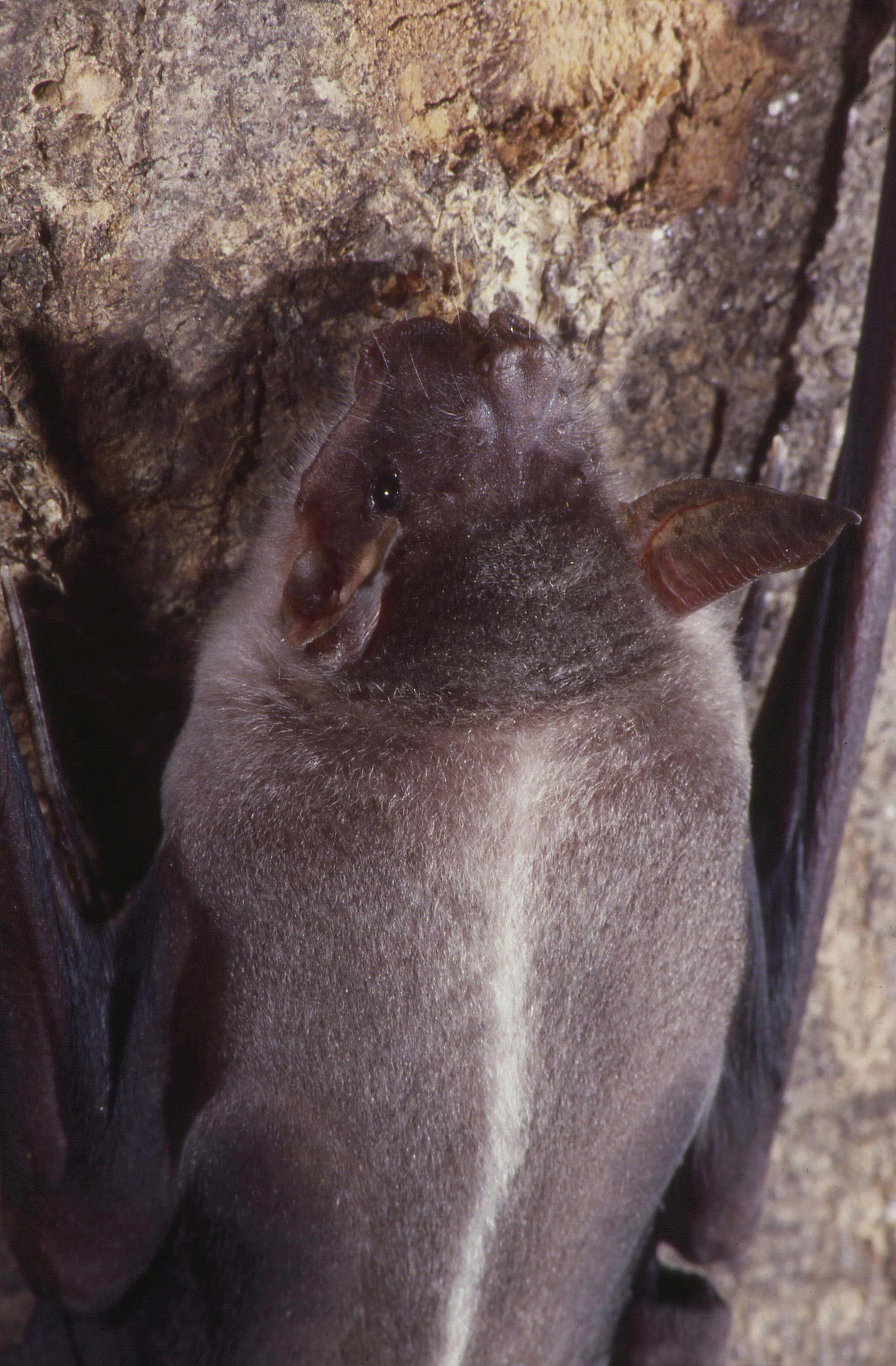


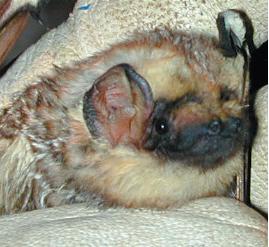 The bats' most distinguishing feature is that their forelimbs are developed as wings, making them the only mammals capable of flight. Bat species account for about 20% of all mammals.
*Family: Noctilionidae (bulldog bats)
**Genus: ''Noctilio''
*** Lesser bulldog bat, ''Noctilio albiventris'' LC
*** Greater bulldog bat, ''Noctilio leporinus'' LC
*Family: Vespertilionidae
**Subfamily: Myotinae
***Genus: ''Myotis''
**** Southern myotis, ''Myotis aelleni'' DD
**** Silver-tipped myotis, ''Myotis albescens'' LC
**** Atacama myotis, ''Myotis atacamensis'' NT
**** Chilean myotis, ''Myotis chiloensis'' LC
**** ''Myotis dinellii'' LC
**** Hairy-legged myotis, ''Myotis keaysi'' LC
**** Yellowish myotis, ''Myotis levis'' LC
**** ''Myotis midastactus'' NE
**** Curacao myotis, ''Myotis nesopolus'' LC
**** Black myotis, ''Myotis nigricans'' LC
**** Montane myotis, ''Myotis oxyotus'' LC
**** Riparian myotis, ''Myotis riparius'' LC
**** Red myotis, ''Myotis ruber'' NT
**** Velvety myotis, ''Myotis simus'' DD
**Subfamily: Vespertilioninae
***Genus: ''Eptesicus''
**** Little black serotine, ''Eptesicus andinus'' LC
**** Brazilian brown bat, ''Eptesicus brasiliensis'' LC
**** Chiriquinan serotine, ''Eptesicus chiriquinus'' LC
**** Diminutive serotine, ''Eptesicus diminutus'' DD
**** Argentine brown bat, ''Eptesicus furinalis'' LC
**** Big brown bat, ''Eptesicus fuscus'' LC
**** Harmless serotine, ''Eptesicus innoxius'' NT
**** ''Eptesicus taddeii''
***Genus: ''Histiotus''
**** Strange big-eared brown bat, ''Histiotus alienus'' DD
**** Humboldt big-eared brown bat, ''Histiotus humboldti'' DD
**** Thomas's big-eared brown bat, ''Histiotus laephotis'' NT
**** Big-eared brown bat, ''Histiotus macrotus'' LC
**** Southern big-eared brown bat, ''Histiotus magellanicus'' LC
**** Small big-eared brown bat, ''Histiotus montanus'' LC
**** Tropical big-eared brown bat, ''Histiotus velatus'' DD
***Genus: ''Lasiurus''
**** ''Lasiurus atratus'' LC
**** Desert red bat, ''Lasiurus blossevillii'' LC
**** Tacarcuna bat, ''Lasiurus castaneus'' DD
**** Hoary bat, ''Lasiurus cinereus'' LC
**** Hairy-tailed bat, ''Lasiurus ebenus'' DD
**** Southern yellow bat, ''Lasiurus ega'' LC
**** Big red bat, ''Lasiurus egregius'' DD
**** Pfeiffer's red bat, ''Lasiurus pfeifferi''
**** Saline red bat, ''Lasiurus salinae''
**** Cinnamon red bat, ''Lasiurus varius'' LC
***Genus: ''Rhogeessa''
**** Husson's yellow bat, ''Rhogeessa hussoni'' DD
**** Thomas's yellow bat, ''Rhogeessa io'' LC
**** Tiny yellow bat, ''Rhogeessa minutilla'' VU
**Subfamily: Tomopeatinae
***Genus: ''Tomopeas''
**** Blunt-eared bat, ''Tomopeas ravus'' VU
The bats' most distinguishing feature is that their forelimbs are developed as wings, making them the only mammals capable of flight. Bat species account for about 20% of all mammals.
*Family: Noctilionidae (bulldog bats)
**Genus: ''Noctilio''
*** Lesser bulldog bat, ''Noctilio albiventris'' LC
*** Greater bulldog bat, ''Noctilio leporinus'' LC
*Family: Vespertilionidae
**Subfamily: Myotinae
***Genus: ''Myotis''
**** Southern myotis, ''Myotis aelleni'' DD
**** Silver-tipped myotis, ''Myotis albescens'' LC
**** Atacama myotis, ''Myotis atacamensis'' NT
**** Chilean myotis, ''Myotis chiloensis'' LC
**** ''Myotis dinellii'' LC
**** Hairy-legged myotis, ''Myotis keaysi'' LC
**** Yellowish myotis, ''Myotis levis'' LC
**** ''Myotis midastactus'' NE
**** Curacao myotis, ''Myotis nesopolus'' LC
**** Black myotis, ''Myotis nigricans'' LC
**** Montane myotis, ''Myotis oxyotus'' LC
**** Riparian myotis, ''Myotis riparius'' LC
**** Red myotis, ''Myotis ruber'' NT
**** Velvety myotis, ''Myotis simus'' DD
**Subfamily: Vespertilioninae
***Genus: ''Eptesicus''
**** Little black serotine, ''Eptesicus andinus'' LC
**** Brazilian brown bat, ''Eptesicus brasiliensis'' LC
**** Chiriquinan serotine, ''Eptesicus chiriquinus'' LC
**** Diminutive serotine, ''Eptesicus diminutus'' DD
**** Argentine brown bat, ''Eptesicus furinalis'' LC
**** Big brown bat, ''Eptesicus fuscus'' LC
**** Harmless serotine, ''Eptesicus innoxius'' NT
**** ''Eptesicus taddeii''
***Genus: ''Histiotus''
**** Strange big-eared brown bat, ''Histiotus alienus'' DD
**** Humboldt big-eared brown bat, ''Histiotus humboldti'' DD
**** Thomas's big-eared brown bat, ''Histiotus laephotis'' NT
**** Big-eared brown bat, ''Histiotus macrotus'' LC
**** Southern big-eared brown bat, ''Histiotus magellanicus'' LC
**** Small big-eared brown bat, ''Histiotus montanus'' LC
**** Tropical big-eared brown bat, ''Histiotus velatus'' DD
***Genus: ''Lasiurus''
**** ''Lasiurus atratus'' LC
**** Desert red bat, ''Lasiurus blossevillii'' LC
**** Tacarcuna bat, ''Lasiurus castaneus'' DD
**** Hoary bat, ''Lasiurus cinereus'' LC
**** Hairy-tailed bat, ''Lasiurus ebenus'' DD
**** Southern yellow bat, ''Lasiurus ega'' LC
**** Big red bat, ''Lasiurus egregius'' DD
**** Pfeiffer's red bat, ''Lasiurus pfeifferi''
**** Saline red bat, ''Lasiurus salinae''
**** Cinnamon red bat, ''Lasiurus varius'' LC
***Genus: ''Rhogeessa''
**** Husson's yellow bat, ''Rhogeessa hussoni'' DD
**** Thomas's yellow bat, ''Rhogeessa io'' LC
**** Tiny yellow bat, ''Rhogeessa minutilla'' VU
**Subfamily: Tomopeatinae
***Genus: ''Tomopeas''
**** Blunt-eared bat, ''Tomopeas ravus'' VU


 *Family: Molossidae (free-tailed bats)
**Genus: ''Cynomops''
*** Cinnamon dog-faced bat, ''Cynomops abrasus'' DD
*** Greenhall's dog-faced bat, ''Cynomops greenhalli'' LC
*** Para dog-faced bat, ''Cynomops paranus'' DD
*** Southern dog-faced bat, ''Cynomops planirostris'' LC
**Genus: ''Eumops''
*** Black bonneted bat, ''Eumops auripendulus'' LC
*** Dwarf bonneted bat, ''Eumops bonariensis'' LC
*** Big bonneted bat, ''Eumops dabbenei'' LC
*** Wagner's bonneted bat, ''Eumops glaucinus'' LC
*** Sanborn's bonneted bat, ''Eumops hansae'' LC
*** Guianan bonneted bat, ''Eumops maurus'' DD
*** Patagonian bonneted bat, ''Eumops patagonicus'' LC
*** Western mastiff bat, ''Eumops perotis'' LC
*** Colombian bonneted bat, ''Eumops trumbulli'' LC
*** Eumops wilsoni, Wilson's bonneted bat, ''Eumops wilsoni''
**Genus: ''Molossops''
*** Equatorial dog-faced bat, ''Molossops aequatorianus'' VU
*** Mato Grosso dog-faced bat, ''Molossops mattogrossensis'' LC
*** Rufous dog-faced bat, ''Molossops neglectus'' DD
*** Dwarf dog-faced bat, ''Molossops temminckii'' LC
**Genus: ''Molossus (genus), Molossus''
*** Barnes's mastiff bat, ''Molossus barnesi'' DD
*** Coiban mastiff bat, ''Molossus coibensis'' LC
*** Bonda mastiff bat, ''Molossus currentium'' LC
*** Velvety free-tailed bat, ''Molossus molossus'' LC
*** Miller's mastiff bat, ''Molossus pretiosus'' LC
*** Black mastiff bat, ''Molossus rufus'' LC
*** Sinaloan mastiff bat, ''Molossus sinaloae'' LC
*** ''Molossus trinitatis''
**Genus: ''Mormopterus''
*** Kalinowski's mastiff bat, ''Mormopterus kalinowskii'' LC
*** Incan little mastiff bat, ''Mormopterus phrudus'' VU
**Genus: ''Nyctinomops''
*** Peale's free-tailed bat, ''Nyctinomops aurispinosus'' LC
*** Broad-eared bat, ''Nyctinomops laticaudatus'' LC
*** Big free-tailed bat, ''Nyctinomops macrotis'' LC
**Genus: ''Promops''
*** Big crested mastiff bat, ''Promops centralis'' LC
*** Brown mastiff bat, ''Promops nasutus'' LC
**Genus: ''Tadarida''
*** Mexican free-tailed bat, ''Tadarida brasiliensis'' LC
*Family: Emballonuridae (ghost bats, sac-winged bats and allies)
**Genus: ''Balantiopteryx''
*** Ecuadorian sac-winged bat, ''Balantiopteryx infusca'' EN
*** Gray sac-winged bat, ''Balantiopteryx plicata'' LC
**Genus: ''Centronycteris''
*** Thomas's shaggy bat, ''Centronycteris centralis'' LC
*** Shaggy bat, ''Centronycteris maximiliani'' LC
**Genus: ''Cormura''
*** Chestnut sac-winged bat, ''Cormura brevirostris'' LC
**Genus: ''Cyttarops''
*** Short-eared bat, ''Cyttarops alecto'' LC
**Genus: ''Diclidurus''
*** Northern ghost bat, ''Diclidurus albus'' LC
*** Greater ghost bat, ''Diclidurus ingens'' DD
*** Isabelle's ghost bat, ''Diclidurus isabella'' LC
*** Lesser ghost bat, ''Diclidurus scutatus'' LC
**Genus: ''Peropteryx''
*** Greater dog-like bat, ''Peropteryx kappleri'' LC
*** White-winged dog-like bat, ''Peropteryx leucoptera'' LC
*** Lesser doglike bat, ''Peropteryx macrotis'' LC
*** Trinidad dog-like bat, ''Peropteryx trinitatis'' DD
*** Pale-winged dog-like bat, ''Peropteryx pallidoptera''
**Genus: ''Rhynchonycteris''
*** Proboscis bat, ''Rhynchonycteris naso'' LC
**Genus: ''Saccopteryx''
*** Antioquian sac-winged bat, ''Saccopteryx antioquensis'' DD
*** Greater sac-winged bat, ''Saccopteryx bilineata'' LC
*** Frosted sac-winged bat, ''Saccopteryx canescens'' LC
*** Amazonian sac-winged bat, ''Saccopteryx gymnura'' DD
*** Lesser sac-winged bat, ''Saccopteryx leptura'' LC
*Family: Molossidae (free-tailed bats)
**Genus: ''Cynomops''
*** Cinnamon dog-faced bat, ''Cynomops abrasus'' DD
*** Greenhall's dog-faced bat, ''Cynomops greenhalli'' LC
*** Para dog-faced bat, ''Cynomops paranus'' DD
*** Southern dog-faced bat, ''Cynomops planirostris'' LC
**Genus: ''Eumops''
*** Black bonneted bat, ''Eumops auripendulus'' LC
*** Dwarf bonneted bat, ''Eumops bonariensis'' LC
*** Big bonneted bat, ''Eumops dabbenei'' LC
*** Wagner's bonneted bat, ''Eumops glaucinus'' LC
*** Sanborn's bonneted bat, ''Eumops hansae'' LC
*** Guianan bonneted bat, ''Eumops maurus'' DD
*** Patagonian bonneted bat, ''Eumops patagonicus'' LC
*** Western mastiff bat, ''Eumops perotis'' LC
*** Colombian bonneted bat, ''Eumops trumbulli'' LC
*** Eumops wilsoni, Wilson's bonneted bat, ''Eumops wilsoni''
**Genus: ''Molossops''
*** Equatorial dog-faced bat, ''Molossops aequatorianus'' VU
*** Mato Grosso dog-faced bat, ''Molossops mattogrossensis'' LC
*** Rufous dog-faced bat, ''Molossops neglectus'' DD
*** Dwarf dog-faced bat, ''Molossops temminckii'' LC
**Genus: ''Molossus (genus), Molossus''
*** Barnes's mastiff bat, ''Molossus barnesi'' DD
*** Coiban mastiff bat, ''Molossus coibensis'' LC
*** Bonda mastiff bat, ''Molossus currentium'' LC
*** Velvety free-tailed bat, ''Molossus molossus'' LC
*** Miller's mastiff bat, ''Molossus pretiosus'' LC
*** Black mastiff bat, ''Molossus rufus'' LC
*** Sinaloan mastiff bat, ''Molossus sinaloae'' LC
*** ''Molossus trinitatis''
**Genus: ''Mormopterus''
*** Kalinowski's mastiff bat, ''Mormopterus kalinowskii'' LC
*** Incan little mastiff bat, ''Mormopterus phrudus'' VU
**Genus: ''Nyctinomops''
*** Peale's free-tailed bat, ''Nyctinomops aurispinosus'' LC
*** Broad-eared bat, ''Nyctinomops laticaudatus'' LC
*** Big free-tailed bat, ''Nyctinomops macrotis'' LC
**Genus: ''Promops''
*** Big crested mastiff bat, ''Promops centralis'' LC
*** Brown mastiff bat, ''Promops nasutus'' LC
**Genus: ''Tadarida''
*** Mexican free-tailed bat, ''Tadarida brasiliensis'' LC
*Family: Emballonuridae (ghost bats, sac-winged bats and allies)
**Genus: ''Balantiopteryx''
*** Ecuadorian sac-winged bat, ''Balantiopteryx infusca'' EN
*** Gray sac-winged bat, ''Balantiopteryx plicata'' LC
**Genus: ''Centronycteris''
*** Thomas's shaggy bat, ''Centronycteris centralis'' LC
*** Shaggy bat, ''Centronycteris maximiliani'' LC
**Genus: ''Cormura''
*** Chestnut sac-winged bat, ''Cormura brevirostris'' LC
**Genus: ''Cyttarops''
*** Short-eared bat, ''Cyttarops alecto'' LC
**Genus: ''Diclidurus''
*** Northern ghost bat, ''Diclidurus albus'' LC
*** Greater ghost bat, ''Diclidurus ingens'' DD
*** Isabelle's ghost bat, ''Diclidurus isabella'' LC
*** Lesser ghost bat, ''Diclidurus scutatus'' LC
**Genus: ''Peropteryx''
*** Greater dog-like bat, ''Peropteryx kappleri'' LC
*** White-winged dog-like bat, ''Peropteryx leucoptera'' LC
*** Lesser doglike bat, ''Peropteryx macrotis'' LC
*** Trinidad dog-like bat, ''Peropteryx trinitatis'' DD
*** Pale-winged dog-like bat, ''Peropteryx pallidoptera''
**Genus: ''Rhynchonycteris''
*** Proboscis bat, ''Rhynchonycteris naso'' LC
**Genus: ''Saccopteryx''
*** Antioquian sac-winged bat, ''Saccopteryx antioquensis'' DD
*** Greater sac-winged bat, ''Saccopteryx bilineata'' LC
*** Frosted sac-winged bat, ''Saccopteryx canescens'' LC
*** Amazonian sac-winged bat, ''Saccopteryx gymnura'' DD
*** Lesser sac-winged bat, ''Saccopteryx leptura'' LC
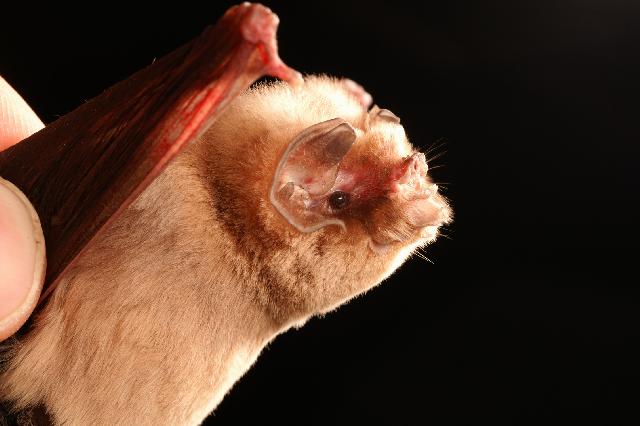
 *Family: Mormoopidae (mustached bats)
**Genus: ''Mormoops''
*** Ghost-faced bat, ''Mormoops megalophylla'' LC
**Genus: ''Pteronotus''
*** Davy's naked-backed bat, ''Pteronotus davyi'' LC
*** Big naked-backed bat, ''Pteronotus gymnonotus'' LC
*** Paraguana moustached bat, ''Pteronotus paraguanensis'' EN
*** Parnell's mustached bat, ''Pteronotus parnellii'' LC
*** Wagner's mustached bat, ''Pteronotus personatus'' LC
*Family: Mormoopidae (mustached bats)
**Genus: ''Mormoops''
*** Ghost-faced bat, ''Mormoops megalophylla'' LC
**Genus: ''Pteronotus''
*** Davy's naked-backed bat, ''Pteronotus davyi'' LC
*** Big naked-backed bat, ''Pteronotus gymnonotus'' LC
*** Paraguana moustached bat, ''Pteronotus paraguanensis'' EN
*** Parnell's mustached bat, ''Pteronotus parnellii'' LC
*** Wagner's mustached bat, ''Pteronotus personatus'' LC
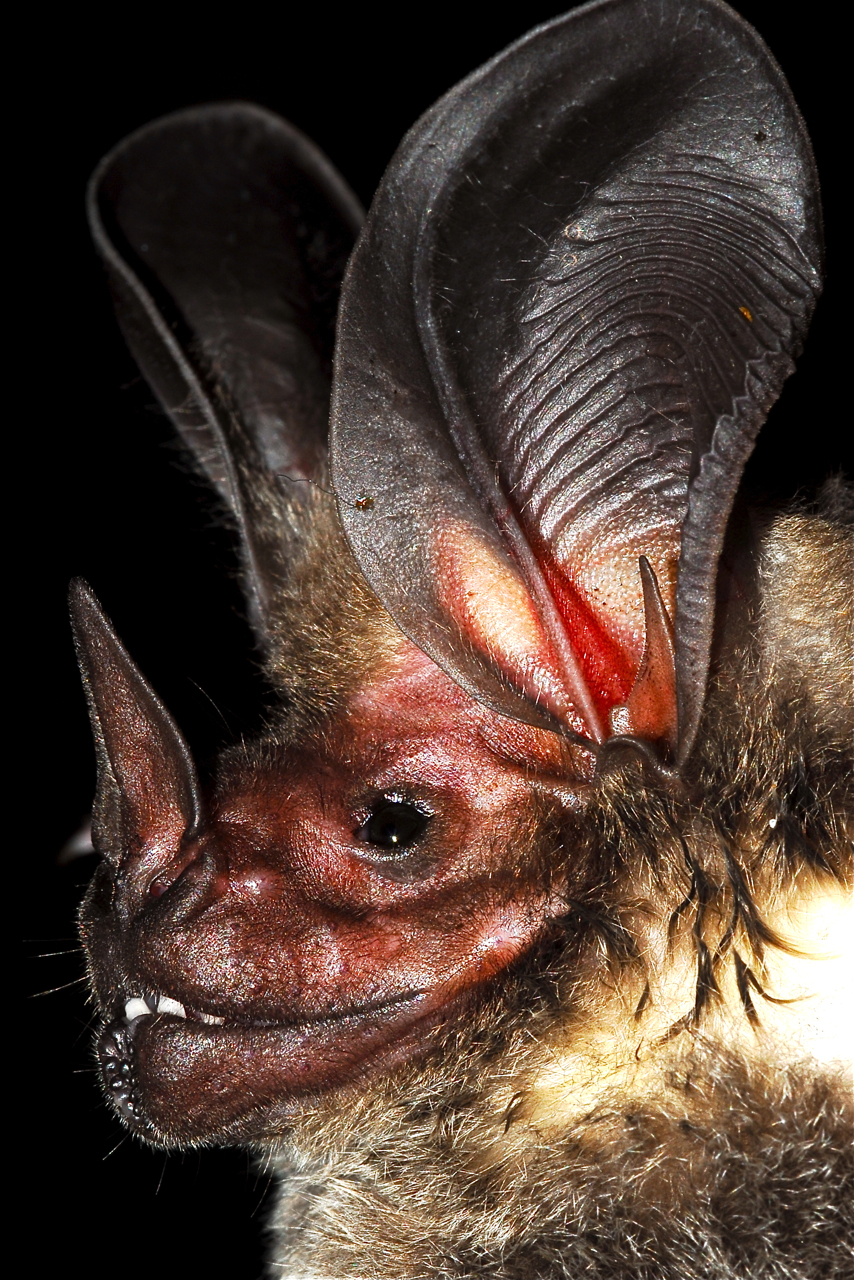


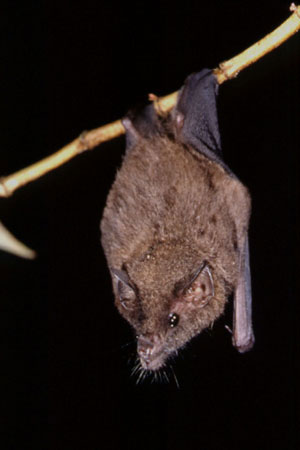

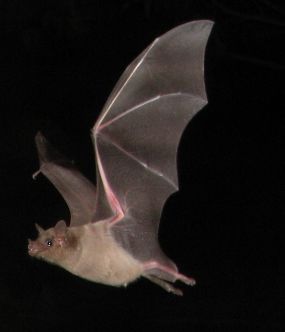






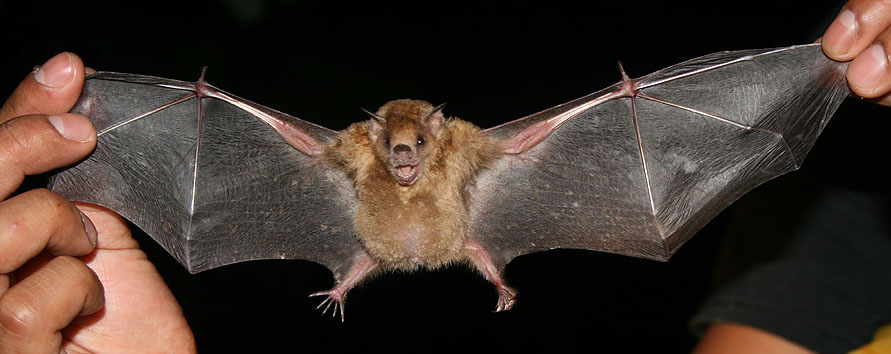

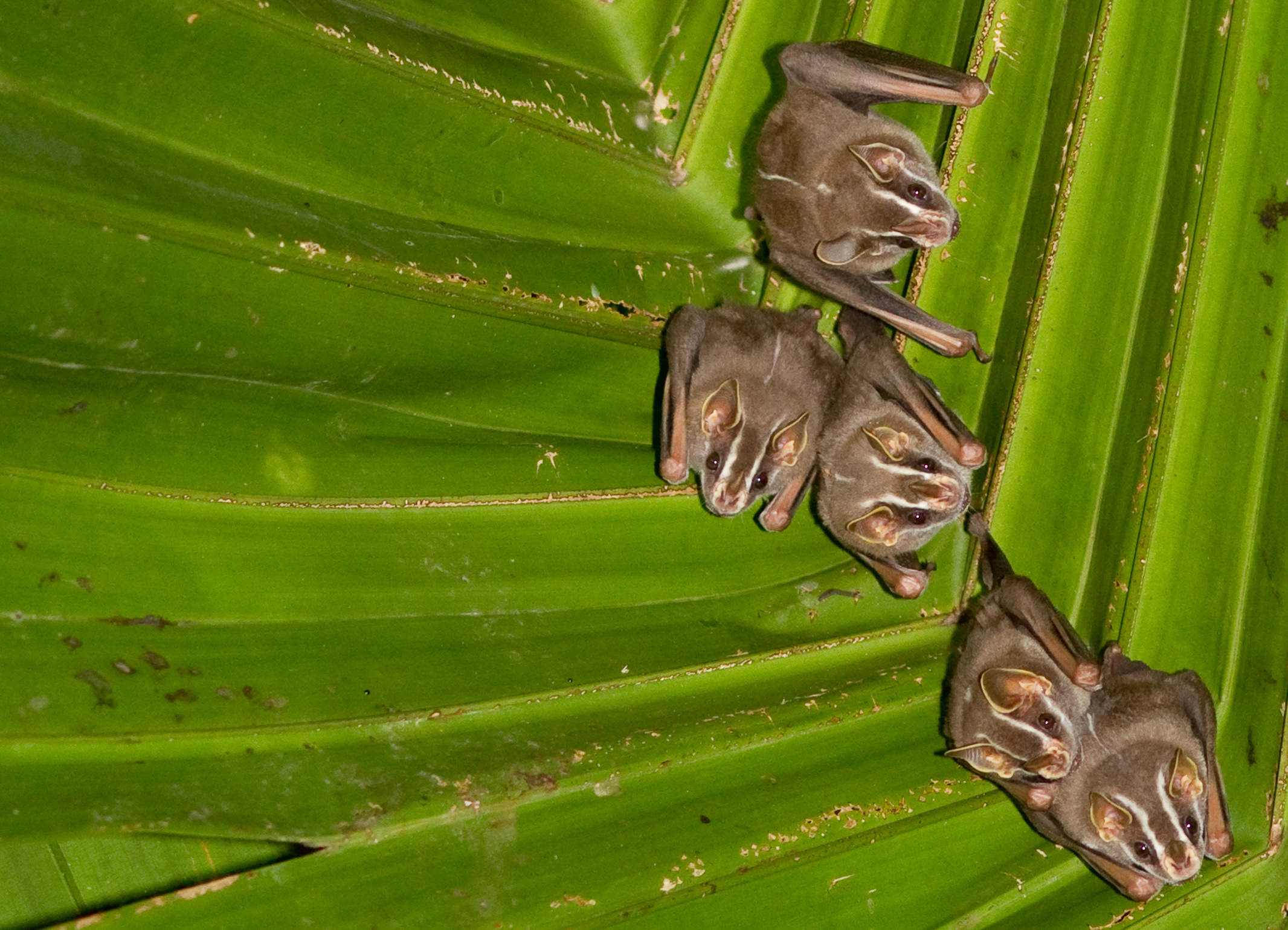
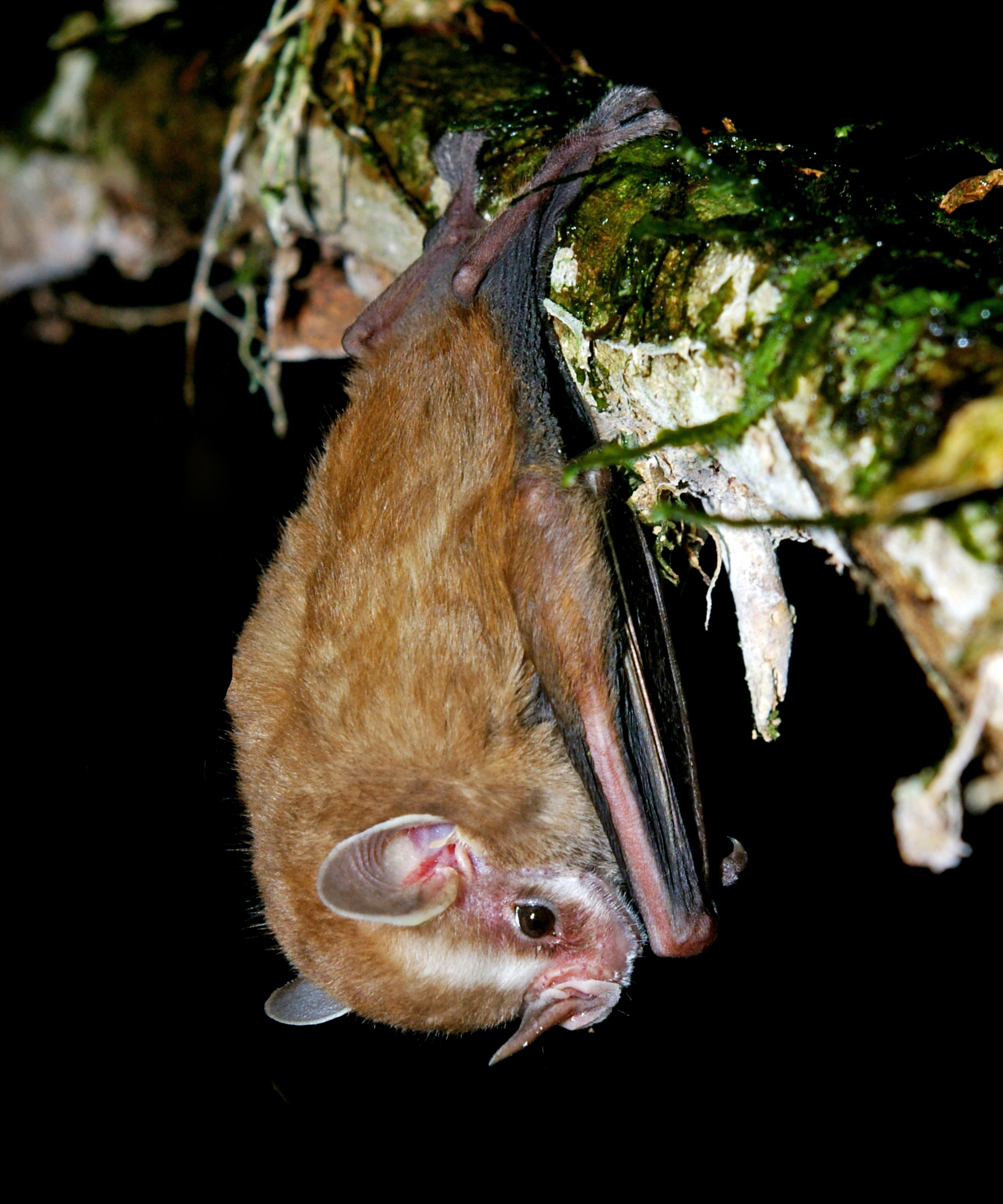
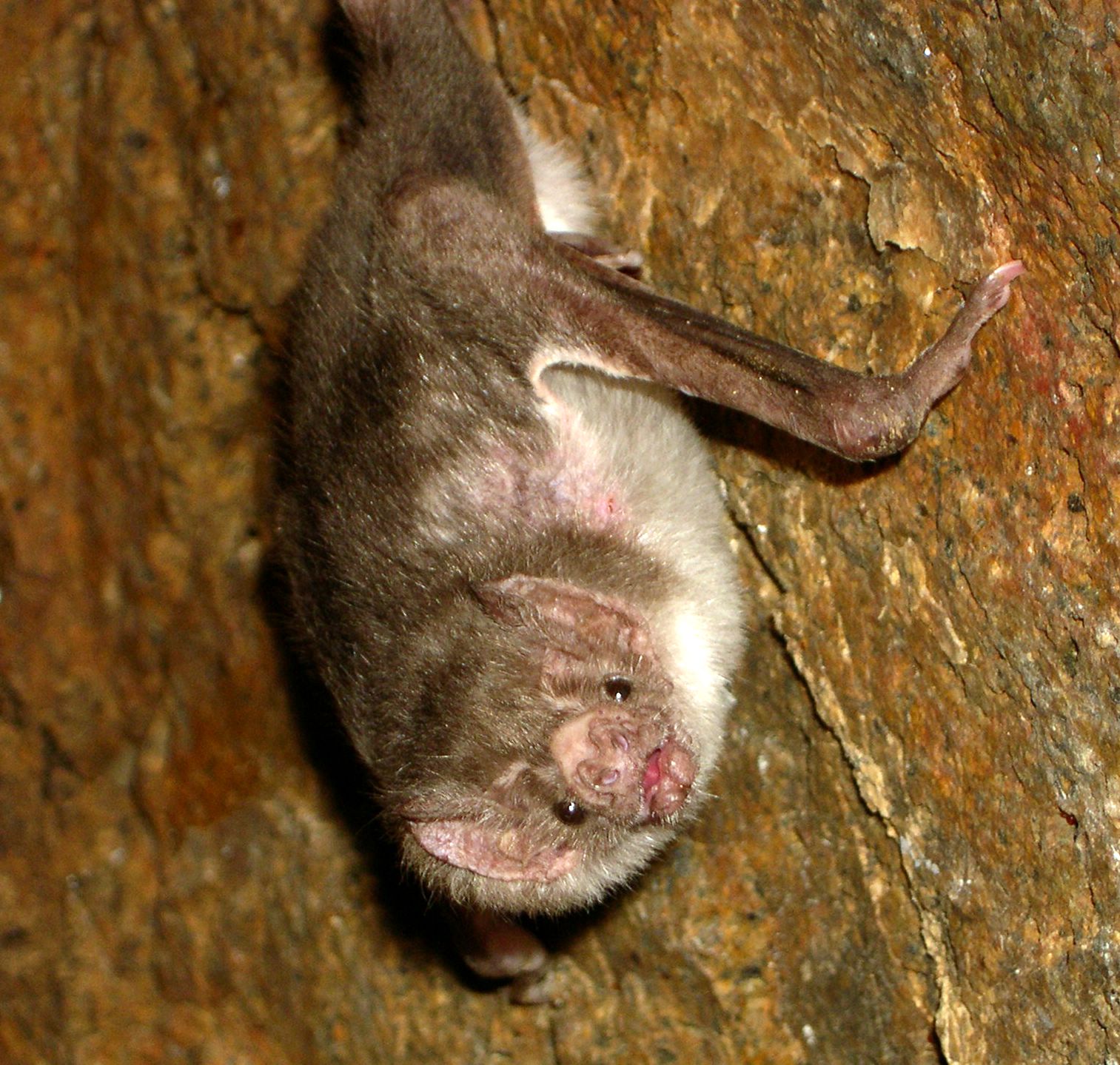

 *Family: Phyllostomidae (leaf-nosed bats)
**Subfamily: Phyllostominae
***Genus: ''Chrotopterus''
**** Big-eared woolly bat, ''Chrotopterus auritus'' LC
***Genus: ''Glyphonycteris''
**** Behn's bat, ''Glyphonycteris behnii'' DD
**** Davies's big-eared bat, ''Glyphonycteris daviesi'' LC
**** Tricolored big-eared bat, ''Glyphonycteris sylvestris'' LC
***Genus: ''Lampronycteris''
**** Yellow-throated big-eared bat, ''Lampronycteris brachyotis'' LC
***Genus: ''Lonchorhina''
**** Tomes's sword-nosed bat, ''Lonchorhina aurita'' LC
**** Fernandez's sword-nosed bat, ''Lonchorhina fernandezi'' EN
**** Northern sword-nosed bat, ''Lonchorhina inusitata'' DD
**** Marinkelle's sword-nosed bat, ''Lonchorhina marinkellei'' EN
**** Orinoco sword-nosed bat, ''Lonchorhina orinocensis'' VU
***Genus: ''Lophostoma''
**** ''Lophostoma aequatorialis'' DD
**** Pygmy round-eared bat, ''Lophostoma brasiliense'' LC
**** Carriker's round-eared bat, ''Lophostoma carrikeri'' LC
**** Schultz's round-eared bat, ''Lophostoma schulzi'' LC
**** White-throated round-eared bat, ''Lophostoma silvicolum'' LC
**** ''Lophostoma yasuni'' DD
***Genus: ''Macrophyllum (genus), Macrophyllum''
**** Long-legged bat, ''Macrophyllum macrophyllum'' LC
***Genus: ''Micronycteris''
**** Brosset's big-eared bat, ''Micronycteris brosseti'' DD
**** ''Micronycteris giovanniae''
**** Hairy big-eared bat, ''Micronycteris hirsuta'' LC
**** Pirlot's big-eared bat, ''Micronycteris homezi''
**** Matses' big-eared bat, ''Micronycteris matses'' DD
**** Little big-eared bat, ''Micronycteris megalotis'' LC
**** Common big-eared bat, ''Micronycteris microtis'' LC
**** White-bellied big-eared bat, ''Micronycteris minuta'' LC
**** Sanborn's big-eared bat, ''Micronycteris sanborni'' DD
**** Schmidts's big-eared bat, ''Micronycteris schmidtorum'' LC
***Genus: ''Mimon''
**** Golden bat, ''Mimon bennettii'' LC
**** Cozumelan golden bat, ''Mimon cozumelae'' LC
**** Striped hairy-nosed bat, ''Mimon crenulatum'' LC
**** Koepcke's hairy-nosed bat, ''Mimon koepckeae'' DD
***Genus: ''Neonycteris''
**** Least big-eared bat, ''Neonycteris pusilla'' VU
***Genus: ''Phylloderma''
**** Pale-faced bat, ''Phylloderma stenops'' LC
***Genus: ''Phyllostomus''
**** Pale spear-nosed bat, ''Phyllostomus discolor'' LC
**** Lesser spear-nosed bat, ''Phyllostomus elongatus'' LC
**** Greater spear-nosed bat, ''Phyllostomus hastatus'' LC
**** Guianan spear-nosed bat, ''Phyllostomus latifolius'' LC
***Genus: ''Tonatia''
**** Greater round-eared bat, ''Tonatia bidens'' DD
**** Stripe-headed round-eared bat, ''Tonatia saurophila'' LC
***Genus: ''Trachops''
**** Fringe-lipped bat, ''Trachops cirrhosus'' LC
***Genus: ''Trinycteris''
**** Niceforo's big-eared bat, ''Trinycteris nicefori'' LC
***Genus: ''Vampyrum''
**** Spectral bat, ''Vampyrum spectrum'' NT
**Subfamily: Glossophaginae
***Genus: ''Anoura''
**** ''Anoura aequatoris''
**** Cadena's tailless bat, ''Anoura cadenai''
**** Tailed tailless bat, ''Anoura caudifer'' LC
**** Handley's tailless bat, ''Anoura cultrata'' NT
**** Tube-lipped nectar bat, ''Anoura fistulata'' DD
**** Geoffroy's tailless bat, ''Anoura geoffroyi'' LC
**** Broad-toothed tailless bat, ''Anoura latidens'' LC
**** Luis Manuel's tailless bat, ''Anoura luismanueli'' LC
***Genus: ''Choeroniscus''
**** Godman's long-tailed bat, ''Choeroniscus godmani'' LC
**** Minor long-nosed long-tongued bat, ''Choeroniscus minor'' LC
**** Greater long-tailed bat, ''Choeroniscus periosus'' VU
***Genus: ''Glossophaga''
**** Commissaris's long-tongued bat, ''Glossophaga commissarisi'' LC
**** Miller's long-tongued bat, ''Glossophaga longirostris'' DD
**** Pallas's long-tongued bat, ''Glossophaga soricina'' LC
***Genus: ''Leptonycteris''
**** Southern long-nosed bat, ''Leptonycteris curasoae'' VU
***Genus: ''Lichonycteris''
**** Dark long-tongued bat, ''Lichonycteris obscura'' LC
***Genus: ''Lionycteris''
**** Chestnut long-tongued bat, ''Lionycteris spurrelli'' LC
***Genus: ''Lonchophylla''
**** Bokermann's nectar bat, ''Lonchophylla bokermanni'' DD
**** ''Lonchophylla cadenai''
**** Chocoan long-tongued bat, ''Lonchophylla chocoana'' DD
**** Goldman's nectar bat, ''Lonchophylla concava'' NT
**** Dekeyser's nectar bat, ''Lonchophylla dekeyseri'' NT
**** ''Lonchophylla fornicata''
**** Handley's nectar bat, ''Lonchophylla handleyi'' LC
**** Western nectar bat, ''Lonchophylla hesperia'' VU
**** Godman's nectar bat, ''Lonchophylla mordax'' LC
**** Orcés's long-tongued bat, ''Lonchophylla orcesi'' DD
**** ''Lonchophylla pattoni''
**** Orange nectar bat, ''Lonchophylla robusta'' LC
**** Thomas's nectar bat, ''Lonchophylla thomasi'' LC
***Genus: ''Platalina''
**** Long-snouted bat, ''Platalina genovensium'' NT
***Genus: ''Scleronycteris''
**** Ega long-tongued bat, ''Scleronycteris ega'' LC
**Subfamily: Carolliinae
***Genus: ''Carollia''
**** Benkeith's short-tailed bat, ''Carollia benkeithi''
**** Silky short-tailed bat, ''Carollia brevicauda'' LC
**** Chestnut short-tailed bat, ''Carollia castanea'' LC
**** Colombian short-tailed bat, ''Carollia colombiana''
**** Manu short-tailed bat, ''Carollia manu'' LC
**** Mono's short-tailed bat, ''Carollia monohernandezi''
**** Seba's short-tailed bat, ''Carollia perspicillata'' LC
***Genus: ''Rhinophylla''
**** Hairy little fruit bat, ''Rhinophylla alethina'' NT
**** Fischer's little fruit bat, ''Rhinophylla fischerae'' LC
**** Dwarf little fruit bat, ''Rhinophylla pumilio'' LC
**Subfamily: Stenodermatinae
***Genus: ''Ametrida''
**** Little white-shouldered bat, ''Ametrida centurio'' LC
***Genus: ''Artibeus''
**** Large fruit-eating bat, ''Artibeus amplus'' LC
**** Brown fruit-eating bat, ''Artibeus concolor'' LC
**** Fringed fruit-eating bat, ''Artibeus fimbriatus'' LC
**** Fraternal fruit-eating bat, ''Artibeus fraterculus'' LC
**** Jamaican fruit bat, ''Artibeus jamaicensis'' LC
**** Great fruit-eating bat, ''Artibeus lituratus'' LC
**** Dark fruit-eating bat, ''Artibeus obscurus'' LC
**** Flat-faced fruit-eating bat, ''Artibeus planirostris'' LC
***Genus: ''Wrinkle-faced bat, Centurio''
**** Wrinkle-faced bat, ''Centurio senex'' LC
***Genus: ''Chiroderma''
**** Brazilian big-eyed bat, ''Chiroderma doriae'' LC
**** Salvin's big-eyed bat, ''Chiroderma salvini'' LC
**** Little big-eyed bat, ''Chiroderma trinitatum'' LC
**** Hairy big-eyed bat, ''Chiroderma villosum'' LC
***Genus: ''Dermanura''
**** Andersen's fruit-eating bat, ''Dermanura anderseni'' LC
**** Bogota fruit-eating bat, ''Dermanura bogotensis'' LC
**** Gervais's fruit-eating bat, ''Dermanura cinerea'' LC
**** Silver fruit-eating bat, ''Dermanura glauca'' LC
**** Gnome fruit-eating bat, ''Dermanura gnoma'' LC
**** Pygmy fruit-eating bat, ''Dermanura phaeotis'' LC
**** ''Dermanura rava'' NE
**** Rosenberg's fruit-eating bat, ''Dermanura rosenbergi'' DD
**** Toltec fruit-eating bat, ''Dermanura tolteca'' LC
**** Thomas's fruit-eating bat, ''Dermanura watsoni'' LC
***Genus: ''Enchisthenes''
**** Velvety fruit-eating bat, ''Enchisthenes hartii'' LC
***Genus: ''Mesophylla''
**** MacConnell's bat, ''Mesophylla macconnelli'' LC
***Genus: ''Platyrrhinus''
**** Alberico's broad-nosed bat, ''Platyrrhinus alberico'' LC
**** Slender broad-nosed bat, ''Platyrrhinus angustirostris''
**** ''Platyrrhinus aquilus''
**** Eldorado broad-nosed bat, ''Platyrrhinus aurarius'' LC
**** Short-headed broad-nosed bat, ''Platyrrhinus brachycephalus'' LC
**** Choco broad-nosed bat, ''Platyrrhinus chocoensis'' EN
**** Thomas's broad-nosed bat, ''Platyrrhinus dorsalis'' LC
**** Brown-bellied broad-nosed bat, ''Platyrrhinus fusciventris''
**** Heller's broad-nosed bat, ''Platyrrhinus helleri'' LC
**** ''Platyrrhinus incarum''
**** Buffy broad-nosed bat, ''Platyrrhinus infuscus'' LC
**** Platyrrhinus ismaeli, Ismael's broad-nosed bat, ''Platyrrhinus ismaeli'' VU
**** White-lined broad-nosed bat, ''Platyrrhinus lineatus'' LC
**** Quechua broad-nosed bat, ''Platyrrhinus masu'' LC
**** Matapalo broad-nosed bat, ''Platyrrhinus matapalensis'' NT
**** Geoffroy's rayed bat, ''Platyrrhinus nigellus'' LC
**** ''Platyrrhinus nitelinea''
**** Recife broad-nosed bat, ''Platyrrhinus recifinus'' LC
**** Shadowy broad-nosed bat, ''Platyrrhinus umbratus'' DD
**** Greater broad-nosed bat, ''Platyrrhinus vittatus'' LC
***Genus: ''Sphaeronycteris''
**** Visored bat, ''Sphaeronycteris toxophyllum'' DD
***Genus: ''Pygoderma''
**** Ipanema bat, ''Pygoderma bilabiatum'' LC
***Genus: ''Sturnira''
**** Aratathomas's yellow-shouldered bat, ''Sturnira aratathomasi'' NT
**** Bidentate yellow-shouldered bat, ''Sturnira bidens'' LC
**** Bogota yellow-shouldered bat, ''Sturnira bogotensis'' LC
**** Hairy yellow-shouldered bat, ''Sturnira erythromos'' LC
**** Sturnira koopmanhilli, Chocó yellow-shouldered bat, ''Sturnira koopmanhilli''
**** Little yellow-shouldered bat, ''Sturnira lilium'' LC
**** Highland yellow-shouldered bat, ''Sturnira ludovici'' LC
**** Louis's yellow-shouldered bat, ''Sturnira luisi'' LC
**** Greater yellow-shouldered bat, ''Sturnira magna'' LC
**** Mistratoan yellow-shouldered bat, ''Sturnira mistratensis'' DD
**** Talamancan yellow-shouldered bat, ''Sturnira mordax'' NT
**** Lesser yellow-shouldered bat, ''Sturnira nana'' EN
**** Tschudi's yellow-shouldered bat, ''Sturnira oporaphilum'' NT
**** Soriano's yellow-shouldered bat, ''Sturnira sorianoi'' DD
**** Tilda's yellow-shouldered bat, ''Sturnira tildae'' LC
***Genus: ''Uroderma''
**** Tent-making bat, ''Uroderma bilobatum'' LC
**** Brown tent-making bat, ''Uroderma magnirostrum'' LC
***Genus: ''Vampyressa''
**** Bidentate yellow-eared bat, ''Vampyressa bidens'' LC
**** Brock's yellow-eared bat, ''Vampyressa brocki'' LC
**** Melissa's yellow-eared bat, ''Vampyressa melissa'' VU
**** Striped yellow-eared bat, ''Vampyressa nymphaea'' LC
**** Southern little yellow-eared bat, ''Vampyressa pusilla'' DD
**** Northern little yellow-eared bat, ''Vampyressa thyone'' LC
***Genus: ''Vampyrodes''
**** Great stripe-faced bat, ''Vampyrodes caraccioli'' LC
**Subfamily: Desmodontinae
***Genus: ''Desmodus''
**** Common vampire bat, ''Desmodus rotundus'' LC
***Genus: ''Diaemus''
**** White-winged vampire bat, ''Diaemus youngi'' LC
***Genus: ''Diphylla''
**** Hairy-legged vampire bat, ''Diphylla ecaudata'' LC
*Family: Natalidae (funnel-eared bats)
**Genus: ''Chilonatalus''
*** Cuban funnel-eared bat, ''Chilonatalus micropus'' NT
**Genus: ''Natalus''
*** Brazilian funnel-eared bat, ''Natalus espiritosantensis'' NT
*** Trinidadian funnel-eared bat, ''Natalus tumidirostris'' LC
*Family: Furipteridae (thumbless bats)
**Genus: ''Amorphochilus''
*** Smoky bat, ''Amorphochilus schnablii'' EN
**Genus: ''Furipterus''
*** Thumbless bat, ''Furipterus horrens'' LC
*Family: Thyropteridae (disc-winged bats)
**Genus: ''Thyroptera''
*** Peters's disk-winged bat, ''Thyroptera discifera'' LC
*** de Vivo's disk-winged bat, ''Thyroptera devivoi'' DD
*** LaVal's disk-winged bat, ''Thyroptera lavali'' DD
*** Spix's disk-winged bat, ''Thyroptera tricolor'' LC
*Family: Phyllostomidae (leaf-nosed bats)
**Subfamily: Phyllostominae
***Genus: ''Chrotopterus''
**** Big-eared woolly bat, ''Chrotopterus auritus'' LC
***Genus: ''Glyphonycteris''
**** Behn's bat, ''Glyphonycteris behnii'' DD
**** Davies's big-eared bat, ''Glyphonycteris daviesi'' LC
**** Tricolored big-eared bat, ''Glyphonycteris sylvestris'' LC
***Genus: ''Lampronycteris''
**** Yellow-throated big-eared bat, ''Lampronycteris brachyotis'' LC
***Genus: ''Lonchorhina''
**** Tomes's sword-nosed bat, ''Lonchorhina aurita'' LC
**** Fernandez's sword-nosed bat, ''Lonchorhina fernandezi'' EN
**** Northern sword-nosed bat, ''Lonchorhina inusitata'' DD
**** Marinkelle's sword-nosed bat, ''Lonchorhina marinkellei'' EN
**** Orinoco sword-nosed bat, ''Lonchorhina orinocensis'' VU
***Genus: ''Lophostoma''
**** ''Lophostoma aequatorialis'' DD
**** Pygmy round-eared bat, ''Lophostoma brasiliense'' LC
**** Carriker's round-eared bat, ''Lophostoma carrikeri'' LC
**** Schultz's round-eared bat, ''Lophostoma schulzi'' LC
**** White-throated round-eared bat, ''Lophostoma silvicolum'' LC
**** ''Lophostoma yasuni'' DD
***Genus: ''Macrophyllum (genus), Macrophyllum''
**** Long-legged bat, ''Macrophyllum macrophyllum'' LC
***Genus: ''Micronycteris''
**** Brosset's big-eared bat, ''Micronycteris brosseti'' DD
**** ''Micronycteris giovanniae''
**** Hairy big-eared bat, ''Micronycteris hirsuta'' LC
**** Pirlot's big-eared bat, ''Micronycteris homezi''
**** Matses' big-eared bat, ''Micronycteris matses'' DD
**** Little big-eared bat, ''Micronycteris megalotis'' LC
**** Common big-eared bat, ''Micronycteris microtis'' LC
**** White-bellied big-eared bat, ''Micronycteris minuta'' LC
**** Sanborn's big-eared bat, ''Micronycteris sanborni'' DD
**** Schmidts's big-eared bat, ''Micronycteris schmidtorum'' LC
***Genus: ''Mimon''
**** Golden bat, ''Mimon bennettii'' LC
**** Cozumelan golden bat, ''Mimon cozumelae'' LC
**** Striped hairy-nosed bat, ''Mimon crenulatum'' LC
**** Koepcke's hairy-nosed bat, ''Mimon koepckeae'' DD
***Genus: ''Neonycteris''
**** Least big-eared bat, ''Neonycteris pusilla'' VU
***Genus: ''Phylloderma''
**** Pale-faced bat, ''Phylloderma stenops'' LC
***Genus: ''Phyllostomus''
**** Pale spear-nosed bat, ''Phyllostomus discolor'' LC
**** Lesser spear-nosed bat, ''Phyllostomus elongatus'' LC
**** Greater spear-nosed bat, ''Phyllostomus hastatus'' LC
**** Guianan spear-nosed bat, ''Phyllostomus latifolius'' LC
***Genus: ''Tonatia''
**** Greater round-eared bat, ''Tonatia bidens'' DD
**** Stripe-headed round-eared bat, ''Tonatia saurophila'' LC
***Genus: ''Trachops''
**** Fringe-lipped bat, ''Trachops cirrhosus'' LC
***Genus: ''Trinycteris''
**** Niceforo's big-eared bat, ''Trinycteris nicefori'' LC
***Genus: ''Vampyrum''
**** Spectral bat, ''Vampyrum spectrum'' NT
**Subfamily: Glossophaginae
***Genus: ''Anoura''
**** ''Anoura aequatoris''
**** Cadena's tailless bat, ''Anoura cadenai''
**** Tailed tailless bat, ''Anoura caudifer'' LC
**** Handley's tailless bat, ''Anoura cultrata'' NT
**** Tube-lipped nectar bat, ''Anoura fistulata'' DD
**** Geoffroy's tailless bat, ''Anoura geoffroyi'' LC
**** Broad-toothed tailless bat, ''Anoura latidens'' LC
**** Luis Manuel's tailless bat, ''Anoura luismanueli'' LC
***Genus: ''Choeroniscus''
**** Godman's long-tailed bat, ''Choeroniscus godmani'' LC
**** Minor long-nosed long-tongued bat, ''Choeroniscus minor'' LC
**** Greater long-tailed bat, ''Choeroniscus periosus'' VU
***Genus: ''Glossophaga''
**** Commissaris's long-tongued bat, ''Glossophaga commissarisi'' LC
**** Miller's long-tongued bat, ''Glossophaga longirostris'' DD
**** Pallas's long-tongued bat, ''Glossophaga soricina'' LC
***Genus: ''Leptonycteris''
**** Southern long-nosed bat, ''Leptonycteris curasoae'' VU
***Genus: ''Lichonycteris''
**** Dark long-tongued bat, ''Lichonycteris obscura'' LC
***Genus: ''Lionycteris''
**** Chestnut long-tongued bat, ''Lionycteris spurrelli'' LC
***Genus: ''Lonchophylla''
**** Bokermann's nectar bat, ''Lonchophylla bokermanni'' DD
**** ''Lonchophylla cadenai''
**** Chocoan long-tongued bat, ''Lonchophylla chocoana'' DD
**** Goldman's nectar bat, ''Lonchophylla concava'' NT
**** Dekeyser's nectar bat, ''Lonchophylla dekeyseri'' NT
**** ''Lonchophylla fornicata''
**** Handley's nectar bat, ''Lonchophylla handleyi'' LC
**** Western nectar bat, ''Lonchophylla hesperia'' VU
**** Godman's nectar bat, ''Lonchophylla mordax'' LC
**** Orcés's long-tongued bat, ''Lonchophylla orcesi'' DD
**** ''Lonchophylla pattoni''
**** Orange nectar bat, ''Lonchophylla robusta'' LC
**** Thomas's nectar bat, ''Lonchophylla thomasi'' LC
***Genus: ''Platalina''
**** Long-snouted bat, ''Platalina genovensium'' NT
***Genus: ''Scleronycteris''
**** Ega long-tongued bat, ''Scleronycteris ega'' LC
**Subfamily: Carolliinae
***Genus: ''Carollia''
**** Benkeith's short-tailed bat, ''Carollia benkeithi''
**** Silky short-tailed bat, ''Carollia brevicauda'' LC
**** Chestnut short-tailed bat, ''Carollia castanea'' LC
**** Colombian short-tailed bat, ''Carollia colombiana''
**** Manu short-tailed bat, ''Carollia manu'' LC
**** Mono's short-tailed bat, ''Carollia monohernandezi''
**** Seba's short-tailed bat, ''Carollia perspicillata'' LC
***Genus: ''Rhinophylla''
**** Hairy little fruit bat, ''Rhinophylla alethina'' NT
**** Fischer's little fruit bat, ''Rhinophylla fischerae'' LC
**** Dwarf little fruit bat, ''Rhinophylla pumilio'' LC
**Subfamily: Stenodermatinae
***Genus: ''Ametrida''
**** Little white-shouldered bat, ''Ametrida centurio'' LC
***Genus: ''Artibeus''
**** Large fruit-eating bat, ''Artibeus amplus'' LC
**** Brown fruit-eating bat, ''Artibeus concolor'' LC
**** Fringed fruit-eating bat, ''Artibeus fimbriatus'' LC
**** Fraternal fruit-eating bat, ''Artibeus fraterculus'' LC
**** Jamaican fruit bat, ''Artibeus jamaicensis'' LC
**** Great fruit-eating bat, ''Artibeus lituratus'' LC
**** Dark fruit-eating bat, ''Artibeus obscurus'' LC
**** Flat-faced fruit-eating bat, ''Artibeus planirostris'' LC
***Genus: ''Wrinkle-faced bat, Centurio''
**** Wrinkle-faced bat, ''Centurio senex'' LC
***Genus: ''Chiroderma''
**** Brazilian big-eyed bat, ''Chiroderma doriae'' LC
**** Salvin's big-eyed bat, ''Chiroderma salvini'' LC
**** Little big-eyed bat, ''Chiroderma trinitatum'' LC
**** Hairy big-eyed bat, ''Chiroderma villosum'' LC
***Genus: ''Dermanura''
**** Andersen's fruit-eating bat, ''Dermanura anderseni'' LC
**** Bogota fruit-eating bat, ''Dermanura bogotensis'' LC
**** Gervais's fruit-eating bat, ''Dermanura cinerea'' LC
**** Silver fruit-eating bat, ''Dermanura glauca'' LC
**** Gnome fruit-eating bat, ''Dermanura gnoma'' LC
**** Pygmy fruit-eating bat, ''Dermanura phaeotis'' LC
**** ''Dermanura rava'' NE
**** Rosenberg's fruit-eating bat, ''Dermanura rosenbergi'' DD
**** Toltec fruit-eating bat, ''Dermanura tolteca'' LC
**** Thomas's fruit-eating bat, ''Dermanura watsoni'' LC
***Genus: ''Enchisthenes''
**** Velvety fruit-eating bat, ''Enchisthenes hartii'' LC
***Genus: ''Mesophylla''
**** MacConnell's bat, ''Mesophylla macconnelli'' LC
***Genus: ''Platyrrhinus''
**** Alberico's broad-nosed bat, ''Platyrrhinus alberico'' LC
**** Slender broad-nosed bat, ''Platyrrhinus angustirostris''
**** ''Platyrrhinus aquilus''
**** Eldorado broad-nosed bat, ''Platyrrhinus aurarius'' LC
**** Short-headed broad-nosed bat, ''Platyrrhinus brachycephalus'' LC
**** Choco broad-nosed bat, ''Platyrrhinus chocoensis'' EN
**** Thomas's broad-nosed bat, ''Platyrrhinus dorsalis'' LC
**** Brown-bellied broad-nosed bat, ''Platyrrhinus fusciventris''
**** Heller's broad-nosed bat, ''Platyrrhinus helleri'' LC
**** ''Platyrrhinus incarum''
**** Buffy broad-nosed bat, ''Platyrrhinus infuscus'' LC
**** Platyrrhinus ismaeli, Ismael's broad-nosed bat, ''Platyrrhinus ismaeli'' VU
**** White-lined broad-nosed bat, ''Platyrrhinus lineatus'' LC
**** Quechua broad-nosed bat, ''Platyrrhinus masu'' LC
**** Matapalo broad-nosed bat, ''Platyrrhinus matapalensis'' NT
**** Geoffroy's rayed bat, ''Platyrrhinus nigellus'' LC
**** ''Platyrrhinus nitelinea''
**** Recife broad-nosed bat, ''Platyrrhinus recifinus'' LC
**** Shadowy broad-nosed bat, ''Platyrrhinus umbratus'' DD
**** Greater broad-nosed bat, ''Platyrrhinus vittatus'' LC
***Genus: ''Sphaeronycteris''
**** Visored bat, ''Sphaeronycteris toxophyllum'' DD
***Genus: ''Pygoderma''
**** Ipanema bat, ''Pygoderma bilabiatum'' LC
***Genus: ''Sturnira''
**** Aratathomas's yellow-shouldered bat, ''Sturnira aratathomasi'' NT
**** Bidentate yellow-shouldered bat, ''Sturnira bidens'' LC
**** Bogota yellow-shouldered bat, ''Sturnira bogotensis'' LC
**** Hairy yellow-shouldered bat, ''Sturnira erythromos'' LC
**** Sturnira koopmanhilli, Chocó yellow-shouldered bat, ''Sturnira koopmanhilli''
**** Little yellow-shouldered bat, ''Sturnira lilium'' LC
**** Highland yellow-shouldered bat, ''Sturnira ludovici'' LC
**** Louis's yellow-shouldered bat, ''Sturnira luisi'' LC
**** Greater yellow-shouldered bat, ''Sturnira magna'' LC
**** Mistratoan yellow-shouldered bat, ''Sturnira mistratensis'' DD
**** Talamancan yellow-shouldered bat, ''Sturnira mordax'' NT
**** Lesser yellow-shouldered bat, ''Sturnira nana'' EN
**** Tschudi's yellow-shouldered bat, ''Sturnira oporaphilum'' NT
**** Soriano's yellow-shouldered bat, ''Sturnira sorianoi'' DD
**** Tilda's yellow-shouldered bat, ''Sturnira tildae'' LC
***Genus: ''Uroderma''
**** Tent-making bat, ''Uroderma bilobatum'' LC
**** Brown tent-making bat, ''Uroderma magnirostrum'' LC
***Genus: ''Vampyressa''
**** Bidentate yellow-eared bat, ''Vampyressa bidens'' LC
**** Brock's yellow-eared bat, ''Vampyressa brocki'' LC
**** Melissa's yellow-eared bat, ''Vampyressa melissa'' VU
**** Striped yellow-eared bat, ''Vampyressa nymphaea'' LC
**** Southern little yellow-eared bat, ''Vampyressa pusilla'' DD
**** Northern little yellow-eared bat, ''Vampyressa thyone'' LC
***Genus: ''Vampyrodes''
**** Great stripe-faced bat, ''Vampyrodes caraccioli'' LC
**Subfamily: Desmodontinae
***Genus: ''Desmodus''
**** Common vampire bat, ''Desmodus rotundus'' LC
***Genus: ''Diaemus''
**** White-winged vampire bat, ''Diaemus youngi'' LC
***Genus: ''Diphylla''
**** Hairy-legged vampire bat, ''Diphylla ecaudata'' LC
*Family: Natalidae (funnel-eared bats)
**Genus: ''Chilonatalus''
*** Cuban funnel-eared bat, ''Chilonatalus micropus'' NT
**Genus: ''Natalus''
*** Brazilian funnel-eared bat, ''Natalus espiritosantensis'' NT
*** Trinidadian funnel-eared bat, ''Natalus tumidirostris'' LC
*Family: Furipteridae (thumbless bats)
**Genus: ''Amorphochilus''
*** Smoky bat, ''Amorphochilus schnablii'' EN
**Genus: ''Furipterus''
*** Thumbless bat, ''Furipterus horrens'' LC
*Family: Thyropteridae (disc-winged bats)
**Genus: ''Thyroptera''
*** Peters's disk-winged bat, ''Thyroptera discifera'' LC
*** de Vivo's disk-winged bat, ''Thyroptera devivoi'' DD
*** LaVal's disk-winged bat, ''Thyroptera lavali'' DD
*** Spix's disk-winged bat, ''Thyroptera tricolor'' LC
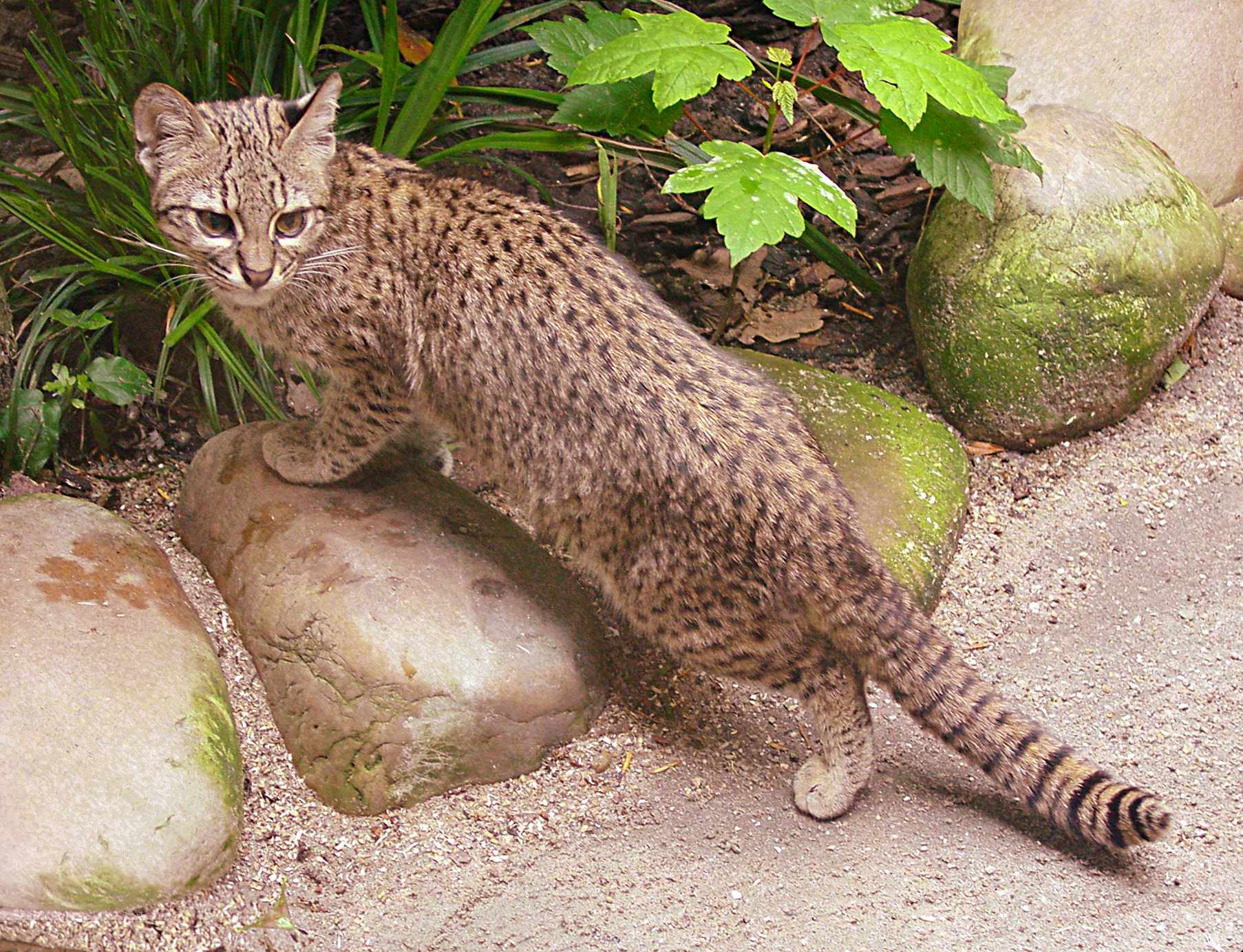









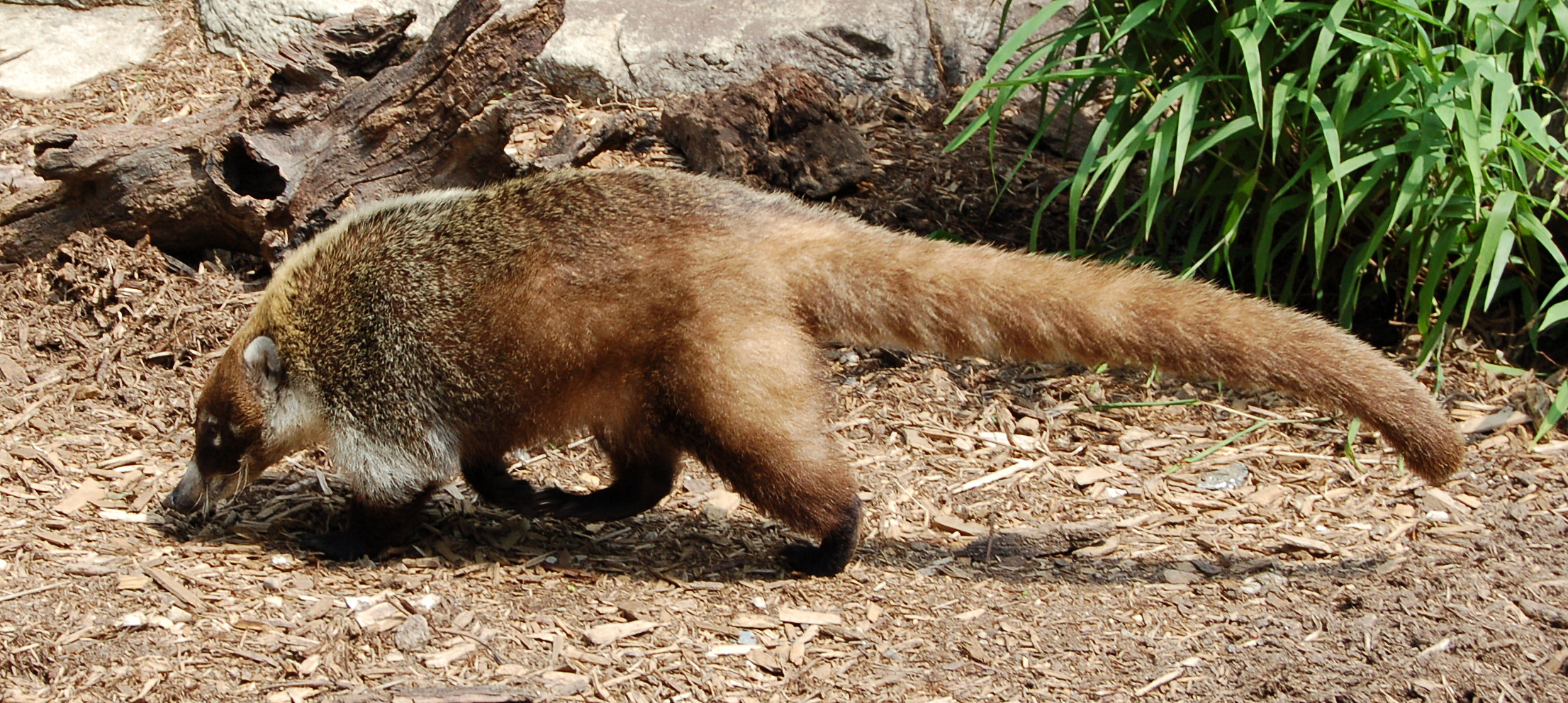
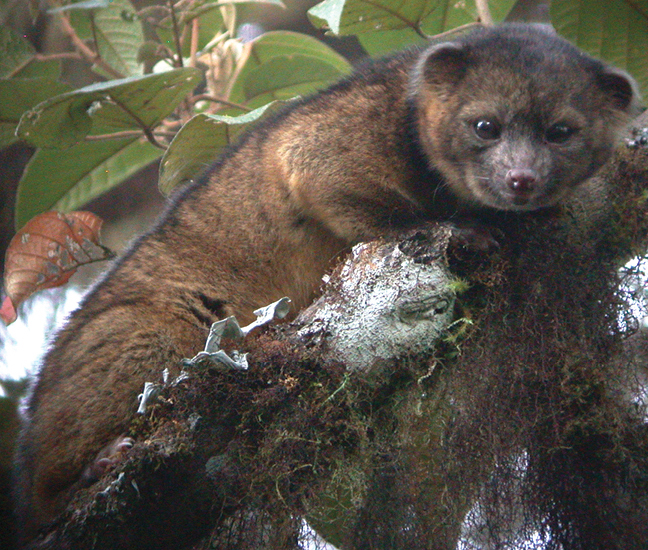

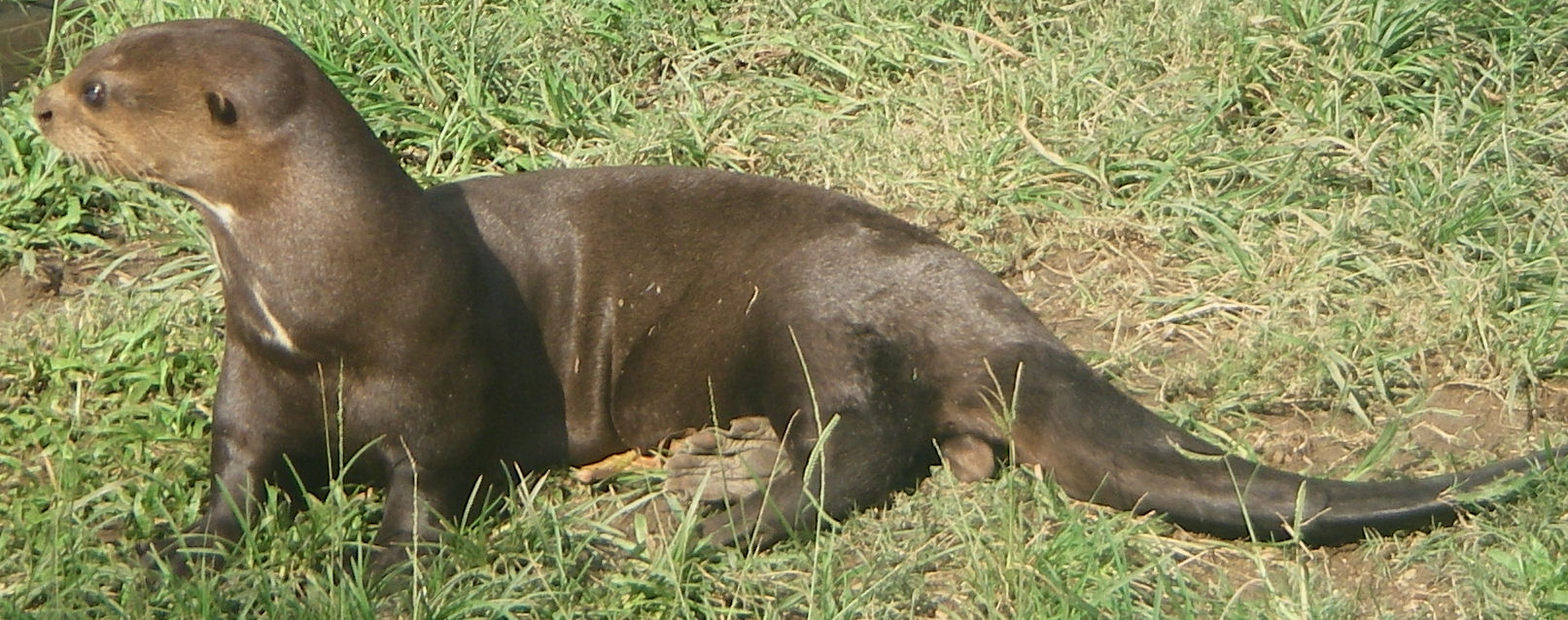
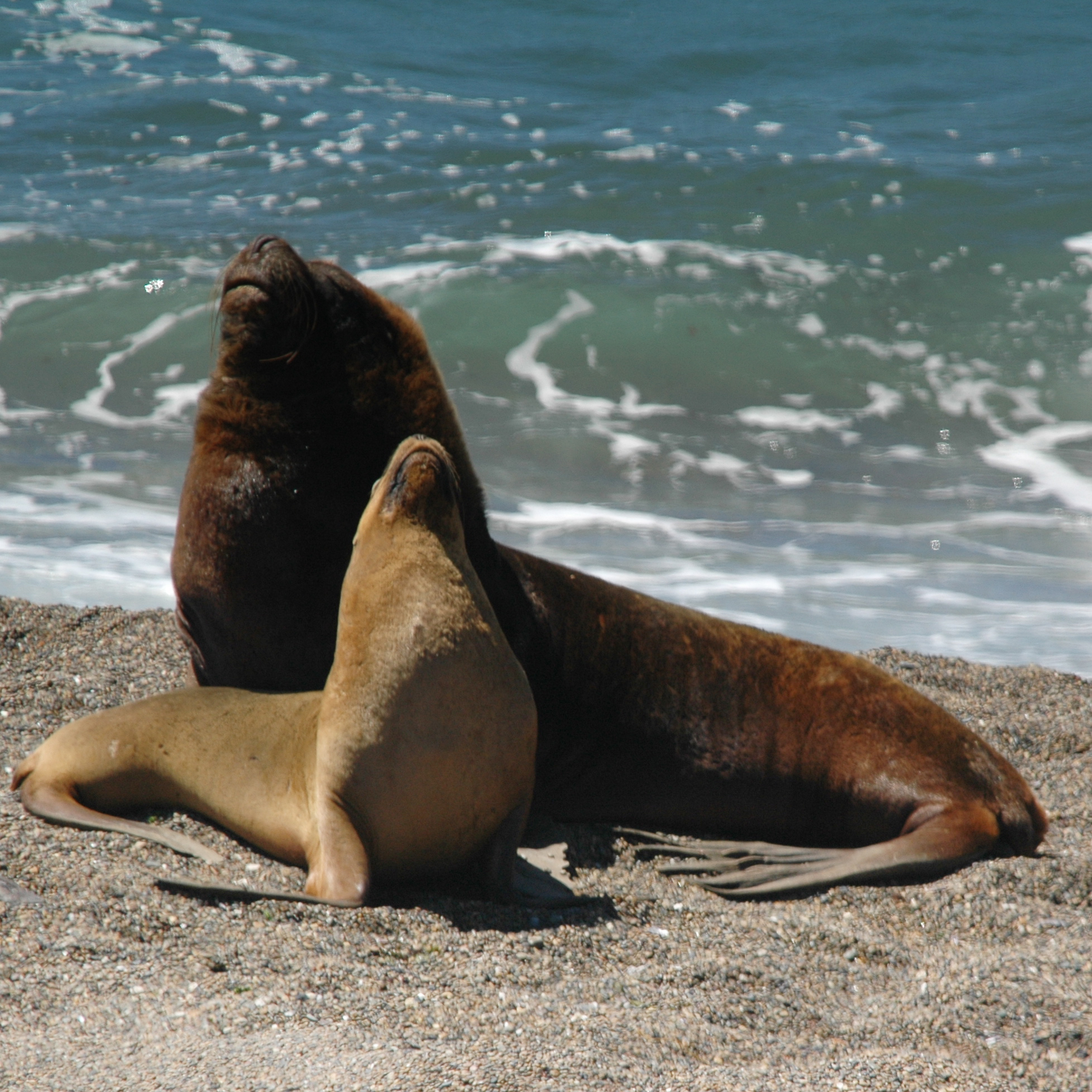 There are over 260 species of carnivorans, the majority of which feed primarily on meat. They have a characteristic skull shape and dentition. South America is notable for its diversity of canids, having Talk:Great American Interchange#Canid species/genera by continent, more genera than any other continent in spite of their relatively brief history there. South America's felid diversity is also List of mammals of North America#Carnivora, greater than that of North America north of Mexico, while its mustelid diversity is comparable and its mephitid and ursid diversities are lower. Its procyonid diversity is somewhat less than List of mammals of Central America#Order: Carnivora (carnivorans), that of Central America, the center of the family's recent evolution. The diversification of canids and felids in South America was partly a consequence of the inability of the continent's native Phorusrhacidae, avian and Sparassodonta, metatherian predators to compete effectively following the
There are over 260 species of carnivorans, the majority of which feed primarily on meat. They have a characteristic skull shape and dentition. South America is notable for its diversity of canids, having Talk:Great American Interchange#Canid species/genera by continent, more genera than any other continent in spite of their relatively brief history there. South America's felid diversity is also List of mammals of North America#Carnivora, greater than that of North America north of Mexico, while its mustelid diversity is comparable and its mephitid and ursid diversities are lower. Its procyonid diversity is somewhat less than List of mammals of Central America#Order: Carnivora (carnivorans), that of Central America, the center of the family's recent evolution. The diversification of canids and felids in South America was partly a consequence of the inability of the continent's native Phorusrhacidae, avian and Sparassodonta, metatherian predators to compete effectively following the

 The odd-toed ungulates are browsing and grazing mammals. They are usually large to very large, and have relatively simple stomachs and a large middle toe. Following the interchange with North America, South America's odd-toed ungulates included Equidae, equids of genus ''Equus (genus), Equus'' as well as tapirs. Equids died out in both North and South America around the time of the first arrival of humans, while tapirs died out in most of North America but survived in Central and South America. South America also once had a great diversity of Meridiungulata, ungulates of native origin, but these dwindled after the interchange with North America, and disappeared entirely following the arrival of humans. Sequencing of collagen from fossils of one recently extinct species each of notoungulates and litopterns has indicated that these orders comprise a sister group to the perissodactyls. If, as some evidence suggests, perissodactyls originated in India, both ungulate groups may have been of
The odd-toed ungulates are browsing and grazing mammals. They are usually large to very large, and have relatively simple stomachs and a large middle toe. Following the interchange with North America, South America's odd-toed ungulates included Equidae, equids of genus ''Equus (genus), Equus'' as well as tapirs. Equids died out in both North and South America around the time of the first arrival of humans, while tapirs died out in most of North America but survived in Central and South America. South America also once had a great diversity of Meridiungulata, ungulates of native origin, but these dwindled after the interchange with North America, and disappeared entirely following the arrival of humans. Sequencing of collagen from fossils of one recently extinct species each of notoungulates and litopterns has indicated that these orders comprise a sister group to the perissodactyls. If, as some evidence suggests, perissodactyls originated in India, both ungulate groups may have been of
 The weight of even-toed ungulates is borne about equally by the third and fourth toes, rather than mostly or entirely by the third as in perissodactyls. There are about 220 noncetacean artiodactyl species, including many that are of great economic importance to humans. South America's Talk:Great American Interchange#Cervid species/genera by continent, considerable cervid diversity belies their relatively recent arrival. The presence of camelids in South America but not North America today is ironic, given that they have a Camelid#Evolution, 45-million-year-long history in the latter continent (where they originated), and only a 3-million-year history in the former.
*Family: Tayassuidae (peccaries)
**Genus: ''Catagonus''
*** Chacoan peccary, ''Catagonus wagneri'' EN
**Genus: ''Dicotyles''
*** Collared peccary, ''Dicotyles tajacu'' LC
**Genus: ''Tayassu''
*** White-lipped peccary, ''Tayassu pecari'' VU
*Family: Camelidae (camels, llamas)
**Genus: ''Lama (genus), Lama''
*** Guanaco, ''Lama guanicoe'' LC
*** Vicuña, ''Lama vicugna'' LC
*Family: Cervidae (deer)
**Subfamily: Capreolinae
***Genus: ''Blastocerus''
**** Marsh deer, ''Blastocerus dichotomus'' VU
***Genus: ''Hippocamelus''
**** Taruca, ''Hippocamelus antisensis'' VU
**** South Andean deer, ''Hippocamelus bisulcus'' EN
***Genus: ''Brocket deer, Mazama''
**** Red brocket, ''Mazama americana'' DD
**** Small red brocket, ''Mazama bororo'' VU
**** Merida brocket, ''Mazama bricenii'' VU
**** Dwarf brocket, ''Mazama chunyi'' VU
**** Gray brocket, ''Mazama gouazoupira'' LC
**** Pygmy brocket, ''Mazama nana'' VU
**** Amazonian brown brocket, ''Mazama nemorivaga'' LC
**** Little red brocket, ''Mazama rufina'' VU
**** Central American red brocket, ''Mazama temama'' DD
***Genus: ''Odocoileus''
**** White-tailed deer, ''Odocoileus virginianus'' LC
***Genus: ''Ozotoceros''
**** Pampas deer, ''Ozotoceros bezoarticus'' NT
***Genus: ''Pudú''
**** Northern pudú, ''Pudu mephistophiles'' VU
**** Southern pudú, ''Pudu puda'' NT
**Subfamily: Cervinae
***Genus: ''Dama (genus), Dama''
**** European fallow deer, ''D. dama'' LC introduced
The weight of even-toed ungulates is borne about equally by the third and fourth toes, rather than mostly or entirely by the third as in perissodactyls. There are about 220 noncetacean artiodactyl species, including many that are of great economic importance to humans. South America's Talk:Great American Interchange#Cervid species/genera by continent, considerable cervid diversity belies their relatively recent arrival. The presence of camelids in South America but not North America today is ironic, given that they have a Camelid#Evolution, 45-million-year-long history in the latter continent (where they originated), and only a 3-million-year history in the former.
*Family: Tayassuidae (peccaries)
**Genus: ''Catagonus''
*** Chacoan peccary, ''Catagonus wagneri'' EN
**Genus: ''Dicotyles''
*** Collared peccary, ''Dicotyles tajacu'' LC
**Genus: ''Tayassu''
*** White-lipped peccary, ''Tayassu pecari'' VU
*Family: Camelidae (camels, llamas)
**Genus: ''Lama (genus), Lama''
*** Guanaco, ''Lama guanicoe'' LC
*** Vicuña, ''Lama vicugna'' LC
*Family: Cervidae (deer)
**Subfamily: Capreolinae
***Genus: ''Blastocerus''
**** Marsh deer, ''Blastocerus dichotomus'' VU
***Genus: ''Hippocamelus''
**** Taruca, ''Hippocamelus antisensis'' VU
**** South Andean deer, ''Hippocamelus bisulcus'' EN
***Genus: ''Brocket deer, Mazama''
**** Red brocket, ''Mazama americana'' DD
**** Small red brocket, ''Mazama bororo'' VU
**** Merida brocket, ''Mazama bricenii'' VU
**** Dwarf brocket, ''Mazama chunyi'' VU
**** Gray brocket, ''Mazama gouazoupira'' LC
**** Pygmy brocket, ''Mazama nana'' VU
**** Amazonian brown brocket, ''Mazama nemorivaga'' LC
**** Little red brocket, ''Mazama rufina'' VU
**** Central American red brocket, ''Mazama temama'' DD
***Genus: ''Odocoileus''
**** White-tailed deer, ''Odocoileus virginianus'' LC
***Genus: ''Ozotoceros''
**** Pampas deer, ''Ozotoceros bezoarticus'' NT
***Genus: ''Pudú''
**** Northern pudú, ''Pudu mephistophiles'' VU
**** Southern pudú, ''Pudu puda'' NT
**Subfamily: Cervinae
***Genus: ''Dama (genus), Dama''
**** European fallow deer, ''D. dama'' LC introduced








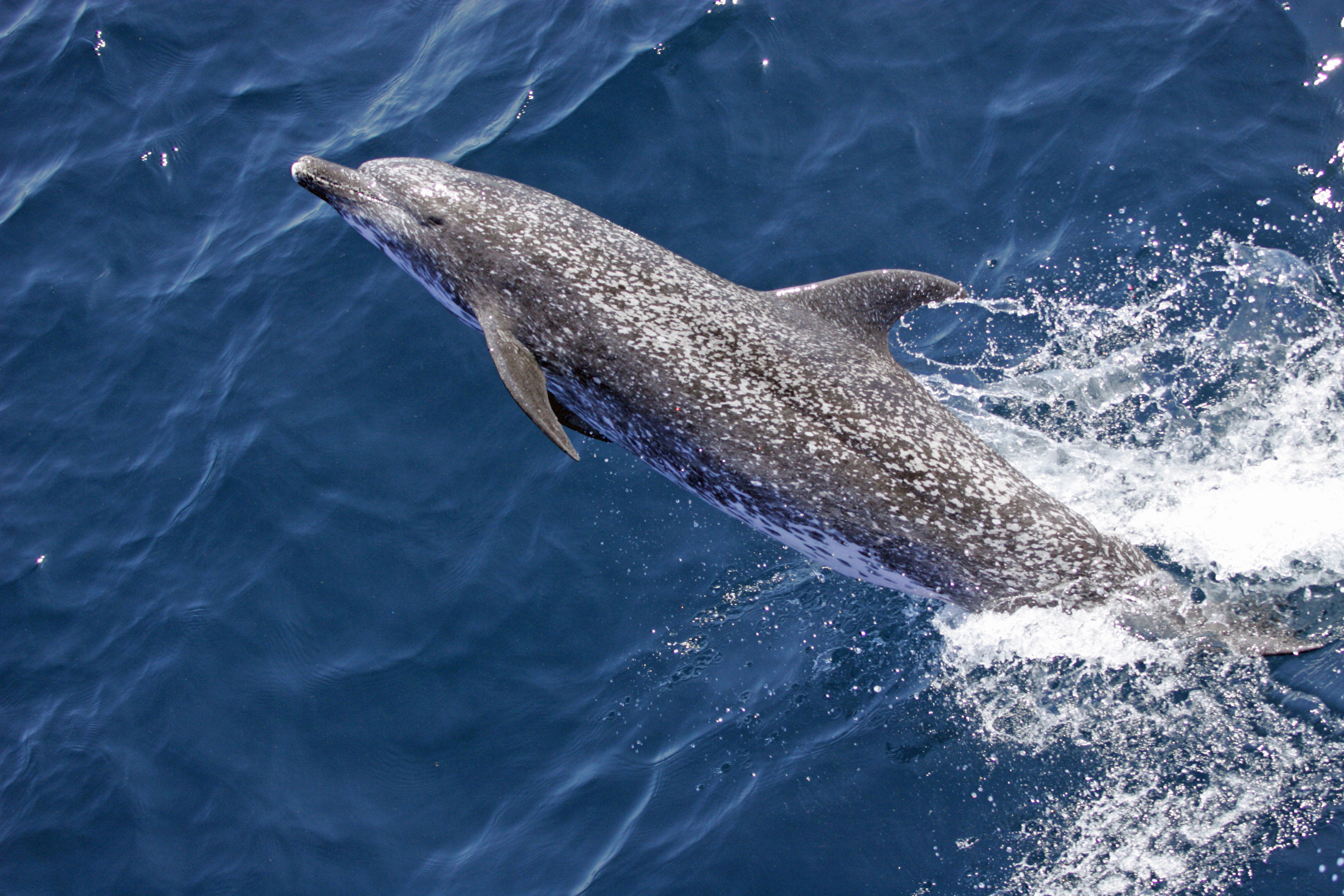
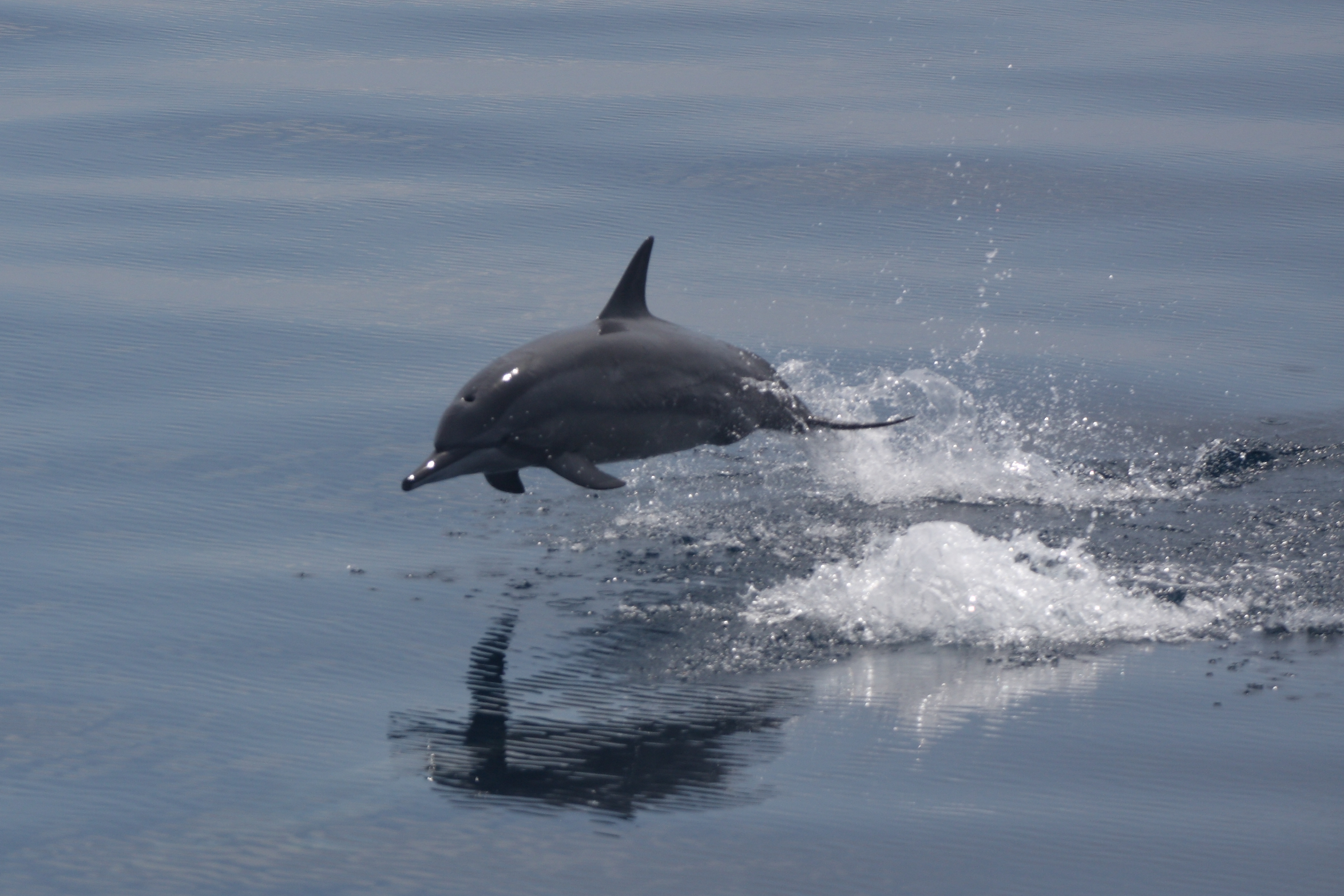




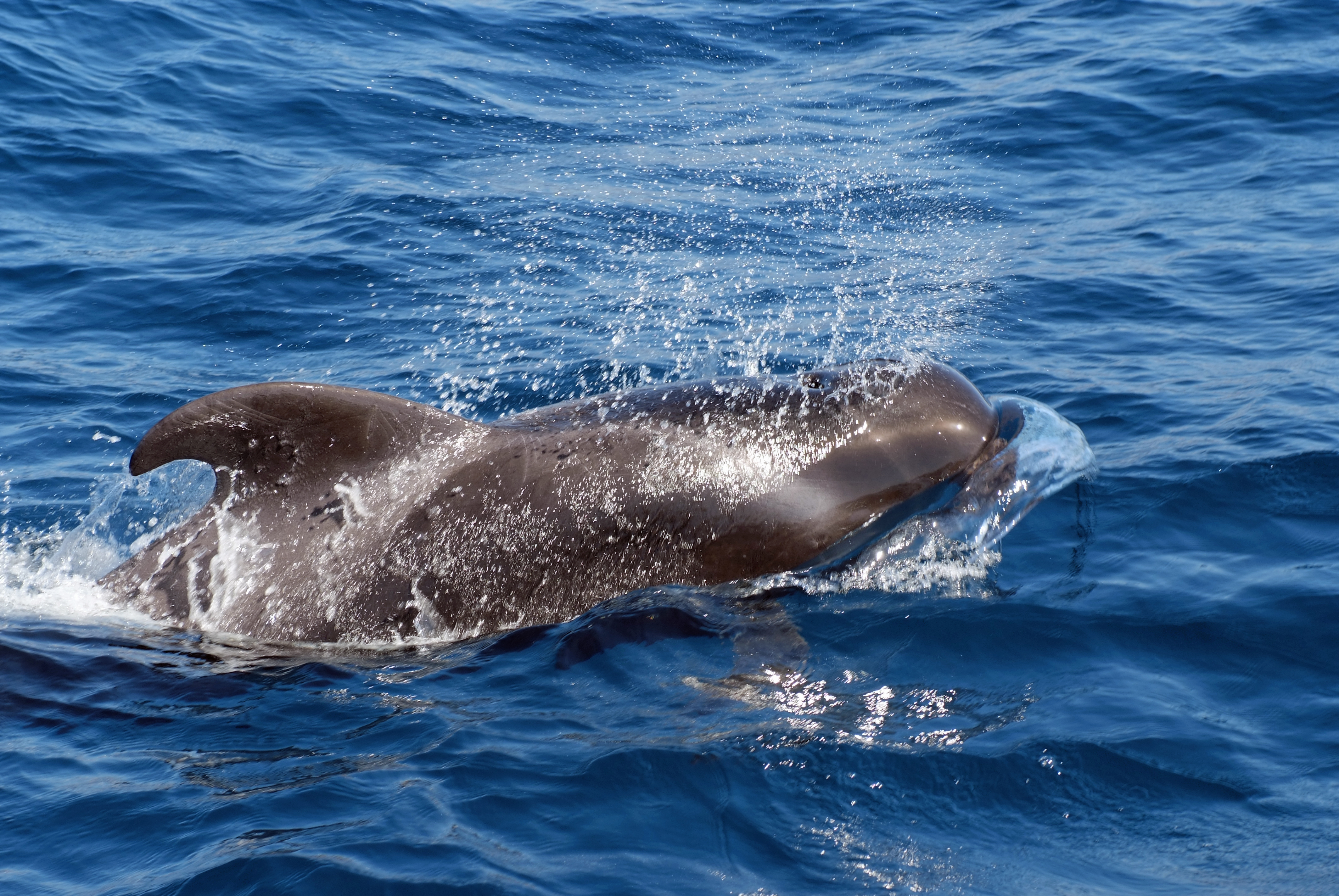
 The infraorder Cetacea includes whales, dolphins and porpoises. They are the mammals most fully aquatic adaptation, adapted to aquatic life with a spindle-shaped nearly hairless body, protected by a thick layer of blubber, and forelimbs and tail modified to provide propulsion underwater. Their closest extant relatives are the Hippopotamidae, hippos, which are artiodactyls, from which cetaceans descended; cetaceans are thus also artiodactyls.
*Parvorder: Mysticeti
**Family: Balaenidae (right whales)
***Genus: ''Eubalaena''
**** Southern right whale, ''Eubalaena australis'' LC
**Family: Balaenopteridae (rorquals)
***Subfamily: Balaenopterinae
****Genus: ''Balaenoptera''
***** Common minke whale, ''Balaenoptera acutorostrata'' LC
***** Antarctic minke whale, ''Balaenoptera bonaerensis'' NT
***** Sei whale, ''Balaenoptera borealis'' EN
***** Bryde's whale, ''Balaenoptera brydei'' NE
***** Blue whale, ''Balaenoptera musculus'' EN
***** Fin whale, ''Balaenoptera physalus'' VU
***Subfamily: Megapterinae
****Genus: ''Megaptera''
***** Humpback whale, ''Megaptera novaeangliae'' LC
**Family: Neobalaenidae
***Genus: ''Caperea''
**** Pygmy right whale, ''Caperea marginata'' LC
*Parvorder: Odontoceti
**Family: Physeteridae (sperm whales)
***Genus: ''Physeter''
**** Sperm whale, ''Physeter macrocephalus'' VU
**Family: Kogiidae (pygmy, dwarf sperm whales)
***Genus: ''Kogia''
**** Pygmy sperm whale, ''Kogia breviceps'' DD
**** Dwarf sperm whale, ''Kogia sima'' DD
**Family: Ziphidae (beaked whales)
***Genus: ''Ziphius''
**** Cuvier's beaked whale, ''Ziphius cavirostris'' LC
***Genus: ''Berardius''
**** Giant beaked whale, Arnoux's beaked whale, ''Berardius arnuxii'' DD
***Genus: ''Tasmacetus''
**** Shepherd's beaked whale, ''Tasmacetus shepherdi'' DD
***Subfamily: Hyperoodontinae
****Genus: ''Hyperoodon''
***** Southern bottlenose whale, ''Hyperoodon planifrons'' LC
****Genus: ''Mesoplodon''
***** Andrews' beaked whale, ''Mesoplodon bowdoini'' DD
***** Blainville's beaked whale, ''Mesoplodon densirostris'' DD
***** Gervais' beaked whale, ''Mesoplodon europaeus'' DD
***** Ginkgo-toothed beaked whale, ''Mesoplodon ginkgodens'' DD
***** Gray's beaked whale, ''Mesoplodon grayi'' DD
***** Hector's beaked whale, ''Mesoplodon hectori'' DD
***** Strap-toothed whale, ''Mesoplodon layardii'' DD
***** Pygmy beaked whale, ''Mesoplodon peruvianus'' DD
***** Spade-toothed whale, ''Mesoplodon traversii'' DD
**Superfamily: Inioidea (river dolphins)
***Family: Iniidae
****Genus: ''Inia''
***** Araguaian river dolphin, ''Inia araguaiaensis''
***** Amazon river dolphin, ''Inia geoffrensis'' EN
***** Bolivian river dolphin, ''Inia geoffrensis boliviensis''
***Family: Pontoporiidae
****Genus: ''La Plata dolphin, Pontoporia''
***** La Plata dolphin, ''Pontoporia blainvillei'' VU
**Superfamily: Delphinoidea
***Family: Phocoenidae (porpoises)
****Genus: ''Phocoena''
***** Spectacled porpoise, ''Phocoena dioptrica'' LC
***** Burmeister's porpoise, ''Phocoena spinipinnis'' NT
***Family: Delphinidae (marine dolphins)
****Genus: ''Cephalorhynchus''
***** Commerson's dolphin, ''Cephalorhynchus commersonii'' LC
***** Chilean dolphin, ''Cephalorhynchus eutropia'' NT
****Genus: ''Steno (genus), Steno''
***** Rough-toothed dolphin, ''Steno bredanensis'' LC
****Genus: ''Sotalia''
***** Tucuxi, ''Sotalia fluviatilis'' DD
***** Guiana dolphin, ''Sotalia guianensis'' NT
****Genus: ''Tursiops''
***** Common bottlenose dolphin, ''Tursiops truncatus'' LC
****Genus: ''Stenella''
***** Pantropical spotted dolphin, ''Stenella attenuata'' LC
***** Clymene dolphin, ''Stenella clymene'' LC
***** Striped dolphin, ''Stenella coeruleoalba'' LC
***** Atlantic spotted dolphin, ''Stenella frontalis'' LC
***** Spinner dolphin, ''Stenella longirostris'' LC
****Genus: ''Common dolphin, Delphinus''
***** Long-beaked common dolphin, ''Delphinus capensis'' DD
***** Short-beaked common dolphin, ''Delphinus delphis'' LC
****Genus: ''Lagenodelphis''
***** Fraser's dolphin, ''Lagenodelphis hosei'' LC
****Genus: Lagenorhynchus
***** Peale's dolphin, ''Lagenorhynchus australis'' DD
***** Hourglass dolphin, ''Lagenorhynchus cruciger'' LC
***** Dusky dolphin, ''Lagenorhynchus obscurus'' DD
****Genus: ''Lissodelphis''
***** Southern right whale dolphin, ''Lissodelphis peronii'' LC
****Genus: ''Risso's dolphin, Grampus''
***** Risso's dolphin, ''Grampus griseus'' LC
****Genus: ''Feresa''
***** Pygmy killer whale, ''Feresa attenuata'' LC
****Genus: ''Orcinus''
***** Orca, ''Orcinus orca'' DD
****Genus: ''Pseudorca''
***** False killer whale, ''Pseudorca crassidens'' NT
****Genus: ''Globicephala''
***** Short-finned pilot whale, ''Globicephala macrorhynchus'' LC
***** Long-finned pilot whale, ''Globicephala melas'' LC
****Genus: ''Peponocephala''
***** Melon-headed whale, ''Peponocephala electra'' LC
The infraorder Cetacea includes whales, dolphins and porpoises. They are the mammals most fully aquatic adaptation, adapted to aquatic life with a spindle-shaped nearly hairless body, protected by a thick layer of blubber, and forelimbs and tail modified to provide propulsion underwater. Their closest extant relatives are the Hippopotamidae, hippos, which are artiodactyls, from which cetaceans descended; cetaceans are thus also artiodactyls.
*Parvorder: Mysticeti
**Family: Balaenidae (right whales)
***Genus: ''Eubalaena''
**** Southern right whale, ''Eubalaena australis'' LC
**Family: Balaenopteridae (rorquals)
***Subfamily: Balaenopterinae
****Genus: ''Balaenoptera''
***** Common minke whale, ''Balaenoptera acutorostrata'' LC
***** Antarctic minke whale, ''Balaenoptera bonaerensis'' NT
***** Sei whale, ''Balaenoptera borealis'' EN
***** Bryde's whale, ''Balaenoptera brydei'' NE
***** Blue whale, ''Balaenoptera musculus'' EN
***** Fin whale, ''Balaenoptera physalus'' VU
***Subfamily: Megapterinae
****Genus: ''Megaptera''
***** Humpback whale, ''Megaptera novaeangliae'' LC
**Family: Neobalaenidae
***Genus: ''Caperea''
**** Pygmy right whale, ''Caperea marginata'' LC
*Parvorder: Odontoceti
**Family: Physeteridae (sperm whales)
***Genus: ''Physeter''
**** Sperm whale, ''Physeter macrocephalus'' VU
**Family: Kogiidae (pygmy, dwarf sperm whales)
***Genus: ''Kogia''
**** Pygmy sperm whale, ''Kogia breviceps'' DD
**** Dwarf sperm whale, ''Kogia sima'' DD
**Family: Ziphidae (beaked whales)
***Genus: ''Ziphius''
**** Cuvier's beaked whale, ''Ziphius cavirostris'' LC
***Genus: ''Berardius''
**** Giant beaked whale, Arnoux's beaked whale, ''Berardius arnuxii'' DD
***Genus: ''Tasmacetus''
**** Shepherd's beaked whale, ''Tasmacetus shepherdi'' DD
***Subfamily: Hyperoodontinae
****Genus: ''Hyperoodon''
***** Southern bottlenose whale, ''Hyperoodon planifrons'' LC
****Genus: ''Mesoplodon''
***** Andrews' beaked whale, ''Mesoplodon bowdoini'' DD
***** Blainville's beaked whale, ''Mesoplodon densirostris'' DD
***** Gervais' beaked whale, ''Mesoplodon europaeus'' DD
***** Ginkgo-toothed beaked whale, ''Mesoplodon ginkgodens'' DD
***** Gray's beaked whale, ''Mesoplodon grayi'' DD
***** Hector's beaked whale, ''Mesoplodon hectori'' DD
***** Strap-toothed whale, ''Mesoplodon layardii'' DD
***** Pygmy beaked whale, ''Mesoplodon peruvianus'' DD
***** Spade-toothed whale, ''Mesoplodon traversii'' DD
**Superfamily: Inioidea (river dolphins)
***Family: Iniidae
****Genus: ''Inia''
***** Araguaian river dolphin, ''Inia araguaiaensis''
***** Amazon river dolphin, ''Inia geoffrensis'' EN
***** Bolivian river dolphin, ''Inia geoffrensis boliviensis''
***Family: Pontoporiidae
****Genus: ''La Plata dolphin, Pontoporia''
***** La Plata dolphin, ''Pontoporia blainvillei'' VU
**Superfamily: Delphinoidea
***Family: Phocoenidae (porpoises)
****Genus: ''Phocoena''
***** Spectacled porpoise, ''Phocoena dioptrica'' LC
***** Burmeister's porpoise, ''Phocoena spinipinnis'' NT
***Family: Delphinidae (marine dolphins)
****Genus: ''Cephalorhynchus''
***** Commerson's dolphin, ''Cephalorhynchus commersonii'' LC
***** Chilean dolphin, ''Cephalorhynchus eutropia'' NT
****Genus: ''Steno (genus), Steno''
***** Rough-toothed dolphin, ''Steno bredanensis'' LC
****Genus: ''Sotalia''
***** Tucuxi, ''Sotalia fluviatilis'' DD
***** Guiana dolphin, ''Sotalia guianensis'' NT
****Genus: ''Tursiops''
***** Common bottlenose dolphin, ''Tursiops truncatus'' LC
****Genus: ''Stenella''
***** Pantropical spotted dolphin, ''Stenella attenuata'' LC
***** Clymene dolphin, ''Stenella clymene'' LC
***** Striped dolphin, ''Stenella coeruleoalba'' LC
***** Atlantic spotted dolphin, ''Stenella frontalis'' LC
***** Spinner dolphin, ''Stenella longirostris'' LC
****Genus: ''Common dolphin, Delphinus''
***** Long-beaked common dolphin, ''Delphinus capensis'' DD
***** Short-beaked common dolphin, ''Delphinus delphis'' LC
****Genus: ''Lagenodelphis''
***** Fraser's dolphin, ''Lagenodelphis hosei'' LC
****Genus: Lagenorhynchus
***** Peale's dolphin, ''Lagenorhynchus australis'' DD
***** Hourglass dolphin, ''Lagenorhynchus cruciger'' LC
***** Dusky dolphin, ''Lagenorhynchus obscurus'' DD
****Genus: ''Lissodelphis''
***** Southern right whale dolphin, ''Lissodelphis peronii'' LC
****Genus: ''Risso's dolphin, Grampus''
***** Risso's dolphin, ''Grampus griseus'' LC
****Genus: ''Feresa''
***** Pygmy killer whale, ''Feresa attenuata'' LC
****Genus: ''Orcinus''
***** Orca, ''Orcinus orca'' DD
****Genus: ''Pseudorca''
***** False killer whale, ''Pseudorca crassidens'' NT
****Genus: ''Globicephala''
***** Short-finned pilot whale, ''Globicephala macrorhynchus'' LC
***** Long-finned pilot whale, ''Globicephala melas'' LC
****Genus: ''Peponocephala''
***** Melon-headed whale, ''Peponocephala electra'' LC
Google books link
*
South America
South America is a continent entirely in the Western Hemisphere and mostly in the Southern Hemisphere, with a relatively small portion in the Northern Hemisphere at the northern tip of the continent. It can also be described as the southe ...
's terrestrial mammal
Mammals () are a group of vertebrate animals constituting the class Mammalia (), characterized by the presence of mammary glands which in females produce milk for feeding (nursing) their young, a neocortex (a region of the brain), fur or ...
s fall into three distinct groups: "old-timers", African immigrants and recent North American immigrants. The marsupial
Marsupials are any members of the mammalian infraclass Marsupialia. All extant marsupials are endemic to Australasia, Wallacea and the Americas. A distinctive characteristic common to most of these species is that the young are carried in a po ...
s and xenarthra
Xenarthra (; from Ancient Greek ξένος, xénos, "foreign, alien" + ἄρθρον, árthron, "joint") is a major clade of placental mammals native to the Americas. There are 31 living species: the anteaters, tree sloths, and armadillos. Ex ...
ns are "old-timers", their ancestors having been present on the continent since at least the very early Cenozoic
The Cenozoic ( ; ) is Earth's current geological era, representing the last 66million years of Earth's history. It is characterised by the dominance of mammals, birds and flowering plants, a cooling and drying climate, and the current configura ...
Era. During the early Cenozoic, South America's only land connection was to Antarctica
Antarctica () is Earth's southernmost and least-populated continent. Situated almost entirely south of the Antarctic Circle and surrounded by the Southern Ocean, it contains the geographic South Pole. Antarctica is the fifth-largest contine ...
, so it was effectively cut off from most of the world; as the fragments of Gondwana
Gondwana () was a large landmass, often referred to as a supercontinent, that formed during the late Neoproterozoic (about 550 million years ago) and began to break up during the Jurassic period (about 180 million years ago). The final stages ...
continued to separate, this connection was lost, leaving South America an island continent. Caviomorph rodents and monkeys
Monkey is a common name that may refer to most mammals of the infraorder Simiiformes, also known as the simians. Traditionally, all animals in the group now known as simians are counted as monkeys except the apes, which constitutes an incomple ...
arrived as "waif dispersers" by rafting across the Atlantic
The Atlantic Ocean is the second-largest of the world's five oceans, with an area of about . It covers approximately 20% of Earth's surface and about 29% of its water surface area. It is known to separate the " Old World" of Africa, Europe an ...
from Africa in the Eocene
The Eocene ( ) Epoch is a geological epoch (geology), epoch that lasted from about 56 to 33.9 million years ago (mya). It is the second epoch of the Paleogene Period (geology), Period in the modern Cenozoic Era (geology), Era. The name ''Eocene' ...
epoch, 35 million or more years ago. All the remaining nonflying mammals of South America are recent arrivals, having migrated from North America via Central America
Central America ( es, América Central or ) is a subregion of the Americas. Its boundaries are defined as bordering the United States to the north, Colombia to the south, the Caribbean Sea to the east, and the Pacific Ocean to the west. ...
during the past seven million years as part of the Great American Interchange
The Great American Biotic Interchange (commonly abbreviated as GABI), also known as the Great American Interchange and the Great American Faunal Interchange, was an important late Cenozoic paleozoogeographic biotic interchange event in which lan ...
; this invasion, which peaked around three million years ago, was made possible when the formation of the volcanic Isthmus of Panama
The Isthmus of Panama ( es, Istmo de Panamá), also historically known as the Isthmus of Darien (), is the narrow strip of land that lies between the Caribbean Sea and the Pacific Ocean, linking North and South America. It contains the country ...
bridged North and South America. The newcomers out-competed and drove to extinction
Extinction is the termination of a kind of organism or of a group of kinds (taxon), usually a species. The moment of extinction is generally considered to be the death of the last individual of the species, although the capacity to breed and ...
many mammals that had evolved during South America's long period of isolation, as well as some species from other classes (e.g., terror birds
Phorusrhacids, colloquially known as terror birds, are an extinct clade of large carnivorous flightless birds that were one of the largest species of apex predators in South America during the Cenozoic era; their conventionally accepted tempor ...
).
South America suffered another major loss of mammal species in the Quaternary extinction event
The Quaternary period (from 2.588 ± 0.005 million years ago to the present) has seen the extinctions of numerous predominantly megafaunal species, which have resulted in a collapse in faunal density and diversity and the extinction of key ecolog ...
, which started around 12,500 cal BP
Before Present (BP) years, or "years before present", is a time scale used mainly in archaeology, geology and other scientific disciplines to specify when events occurred relative to the origin of practical radiocarbon dating in the 1950s. Becau ...
, at roughly the time of arrival of Paleoindians, and may have lasted up to several thousand years. At least 37 genera of mammals were eliminated, including most of the megafauna
In terrestrial zoology, the megafauna (from Greek μέγας ''megas'' "large" and New Latin ''fauna'' "animal life") comprises the large or giant animals of an area, habitat, or geological period, extinct and/or extant. The most common threshold ...
. While South America currently has no megaherbivore species weighing more than 1000 kg, prior to this event it had a menagerie of about 25 of them (consisting of gomphothere
Gomphotheres are any members of the diverse, extinct taxonomic family Gomphotheriidae. Gomphotheres were elephant-like proboscideans, but do not belong to the family Elephantidae. They were widespread across Afro-Eurasia and North America during ...
s, camelid
Camelids are members of the biological family Camelidae, the only currently living family in the suborder Tylopoda. The seven extant members of this group are: dromedary camels, Bactrian camels, wild Bactrian camels, llamas, alpacas, vicuñas, ...
s, ground sloth
Ground sloths are a diverse group of extinct sloths in the mammalian superorder Xenarthra. The term is used to refer to all extinct sloths because of the large size of the earliest forms discovered, compared to existing tree sloths. The Caribbe ...
s, glyptodont
Glyptodonts are an extinct subfamily of large, heavily armoured armadillos. They arose in South America around 48 million years ago and spread to southern North America after the continents became connected several million years ago. The best-kn ...
s, and toxodontids – 75% of these being "old-timers"), dwarfing Africa's present and recent total of 6.
Anthropogenic climate change
In common usage, climate change describes global warming—the ongoing increase in global average temperature—and its effects on Earth's climate system. Climate change in a broader sense also includes previous long-term changes to E ...
and the damage to its ecosystem
An ecosystem (or ecological system) consists of all the organisms and the physical environment with which they interact. These biotic and abiotic components are linked together through nutrient cycles and energy flows. Energy enters the syste ...
s resulting from the rapid recent growth of the human population pose a further threat to South America's biodiversity
Biodiversity or biological diversity is the variety and variability of life on Earth. Biodiversity is a measure of variation at the genetic (''genetic variability''), species (''species diversity''), and ecosystem (''ecosystem diversity'') l ...
.
The list consists of those species found in the nations or overseas territories
A territory is an area of land, sea, or space, particularly belonging or connected to a country, person, or animal.
In international politics, a territory is usually either the total area from which a state may extract power resources or an ...
of continental South America (including their island possessions, such as the Galápagos), as well as in Trinidad and Tobago
Trinidad and Tobago (, ), officially the Republic of Trinidad and Tobago, is the southernmost island country in the Caribbean. Consisting of the main islands Trinidad and Tobago, and numerous much smaller islands, it is situated south of ...
and the Falkland Islands
The Falkland Islands (; es, Islas Malvinas, link=no ) is an archipelago in the South Atlantic Ocean on the Patagonian Shelf. The principal islands are about east of South America's southern Patagonian coast and about from Cape Dubouzet ...
; Panama
Panama ( , ; es, link=no, Panamá ), officially the Republic of Panama ( es, República de Panamá), is a transcontinental country spanning the southern part of North America and the northern part of South America. It is bordered by Cos ...
is not included. As of May 2012, the list contains 1,331 species, 340 genera, 62 families and 15 orders. Of the taxa from nonflying, nonmarine groups (992 species, 230 genera, 40 families and 12 orders), "old-timers" comprise 14% of species, 15% of genera, 20% of families and 42% of orders; African immigrants make up 38% of species, 30% of genera, 40% of families and 17% of orders; North American invaders constitute 49% of species 55% of genera, 40% of families and 50% of orders. At the order level, the "old-timers" are overrepresented because of their ancient local origins, while the African immigrants are underrepresented because of their "sweepstakes" mode of dispersal.
Of the species, 9 are extinct, 29 are critically endangered, 64 are endangered, 111 are vulnerable, 64 are near threatened, and 255 are data deficient. Mammal species presumed extinct since AD 1500 (nine or ten cases) are included. Domestic species (e.g., the guinea pig
The guinea pig or domestic guinea pig (''Cavia porcellus''), also known as the cavy or domestic cavy (), is a species of rodent belonging to the genus ''Cavia'' in the family Caviidae. Breeders tend to use the word ''cavy'' to describe the ani ...
, alpaca
The alpaca (''Lama pacos'') is a species of South American camelid mammal. It is similar to, and often confused with, the llama. However, alpacas are often noticeably smaller than llamas. The two animals are closely related and can successfu ...
, and llama
The llama (; ) (''Lama glama'') is a domesticated South American camelid, widely used as a List of meat animals, meat and pack animal by Inca empire, Andean cultures since the Pre-Columbian era.
Llamas are social animals and live with othe ...
) and introduced species
An introduced species, alien species, exotic species, adventive species, immigrant species, foreign species, non-indigenous species, or non-native species is a species living outside its native distributional range, but which has arrived there ...
are not listed.
Note: This list is inevitably incomplete, since new species are continually being recognized via discovery or reclassification. Places to check for missing species include the list of mammals described in the 2000s
Although the mammals are well studied in comparison to other animal groups, a number of new species are still being discovered. This list includes Extant taxon, extant mammal species discovered, formally named, or brought to public light in the ye ...
, and the species listings in the articles for mammalian genera, especially those of small mammals such as rodents or bats.
The following tags are used to highlight each species' conservation status as assessed by the International Union for Conservation of Nature
The International Union for Conservation of Nature (IUCN; officially International Union for Conservation of Nature and Natural Resources) is an international organization working in the field of nature conservation and sustainable use of natu ...
; those on the left are used here, those in the second column in some other articles:
The IUCN status of all listed species except bats was last updated between March and June 2009; bats were updated in September 2009.
Subclass:
Theria
Theria (; Greek: , wild beast) is a subclass of mammals amongst the Theriiformes. Theria includes the eutherians (including the placental mammals) and the metatherians (including the marsupials) but excludes the egg-laying monotremes.
Ch ...

















Infraclass:
Metatheria
Metatheria is a mammalian clade that includes all mammals more closely related to marsupials than to placentals. First proposed by Thomas Henry Huxley in 1880, it is a more inclusive group than the marsupials; it contains all marsupials as well ...
The infraclass
In biological classification, class ( la, classis) is a taxonomic rank, as well as a taxonomic unit, a taxon, in that rank. It is a group of related taxonomic orders. Other well-known ranks in descending order of size are life, domain, kingdo ...
Metatheria includes all living and extinct marsupials, but also includes some related extinct orders of mammals that are no longer considered marsupials, such as Sparassodonta
Sparassodonta (from Ancient Greek, Greek to tear, rend; and , gen.
. At least six families of sparassodonts lived in South America prior to the interchange, dominating the niches for large mammalian carnivores.
, '
The comma is a punctuation mark that appears in several variants in different languages. It has the same shape as an apostrophe or single closing quotation mark () in many typefaces, but it differs from them in being placed on the baseline ...
tooth) is an extinct order (biology), order of carnivore, carnivorous metatherian mammals native to South America, related to modern marsupials. They were once con ...Marsupial
Marsupials are any members of the mammalian infraclass Marsupialia. All extant marsupials are endemic to Australasia, Wallacea and the Americas. A distinctive characteristic common to most of these species is that the young are carried in a po ...
s are a collection of pouched mammals that was once more widely distributed. Today they are found primarily in isolated or formerly isolated continents of Gondwana
Gondwana () was a large landmass, often referred to as a supercontinent, that formed during the late Neoproterozoic (about 550 million years ago) and began to break up during the Jurassic period (about 180 million years ago). The final stages ...
n origin. South America's 22 extant genera compares with 10 in Central America, 1 in North America north of Mexico, 52 in Australia, 28 in New Guinea and 2 in Sulawesi. South American marsupials are thought to be ancestral to those of Australasia
Australasia is a region that comprises Australia, New Zealand and some neighbouring islands in the Pacific Ocean. The term is used in a number of different contexts, including geopolitically, physiogeographically, philologically, and ecologica ...
.
Superorder:
Ameridelphia
Ameridelphia is traditionally a superorder that includes all marsupials living in the Americas except for the Monito del monte (''Dromiciops''). It is now regarded as a paraphyletic group.
Orders
The orders within this group are listed below:
* ...
= Order: Didelphimorphia (common opossums)
= ---- Didelphimorphia is the order of common opossums of theWestern Hemisphere
The Western Hemisphere is the half of the planet Earth that lies west of the prime meridian (which crosses Greenwich, London, United Kingdom) and east of the antimeridian. The other half is called the Eastern Hemisphere. Politically, the term We ...
. Opossums probably diverged from the basic South America
South America is a continent entirely in the Western Hemisphere and mostly in the Southern Hemisphere, with a relatively small portion in the Northern Hemisphere at the northern tip of the continent. It can also be described as the southe ...
n marsupial
Marsupials are any members of the mammalian infraclass Marsupialia. All extant marsupials are endemic to Australasia, Wallacea and the Americas. A distinctive characteristic common to most of these species is that the young are carried in a po ...
s in the late Cretaceous
The Cretaceous ( ) is a geological period that lasted from about 145 to 66 million years ago (Mya). It is the third and final period of the Mesozoic Era, as well as the longest. At around 79 million years, it is the longest geological period of th ...
or early Paleocene
The Paleocene, ( ) or Palaeocene, is a geological epoch (geology), epoch that lasted from about 66 to 56 mya (unit), million years ago (mya). It is the first epoch of the Paleogene Period (geology), Period in the modern Cenozoic Era (geology), E ...
. They are small to medium-sized marsupials, about the size of a large house cat
The cat (''Felis catus'') is a domestic species of small carnivorous mammal. It is the only domesticated species in the family Felidae and is commonly referred to as the domestic cat or house cat to distinguish it from the wild members of ...
, with a long snout and prehensile tail
A prehensile tail is the tail of an animal that has adapted to grasp or hold objects. Fully prehensile tails can be used to hold and manipulate objects, and in particular to aid arboreal creatures in finding and eating food in the trees. If the ta ...
.
*Family: Didelphidae (American opossums)
**Subfamily: Caluromyinae
Caluromyinae is a subfamily of opossums. It includes the extant genera '' Caluromys'' and ''Caluromysiops'', as well as the extinct '' Pachybiotherium''. Until recently, the genus ''Glironia'' was also included. It has sometimes been classed as a ...
***Genus: '' Caluromys''
**** Derby's woolly opossum
Derby's woolly opossum (''Caluromys derbianus''), or the Central American woolly opossum, is an opossum found in deciduous and moist evergreen forests of Central America, from southern Mexico to western Ecuador and Colombia. It was first describ ...
, ''C. derbianus'' LC
**** Brown-eared woolly opossum
The brown-eared woolly opossum (''Caluromys lanatus''), also known as the western woolly opossum, is an opossum from South America. It was first described by German naturalist Ignaz von Olfers in 1818. The opossum is characterized by a brown to ...
, ''C. lanatus'' LC
**** Bare-tailed woolly opossum
The bare-tailed woolly opossum (''Caluromys philander'') is an opossum from South America. It was first described by Swedish zoologist Carl Linnaeus in 1758. The bare-tailed woolly opossum is characterized by a gray head, brown to gray coat, ora ...
, ''C. philander'' LC
***Genus: ''Caluromysiops
The black-shouldered opossum (''Caluromysiops irrupta''), also known as the white-eared opossum, is an opossum known from western Brazil and southeastern Peru. It was first described by Colin Campbell Sanborn, curator of Field Museum of Natural ...
''
**** Black-shouldered opossum
The black-shouldered opossum (''Caluromysiops irrupta''), also known as the white-eared opossum, is an opossum known from western Brazil and southeastern Peru. It was first described by Colin Campbell Sanborn, curator of Field Museum of Natur ...
, ''Caluromysiops irrupta'' LC
**Subfamily: Glironiinae
The bushy-tailed opossum (''Glironia venusta'') is an opossum from South America. It was first described by English zoologist Oldfield Thomas in 1912. It is a medium-sized opossum characterized by a large, oval, dark ears, fawn to cinnamon co ...
***Genus: ''Glironia
The bushy-tailed opossum (''Glironia venusta'') is an opossum from South America. It was first described by English zoologist Oldfield Thomas in 1912. It is a medium-sized opossum characterized by a large, oval, dark ears, fawn to cinnamon coat ...
''
**** Bushy-tailed opossum
The bushy-tailed opossum (''Glironia venusta'') is an opossum from South America. It was first described by English zoologist Oldfield Thomas in 1912. It is a medium-sized opossum characterized by a large, oval, dark ears, fawn to cinnamon co ...
, ''Glironia venusta'' LC
**Subfamily: Hyladelphinae
***Genus: ''Hyladelphys
Kalinowski's mouse opossum or the Peru gracile mouse opossum (''Hyladelphys kalinowskii'') is a species of opossum in the family Didelphidae. It is found in Brazil, French Guiana, Guyana, and Peru. Its natural habitat is subtropical or tropic ...
''
**** Kalinowski's mouse opossum, ''Hyladelphys kalinowskii'' LC
**Subfamily: Didelphinae
The Didelphinae are a subfamily of opossums consisting of 15 genera and 123 species. Specimens have been collected throughout the Americas, but are predominant in South and Central America.
Some sources call this subfamily the "American opossu ...
*** Genus ''Chacodelphys
The Chacoan pygmy opossum (''Chacodelphys formosa'') is a recently described genus and species of didelphimorph marsupial. The only species in ''Chacodelphys'', ''C. formosa'', was known until 2004 from only one specimen collected in 1920 in the ...
''
**** Chacoan pygmy opossum, ''Chacodelphys formosa'' VU
***Genus: ''Chironectes
The water opossum (''Chironectes minimus''), also locally known as the yapok (), is a marsupial of the family Didelphidae.* It is the only living member of its genus, ''Chironectes''. This semiaquatic creature is found in and near freshwater ...
''
**** Water opossum
The water opossum (''Chironectes minimus''), also locally known as the yapok (), is a marsupial of the family Didelphidae.* It is the only living member of its genus, ''Chironectes''. This semiaquatic creature is found in and near freshwater ...
, ''Chironectes minimus'' LC
*** Genus ''Cryptonanus
''Cryptonanus'' is a genus of opossums from South America. It includes five species found from Bolivia to Uruguay and eastern Brazil, one of which is now extinct. Although the first species were discovered in 1931, the genus was not recognized as ...
''
**** Agricola's gracile opossum, ''Cryptonanus agricolai'' DD
**** Chacoan gracile opossum, ''Cryptonanus chacoensis'' LC
**** Guahiba gracile opossum, ''Cryptonanus guahybae'' DD
**** Red-bellied gracile opossum, ''Cryptonanus ignitus'' EX
**** Unduavi gracile opossum, ''Cryptonanus unduaviensis'' DD
***Genus: ''Didelphis
''Didelphis'' is a genus of New World marsupials. The six species in the genus ''Didelphis'', commonly known as Large American opossums, are members of the ''opossum'' order, Didelphimorphia.
The genus ''Didelphis'' is composed of cat-sized ...
''
**** White-eared opossum
The white-eared opossum (''Didelphis albiventris''), known as the timbu in Brazil and comadreja overa in Argentina, is an opossum species found in Argentina, Bolivia, Brazil, Paraguay, and Uruguay. It is a terrestrial and, sometimes, arboreal a ...
, ''Didelphis albiventris'' LC
**** Big-eared opossum
The big-eared opossum (''Didelphis aurita'') also known as a saruê is an opossum species from South America. It is found in Argentina, Brazil and Paraguay.
This species, which was considered a population of the common opossum
The common ...
, ''Didelphis aurita'' LC
**** Guianan white-eared opossum
The Guianan white-eared opossum (''Didelphis imperfecta'') is an opossum species from South America. It is found in Brazil, Suriname, French Guiana and Venezuela
Venezuela (; ), officially the Bolivarian Republic of Venezuela ( es, link ...
, ''Didelphis imperfecta'' LC
**** Common opossum
The common opossum (''Didelphis marsupialis''), also called the southern or black-eared opossum or gambá, and sometimes called a possum, is a marsupial species living from the northeast of Mexico to Bolivia (reaching the coast of the South Pac ...
, ''Didelphis marsupialis'' LC
**** Andean white-eared opossum, ''Didelphis pernigra'' LC
***Genus: ''Gracilinanus
''Gracilinanus'' is a genus of opossum in the family Didelphidae. It was separated from the genus ''Marmosa'' in 1989, and has since had the genera ''Cryptonanus'', ''Chacodelphys'', and ''Hyladelphys'' removed from it.
Physical description ...
''
**** Aceramarca gracile opossum, ''Gracilinanus aceramarcae'' LC
**** Agile gracile opossum
The agile gracile opossum (''Gracilinanus agilis''), is an opossum species from South America. It is found in Argentina, Bolivia, Brazil, Colombia, Peru, Paraguay, and Uruguay.
It is nocturnal, arboreal and frequents the forest understory, ...
, ''Gracilinanus agilis'' LC
**** Wood sprite gracile opossum
The wood sprite gracile opossum (''Gracilinanus dryas'') is a mammal. It is a species of opossum in the family Didelphidae. It is found in Colombia and Venezuela. Its natural habitat is subtropical or tropical moist lowland forests. It is thre ...
, ''Gracilinanus dryas'' NT
**** Emilia's gracile opossum, ''Gracilinanus emiliae'' DD
**** Northern gracile opossum
The northern gracile opossum (''Gracilinanus marica'') is a species of opossum in the family Didelphidae. It is found in Colombia and Venezuela. Its natural habitat is subtropical or tropical moist lowland forest
A forest is an area of ...
, ''Gracilinanus marica'' LC
**** Brazilian gracile opossum
The Brazilian gracile opossum (''Gracilinanus microtarsus'') is a species of small opossum from Brazil.
Description
Brazilian gracile opossums are relatively small opossums, with males ranging from and females from in head-body length. The tai ...
, ''Gracilinanus microtarsus'' LC
***Genus: '' Lestodelphys''
**** Patagonian opossum
The Patagonian opossum ''(Lestodelphys halli)'' is the sole species in genus ''Lestodelphys''.
Distribution
The Patagonian opossum occurs further south, in Argentina, than any other living marsupial. Although distributed throughout some parts of ...
, ''Lestodelphys halli'' LC
***Genus: ''Lutreolina
''Lutreolina'' is a genus of opossum found in South America. Both extant species in this genus are known as lutrine opossums. They have an otter-like body plan and occasionally semiaquatic tendencies, hence the genus name ''Lutreolina'', which is ...
''
**** Big lutrine opossum
The big lutrine opossum (''Lutreolina crassicaudata''), also known as the little water opossum, comadreja colorada, thick-tailed opossum, or coligrueso is an opossum species from South America in the genus ''Lutreolina''.
Description
The big ...
, ''Lutreolina crassicaudata'' LC
**** Massoia's lutrine opossum, ''Lutreolina massoia'' LC
***Genus: ''Marmosa
The 27 species in the genus ''Marmosa'' are relatively small Neotropical members of the family Didelphidae. This genus is one of three that are known as mouse opossums. The others are '' Thylamys'' (the "fat-tailed mouse opossums") and '' Tlacua ...
''
****Subgenus: ''Eomarmosa''
***** Red mouse opossum
The red mouse opossum (''Marmosa rubra'') is a South American marsupial of the family Didelphidae. Its range includes eastern Ecuador and Peru
, image_flag = Flag of Peru.svg
, image_coat = Escudo nacional del Per ...
, ''Marmosa rubra'' DD
****Subgenus: ''Exulomarmosa''
***** Isthmian mouse opossum
The Isthmian mouse opossum (''Marmosa isthmica'') is a species of opossum in the family Didelphidae found in Colombia, Ecuador, and Panama.Fiona A. Reid, ''A field guide to the mammals of Central America & Southeast Mexico'' (OUP USA, 2009)p. ...
, ''Marmosa isthmica''
***** Robinson's mouse opossum
Robinson's mouse opossum (''Marmosa robinsoni'') is a species of opossum in the family Didelphidae. It is found in Belize, Colombia, Ecuador, Grenada, Honduras, Panama, Peru, Trinidad and Tobago, and Venezuela.
Robinson's mouse opossums mov ...
, ''Marmosa robinsoni'' LC
***** ''Marmosa simonsi
The 27 species in the genus ''Marmosa'' are relatively small Neotropical members of the family Didelphidae. This genus is one of three that are known as mouse opossums. The others are '' Thylamys'' (the "fat-tailed mouse opossums") and '' Tlacua ...
''
***** Guajira mouse opossum, ''Marmosa xerophila'' VU
***** ''Marmosa zeledoni
The 27 species in the genus ''Marmosa'' are relatively small Neotropical members of the family Didelphidae. This genus is one of three that are known as mouse opossums. The others are '' Thylamys'' (the "fat-tailed mouse opossums") and '' Tlacua ...
''
****Subgenus: ''Marmosa''
***** Quechuan mouse opossum, ''Marmosa macrotarsus'' LC
***** Linnaeus's mouse opossum
Linnaeus's mouse opossum (''Marmosa murina''), also known as the common or murine mouse opossum, is a South American marsupial of the family Didelphidae.
Range and habitat
Its range includes Colombia, Mexico, Venezuela, Trinidad and Tobago, ...
, ''Marmosa murina'' LC
***** Tyler's mouse opossum, ''Marmosa tyleriana'' DD
***** ''Marmosa waterhousei
The 27 species in the genus ''Marmosa'' are relatively small Neotropical members of the family Didelphidae. This genus is one of three that are known as mouse opossums. The others are ''Thylamys'' (the "fat-tailed mouse opossums") and ''Tlacuatz ...
''
****Subgenus: '' Micoureus''
***** Alston's mouse opossum
Alston's mouse opossum (''Marmosa alstoni''), also known as Alston's opossum, is a medium-sized pouchless marsupial of the family Didelphidae. It is arboreal and nocturnal, inhabiting forests from Belize to northern Colombia. The main compone ...
, ''Marmosa alstoni'' LC
***** White-bellied woolly mouse opossum
The white-bellied woolly mouse opossum (''Marmosa constantiae'') is a small pouchless marsupial of the family Didelphidae. It was formerly assigned to the genus '' Micoureus'', which was made a subgenus of ''Marmosa'' in 2009. The specific epith ...
, ''Marmosa constantiae'' LC
***** Woolly mouse opossum
The woolly mouse opossum or long-furred woolly mouse opossum (''Marmosa demerarae''), known locally as the ''cuíca'', is a South American marsupial of the family Didelphidae. Its range includes central Colombia, Venezuela, French Guiana, Guyana ...
, ''Marmosa demerarae'' LC
***** Tate's woolly mouse opossum, ''Marmosa paraguayana'' LC
***** Little woolly mouse opossum, ''Marmosa phaea'' VU
***** Bare-tailed woolly mouse opossum
The bare-tailed woolly mouse opossum (''Marmosa regina'') or short-furred woolly mouse opossum is a South American marsupial of the family Didelphidae. Its range includes Brazil, Colombia, Ecuador, Peru, and Bolivia. It is found in tropical rain ...
, ''Marmosa regina'' LC
****Subgenus: ''Stegomarmosa''
***** Heavy-browed mouse opossum, ''Marmosa andersoni'' DD
***** Rufous mouse opossum, ''Marmosa lepida'' LC
***Genus: ''Marmosops
''Marmosops'' is a genus of Neotropical opossums of the family Didelphidae. The genus was originally treated as a subgenus from the genus ''Marmosa'' rather than having their own classification. This was changed in 1989 by Gardner and Crieghto ...
''
**** Bishop's slender opossum
Bishop's slender opossum (''Marmosops bishopi'') is a small, arboreal marsupial opossum native to Brazil, Peru, and Bolivia. It somewhat resembles a placental rat or shrew
Shrews (family Soricidae) are small mole-like mammals classified ...
, ''Marmosops bishopi'' LC
**** '' Marmosops caucae''
**** Narrow-headed slender opossum, ''Marmosops cracens'' DD
**** Creighton's slender opossum
Creighton's slender opossum (''Marmosops creightoni''), also known commonly as Voss' slender opossum is a species of South American opossum of the family Didelphidae. It is known only from the valley of the Rio Zongo in La Paz Department, Bo ...
, ''Marmosops creightoni'' DD
**** Dusky slender opossum
The dusky slender opossum (''Marmosops fuscatus'') is a species of opossum in the family Didelphidae. It is found in Colombia, Trinidad and Tobago, and Venezuela. It is threatened by habitat loss
Habitat destruction (also termed habitat ...
, ''Marmosops fuscatus'' DD
**** Handley's slender opossum
Handley's slender opossum (''Marmosops handleyi'') is a species of opossum in the family Didelphidae. It is endemic
Endemism is the state of a species being found in a single defined geographic location, such as an island, state, nation, co ...
, ''Marmosops handleyi'' CR
**** Tschudi's slender opossum
Tschudi's slender opossum (''Marmosops impavidus'') is an opossum species from South America, named after Swiss naturalist Johann Jakob von Tschudi. It is found in Bolivia, Brazil, Colombia, Ecuador, Paraguay, Peru and Venezuela
Venezu ...
, ''Marmosops impavidus'' LC
**** Gray slender opossum
The gray slender opossum (''Marmosops incanus''), is an opossum species
In biology, a species is the basic unit of Taxonomy (biology), classification and a taxonomic rank of an organism, as well as a unit of biodiversity. A species is often ...
, ''Marmosops incanus'' LC
**** Junin slender opossum
The Junin slender opossum (''Marmosops juninensis'') is a species of South American opossum in the family Didelphidae. It is known only from the valley of the Chanchamayu in Peru (a range that includes Junín Region) where it lives in Andes, Ande ...
, ''Marmosops juninensis'' VU
**** Neblina slender opossum, ''Marmosops neblina'' LC
**** White-bellied slender opossum, ''Marmosops noctivagus'' LC
**** Dorothy's slender opossum
Dorothy's slender opossum (''Marmosops dorothea'') is a species of opossum in the family Didelphidae. It is found in Brazil and Bolivia. It is threatened by habitat loss
Habitat destruction (also termed habitat loss and habitat reduction ...
, ''Marmosops ocellatus'' LC
**** Delicate slender opossum, ''Marmosops parvidens'' LC
**** Brazilian slender opossum
The Brazilian slender opossum (''Marmosops paulensis'') is an opossum species from South America. It is found in moist montane forest in the Atlantic Forest region of southeastern Brazil, including the states of Minas Gerais, Rio de Janeiro, S ...
, ''Marmosops paulensis'' LC
**** Pinheiro's slender opossum, ''Marmosops pinheiroi'' LC
***Genus: '' Metachirus''
**** Brown four-eyed opossum
The brown four-eyed opossum (''Metachirus nudicaudatus'') is a pouchless marsupial of the family Didelphidae. It is found in different forested habitats of Central and South America, from Nicaragua to Brazil and northern Argentina, including s ...
, ''Metachirus nudicaudatus'' LC
***Genus: ''Monodelphis
''Monodelphis'' is a genus of marsupials in the family Didelphidae, commonly referred to as short-tailed opossums. They are found throughout South America. , the most recently described species is ''M. vossi''.
Species
* Sepia short-tailed ...
''
**** Sepia short-tailed opossum
The sepia short-tailed opossum (''Monodelphis adusta'') is a species of opossum in the family Didelphidae found in Colombia, Ecuador, Panama, Peru and Venezuela
Venezuela (; ), officially the Bolivarian Republic of Venezuela ( es, link ...
, ''Monodelphis adusta'' LC
**** Northern three-striped opossum
The northern three-striped opossum (''Monodelphis americana'') is an opossum species from South America.
It is endemic to Atlantic Forest ecoregions of coastal Brazil.
References
Opossums
Endemic fauna of Brazil
Fauna of the Atlantic ...
, ''Monodelphis americana'' LC
**** ''Monodelphis arlindoi
''Monodelphis'' is a genus of marsupials in the family Didelphidae, commonly referred to as short-tailed opossums. They are found throughout South America. , the most recently described species is ''M. vossi''.
Species
* Sepia short-tailed ...
''
**** Northern red-sided opossum
The northern red-sided opossum or the Guianan short-tailed opossum, ''Monodelphis brevicaudata'', is an opossum species from South America. It is found in Bolivia, Brazil. French Guiana, Guyana, Suriname and Venezuela.
Characteristics
Body leng ...
, ''Monodelphis brevicaudata'' LC
**** Yellow-sided opossum
The yellow-sided opossum (''Monodelphis dimidiata'') is an opossum species from South America. It is found in Argentina, Brazil and Uruguay. They have grey or black fur on their dorsal side with yellowish fur on the lateral side that continues d ...
, ''Monodelphis dimidiata'' LC
**** Gray short-tailed opossum
The gray short-tailed opossum (''Monodelphis domestica'') is a small South American member of the family Didelphidae. Unlike most other marsupials, the gray short-tailed opossum does not have a true pouch. The scientific name ''Monodelphis'' is ...
, ''Monodelphis domestica'' LC
**** Emilia's short-tailed opossum, ''Monodelphis emiliae'' LC
**** '' Monodelphis gardneri''
**** Amazonian red-sided opossum, ''Monodelphis glirina'' LC
**** ''Monodelphis handleyi
Handley's short-tailed opossum (''Monodelphis handleyi'') is a species of mammal in the family Didelphidae. It is only known to exist in its type locality in Peru, and more recently in Brazil.
Taxonomy
The holotype for the species was caught ...
''
**** Ihering's three-striped opossum
Ihering's three-striped opossum (''Monodelphis iheringi''), is an opossum species found in Argentina and Brazil.
References
Opossums
Marsupials of South America
Mammals of Brazil
Mammals of Argentina
Mammals described in 1888
Taxa named ...
, ''Monodelphis iheringi'' DD
**** Pygmy short-tailed opossum, ''Monodelphis kunsi'' LC
**** Marajó short-tailed opossum, ''Monodelphis maraxina'' DD
**** Osgood's short-tailed opossum, ''Monodelphis osgoodi'' LC
**** Hooded red-sided opossum, ''Monodelphis palliolata'' LC
**** ''Monodelphis peruviana
The Peruvian short-tailed opossum (''Monodelphis peruviana'') is a species of marsupial in the family Didelphidae.It is found in Bolivia and Peru
, image_flag = Flag of Peru.svg
, image_coat = Escudo nacional del ...
''
**** Reig's opossum, ''Monodelphis reigi'' VU
**** Ronald's opossum
Ronald's opossum (''Monodelphis ronaldi'') is a South American opossum species of the family Didelphidae. It was discovered in 2004, and most closely resembles '' M. adusta''. It is known only from Manú National Park, Peru
, image_flag ...
, ''Monodelphis ronaldi'' LC
**** Chestnut-striped opossum, ''Monodelphis rubida'' DD
**** ''Monodelphis sanctaerosae
''Monodelphis'' is a genus of marsupials in the family Didelphidae, commonly referred to as short-tailed opossums. They are found throughout South America. , the most recently described species is ''M. vossi''.
Species
* Sepia short-tailed ...
''
**** Long-nosed short-tailed opossum
The long-nosed short-tailed opossum (''Monodelphis scalops''), is an opossum species in Argentina and Brazil
Brazil ( pt, Brasil; ), officially the Federative Republic of Brazil (Portuguese: ), is the largest country in both South Americ ...
, ''Monodelphis scalops'' LC
**** Southern red-sided opossum, ''Monodelphis sorex'' LC
**** Southern three-striped opossum
The southern three-striped opossum (''Monodelphis theresa'') is an opossum species from South America. It is found in the Atlantic Forest region of Brazil.
References
Opossums
Endemic fauna of Brazil
Fauna of the Atlantic Forest
Marsupials ...
, ''Monodelphis theresa'' DD
**** ''Monodelphis touan
''Monodelphis'' is a genus of marsupials in the family Didelphidae, commonly referred to as short-tailed opossums. They are found throughout South America. , the most recently described species is ''M. vossi''.
Species
* Sepia short-tailed o ...
''
**** Red three-striped opossum, ''Monodelphis umbristriata'' VU
**** One-striped opossum
The one-striped opossum (''Monodelphis unistriata'') is a possibly extinct opossum species from South America. It is known only from two specimens found in Brazil in 1821 and Argentina
Argentina (), officially the Argentine Republic ( e ...
, ''Monodelphis unistriata'' DD
***Genus: '' Philander''
**** Anderson's four-eyed opossum
Anderson's four-eyed opossum (''Philander andersoni'') is an opossum species from South America. It is found in Brazil, Colombia, Ecuador, Peru and Venezuela. Its dorsal fur is dark, with a black stripe, about 3–4 cm wide, going vertical ...
, ''Philander andersoni'' LC
**** Deltaic four-eyed opossum
The deltaic four-eyed opossum or delta opossum (''Philander deltae'') is a species of opossum found in the Orinoco River delta region of Venezuela, South America, first described in 2006. It inhabits perennially flooded swamp forest or seasonally ...
, ''Philander deltae'' LC
**** Southeastern four-eyed opossum
The southeastern four-eyed opossum (''Philander frenatus'') is an opossum species native to South America. It is found in Atlantic Forest ecoregions, in Brazil, Paraguay and Argentina.
Description
It is a large dark gray opossum. Dorsum (biolo ...
, ''Philander frenata'' LC
**** McIlhenny's four-eyed opossum, ''Philander mcilhennyi'' LC
**** Mondolfi's four-eyed opossum, ''Philander mondolfii'' LC
**** Olrog's four-eyed opossum, ''Philander olrogi''
**** Gray four-eyed opossum
The gray four-eyed opossum (''Philander opossum'') is an opossum species from Central and South America, ranging from southern Mexico to Peru, Bolivia and southwestern Brazil, at altitudes from sea level to 1600 m, but generally below . Its hab ...
, ''Philander opossum'' LC
***Genus: ''Thylamys
''Thylamys'' is a genus of opossums in the family Didelphidae. The premaxillae are rounded rather than pointed. The females lack a pouch. The females' nipples are arranged in two symmetrical rows on the abdomen. All species but ''T. macrurus'' ...
''
**** Cinderella fat-tailed mouse opossum
The Cinderella fat-tailed mouse opossum (''Thylamys cinderella'') is a species of opossum in the family Didelphidae. It is found in northern Argentina and southern Bolivia, in the eastern foothills of the Andes. Its dorsal fur is gray brown to da ...
, ''Thylamys cinderella'' LC
**** ''Thylamys citellus
''Thylamys'' is a genus of opossums in the family Didelphidae. The premaxillae are rounded rather than pointed. The females lack a pouch. The females' nipples are arranged in two symmetrical rows on the abdomen. All species but ''T. macrurus'' ...
''
**** Elegant fat-tailed mouse opossum
The elegant fat-tailed mouse opossum (''Thylamys elegans''), also known as the Chilean mouse opossum, is an opossum from central Chile. The type species of ''Thylamys'', it was first described by English naturalist George Robert Waterhouse in 1 ...
, ''Thylamys elegans'' LC
**** Karimi's fat-tailed mouse opossum
Karimi's fat-tailed mouse opossum (''Thylamys karimii'') is a species of opossum in the family Didelphidae. It is endemic to central and northeast Brazil, where it is found in the cerrado and caatinga at elevations from 300 to 1100 m. This opossu ...
, ''Thylamys karimii'' VU
**** Paraguayan fat-tailed mouse opossum
The Paraguayan fat-tailed mouse opossum (''Thylamys macrurus'') is a species of opossum in the family Didelphidae. It is found in forested areas of Brazil and Paraguay. It is known only from a few specimens. For two listed specimens, one had a he ...
, ''Thylamys macrura'' NT
**** White-bellied fat-tailed mouse opossum
The white-bellied fat-tailed mouse opossum (''Thylamys pallidior'') is a species of opossum in the family Didelphidae. It is found in Argentina, Bolivia,
Chile and Peru.
Taxonomy and etymology
The white-bellied fat-tailed mouse opossum is a m ...
, ''Thylamys pallidior'' LC
**** ''Thylamys pulchellus
''Thylamys'' is a genus of opossums in the family Didelphidae. The premaxillae are rounded rather than pointed. The females lack a pouch. The females' nipples are arranged in two symmetrical rows on the abdomen. All species but ''T. macrurus'' ...
''
**** Common fat-tailed mouse opossum
The common fat-tailed mouse opossum (''Thylamys pusillus'') is a species of opossum in the family Didelphidae. It occurs in Argentina, Bolivia, Brazil, and Paraguay in chaco and Andean foothill habitats. Its head-and-body length is about 75 t ...
, ''Thylamys pusillus'' LC
**** Argentine fat-tailed mouse opossum
The Argentine fat-tailed mouse opossum (''Thylamys sponsorius'') was formerly considered a species opossum in the family Didelphidae. It is found in the eastern foothills of the Andes in northern Argentina and southern Bolivia. Its dorsal fur is ...
, ''Thylamys sponsorius'' LC
**** Tate's fat-tailed mouse opossum
Tate's fat-tailed mouse opossum (''Thylamys tatei'') is a species of opossum in the family Didelphidae, named after American zoologist George Henry Hamilton Tate. It is found at elevations of 300 to 3,000 m along the coast of central Peru
...
, ''Thylamys tatei'' DD
**** Dwarf fat-tailed mouse opossum
The dwarf fat-tailed mouse opossum (''Thylamys velutinus''), also known as the velvety fat-tailed opossum is an opossum species from South America. It is endemic to Brazil, where it is found in cerrado and caatinga habitats. Its head-and-body len ...
, ''Thylamys velutinus'' LC
**** Buff-bellied fat-tailed mouse opossum
The buff-bellied fat-tailed mouse opossum (''Thylamys venustus'') is a species of opossum in the family Didelphidae. It is found in the Forest_transition, transitional and Tropical_and_subtropical_dry_broadleaf_forests, humid forests of Argentine ...
, ''Thylamys venustus'' DD
=Order:
Paucituberculata
Paucituberculata is an order of South American marsupials. Although currently represented only by the seven living species of shrew opossums, this order was formerly much more diverse, with more than 60 extinct species named from the fossil rec ...
(shrew opossums)=
----
 There are six
There are six extant
Extant is the opposite of the word extinct. It may refer to:
* Extant hereditary titles
* Extant literature, surviving literature, such as ''Beowulf'', the oldest extant manuscript written in English
* Extant taxon, a taxon which is not extinct, ...
species of shrew opossum. They are small shrew
Shrews (family Soricidae) are small mole-like mammals classified in the order Eulipotyphla. True shrews are not to be confused with treeshrews, otter shrews, elephant shrews, West Indies shrews, or marsupial shrews, which belong to different fa ...
-like marsupial
Marsupials are any members of the mammalian infraclass Marsupialia. All extant marsupials are endemic to Australasia, Wallacea and the Americas. A distinctive characteristic common to most of these species is that the young are carried in a po ...
s confined to the Andes
The Andes, Andes Mountains or Andean Mountains (; ) are the longest continental mountain range in the world, forming a continuous highland along the western edge of South America. The range is long, wide (widest between 18°S – 20°S ...
.
*Family: Caenolestidae
The family Caenolestidae contains the seven surviving species of shrew opossum: small, shrew-like marsupials that are confined to the Andes mountains of South America. The order is thought to have diverged from the ancestral marsupial line very e ...
**Genus: '' Caenolestes''
*** Gray-bellied caenolestid, ''Caenolestes caniventer'' NT
*** Andean caenolestid, ''Caenolestes condorensis'' VU
*** Northern caenolestid, ''Caenolestes convelatus'' VU
*** Dusky caenolestid, ''Caenolestes fuliginosus'' LC
*** Eastern caenolestid
The eastern caenolestid (''Caenolestes sangay'') is a shrew opossum found on the eastern slopes of the Andes in southern Ecuador.
Etymology
The origin of the genus name (''Caenolestes'') drives from the Greek words ''kainos'' ("new") and ''lest ...
, ''Caenolestes sangay'' VU
**Genus: '' Lestoros''
*** Incan caenolestid, ''Lestoros inca'' LC
**Genus: '' Rhyncholestes''
*** Long-nosed caenolestid, ''Rhyncholestes raphanurus'' NT
Superorder:
Australidelphia
Australidelphia is the superorder that contains roughly three-quarters of all marsupials, including all those native to Australasia and a single species — the monito del monte — from South America. All other American marsupials are members of ...

= Order:
Microbiotheria
Microbiotheria is an australidelphian marsupial order that encompasses two families, Microbiotheriidae and Woodburnodontidae, and is represented by only one extant species, the monito del monte, and a number of extinct species known from fossi ...
(monito del monte) =
----
The monito del monte of Chile
Chile, officially the Republic of Chile, is a country in the western part of South America. It is the southernmost country in the world, and the closest to Antarctica, occupying a long and narrow strip of land between the Andes to the east a ...
and Argentina
Argentina (), officially the Argentine Republic ( es, link=no, República Argentina), is a country in the southern half of South America. Argentina covers an area of , making it the second-largest country in South America after Brazil, th ...
is the only extant member of its family and the only surviving member of an ancient order, Microbiotheria. It appears to be more closely related to Australian marsupials than to other Neotropic marsupials; this is a reflection of the South American origin of all Australasian marsupials.
*Family: Microbiotheriidae
Microbiotheriidae is a family of australidelphian marsupials represented by only one extant species, the monito del monte, and a number of extinct species known from fossils in South America, Western Antarctica, and northeastern Australia.
Micr ...
**Genus: ''Dromiciops
The monito del monte or colocolo opossum, ''Dromiciops gliroides'', also called ''chumaihuén'' in Mapudungun, is a diminutive marsupial native only to southwestern South America (Argentina and Chile). It is the only extant species in the ancient ...
''
*** Monito del monte
The monito del monte or colocolo opossum, ''Dromiciops gliroides'', also called ''chumaihuén'' in Mapudungun, is a diminutive marsupial native only to southwestern South America (Argentina and Chile). It is the only extant species in the ancient ...
, ''Dromiciops gliroides'' NT
Infraclass:
Eutheria
Eutheria (; from Greek , 'good, right' and , 'beast'; ) is the clade consisting of all therian mammals that are more closely related to placentals than to marsupials.
Eutherians are distinguished from noneutherians by various phenotypic tra ...
Superorder:
Afrotheria
Afrotheria ( from Latin ''Afro-'' "of Africa" + ''theria'' "wild beast") is a clade of mammals, the living members of which belong to groups that are either currently living in Africa or of African origin: golden moles, elephant shrews (also know ...
=Order:
Sirenia
The Sirenia (), commonly referred to as sea-cows or sirenians, are an order of fully aquatic, herbivorous mammals that inhabit swamps, rivers, estuaries, marine wetlands, and coastal marine waters. The Sirenia currently comprise two distinct f ...
(manatees and dugongs)=
----
 Sirenia is an order of fully aquatic, herbivorous mammals that inhabit rivers, estuaries, coastal marine waters, swamps, and marine wetlands. All four species are endangered. They evolved about 50 million years ago, and their closest living relatives are
Sirenia is an order of fully aquatic, herbivorous mammals that inhabit rivers, estuaries, coastal marine waters, swamps, and marine wetlands. All four species are endangered. They evolved about 50 million years ago, and their closest living relatives are elephant
Elephants are the largest existing land animals. Three living species are currently recognised: the African bush elephant, the African forest elephant, and the Asian elephant. They are the only surviving members of the family Elephantidae an ...
s. The manatees are the only extant afrotheria
Afrotheria ( from Latin ''Afro-'' "of Africa" + ''theria'' "wild beast") is a clade of mammals, the living members of which belong to groups that are either currently living in Africa or of African origin: golden moles, elephant shrews (also know ...
ns in the Americas. However, a number proboscid
The Proboscidea (; , ) are a taxonomy (biology), taxonomic order (biology), order of afrotherian mammals containing one living family (biology), family (Elephantidae) and several extinct families. First described by Johann Karl Wilhelm Illiger ...
species, some of which survived until the arrival of Paleoindians, once inhabited the region. Those that reached South America have usually been classified as gomphothere
Gomphotheres are any members of the diverse, extinct taxonomic family Gomphotheriidae. Gomphotheres were elephant-like proboscideans, but do not belong to the family Elephantidae. They were widespread across Afro-Eurasia and North America during ...
s, but sometimes instead as elephantids.
*Family: Trichechidae
Trichechidae is a family of sirenians that includes all living manatees and several extinct genera.
Systematics
TRICHECHIDAE
*MiosireninaeM. Voss. 2014. On the invalidity of Halitherium schinzii Kaup, 1838 (Mammalia, Sirenia), with comments o ...
**Genus: ''Trichechus
Manatees (family Trichechidae, genus ''Trichechus'') are large, fully aquatic, mostly herbivorous marine mammals sometimes known as sea cows. There are three accepted living species of Trichechidae, representing three of the four living species ...
''
*** Amazonian manatee
The Amazonian manatee (''Trichechus inunguis'') is a species of manatee that lives in the Amazon Basin in Brazil, Peru, Colombia and Ecuador. It has thin, wrinkled brownish or gray colored skin, with fine hairs scattered over its body and a whit ...
, ''T. inunguis''
*** West Indian manatee
The West Indian manatee (''Trichechus manatus''), also known as the North American manatee, is a large, aquatic mammal native to warm coastal areas of the Caribbean, from the eastern US to northern Brazil. Living alone or in herds, it feeds on un ...
, ''T. manatus''
Superorder:
Xenarthra
Xenarthra (; from Ancient Greek ξένος, xénos, "foreign, alien" + ἄρθρον, árthron, "joint") is a major clade of placental mammals native to the Americas. There are 31 living species: the anteaters, tree sloths, and armadillos. Ex ...
=Order:
Cingulata
Cingulata, part of the superorder Xenarthra, is an order of armored New World placental mammals. Dasypodids and chlamyphorids, the armadillos, are the only surviving families in the order. Two groups of cingulates much larger than extant ar ...
(armadillos)=
----


 The armadillos are small mammals with a bony armored shell. All 21 extant species are found in South America, where they originated. Their much larger relatives, the pampatheres and
The armadillos are small mammals with a bony armored shell. All 21 extant species are found in South America, where they originated. Their much larger relatives, the pampatheres and glyptodonts
Glyptodonts are an extinct subfamily of large, heavily armoured armadillos. They arose in South America around 48 million years ago and spread to southern North America after the continents became connected several million years ago. The best-k ...
, once lived in North and South America but became extinct following the appearance of humans.
*Family: Dasypodidae
Dasypodidae is a family of mostly extinct genera of armadillos. One genus, '' Dasypus'', is extant, with at least seven living species.
__TOC__
Classification
Below is a taxonomy of armadillos in this family.
Family Dasypodidae
*† Genus ...
(long-nosed armadillos)
**Subfamily: Dasypodinae
Dasypodidae is a family of mostly extinct genera of armadillos. One genus, '' Dasypus'', is extant, with at least seven living species.
__TOC__
Classification
Below is a taxonomy of armadillos in this family.
Family Dasypodidae
*† Genu ...
***Genus: '' Dasypus''
**** Southern long-nosed armadillo
The southern long-nosed armadillo (''Dasypus hybridus'') is a species of armadillo native to South America.
Description
Among the smallest of the long-nosed armadillos, individuals of the southern species measure about in head-body length, wit ...
, ''Dasypus hybridus'' NT
**** Greater long-nosed armadillo
The greater long-nosed armadillo (''Dasypus kappleri'') is a South American species of armadillo found in Colombia, Venezuela, Ecuador, Guyana, Suriname, French Guiana, Peru, Bolivia and Brazil. It is a solitary, nocturnal, terrestrial animal tha ...
, ''Dasypus kappleri'' LC
**** Nine-banded armadillo
The nine-banded armadillo (''Dasypus novemcinctus''), also known as the nine-banded long-nosed armadillo or common long-nosed armadillo, is a mammal found in North, Central, and South America, making it the most widespread of the armadillos. It ...
, ''Dasypus novemcinctus'' LC
**** Hairy long-nosed armadillo, ''Dasypus pilosus'' VU
**** Llanos long-nosed armadillo, ''Dasypus sabanicola'' LC
**** Seven-banded armadillo
The seven-banded armadillo (''Dasypus septemcinctus''), also known as the Brazilian lesser long-nosed armadillo, is a species of armadillo from South America found in Paraguay, Argentina, Bolivia and Brazil.
It is a solitary nocturnal, terrest ...
, ''Dasypus septemcinctus'' LC
**** Yepes's mulita
Yepes's mulita or the Yungas lesser long-nosed armadillo (''Dasypus mazzai)'' is a species of armadillo in the family Dasypodidae. It is endemic to Argentina and Bolivia. Its natural habitat is subtropical dry forests. The species was renamed '' ...
, ''Dasypus yepesi'' DD
*Family: Chlamyphoridae
Chlamyphoridae is a family of cingulate mammals. While glyptodonts have traditionally been considered stem-group cingulates outside the group that contains modern armadillos, there had been speculation that the extant family Dasypodidae could b ...
(armadillos)
**Subfamily Chlamyphorinae
Chlamyphorinae is a subfamily of South American armadillos in the family Chlamyphoridae. Members of this subfamily, the fairy armadillos, are largely fossorial and have reduced eyes and robust forearms with large claws for digging.
__TOC__
Ta ...
***Genus: '' Calyptophractus''
**** Greater fairy armadillo, ''Calyptophractus retusus'' DD
***Genus: '' Chlamyphorus''
**** Pink fairy armadillo, ''Chlamyphorus truncatus'' DD
**Subfamily: Euphractinae
Euphractinae is an armadillo subfamily in the family Chlamyphoridae.
Euphractinae are known for having a well developed osteoderm that has large cavities filled with adipose tissue, and more hair follicles with well developed sebaceous glands i ...
***Genus: '' Chaetophractus''
**** Andean hairy armadillo
The Andean hairy armadillo (''Chaetophractus nationi'') is an armadillo found mainly in Bolivia, in the region of the Puna; the departments of Oruro, La Paz, and Cochabamba (Gardner, 1993). Nowark (1991) describes it as distributed in Bolivia a ...
, ''Chaetophractus nationi'' VU
**** Screaming hairy armadillo
The screaming hairy armadillo (''Chaetophractus vellerosus'') is a species of armadillo also known as the small screaming armadillo, crying armadillo or the small hairy armadillo. It is a burrowing armadillo found in the central and southern part ...
, ''Chaetophractus vellerosus'' LC
**** Big hairy armadillo, ''Chaetophractus villosus'' LC
***Genus: ''Euphractus
The six-banded armadillo (''Euphractus sexcinctus''), also known as the yellow armadillo, is an armadillo found in South America. The sole extant member of its genus, it was first described by Swedish zoologist Carl Linnaeus in 1758. The six- ...
''
**** Six-banded armadillo
The six-banded armadillo (''Euphractus sexcinctus''), also known as the yellow armadillo, is an armadillo found in South America. The sole extant member of its genus, it was first described by Swedish zoologist Carl Linnaeus in 1758. The six-b ...
, ''Euphractus sexcinctus'' LC
***Genus: ''Zaedyus
The pichi (''Zaedyus pichiy''), dwarf armadillo or pygmy armadillo is an armadillo native to Argentina. It is the only living member of the genus ''Zaedyus'', and the only armadillo to hibernate.
Description
Pichis are relatively small armadi ...
''
**** Pichi
The pichi (''Zaedyus pichiy''), dwarf armadillo or pygmy armadillo is an armadillo native to Argentina. It is the only living member of the genus ''Zaedyus'', and the only armadillo to hibernate.
Description
Pichis are relatively small armadi ...
, ''Zaedyus pichiy'' NT
**Subfamily: Tolypeutinae
Tolypeutinae is a subfamily of armadillos in the family Chlamyphoridae, consisting of the giant, three-banded and naked-tailed armadillos.
__TOC__
Taxonomy
It contains the following genera:
*''Cabassous''
*''Kuntinaru''
*''Priodontes''
*''To ...
***Genus: ''Cabassous
''Cabassous'' is a genus of South and Central American armadillos. The name is the Latinised form of the Kalini word for "armadillo".
Cladogram of living ''Cabassous''
The genus contains the following four species
In biology, a specie ...
''
**** Northern naked-tailed armadillo, ''Cabassous centralis'' DD
**** Chacoan naked-tailed armadillo
The Chacoan naked-tailed armadillo (''Cabassous chacoensis'') is a species of South American armadillo.
It is the smallest of the naked-tailed armadillos, having an average head-body length of , while the other species range from . They also ha ...
, ''Cabassous chacoensis'' NT
**** Greater naked-tailed armadillo, ''Cabassous tatouay'' LC
**** Southern naked-tailed armadillo, ''Cabassous unicinctus'' LC
***Genus: ''Priodontes
The giant armadillo (''Priodontes maximus''), colloquially ''tatu-canastra'', ''tatou'', ''ocarro'' or ''tatú carreta'', is the largest living species of armadillo (although their extinct relatives, the glyptodonts, were much larger). It live ...
''
**** Giant armadillo
The giant armadillo (''Priodontes maximus''), colloquially ''tatu-canastra'', ''tatou'', ''ocarro'' or ''tatú carreta'', is the largest living species of armadillo (although their extinct relatives, the Glyptodontidae, glyptodonts, were much l ...
, ''Priodontes maximus'' VU
***Genus: ''Tolypeutes
The genus ''Tolypeutes'' contains the two species of three-banded armadillos. They are restricted to open and semi-open habitats in South America.
Of the several armadillo genera, only ''Tolypeutes'' rely heavily on their armor for protection. ...
''
**** Southern three-banded armadillo
The southern three-banded armadillo (''Tolypeutes matacus''), also known as La Plata three-banded armadillo or Azara's domed armadillo, is an armadillo species from South America. It is found in parts of southwestern Brazil, northern Argentina, ...
, ''Tolypeutes matacus'' NT
**** Brazilian three-banded armadillo, ''Tolypeutes tricinctus'' VU





=Order:
Pilosa
The order Pilosa is a clade of xenarthran placental mammals, native to the Americas. It includes the anteaters and sloths (which includes the extinct ground sloths). The name comes from the Latin word for "hairy".
Origins and taxonomy
The b ...
(sloths and anteaters)=
----
The order Pilosa is confined to the Americas and contains the tree sloths and anteater
Anteater is a common name for the four extant mammal species of the suborder Vermilingua (meaning "worm tongue") commonly known for eating ants and termites. The individual species have other names in English and other languages. Together with ...
s (which include the tamandua
''Tamandua'' is a genus of anteaters with two species: the southern tamandua (''T. tetradactyla'') and the northern tamandua (''T. mexicana''). They live in forests and grasslands, are semiarboreal, and possess partially prehensile tails. They m ...
s). All 5 extant genera and 9 of 10 extant species are present in South America, the ancestral home of the group. (The exception is the pygmy three-toed sloth
The pygmy three-toed sloth (''Bradypus pygmaeus''), also known as the monk sloth or dwarf sloth, is a sloth endemic to Isla Escudo de Veraguas, a small island off the Caribbean coast of Panama. The species was first described by Robert P. Ander ...
, endemic to an island off Panama
Panama ( , ; es, link=no, Panamá ), officially the Republic of Panama ( es, República de Panamá), is a transcontinental country spanning the southern part of North America and the northern part of South America. It is bordered by Cos ...
.) Numerous ground sloth
Ground sloths are a diverse group of extinct sloths in the mammalian superorder Xenarthra. The term is used to refer to all extinct sloths because of the large size of the earliest forms discovered, compared to existing tree sloths. The Caribbe ...
s, some of which reached the size of elephants, were once present in both North and South America, as well as on the Antilles. (Some west coastal South American forms had even evolved into marine sloths.) All of these went extinct following the arrival of humans. Extant tree sloths fall into two groups that are not closely related, and which do not form a clade
A clade (), also known as a monophyletic group or natural group, is a group of organisms that are monophyletic – that is, composed of a common ancestor and all its lineal descendants – on a phylogenetic tree. Rather than the English term, ...
; two-toed sloths are much more closely related to some extinct ground sloths than to three-toed sloths.
*Suborder: Folivora
Sloths are a group of Neotropical xenarthran mammals constituting the suborder Folivora, including the extant arboreal tree sloths and extinct terrestrial ground sloths. Noted for their slowness of movement, tree sloths spend most of their l ...
**Family: Bradypodidae (three-toed sloths)
***Genus: '' Bradypus''
**** Maned sloth
The maned sloth (''Bradypus torquatus'') is a three-toed sloth that is native to South America. It is one of four species of three-toed sloths belonging to the suborder Xenarthra and are placental mammals. They are endemic to the Atlantic coast ...
, ''Bradypus torquatus'' VU
**** Pale-throated sloth
The pale-throated sloth (''Bradypus tridactylus''), occasionally known as the ai (), is a species of three-toed sloth that inhabits tropical rainforests in northern South America.
It is similar in appearance to, and often confused with, the brow ...
, ''Bradypus tridactylus'' LC
**** Brown-throated sloth
The brown-throated sloth (''Bradypus variegatus'') is a species of three-toed sloth found in the Neotropical realm of Central and South America.
It is the most common of the four species of three-toed sloth, and is found in the forests of South ...
, ''Bradypus variegatus'' LC
**Family: Choloepodidae (two-toed sloths)
***Genus: '' Choloepus''
**** Linnaeus's two-toed sloth
Linnaeus's two-toed sloth (''Choloepus didactylus''), also known as the southern two-toed sloth, unau, or Linne's two-toed sloth is a species of sloth from South America, found in Venezuela, the Guyanas, Colombia, Ecuador, Peru, and Brazil north ...
, ''Choloepus didactylus'' LC
**** Hoffmann's two-toed sloth
Hoffmann's two-toed sloth (''Choloepus hoffmanni''), also known as the northern two-toed sloth is a species of sloth from Central and South America.
It is a solitary, largely nocturnal and arboreal animal, found in mature and secondary rainf ...
, ''Choloepus hoffmanni'' LC
*Suborder: Vermilingua
Anteater is a common name for the four extant mammal species of the suborder Vermilingua (meaning "worm tongue") commonly known for eating ants and termites. The individual species have other names in English and other languages. Together with ...
**Family: Cyclopedidae
The Cyclopedidae is a family of anteaters that includes the silky anteater
The silky anteater, also known as the pygmy anteater, has traditionally been considered a single species of anteater, ''Cyclopes didactylus'', in the genus ''Cyclopes ...
***Genus: ''Cyclopes
In Greek mythology and later Roman mythology, the Cyclopes ( ; el, Κύκλωπες, ''Kýklōpes'', "Circle-eyes" or "Round-eyes"; singular Cyclops ; , ''Kýklōps'') are giant one-eyed creatures. Three groups of Cyclopes can be distinguish ...
'' (silky anteaters)
**** '' Cyclopes catellus'' NE
**** ''Cyclopes didactylus
The silky anteater, also known as the pygmy anteater, has traditionally been considered a single species of anteater, ''Cyclopes didactylus'', in the genus ''Cyclopes'', the only living genus in the family Cyclopedidae. Found in southern Mexico ...
'' LC
**** '' Cyclopes dorsalis'' NE
**** '' Cyclopes ida'' NE
**** ''Cyclopes rufus
The silky anteater, also known as the pygmy anteater, has traditionally been considered a single species of anteater, ''Cyclopes didactylus'', in the genus ''Cyclopes'', the only living genus in the family Cyclopedidae. Found in southern Mexico ...
'' NE
**** ''Cyclopes thomasi
The silky anteater, also known as the pygmy anteater, has traditionally been considered a single species of anteater, ''Cyclopes didactylus'', in the genus ''Cyclopes'', the only Neontology, living genus in the Family (biology), family Cyclopedi ...
'' NE
**** '' Cyclopes xinguensis'' NE
**Family: Myrmecophagidae
The Myrmecophagidae are a family of anteaters, the name being derived from the Ancient Greek words for 'ant' and 'eat' (''myrmeco-'' and '). Two genera and three species are in the family, consisting of the giant anteater, and the tamanduas. T ...
(American anteaters)
***Genus: ''Myrmecophaga
The giant anteater (''Myrmecophaga tridactyla'') is an insectivorous mammal native to Central and South America. It is one of four living species of anteaters, of which it is the largest member. The only extant member of the genus ''Myrmecophag ...
''
**** Giant anteater
The giant anteater (''Myrmecophaga tridactyla'') is an insectivorous mammal native to Central and South America. It is one of four living species of anteaters, of which it is the largest member. The only extant member of the genus ''Myrmecopha ...
, ''Myrmecophaga tridactyla'' VU
***Genus: ''Tamandua
''Tamandua'' is a genus of anteaters with two species: the southern tamandua (''T. tetradactyla'') and the northern tamandua (''T. mexicana''). They live in forests and grasslands, are semiarboreal, and possess partially prehensile tails. They m ...
''
**** Northern tamandua
The northern tamandua (''Tamandua mexicana'') is a species of tamandua, an anteater in the family Myrmecophagidae. They live in tropical and subtropical forests from southern Mexico, through Central America, and to the edge of the northern Andes ...
, ''Tamandua mexicana'' LC
**** Southern tamandua
The southern tamandua (''Tamandua tetradactyla''), also called the collared anteater or lesser anteater, is a species of anteater from South America and the island of Trinidad in the Caribbean. It is a solitary animal found in many habitats, from ...
, ''Tamandua tetradactyla'' LC
Superorder:
Euarchontoglires
Euarchontoglires (synonymous with Supraprimates) is a clade and a superorder of mammals, the living members of which belong to one of the five following groups: rodents, lagomorphs, treeshrews, colugos, and primates.
Evolutionary affinities wit ...
=Order:
Primates
Primates are a diverse order of mammals. They are divided into the strepsirrhines, which include the lemurs, galagos, and lorisids, and the haplorhines, which include the tarsiers and the simians (monkeys and apes, the latter including huma ...
=
----




















 The order Primates includes the
The order Primates includes the lemur
Lemurs ( ) (from Latin ''lemures'' – ghosts or spirits) are Strepsirrhini, wet-nosed primates of the Superfamily (biology), superfamily Lemuroidea (), divided into 8 Family (biology), families and consisting of 15 genera and around 100 exist ...
s, monkey
Monkey is a common name that may refer to most mammals of the infraorder Simiiformes, also known as the simians. Traditionally, all animals in the group now known as simians are counted as monkeys except the apes, which constitutes an incomple ...
s, and apes, with the latter category including humans. It is divided into four main groupings: Strepsirrhini, strepsirrhines, tarsiers, New World monkey, monkeys of the New World (Order (biology), parvorder Platyrrhini), and Catarrhini, monkeys and apes of the Old World. South America's 20 genera of nonhuman primates compares with List of mammals of Central America#Order: Primates, 6 in Central America, List of mammals of Madagascar#Order: Primates, 15 in Madagascar, List of placental mammals in Order Primates, 23 in Africa and 19 in Asia. All South American monkeys are believed to be descended from ancestors that Oceanic dispersal, rafted over from Africa about 25 million years ago in a single dispersal event.
*Suborder: Haplorrhini
**Infraorder: Simiiformes
***Parvorder: Platyrrhini (New World monkeys)
****Family: Aotidae (night monkeys)
*****Genus: ''Night monkey, Aotus''
****** Azara's night monkey, ''Aotus azarae'' LC
****** Brumback's night monkey, ''Aotus brumbacki'' VU
****** Gray-handed night monkey, ''Aotus griseimembra'' VU
****** Hernández-Camacho's night monkey, ''Aotus jorgehernandezi'' DD
****** Gray-bellied night monkey, ''Aotus lemurinus'' VU
****** Peruvian night monkey, ''Aotus miconax'' VU
****** Nancy Ma's night monkey, ''Aotus nancymaae'' LC
****** Black-headed night monkey, ''Aotus nigriceps'' LC
****** Three-striped night monkey, ''Aotus trivirgatus'' LC
****** Spix's night monkey, ''Aotus vociferans'' LC
****** Panamanian night monkey, ''Aotus zonalis'' DD
****Family: Callitrichidae
*****Genus: ''Callibella''
****** Roosmalens' dwarf marmoset, ''Callibella humilis'' VU
*****Genus: ''Cebuella''
****** Pygmy marmoset, ''Cebuella pygmaea'' LC
*****Genus: ''Callithrix''
****** Buffy-tufted marmoset, ''Callithrix aurita'' VU
****** Buffy-headed marmoset, ''Callithrix flaviceps'' EN
****** White-headed marmoset, ''Callithrix geoffroyi'' LC
****** Common marmoset, ''Callithrix jacchus'' LC
****** Wied's marmoset, ''Callithrix kuhlii'' NT
****** Black-tufted marmoset, ''Callithrix penicillata'' LC
*****Genus: ''Mico (genus), Mico''
****** Rio Acari marmoset, ''Mico acariensis'' DD
****** Silvery marmoset, ''Mico argentatus'' LC
****** Gold-and-white marmoset, ''Mico chrysoleucus'' DD
****** Emilia's marmoset, ''Mico emiliae'' DD
****** Santarem marmoset, ''Mico humeralifer'' DD
****** Hershkovitz's marmoset, ''Mico intermedius'' LC
****** White marmoset, ''Mico leucippe'' VU
****** Manicore marmoset, ''Mico manicorensis'' LC
****** Marca's marmoset, ''Mico marcai'' DD
****** Maués marmoset, ''Mico mauesi'' LC
****** Black-tailed marmoset, ''Mico melanurus'' LC
****** Black-headed marmoset, ''Mico nigriceps'' DD
****** Rondon's marmoset, ''Mico rondoni'' VU
****** Satéré marmoset, ''Mico saterei'' LC
*****Genus: ''Callimico''
****** Goeldi's marmoset, ''Callimico goeldii'' VU
*****Genus: ''Leontopithecus''
****** Superagui lion tamarin, ''Leontopithecus caissara'' CR
****** Golden-headed lion tamarin, ''Leontopithecus chrysomelas'' EN
****** Black lion tamarin, ''Leontopithecus chrysopygus'' EN
****** Golden lion tamarin, ''Leontopithecus rosalia'' EN
*****Genus: ''Saguinus''
****** Pied tamarin, ''Saguinus bicolor'' EN
****** Brown-mantled tamarin, ''Saguinus fuscicollis'' LC
****** Geoffroy's tamarin, ''Saguinus geoffroyi'' LC
****** Graells's tamarin, ''Saguinus graellsi'' NT
****** Emperor tamarin, ''Saguinus imperator'' LC
****** Mottle-faced tamarin, ''Saguinus inustus'' LC
****** White-lipped tamarin, ''Saguinus labiatus'' LC
****** White-footed tamarin, ''Saguinus leucopus'' EN
****** Martins's tamarin, ''Saguinus martinsi'' LC
****** White-mantled tamarin, ''Saguinus melanoleucus'' LC
****** Red-handed tamarin, ''Saguinus midas'' LC
****** Moustached tamarin, ''Saguinus mystax'' LC
****** Black tamarin, ''Saguinus niger'' VU
****** Black-mantled tamarin, ''Saguinus nigricollis'' LC
****** Cottontop tamarin, ''Saguinus oedipus'' CR
****** Red-capped tamarin, ''Saguinus pileatus'' LC
****** Golden-mantled tamarin, ''Saguinus tripartitus'' NT
****Family: Cebidae
*****Subfamily: Cebinae
******Genus: ''Cebus''
******* Ecuadorian capuchin, ''Cebus aequatorialis'' CR
******* White-fronted capuchin, ''Cebus albifrons'' LC
******* Brown weeper capuchin, ''Cebus brunneus'' LC
******* Colombian white-headed capuchin, ''Cebus capucinus'' LC
******* Río Cesar white-fronted capuchin, ''Cebus cesarae'' DD
******* Shock-headed capuchin, ''Cebus cuscinus'' NT
******* Kaapori capuchin, ''Cebus kaapori'' CR
******* Sierra de Perijá white-fronted capuchin, ''Cebus leucocephalus'' NE
******* Santa Marta white-fronted capuchin, ''Cebus malitiosus'' EN
******* Wedge-capped capuchin, ''Cebus olivaceus'' LC
******* Spix's white-fronted capuchin, ''Cebus unicolor'' NE
******* Varied white-fronted capuchin, ''Cebus versicolor'' EN
******* Marañón white-fronted capuchin, ''Cebus yuracus'' NE
******Genus: ''Sapajus''
******* Tufted capuchin, ''Sapajus apella'' LC
******* Azaras's capuchin, ''Sapajus cay'' LC
******* Blond capuchin, ''Sapajus flavius'' CR
******* Black-striped capuchin, ''Sapajus libidinosus'' LC
******* Large-headed capuchin, ''Sapajus macrocephalus'' LC
******* Black capuchin, ''Sapajus nigritus'' NT
******* Crested capuchin, ''Sapajus robustus'' EN
******* Golden-bellied capuchin, ''Sapajus xanthosternos'' CR
*****Subfamily: Saimiriinae
******Genus: ''Saimiri''
******* Black-capped squirrel monkey, ''Saimiri boliviensis'' LC
******* Humboldt's squirrel monkey, ''Saimiri cassiquiarensis''
******* Collins' squirrel monkey, ''Saimiri collinsii''
******* Guianan squirrel monkey, ''Saimiri sciureus'' LC
******* Bare-eared squirrel monkey, ''Saimiri ustus'' NT
******* Black squirrel monkey, ''Saimiri vanzolinii'' VU
****Family: Atelidae
*****Subfamily: Alouattinae
******Genus: ''Alouatta''
******* Ursine howler, ''Alouatta arctoidea'' LC
******* Red-handed howler, ''Alouatta belzebul'' VU
******* Black howler, ''Alouatta caraya'' LC
******* Spix's red-handed howler, ''Alouatta discolor'' VU
******* Brown howler, ''Alouatta guariba'' LC
******* Juruá red howler, ''Alouatta juara'' LC
******* Guyanan red howler, ''Alouatta macconnelli'' LC
******* Amazon black howler, ''Alouatta nigerrima'' LC
******* Mantled howler, ''Alouatta palliata'' LC
******* Purus red howler, ''Alouatta puruensis'' LC
******* Bolivian red howler, ''Alouatta sara'' LC
******* Venezuelan red howler, ''Alouatta seniculus'' LC
******* Maranhão red-handed howler, ''Alouatta ululata'' EN
*****Subfamily: Atelinae
******Genus: ''Ateles''
******* White-fronted spider monkey, ''Ateles belzebuth'' EN
******* Peruvian spider monkey, ''Ateles chamek'' EN
******* Black-headed spider monkey, ''Ateles fusciceps'' CR
******* Geoffroy's spider monkey, ''Ateles geoffroyi'' EN
******* Brown spider monkey, ''Ateles hybridus'' CR
******* White-cheeked spider monkey, ''Ateles marginatus'' EN
******* Red-faced spider monkey, ''Ateles paniscus'' VU
******Genus: ''Brachyteles''
******* Southern muriqui, ''Brachyteles arachnoides'' EN
******* Northern muriqui, ''Brachyteles hypoxanthus'' CR
******Genus: ''Lagothrix''
******* Gray woolly monkey, ''Lagothrix cana'' EN
******* Brown woolly monkey, ''Lagothrix lagothricha'' VU
******* Colombian woolly monkey, ''Lagothrix lugens'' CR
******* Silvery woolly monkey, ''Lagothrix poeppigii'' VU
******Genus: ''Oreonax''
******* Yellow-tailed woolly monkey, ''Oreonax flavicauda'' CR
****Family: Pitheciidae
*****Subfamily: Callicebinae
******Genus: ''Cheracebus''
******* Lucifer titi, ''Cheracebus lucifer'' LC
******* Black titi, ''Cheracebus lugens'' LC
******* Colombian black-handed titi, ''Cheracebus medemi'' VU
******* Rio Purus titi, ''Cheracebus purinus'' LC
******* Red-headed titi, ''Cheracebus regulus'' LC
******* Collared titi, ''Cheracebus torquatus'' LC
******Genus: ''Callicebus''
******* Barbara Brown's titi, ''Plecturocebus barbarabrownae'' CR
******* Coimbra Filho's titi, ''Callicebus coimbrai'' EN
******* Coastal black-handed titi, ''Callicebus melanochir'' VU
******* Black-fronted titi, ''Callicebus nigrifrons'' NT
******* Atlantic titi, ''Callicebus personatus'' VU
******Genus: ''Plecturocebus''
******* Madidi titi, ''Plecturocebus aureipalatii'' LC
******* Baptista Lake titi, ''Plecturocebus baptista'' LC
******* Prince Bernhard's titi, ''Plecturocebus bernhardi'' LC
******* Brown titi, ''Plecturocebus brunneus'' LC
******* Chestnut-bellied titi, ''Plecturocebus caligatus'' LC
******* Caquetá titi, ''Plecturocebus caquetensis'' CR
******* Ashy black titi, ''Plecturocebus cinerascens'' LC
******* Coppery titi, ''Plecturocebus cupreus'' LC
******* White-tailed titi, ''Plecturocebus discolor'' LC
******* White-eared titi, ''Plecturocebus donacophilus'' LC
******* Hershkovitz's titi, ''Plecturocebus dubius'' LC
******* Alta Floresta titi, ''Plecturocebus groves''
******* Hoffmanns's titi, ''Plecturocebus hoffmannsi'' LC
******* Milton's titi, ''Plecturocebus miltoni'' NE
******* Rio Beni titi, ''Plecturocebus modestus'' EN
******* Red-bellied titi, ''Plecturocebus moloch'' LC
******* Rio Mayo titi, ''Plecturocebus oenanthe'' EN
******* Ollala brothers' titi, ''Plecturocebus olallae'' EN
******* Ornate titi, ''Plecturocebus ornatus'' VU
******* White-coated titi, ''Plecturocebus pallescens'' LC
******* Stephen Nash's titi, ''Plecturocebus stephennashi'' DD
******* Urubamba brown titi, ''Plecturocebus urubambensis'' NE
******* Vieira's titi, ''Plecturocebus vieirai'' NE
*****Subfamily: Pitheciinae
******Genus: ''Pithecia''
******* Equatorial saki, ''Pithecia aequatorialis'' LC
******* White-footed saki, ''Pithecia albicans'' VU
******* Cazuza's saki, ''Pithecia cazuzai'' NE
******* Golden-faced saki, ''Pithecia chrysocephala'' LC
******* Hairy saki, ''Pithecia hirsuta'' NE
******* Burnished saki, ''Pithecia inusta'' NE
******* Rio Tapajós saki, ''Pithecia irrorata'' NE
******* Isabel's saki, ''Pithecia isabela'' NE
******* Monk saki, ''Pithecia monachus'' NE
******* Miller's saki, ''Pithecia milleri'' DD
******* Mittermeier's Tapajós saki, ''Pithecia mittermeieri'' NE
******* Napo saki, ''Pithecia napensis'' DD
******* White-faced saki, ''Pithecia pithecia'' LC
******* Pissinatti’s bald-faced saki, ''Pithecia pissinattii'' NE
******* Rylands' bald-faced saki, ''Pithecia rylandsi'' NE
******* Vanzolini's bald-faced saki, ''Pithecia vanzolinii'' DD
******Genus: ''Chiropotes''
******* White-nosed saki, ''Chiropotes albinasus'' EN
******* Red-backed bearded saki, ''Chiropotes chiropotes'' LC
******* Brown-backed bearded saki, ''Chiropotes israelita''
******* Black bearded saki, ''Chiropotes satanas'' CR
******* Uta Hick's bearded saki, ''Chiropotes utahicki'' EN
******Genus: ''Cacajao''
******* Aracá uakari, ''Cacajao ayresii'' VU
******* Bald uakari, ''Cacajao calvus'' VU
******* Neblina uakari, ''Cacajao hosomi'' VU
******* Golden-backed uakari, ''Cacajao melanocephalus'' LC
=Order: Rodentia (rodents)
= ----





















 Rodents make up the largest order of mammals, with over 40% of mammalian species. They have two incisors in the upper and lower jaw which grow continually and must be kept short by gnawing. Most rodents are small, although the capybara can weigh up to 45 kg (100 lb). South America's rodent fauna today is largely an outgrowth of two spectacularly fortunate ancient "sweepstakes" Biological dispersal, dispersal events, each of which was followed by explosive Speciation, diversification. Caviomorpha, Caviomorphs, the first rodents to reach the continent, are believed to have washed ashore after rafting across the Atlantic from Africa over 30 million years ago. More recently, ancestral Sigmodontinae, sigmodontine rodents apparently island hopping, island-hopped from
Rodents make up the largest order of mammals, with over 40% of mammalian species. They have two incisors in the upper and lower jaw which grow continually and must be kept short by gnawing. Most rodents are small, although the capybara can weigh up to 45 kg (100 lb). South America's rodent fauna today is largely an outgrowth of two spectacularly fortunate ancient "sweepstakes" Biological dispersal, dispersal events, each of which was followed by explosive Speciation, diversification. Caviomorpha, Caviomorphs, the first rodents to reach the continent, are believed to have washed ashore after rafting across the Atlantic from Africa over 30 million years ago. More recently, ancestral Sigmodontinae, sigmodontine rodents apparently island hopping, island-hopped from Central America
Central America ( es, América Central or ) is a subregion of the Americas. Its boundaries are defined as bordering the United States to the north, Colombia to the south, the Caribbean Sea to the east, and the Pacific Ocean to the west. ...
5 million or more years ago, prior to the formation of the Isthmus of Panama, Panamanian land bridge. These two groups now comprise 36% and 60%, respectively, of all South American rodent species. The corresponding figures are 10% and 27% List of mammals of Central America#Order: Rodentia (rodents), for Central America, 2% and 10% List of mammals of Mexico#Order: Rodentia (rodents), for Mexico, 0.5% and 3% List of mammals of North America#Rodents, for North America north of Mexico, and 72% and 27% for recent endemic List of rodents of the Caribbean, Caribbean rodents. Conversely, Sciuridae, sciurids make up 3% of rodents in South America, 8% in Central America, 15% in Mexico and 31% in North America north of Mexico, while Castorimorpha, castorimorphs are 1%, 16%, 26% and 28%, respectively. Sciurids are absent from South America's southern cone, while castorimorphs are only present in northwest South America (Colombia, Venezuela and Ecuador). Illustrating the advantage of gaining a head start in colonizing a new land mass, sigmodontine rodents comprise 99.5% of all Cricetidae, cricetid rodents in South America, but only 42% in Central America, 17% in Mexico and 7% in North America north of Mexico.
*Suborder: Hystricomorpha
**Parvorder Caviomorpha
***Family: Erethizontidae (New World porcupines)
****Subfamily: Chaetomyinae
*****Genus: ''Chaetomys''
****** Bristle-spined rat, ''Chaetomys subspinosus'' VU
****Subfamily: Erethizontinae
*****Genus: ''Coendou''
****** Baturite porcupine, ''Coendou baturitensis''
****** Bicolored-spined porcupine, ''Coendou bicolor'' LC
****** Streaked dwarf porcupine, ''Coendou ichillus'' DD
****** Bahia porcupine, ''Coendou insidiosus'' LC
****** Black-tailed hairy dwarf porcupine, ''Coendou melanurus'' LC
****** Black dwarf porcupine, ''Coendou nycthemera'' DD
****** Brazilian porcupine, ''Coendou prehensilis'' LC
****** Frosted hairy dwarf porcupine, ''Coendou pruinosus'' LC
****** Andean porcupine, ''Coendou quichua'' DD
****** Roosmalen's dwarf porcupine, ''Coendou roosmalenorum'' DD
****** Rothschild's porcupine, ''Coendou rothschildi'' DD
****** Stump-tailed porcupine, ''Coendou rufescens'' LC
****** Santa Marta porcupine, ''Coendou sanctamartae'' DD
****** Dwarf porcupine, ''Coendou speratus'' EN
****** Paraguaian hairy dwarf porcupine, ''Coendou spinosus'' LC
****** Brown hairy dwarf porcupine, ''Coendou vestitus'' DD
***Family: Chinchillidae (viscachas and chinchillas)
****Genus: ''Chinchilla''
***** Short-tailed chinchilla, ''Chinchilla chinchilla'' CR
***** Long-tailed chinchilla, ''Chinchilla lanigera'' CR
****Genus: ''Lagidium''
***** ''Lagidium ahuacaense''
***** Northern viscacha, ''Lagidium peruanum'' LC
***** Southern viscacha, ''Lagidium viscacia'' LC
***** Wolffsohn's viscacha, ''Lagidium wolffsohni'' DD
****Genus: ''Lagostomus''
***** Plains viscacha, ''Lagostomus maximus'' LC
***Family: Dinomyidae (pacarana)
****Genus: ''Dinomys''
***** Pacarana, ''Dinomys branickii'' VU
***Family: Caviidae (guinea pigs and cavies)
****Subfamily: Caviinae
*****Genus: ''Cavia''
****** Brazilian guinea pig, ''Cavia aperea'' LC
****** Shiny guinea pig, ''Cavia fulgida'' LC
****** Santa Catarina's guinea pig, ''Cavia intermedia'' CR
****** Greater guinea pig, ''Cavia magna'' LC
****** Montane guinea pig, ''Cavia tschudii'' LC
*****Genus: ''Galea (genus), Galea''
****** Southern highland yellow-toothed cavy, ''Galea comes'' DD
****** Brazilian yellow-toothed cavy, ''Galea flavidens'' LC
****** Lowland yellow-toothed cavy, ''Galea leucoblephara'' LC
****** Common yellow-toothed cavy, ''Galea musteloides'' LC
******* Muenster yellow-toothed cavy, ''Galea m. monasteriensis'' NE
****** Spix's yellow-toothed cavy, ''Galea spixii'' LC
*****Genus: ''Microcavia''
****** Southern mountain cavy, ''Microcavia australis'' LC
****** Andean mountain cavy, ''Microcavia niata'' LC
****** Shipton's mountain cavy, ''Microcavia shiptoni'' NT
****Subfamily: Dolichotinae
*****Genus: ''Dolichotis''
****** Patagonian mara, ''Dolichotis patagonum'' NT
****** Chacoan mara, ''Dolichotis salinicola'' LC
****Subfamily: Hydrochoerinae (capybaras and rock cavies)
*****Genus: ''Hydrochoerus''
****** Capybara, ''Hydrochoerus hydrochaeris'' LC
****** Lesser capybara, ''Hydrochoerus isthmius'' DD
*****Genus: ''Kerodon''
****** Acrobatic cavy, ''Kerodon acrobata'' DD
****** Rock cavy, ''Kerodon rupestris'' LC
***Family: Dasyproctidae (agoutis and acouchis)
****Genus: ''Dasyprocta''
***** Azara's agouti, ''Dasyprocta azarae'' DD
***** Crested agouti, ''Dasyprocta cristata'' DD
***** Black agouti, ''Dasyprocta fuliginosa'' LC
***** Orinoco agouti, ''Dasyprocta guamara'' NT
***** Kalinowski's agouti, ''Dasyprocta kalinowskii'' DD
***** Red-rumped agouti, ''Dasyprocta leporina'' LC
***** Black-rumped agouti, ''Dasyprocta prymnolopha'' LC
***** Central American agouti, ''Dasyprocta punctata'' LC
****Genus: ''Myoprocta''
***** Red acouchi, ''Myoprocta acouchy'' LC
***** Green acouchi, ''Myoprocta pratti'' LC
***Family: Paca, Cuniculidae
****Genus: ''Paca, Cuniculus''
***** ''Cuniculus hernandezi''
***** Lowland paca, ''Cuniculus paca'' LC
***** Mountain paca, ''Cuniculus taczanowskii'' NT
***Family: Ctenomyidae (tuco-tucos)
****Genus: ''Ctenomys''
***** Argentine tuco-tuco, ''Ctenomys argentinus'' NT
***** Southern tuco-tuco, ''Ctenomys australis'' EN
***** Azara's tuco-tuco, ''Ctenomys azarae'' VU
***** Berg's tuco-tuco, ''Ctenomys bergi'' VU
***** Bolivian tuco-tuco, ''Ctenomys boliviensis'' LC
***** Bonetto's tuco-tuco, ''Ctenomys bonettoi'' EN
***** Brazilian tuco-tuco, ''Ctenomys brasiliensis'' DD
***** Budin's tuco-tuco, ''Ctenomys budini'' DD
***** Colburn's tuco-tuco, ''Ctenomys colburni'' DD
***** Puntilla tuco-tuco, ''Ctenomys coludo'' DD
***** Conover's tuco-tuco, ''Ctenomys conoveri'' LC
***** Coyhaique tuco-tuco, ''Ctenomys coyhaiquensis'' DD
***** D'Orbigny's tuco-tuco, ''Ctenomys dorbignyi'' NT
***** Chacoan tuco-tuco, ''Ctenomys dorsalis'' DD
***** Emily's tuco-tuco, ''Ctenomys emilianus'' NT
***** Famatina tuco-tuco, ''Ctenomys famosus'' DD
***** Flamarion's tuco-tuco, ''Ctenomys flamarioni'' EN
***** Foch's tuco-tuco, ''Ctenomys fochi'' DD
***** Lago Blanco tuco-tuco, ''Ctenomys fodax'' DD
***** Reddish tuco-tuco, ''Ctenomys frater'' LC
***** Tawny tuco-tuco, ''Ctenomys fulvus'' LC
***** Goodfellow's tuco-tuco, ''Ctenomys goodfellowi'' LC
***** Haig's tuco-tuco, ''Ctenomys haigi'' LC
***** San Juan tuco-tuco, ''Ctenomys johannis'' DD
***** Jujuy tuco-tuco, ''Ctenomys juris'' DD
***** Catamarca tuco-tuco, ''Ctenomys knighti'' DD
***** Lami tuco-tuco, ''Ctenomys lami'' VU
***** Mottled tuco-tuco, ''Ctenomys latro'' VU
***** White-toothed tuco-tuco, ''Ctenomys leucodon'' LC
***** Lewis's tuco-tuco, ''Ctenomys lewisi'' LC
***** Magellanic tuco-tuco, ''Ctenomys magellanicus'' VU
***** Maule tuco-tuco, ''Ctenomys maulinus'' LC
***** Mendoza tuco-tuco, ''Ctenomys mendocinus'' LC
***** Tiny tuco-tuco, ''Ctenomys minutus'' DD
***** Furtive tuco-tuco, ''Ctenomys occultus'' EN
***** Highland tuco-tuco, ''Ctenomys opimus'' LC
***** Reig's tuco-tuco, ''Ctenomys osvaldoreigi'' CR
***** ''Ctenomys paraguayensis''
***** Pearson's tuco-tuco, ''Ctenomys pearsoni'' NT
***** Goya tuco-tuco, ''Ctenomys perrensi'' LC
***** Peruvian tuco-tuco, ''Ctenomys peruanus'' LC
***** Pilar tuco-tuco, ''Ctenomys pilarensis'' EN
***** San Luis tuco-tuco, ''Ctenomys pontifex'' DD
***** Porteous's tuco-tuco, ''Ctenomys porteousi'' NT
***** Pundt's tuco-tuco, ''Ctenomys pundti'' VU
***** Rio Negro tuco-tuco, ''Ctenomys rionegrensis'' EN
***** Roig's tuco-tuco, ''Ctenomys roigi'' CR
***** Salta tuco-tuco, ''Ctenomys saltarius'' DD
***** Scaglia's tuco-tuco, ''Ctenomys scagliai'' DD
***** Silky tuco-tuco, ''Ctenomys sericeus'' DD
***** Social tuco-tuco, ''Ctenomys sociabilis'' CR
***** Steinbach's tuco-tuco, ''Ctenomys steinbachi'' LC
***** Forest tuco-tuco, ''Ctenomys sylvanus'' DD
***** Talas tuco-tuco, ''Ctenomys talarum'' LC
***** Collared tuco-tuco, ''Ctenomys torquatus'' LC
***** Robust tuco-tuco, ''Ctenomys tuconax'' DD
***** Tucuman tuco-tuco, ''Ctenomys tucumanus'' DD
***** Sierra Tontal tuco-tuco, ''Ctenomys tulduco'' DD
***** Strong tuco-tuco, ''Ctenomys validus'' DD
***** Vipos tuco-tuco, ''Ctenomys viperinus'' DD
***** Yolanda's tuco-tuco, ''Ctenomys yolandae'' DD
***Family: Octodontidae
****Genus: ''Aconaemys''
***** Chilean rock rat, ''Aconaemys fuscus'' LC
***** Porter's rock rat, ''Aconaemys porteri'' DD
***** Sage's rock rat, ''Aconaemys sagei'' DD
****Genus: ''Octodon''
***** Bridges's degu, ''Octodon bridgesi'' VU
***** Common degu, ''Octodon degus'' LC
***** Moon-toothed degu, ''Octodon lunatus'' VU
***** Pacific degu, ''Octodon pacificus'' CR
****Genus: ''Octodontomys''
***** Mountain degu, ''Octodontomys gliroides'' LC
****Genus: ''Octomys''
***** Mountain viscacha rat, ''Octomys mimax'' LC
****Genus: ''Pipanacoctomys''
*****Golden viscacha rat, ''Pipanacoctomys aureus'' CR
****Genus: ''Spalacopus''
***** Coruro, ''Spalacopus cyanus'' LC
****Genus: ''Tympanoctomys''
***** Plains viscacha rat, ''Tympanoctomys barrerae'' NT
***** Kirchner's viscacha rat, ''Tympanoctomys kirchnerorum'' DD
*****Chalchalero viscacha rat, ''Tympanoctomys loschalchalerosorum'' CR
***Family: Abrocomidae
****Genus: ''Abrocoma''
***** Bennett's chinchilla rat, ''Abrocoma bennettii'' LC
***** Bolivian chinchilla rat, ''Abrocoma boliviensis'' CR
***** Budin's chinchilla rat, ''Abrocoma budini'' DD
***** Ashy chinchilla rat, ''Abrocoma cinerea'' LC
***** Famatina chinchilla rat, ''Abrocoma famatina'' DD
***** Sierra del Tontal chinchilla rat, ''Abrocoma schistacea'' DD
***** Uspallata chinchilla rat, ''Abrocoma uspallata'' DD
***** Punta de Vacas chinchilla rat, ''Abrocoma vaccarum'' DD
***Family: Echimyidae (spiny rats and allies)
****Subfamily: Dactylomyinae
*****Genus: ''Kannabateomys''
****** Atlantic bamboo rat, ''Kannabateomys amblyonyx'' LC
*****Genus: ''Dactylomys''
****** Bolivian bamboo rat, ''Dactylomys boliviensis'' LC
****** Amazon bamboo rat, ''Dactylomys dactylinus'' LC
****** Montane bamboo rat, ''Dactylomys peruanus'' DD
*****Genus: ''Olallamys''
****** White-tailed olalla rat, ''Olallamys albicauda'' DD
****** Greedy olalla rat, ''Olallamys edax'' DD
****Subfamily: Echimyinae
*****Genus: ''Callistomys''
****** Painted tree-rat, ''Callistomys pictus'' EN
*****Genus: ''Diplomys''
****** Colombian soft-furred spiny rat, ''Diplomys caniceps'' DD
****** Rufous soft-furred spiny rat, ''Diplomys labilis'' LC
*****Genus: ''Echimys''
****** White-faced spiny tree-rat, ''Echimys chrysurus'' LC
****** Dark spiny tree-rat, ''Echimys saturnus'' DD
****** ''Echimys vieirai'' DD
*****Genus: ''Isothrix''
****** ''Isothrix barbarabrownae'' DD
****** Yellow-crowned brush-tailed rat, ''Isothrix bistriata'' LC
****** Rio Negro brush-tailed rat, ''Isothrix negrensis'' LC
****** Plain brush-tailed rat, ''Isothrix pagurus'' LC
****** Sinnamary brush-tailed rat, ''Isothrix sinnamariensis'' LC
*****Genus: ''Makalata''
****** ''Makalata castaneus''
****** Brazilian spiny tree-rat, ''Makalata didelphoides'' LC
****** ''Makalata handleyi''
****** ''Makalata guianae''
****** ''Makalata longirostris''
****** Long-tailed armored tree-rat, ''Makalata macrura'' LC
****** Dusky spiny tree-rat, ''Makalata obscura'' DD
****** Peruvian tree-rat, ''Makalata rhipidura'' DD
*****Genus: ''Pattonomys''
****** Bare-tailed armored tree-rat, ''Pattonomys occasius'' DD
****** Speckled spiny tree-rat, ''Pattonomys semivillosus'' LC
*****Genus: ''Phyllomys''
****** Golden Atlantic tree-rat, ''Phyllomys blainvilii'' LC
****** Orange-brown Atlantic tree-rat, ''Phyllomys brasiliensis'' EN
****** Drab Atlantic tree-rat, ''Phyllomys dasythrix'' LC
****** Kerr's Atlantic tree-rat, ''Phyllomys kerri'' DD
****** Pallid Atlantic tree-rat, ''Phyllomys lamarum'' DD
****** Lund's Atlantic tree-rat, ''Phyllomys lundi'' EN
****** Mantiqueira Atlantic tree-rat, ''Phyllomys mantiqueirensis'' CR
****** Long-furred Atlantic tree-rat, ''Phyllomys medius'' LC
****** Black-spined Atlantic tree-rat, ''Phyllomys nigrispinus'' LC
****** Rusty-sided Atlantic tree-rat, ''Phyllomys pattoni'' LC
****** ''Phyllomys sulinus''
****** Giant Atlantic tree-rat, ''Phyllomys thomasi'' EN
****** Short-furred Atlantic tree-rat, ''Phyllomys unicolor'' CR
*****Genus: ''Santamartamys''
****** Red-crested tree-rat, ''Santamartamys rufodorsalis'' CR
*****Genus: ''Toromys''
****** Giant tree-rat, ''Toromys grandis'' LC
****Subfamily: Eumysopinae
*****Genus: ''Carterodon''
****** Owl's spiny rat, ''Carterodon sulcidens'' DD
*****Genus: ''Clyomys''
****** Broad-headed spiny rat, ''Clyomys laticeps'' LC
*****Genus: ''Euryzygomatomys''
****** Brandt's guiara, '' Euryzygomatomys guiara''
****** Guiara, Fischer's guiara, ''Euryzygomatomys spinosus'' LC
*****Genus: ''Hoplomys''
****** Armored rat, ''Hoplomys gymnurus'' LC
*****Genus: ''Lonchothrix''
****** Lonchothrix, Tuft-tailed spiny tree rat, ''Lonchothrix emiliae'' LC
*****Genus: ''Mesomys''
****** Ferreira's spiny tree-rat, ''Mesomys hispidus'' LC
****** Woolly-headed spiny tree-rat, ''Mesomys leniceps'' DD
****** Mesomys occultus, Tufted-tailed spiny tree-rat, ''Mesomys occultus'' LC
****** Pará spiny tree-rat, ''Mesomys stimulax'' LC
*****Genus: ''Proechimys''
****** Short-tailed spiny rat, ''Proechimys brevicauda'' LC
****** Colombian spiny rat, ''Proechimys canicollis'' LC
****** Boyacá spiny rat, ''Proechimys chrysaeolus'' DD
****** Cuvier's spiny rat, ''Proechimys cuvieri'' LC
****** Pacific spiny rat, ''Proechimys decumanus'' VU
****** Stiff-spine spiny rat, ''Proechimys echinothrix'' LC
****** Gardner's spiny rat, ''Proechimys gardneri'' DD
****** Goeldi's spiny rat, ''Proechimys goeldii'' VU
****** Guaira spiny rat, ''Proechimys guairae'' LC
****** Guyenne spiny rat, ''Proechimys guyannensis'' LC
****** Guyanan spiny rat, ''Proechimys hoplomyoides'' DD
****** Kulina spiny rat, ''Proechimys kulinae'' DD
****** Long-tailed spiny rat, ''Proechimys longicaudatus'' LC
****** Magdalena spiny rat, ''Proechimys magdalenae'' DD
****** Minca spiny rat, ''Proechimys mincae'' DD
****** O'Connell's spiny rat, ''Proechimys oconnelli'' DD
****** Patton's spiny rat, ''Proechimys pattoni'' LC
****** Gray-footed spiny rat, ''Proechimys poliopus'' VU
****** Napo spiny rat, ''Proechimys quadruplicatus'' LC
****** Roberto's spiny rat, ''Proechimys roberti'' VU
****** Tome's spiny rat, ''Proechimys semispinosus'' LC
****** Simon's spiny rat, ''Proechimys simonsi'' LC
****** Steere's spiny rat, ''Proechimys steerei'' LC
****** Trinidad spiny rat, ''Proechimys trinitatis'' DD
****** Sucre spiny rat, ''Proechimys urichi'' LC
*****Genus: ''Thrichomys''
****** Common punaré, ''Thrichomys apereoides'' LC
****** ''Thrichomys fosteri'' NE
****** Highlands punaré, ''Thrichomys inermis'' LC
****** Sao Lourenço punaré, ''Thrichomys laurentius'' DD
****** Paraguayan punaré, ''Thrichomys pachyurus'' LC
*****Genus: ''Trinomys''
****** White-spined Atlantic spiny rat, ''Trinomys albispinus'' LC
****** Soft-spined Atlantic spiny rat, ''Trinomys dimidiatus'' LC
****** Elias' Atlantic spiny rat, ''Trinomys eliasi'' EN
****** Gracile Atlantic spiny rat, ''Trinomys gratiosus'' LC
****** Ihering's Atlantic spiny rat, ''Trinomys iheringi'' LC
****** Dark-caped Atlantic spiny rat, ''Trinomys mirapitanga'' DD
****** Moojen's Atlantic spiny rat, ''Trinomys moojeni'' EN
****** Mouse-tailed Atlantic spiny rat, ''Trinomys myosuros'' LC
****** Spiked Atlantic spiny rat, ''Trinomys paratus'' DD
****** Hairy Atlantic spiny rat, ''Trinomys setosus'' LC
****** Yonenaga's Atlantic spiny rat, ''Trinomys yonenagae'' EN
***Family: Myocastoridae (coypus)
****Genus: ''Myocastor''
***** Coypu, ''Myocastor coypus'' LC
 *Suborder: Sciuromorpha
**Family: Sciuridae (squirrels)
***Subfamily: Sciurillinae
****Genus: ''Sciurillus''
***** Neotropical pygmy squirrel, ''Sciurillus pusillus'' DD
***Subfamily: Sciurinae
****Tribe: Sciurini
*****Genus: ''Microsciurus''
****** Central American dwarf squirrel, ''Microsciurus alfari'' LC
****** Amazon dwarf squirrel, ''Microsciurus flaviventer'' DD
****** Western dwarf squirrel, ''Microsciurus mimulus'' LC
****** Santander dwarf squirrel, ''Microsciurus santanderensis'' DD
*****Genus: ''Sciurus''
****** Brazilian squirrel, ''Sciurus aestuans'' LC
****** South Yungas red squirrel, ''Sciurus argentinius''
****** Fiery squirrel, ''Sciurus flammifer'' DD
****** Yellow-throated squirrel, ''Sciurus gilvigularis'' DD
****** Red-tailed squirrel, ''Sciurus granatensis'' LC
****** Bolivian squirrel, ''Sciurus ignitus'' DD
****** Northern Amazon red squirrel, ''Sciurus igniventris'' LC
****** Atlantic Forest squirrel, ''Sciurus ingrami''
****** Andean squirrel, ''Sciurus pucheranii'' DD
****** Junín red squirrel, ''Sciurus pyrrhinus'' DD
****** Sanborn's squirrel, ''Sciurus sanborni'' DD
****** Southern Amazon red squirrel, ''Sciurus spadiceus'' LC
****** Guayaquil squirrel, ''Sciurus stramineus'' LC
*Suborder: Castorimorpha
**Family: Geomyidae
***Genus: ''Orthogeomys''
**** Thaeler's pocket gopher, ''Orthogeomys thaeleri'' LC
**Family: Heteromyidae
***Subfamily: Heteromyinae
****Genus: ''Heteromys''
***** Trinidad spiny pocket mouse, ''Heteromys anomalus'' LC
***** Southern spiny pocket mouse, ''Heteromys australis'' LC
***** Overlook spiny pocket mouse, ''Heteromys catopterius'' NE
***** Desmarest's spiny pocket mouse, ''Heteromys desmarestianus'' LC
***** Paraguaná spiny pocket mouse, ''Heteromys oasicus'' EN
***** Ecuadoran spiny pocket mouse, ''Heteromys teleus'' VU
*Suborder: Sciuromorpha
**Family: Sciuridae (squirrels)
***Subfamily: Sciurillinae
****Genus: ''Sciurillus''
***** Neotropical pygmy squirrel, ''Sciurillus pusillus'' DD
***Subfamily: Sciurinae
****Tribe: Sciurini
*****Genus: ''Microsciurus''
****** Central American dwarf squirrel, ''Microsciurus alfari'' LC
****** Amazon dwarf squirrel, ''Microsciurus flaviventer'' DD
****** Western dwarf squirrel, ''Microsciurus mimulus'' LC
****** Santander dwarf squirrel, ''Microsciurus santanderensis'' DD
*****Genus: ''Sciurus''
****** Brazilian squirrel, ''Sciurus aestuans'' LC
****** South Yungas red squirrel, ''Sciurus argentinius''
****** Fiery squirrel, ''Sciurus flammifer'' DD
****** Yellow-throated squirrel, ''Sciurus gilvigularis'' DD
****** Red-tailed squirrel, ''Sciurus granatensis'' LC
****** Bolivian squirrel, ''Sciurus ignitus'' DD
****** Northern Amazon red squirrel, ''Sciurus igniventris'' LC
****** Atlantic Forest squirrel, ''Sciurus ingrami''
****** Andean squirrel, ''Sciurus pucheranii'' DD
****** Junín red squirrel, ''Sciurus pyrrhinus'' DD
****** Sanborn's squirrel, ''Sciurus sanborni'' DD
****** Southern Amazon red squirrel, ''Sciurus spadiceus'' LC
****** Guayaquil squirrel, ''Sciurus stramineus'' LC
*Suborder: Castorimorpha
**Family: Geomyidae
***Genus: ''Orthogeomys''
**** Thaeler's pocket gopher, ''Orthogeomys thaeleri'' LC
**Family: Heteromyidae
***Subfamily: Heteromyinae
****Genus: ''Heteromys''
***** Trinidad spiny pocket mouse, ''Heteromys anomalus'' LC
***** Southern spiny pocket mouse, ''Heteromys australis'' LC
***** Overlook spiny pocket mouse, ''Heteromys catopterius'' NE
***** Desmarest's spiny pocket mouse, ''Heteromys desmarestianus'' LC
***** Paraguaná spiny pocket mouse, ''Heteromys oasicus'' EN
***** Ecuadoran spiny pocket mouse, ''Heteromys teleus'' VU











 *Suborder: Myomorpha
**Family: Cricetidae
***Subfamily: Tylomyinae
****Genus: ''Tylomys''
***** Mira climbing rat, ''Tylomys mirae'' LC
***Subfamily: Neotominae
****Genus: ''Reithrodontomys''
***** Mexican harvest mouse, ''Reithrodontomys mexicanus'' LC
***Subfamily: Sigmodontinae
****Genus: ''Abrawayaomys''
***** ''Abrawayaomys chebezi''
***** Ruschi's rat, ''Abrawayaomys ruschii'' LC
****Genus: ''Abrothrix''
***** Andean Altiplano mouse, ''Abrothrix andinus'' LC
***** Hershkovitz's grass mouse, ''Abrothrix hershkovitzi'' LC
***** Gray grass mouse, ''Abrothrix illuteus'' NT
***** Jelski's Altiplano mouse, ''Abrothrix jelskii'' LC
***** Woolly grass mouse, ''Abrothrix lanosus'' LC
***** Long-haired grass mouse, ''Abrothrix longipilis'' LC
***** Olive grass mouse, ''Abrothrix olivaceus'' LC
***** Sanborn's grass mouse, ''Abrothrix sanborni'' NT
****Genus: ''Aepeomys''
***** Olive montane mouse, ''Aepeomys lugens'' LC
***** Reig's montane mouse, ''Aepeomys reigi'' VU
****Genus: ''Aegialomys''
***** Galápagos rice rat, ''Aegialomys galapagoensis'' VU
***** Yellowish rice rat, ''Aegialomys xanthaeolus'' LC
****Genus: ''Akodon''
***** Highland grass mouse, ''Akodon aerosus'' LC
***** Colombian grass mouse, ''Akodon affinis'' LC
***** White-bellied grass mouse, ''Akodon albiventer'' LC
***** Azara's grass mouse, ''Akodon azarae'' LC
***** Bogotá grass mouse, ''Akodon bogotensis'' LC
***** Bolivian grass mouse, ''Akodon boliviensis'' LC
***** Budin's grass mouse, ''Akodon budini'' LC
***** ''Akodon caenosus''
***** Cursor grass mouse, ''Akodon cursor'' LC
***** Day's grass mouse, ''Akodon dayi'' LC
***** Dolorous grass mouse, ''Akodon dolores'' LC
***** Smoky grass mouse, ''Akodon fumeus'' LC
***** ''Akodon glaucinus''
***** Intelligent grass mouse, ''Akodon iniscatus'' LC
***** Junín grass mouse, ''Akodon juninensis'' LC
***** Koford's grass mouse, ''Akodon kofordi'' LC
***** Ecuadorian grass mouse, ''Akodon latebricola'' VU
***** Lindbergh's grass mouse, ''Akodon lindberghi'' DD
***** Altiplano grass mouse, ''Akodon lutescens'' LC
***** Thespian grass mouse, ''Akodon mimus'' LC
***** Soft grass mouse, ''Akodon mollis'' LC
***** Montane grass mouse, ''Akodon montensis'' LC
***** Caparaó grass mouse, ''Akodon mystax'' DD
***** Neuquén grass mouse, ''Akodon neocenus'' DD
***** El Dorado grass mouse, ''Akodon orophilus'' LC
***** Paraná grass mouse, ''Akodon paranaensis'' LC
***** Tarija akodont, ''Akodon pervalens'' DD
***** Philip Myers's akodont, ''Akodon philipmyersi'' DD
***** ''Akodon polopi''
***** Reig's grass mouse, ''Akodon reigi'' LC
***** São Paulo grass mouse, ''Akodon sanctipaulensis'' DD
***** Serra do Mar grass mouse, ''Akodon serrensis'' LC
***** Cochabamba grass mouse, ''Akodon siberiae'' NT
***** White-throated grass mouse, ''Akodon simulator'' LC
***** Spegazzini's grass mouse, ''Akodon spegazzinii'' LC
***** Puno grass mouse, ''Akodon subfuscus'' LC
***** Silent grass mouse, ''Akodon surdus'' VU
***** Forest grass mouse, ''Akodon sylvanus'' LC
***** ''Akodon tartareus''
***** Chaco grass mouse, ''Akodon toba'' LC
***** Cloud forest grass mouse, ''Akodon torques'' LC
***** Variable grass mouse, ''Akodon varius'' DD
****Genus: ''Amphinectomys''
***** Ucayali water rat, ''Amphinectomys savamis'' DD
****Genus: ''Andalgalomys''
***** Olrog's chaco mouse, ''Andalgalomys olrogi'' LC
***** Pearson's chaco mouse, ''Andalgalomys pearsoni'' LC
****Genus: ''Andinomys''
***** Andean mouse, ''Andinomys edax'' LC
***** ''Andinomys lineicaudatus''
****Genus: ''Anotomys''
***** Aquatic rat, ''Anotomys leander'' VU
****Genus: ''Auliscomys''
***** Bolivian big-eared mouse, ''Auliscomys boliviensis'' LC
***** Painted big-eared mouse, ''Auliscomys pictus'' LC
***** Andean big-eared mouse, ''Auliscomys sublimis'' LC
****Genus: ''Bibimys''
***** Chaco crimson-nosed rat, ''Bibimys chacoensis'' LC
***** Large-lipped crimson-nosed rat, ''Bibimys labiosus'' LC
***** Torres' crimson-nosed rat, ''Bibimys torresi'' NT
****Genus: ''Blarinomys''
***** Brazilian shrew-mouse, ''Blarinomys breviceps'' LC
****Genus: ''Brucepattersonius''
***** Gray-bellied brucie, ''Brucepattersonius griserufescens'' DD
***** Guaraní brucie, ''Brucepattersonius guarani'' DD
***** Red-bellied brucie, ''Brucepattersonius igniventris'' DD
***** Ihering's hocicudo, ''Brucepattersonius iheringi'' LC
***** Misiones brucie, ''Brucepattersonius misionensis'' DD
***** Arroyo of Paradise brucie, ''Brucepattersonius paradisus'' DD
***** Soricine brucie, ''Brucepattersonius soricinus'' DD
****Genus: ''Calomys''
***** Bolivian vesper mouse, ''Calomys boliviae'' LC
***** Crafty vesper mouse, ''Calomys callidus'' LC
***** Large vesper mouse, ''Calomys callosus'' LC
***** ''Calomys cerqueirai''
***** Caatinga vesper mouse, ''Calomys expulsus'' LC
***** Fecund vesper mouse, ''Calomys fecundus'' LC
***** Hummelinck's vesper mouse, ''Calomys hummelincki'' VU
***** Small vesper mouse, ''Calomys laucha'' LC
***** Andean vesper mouse, ''Calomys lepidus'' LC
***** Drylands vesper mouse, ''Calomys musculinus'' LC
***** Peruvian vesper mouse, ''Calomys sorellus'' LC
***** Delicate vesper mouse, ''Calomys tener'' LC
***** Tocantins vesper mouse, ''Calomys tocantinsi'' LC
***** Córdoba vesper mouse, ''Calomys venustus'' LC
****Genus: ''Cerradomys''
***** Langguth's rice rat, ''Cerradomys langguthi''
***** Maracaju rice rat, ''Cerradomys maracajuensis'' LC
***** Marinho's rice rat, ''Cerradomys marinhus'' DD
***** Lindbergh's rice rat, ''Cerradomys scotti'' LC
***** Terraced rice rat, ''Cerradomys subflavus'' LC
***** Vivo's rice rat, ''Cerradomys vivoi''
****Genus: ''Chelemys''
***** Magellanic long-clawed mouse, ''Chelemys delfini'' DD
***** Andean long-clawed mouse, ''Chelemys macronyx'' LC
***** Large long-clawed mouse, ''Chelemys megalonyx'' NT
****Genus: ''Chibchanomys''
***** Las Cajas water mouse, ''Chibchanomys orcesi'' DD
***** Chibchan water mouse, ''Chibchanomys trichotis'' DD
****Genus: ''Chilomys''
***** Colombian forest mouse, ''Chilomys instans'' LC
****Genus: ''Chinchillula''
***** Altiplano chinchilla mouse, ''Chinchillula sahamae'' LC
****Genus: ''Delomys''
***** ''Delomys altimontanus''
***** Montane Atlantic Forest rat, ''Delomys collinus'' LC
***** Striped Atlantic Forest rat, ''Delomys dorsalis'' LC
***** Pallid Atlantic Forest rat, ''Delomys sublineatus'' LC
****Genus: ''Deltamys''
***** Kemp's grass mouse, ''Deltamys kempi'' LC
****Genus: ''Drymoreomys''
***** ''Drymoreomys albimaculatus'' NT
****Genus: ''Eligmodontia''
***** ''Eligmodontia bolsonensis''
***** ''Eligmodontia hirtipes''
***** Monte gerbil mouse, ''Eligmodontia moreni'' LC
***** Morgan's gerbil mouse, ''Eligmodontia morgani'' LC
***** Andean gerbil mouse, ''Eligmodontia puerulus'' LC
***** Eligmodontia typus, Highland gerbil mouse, eastern Patagonian gerbil mouse, ''Eligmodontia typus'' LC
****Genus: ''Eremoryzomys''
***** Gray rice rat, ''Eremoryzomys polius'' DD
****Genus: ''Euneomys''
***** Patagonian chinchilla mouse, ''Euneomys chinchilloides'' DD
***** Burrowing chinchilla mouse, ''Euneomys fossor'' DD
***** Biting chinchilla mouse, ''Euneomys mordax'' LC
***** Peterson's chinchilla mouse, ''Euneomys petersoni'' LC
****Genus: ''Euryoryzomys''
***** Emmons's rice rat, ''Euryoryzomys emmonsae'' DD
***** Monster rice rat, ''Euryoryzomys lamia'' EN
***** Tarija rice rat, ''Euryoryzomys legatus'' LC
***** MacConnell's rice rat, ''Euryoryzomys macconnelli'' LC
***** Elegant rice rat, ''Euryoryzomys nitidus'' LC
***** Russet rice rat, ''Euryoryzomys russatus'' LC
****Genus: ''Galenomys''
***** Garlepp's mouse, ''Galenomys garleppi'' DD
****Genus: ''Geoxus''
***** Long-clawed mole mouse, ''Geoxus valdivianus'' LC
****Genus: ''Graomys''
***** ''Graomys chacoensis'' (contains the former ''Graomys centralis'')
***** Pale leaf-eared mouse, ''Graomys domorum'' LC
***** Edith's leaf-eared mouse, ''Graomys edithae'' DD
***** Gray leaf-eared mouse, ''Graomys griseoflavus'' LC
****Genus: ''Gyldenstolpia''
***** Fossorial giant rat, ''Gyldenstolpia fronto'' EN
*****''Gyldenstolpia planaltensis''
****Genus: ''Handleyomys''
***** Alfaro's rice rat, ''Handleyomys alfaroi'' LC
***** Dusky montane mouse, ''Handleyomys fuscatus'' LC
***** Colombian rice rat, ''Handleyomys intectus'' LC
****Genus: ''Holochilus''
***** Web-footed marsh rat, ''Holochilus brasiliensis'' LC
***** Chaco marsh rat, ''Holochilus chacarius'' LC
***** Amazonian marsh rat, ''Holochilus sciureus'' LC
****Genus: ''Hylaeamys''
***** ''Hylaeamys acritus'' DD
***** Hylaeamys laticeps, Large-headed rice rat, ''Hylaeamys laticeps'' NT
***** Azara's broad-headed rice rat, ''Hylaeamys megacephalus'' LC
***** Sowbug rice rat, ''Hylaeamys oniscus'' VU
***** Western Amazonian oryzomys, ''Hylaeamys perenensis'' LC
***** Tate's rice rat, ''Hylaeamys tatei'' DD
***** Yungas rice rat, ''Hylaeamys yunganus'' LC
****Genus: ''Ichthyomys''
***** Crab-eating rat, ''Ichthyomys hydrobates'' NT
***** Pittier's crab-eating rat, ''Ichthyomys pittieri'' VU
***** Stolzmann's crab-eating rat, ''Ichthyomys stolzmanni'' DD
***** Tweedy's crab-eating rat, ''Ichthyomys tweedii'' DD
****Genus: ''Irenomys''
***** Chilean climbing mouse, ''Irenomys tarsalis'' LC
****Genus: ''Juliomys''
***** †''Juliomys anoblepas'' EX
***** ''Juliomys ossitenuis'' NE
***** Lesser Wilfred's mouse, ''Juliomys pictipes'' LC
***** Cleft-headed juliomys, ''Juliomys rimofrons'' VU
***** Aracuaria Forest tree mouse, ''Juliomys ximenezi'' NE
****Genus: ''Juscelinomys''
***** Candango mouse, †''Juscelinomys candango'' EX
***** Rio Guaporé mouse, ''Juscelinomys guaporensis'' DD
***** Huanchaca mouse, ''Juscelinomys huanchacae'' DD
****Genus: ''Kunsia''
***** Woolly giant rat, ''Kunsia tomentosus'' LC
****Genus: ''Lenoxus''
***** Andean rat, ''Lenoxus apicalis'' LC
****Genus: ''Loxodontomys''
***** Southern big-eared mouse, ''Loxodontomys micropus'' LC
***** Pikumche pericote, ''Loxodontomys pikumche'' LC
****Genus: ''Lundomys''
***** Lund's amphibious rat, ''Lundomys molitor'' LC
****Genus: ''Megaoryzomys''
***** Galápagos giant rat, †''Megaoryzomys curioi'' EX
****Genus: ''Melanomys''
***** Dusky rice rat, ''Melanomys caliginosus'' LC
***** Robust dark rice rat, ''Melanomys robustulus'' LC
***** Zuniga's dark rice rat, ''Melanomys zunigae'' CR
****Genus: ''Microakodontomys''
***** Intermediate lesser grass mouse, ''Microakodontomys transitorius'' VU
****Genus: ''Microryzomys''
***** Highland small rice rat, ''Microryzomys altissimus'' LC
***** Forest small rice rat, ''Microryzomys minutus'' LC
****Genus: ''Mindomys''
***** Hammond's rice rat, ''Mindomys hammondi'' EN
****Genus: ''Neacomys''
***** Dubost's bristly mouse, ''Neacomys dubosti'' LC
***** Guiana bristly mouse, ''Neacomys guianae'' LC
***** Jurua bristly mouse, ''Neacomys minutus'' LC
***** Musser's bristly mouse, ''Neacomys musseri'' LC
***** Paracou bristly mouse, ''Neacomys paracou'' LC
***** Common bristly mouse, ''Neacomys spinosus'' LC
***** Narrow-footed bristly mouse, ''Neacomys tenuipes'' LC
****Genus: ''Necromys''
***** Pleasant bolo mouse, ''Necromys amoenus'' LC
***** Argentine bolo mouse, ''Necromys benefactus'' LC
***** Rufous-bellied bolo mouse, ''Necromys lactens'' LC
***** Hairy-tailed bolo mouse, ''Necromys lasiurus'' LC
***** Paraguayan bolo mouse, ''Necromys lenguarum'' LC
***** Dark bolo mouse, ''Necromys obscurus'' NT
***** Spotted bolo mouse, ''Necromys punctulatus'' DD
***** Temchuk's bolo mouse, ''Necromys temchuki'' LC
***** Northern grass mouse, ''Necromys urichi'' LC
****Genus: ''Nectomys''
***** Western Amazonian water rat, ''Nectomys apicalis'' LC
***** Magdalena water rat, ''Nectomys magdalenae'' DD
***** Trinidad water rat, ''Nectomys palmipes'' LC
***** Small-footed bristly mouse, ''Nectomys rattus'' LC
***** Scaly-footed water rat, ''Nectomys squamipes'' LC
****Genus: ''Neotomys''
***** Andean swamp rat, ''Neotomys ebriosus'' LC
****Genus: ''Nephelomys''
***** Tomes's rice rat, ''Nephelomys albigularis'' LC
***** ''Nephelomys auriventer'' LC
***** Costa Central rice rat, ''Nephelomys caracolus'' LC
***** ''Nephelomys childi''
***** Keays's rice rat, ''Nephelomys keaysi'' LC
***** Light-footed rice rat, ''Nephelomys levipes'' LC
***** ''Nephelomys maculiventer''
***** Mérida rice rat, ''Nephelomys meridensis'' LC
***** ''Nephelomys moerex''
***** ''Nephelomys nimbosus''
***** ''Nephelomys pectoralis''
****Genus: ''Nesoryzomys''
***** Darwin's rice rat, †''Nesoryzomys darwini'' EX
***** Fernandina rice rat, ''Nesoryzomys fernandinae'' VU
***** Indefatigable Galápagos mouse, †''Nesoryzomys indefessus'' EX
***** Nesoryzomys indefessus narboroughi, Fernandina Island Galápagos mouse, ''Nesoryzomys narboroughi'' VU
***** Santiago Galápagos mouse, ''Nesoryzomys swarthi'' VU
****Genus: ''Neusticomys''
***** Ferreira's fish-eating rat, ''Neusticomys ferreirai'' DD
***** Montane fish-eating rat, ''Neusticomys monticolus'' LC
***** Musso's fish-eating rat, ''Neusticomys mussoi'' EN
***** Oyapock's fish-eating rat, ''Neusticomys oyapocki'' DD
***** Peruvian fish-eating rat, ''Neusticomys peruviensis'' LC
***** Venezuelan fish-eating rat, ''Neusticomys venezuelae'' VU
****Genus: ''Noronhomys''
***** Vespucci's rodent, †''Noronhomys vespuccii'' EX
****Genus: ''Notiomys''
***** Edward's long-clawed mouse, ''Notiomys edwardsii'' LC
****Genus: ''Oecomys''
***** Guianan arboreal rice rat, ''Oecomys auyantepui'' LC
***** Bicolored arboreal rice rat, ''Oecomys bicolor'' LC
***** Atlantic Forest arboreal rice rat, ''Oecomys catherinae'' LC
***** Cleber's arboreal rice rat, ''Oecomys cleberi'' DD
***** Unicolored arboreal rice rat, ''Oecomys concolor'' LC
***** Yellow arboreal rice rat, ''Oecomys flavicans'' LC
***** Mamore arboreal rice rat, ''Oecomys mamorae'' LC
***** Brazilian arboreal rice rat, ''Oecomys paricola'' DD
***** Dusky arboreal rice rat, ''Oecomys phaeotis'' LC
***** King arboreal rice rat, ''Oecomys rex'' LC
***** Robert's arboreal rice rat, ''Oecomys roberti'' LC
***** Red arboreal rice rat, ''Oecomys rutilus'' LC
***** Venezuelan arboreal rice rat, ''Oecomys speciosus'' LC
***** Foothill arboreal rice rat, ''Oecomys superans'' LC
***** ''Oecomys sydandersoni''
***** Trinidad arboreal rice rat, ''Oecomys trinitatis'' LC
****Genus: ''Oligoryzomys''
***** Andean pygmy rice rat, ''Oligoryzomys andinus'' LC
***** Sandy pygmy rice rat, ''Oligoryzomys arenalis'' LC
***** Brenda's colilargo, ''Oligoryzomys brendae'' DD
***** Chacoan pygmy rice rat, ''Oligoryzomys chacoensis'' LC
***** Destructive pygmy rice rat, ''Oligoryzomys destructor'' LC
***** Yellow pygmy rice rat, ''Oligoryzomys flavescens'' LC
***** Fornes' colilargo, ''Oligoryzomys fornesi'' LC
***** Fulvous pygmy rice rat, ''Oligoryzomys fulvescens'' LC
***** Grayish pygmy rice rat, ''Oligoryzomys griseolus'' LC
***** Long-tailed pygmy rice rat, ''Oligoryzomys longicaudatus'' LC
***** Magellanic pygmy rice rat, ''Oligoryzomys magellanicus'' LC
***** Small-eared pygmy rice rat, ''Oligoryzomys microtis'' LC
***** Moojen's pygmy rice rat, ''Oligoryzomys moojeni'' DD
***** Black-footed pygmy rice rat, ''Oligoryzomys nigripes'' LC
***** Rock pygmy rice rat, ''Oligoryzomys rupestris'' DD
***** Straw-colored pygmy rice rat, ''Oligoryzomys stramineus'' LC
****Genus: ''Oreoryzomys''
***** Peruvian rice rat, ''Oreoryzomys balneator'' DD
****Genus: ''Oryzomys''
***** Coues's rice rat, ''Oryzomys couesi'' LC
***** Gorgas's rice rat, ''Oryzomys gorgasi'' EN
****Genus: ''Oxymycterus''
***** Argentine hocicudo, ''Oxymycterus akodontius'' DD
***** Amazonian hocicudo, ''Oxymycterus amazonicus'' LC
***** Angular hocicudo, ''Oxymycterus angularis'' LC
***** Caparaó hocicudo, ''Oxymycterus caparoae'' LC
***** Atlantic Forest hocicudo, ''Oxymycterus dasytrichus'' LC
***** Spy hocicudo, ''Oxymycterus delator'' LC
***** Small hocicudo, ''Oxymycterus hiska'' LC
***** Hispid hocicudo, ''Oxymycterus hispidus'' LC
***** Quechuan hocicudo, ''Oxymycterus hucucha'' EN
***** Incan hocicudo, ''Oxymycterus inca'' LC
***** Cook's hocicudo, ''Oxymycterus josei'' EN
***** Long-nosed hocicudo, ''Oxymycterus nasutus'' LC
***** Paramo hocicudo, ''Oxymycterus paramensis'' LC
***** Quaestor hocicudo, ''Oxymycterus quaestor'' LC
***** Robert's hocicudo, ''Oxymycterus roberti'' LC
***** Red hocicudo, ''Oxymycterus rufus'' LC
***** ''Oxymycterus wayku''
****Genus: ''Paralomys''
***** Gerbil leaf-eared mouse, ''Paralomys gerbillus'' LC
****Genus: ''Pearsonomys''
***** Pearson's long-clawed mouse, ''Pearsonomys annectens'' VU
****Genus: ''Phaenomys''
***** Rio de Janeiro arboreal rat, ''Phaenomys ferrugineus'' VU
****Genus: ''Phyllotis''
***** ''Phyllotis alisosiensis''
***** Friendly leaf-eared mouse, ''Phyllotis amicus'' LC
***** Andean leaf-eared mouse, ''Phyllotis andium'' LC
***** Anita's leaf-eared mouse, ''Phyllotis anitae'' DD
***** Buenos Aires leaf-eared mouse, ''Phyllotis bonariensis'' NT
***** Capricorn leaf-eared mouse, ''Phyllotis caprinus'' LC
***** Darwin's leaf-eared mouse, ''Phyllotis darwini'' LC
***** Definitive leaf-eared mouse, ''Phyllotis definitus'' EN
***** Haggard's leaf-eared mouse, ''Phyllotis haggardi'' LC
***** Lima leaf-eared mouse, ''Phyllotis limatus'' LC
***** Master leaf-eared mouse, ''Phyllotis magister'' LC
***** Osgood's leaf-eared mouse, ''Phyllotis osgoodi'' DD
***** Bunchgrass leaf-eared mouse, ''Phyllotis osilae'' LC
***** Wolffsohn's leaf-eared mouse, ''Phyllotis wolffsohni'' LC
***** Yellow-rumped leaf-eared mouse, ''Phyllotis xanthopygus'' LC
****Genus: ''Podoxymys''
***** Roraima mouse, ''Podoxymys roraimae'' VU
****Genus: ''Pseudoryzomys''
***** Brazilian false rice rat, ''Pseudoryzomys simplex'' LC
****Genus: ''Punomys''
***** Eastern puna mouse, ''Punomys kofordi'' VU
***** Puna mouse, ''Punomys lemminus'' VU
****Genus: ''Reithrodon''
***** Bunny rat, ''Reithrodon auritus'' LC
***** Naked-soled conyrat, ''Reithrodon typicus'' LC
****Genus: ''Rhagomys''
***** Long-tongued arboreal mouse, ''Rhagomys longilingua'' LC
***** Brazilian arboreal mouse, ''Rhagomys rufescens'' NT
****Genus: ''Rhipidomys''
***** Southern climbing mouse, ''Rhipidomys austrinus'' LC
***** Cariri climbing mouse, ''Rhipidomys cariri'' DD
***** Cauca climbing mouse, ''Rhipidomys caucensis'' DD
***** Coues's climbing mouse, ''Rhipidomys couesi'' LC
***** Eastern Amazon climbing mouse, ''Rhipidomys emiliae'' LC
***** Buff-bellied climbing mouse, ''Rhipidomys fulviventer'' LC
***** Gardner's climbing mouse, ''Rhipidomys gardneri'' LC
***** Broad-footed climbing mouse, ''Rhipidomys latimanus'' LC
***** White-footed climbing mouse, ''Rhipidomys leucodactylus'' LC
***** MacConnell's climbing mouse, ''Rhipidomys macconnelli'' LC
***** Cerrado climbing mouse, ''Rhipidomys macrurus'' LC
***** Atlantic Forest climbing mouse, ''Rhipidomys mastacalis'' LC
***** Peruvian climbing mouse, ''Rhipidomys modicus'' LC
***** Splendid climbing mouse, ''Rhipidomys nitela'' LC
***** Yellow-bellied climbing mouse, ''Rhipidomys ochrogaster'' DD
***** Venezuelan climbing mouse, ''Rhipidomys venezuelae'' LC
***** Charming climbing mouse, ''Rhipidomys venustus'' LC
***** Wetzel's climbing mouse, ''Rhipidomys wetzeli'' LC
****Genus: ''Salinomys''
***** Delicate salt flat mouse, ''Salinomys delicatus'' DD
****Genus: ''Scapteromys''
***** Argentine swamp rat, ''Scapteromys aquaticus'' LC
***** Plateau swamp rat, ''Scapteromys meridionalis''
***** Waterhouse's swamp rat, ''Scapteromys tumidus'' LC
****Genus: ''Scolomys''
***** South American spiny mouse, ''Scolomys melanops'' LC
***** Ucayali spiny mouse, ''Scolomys ucayalensis'' LC
****Genus: ''Sigmodon''
***** Alston's cotton rat, ''Sigmodon alstoni'' LC
***** Southern cotton rat, ''Sigmodon hirsutus'' LC
***** Unexpected cotton rat, ''Sigmodon inopinatus'' VU
***** Peruvian cotton rat, ''Sigmodon peruanus'' LC
****Genus: ''Sigmodontomys''
***** Alfaro's rice water rat, ''Sigmodontomys alfari'' LC
***** Harris's rice water rat, ''Sigmodontomys aphrastus'' DD
****Genus: ''Sooretamys''
***** Paraguayan rice rat, ''Sooretamys angouya'' LC
****Genus: ''Tapecomys''
***** ''Tapecomys wolffsohni''
***** Primordial tapecua, ''Tapecomys primus'' LC
****Genus: ''Thalpomys''
***** Cerrado mouse, ''Thalpomys cerradensis'' LC
***** Hairy-eared cerrado mouse, ''Thalpomys lasiotis'' LC
****Genus: ''Thaptomys''
***** Blackish grass mouse, ''Thaptomys nigrita'' LC
****Genus: ''Thomasomys''
***** Anderson's Oldfield mouse, ''Thomasomys andersoni''
***** Apeco Oldfield mouse, ''Thomasomys apeco'' VU
***** Golden Oldfield mouse, ''Thomasomys aureus'' LC
***** Beady-eyed mouse, ''Thomasomys baeops'' LC
***** Silky Oldfield mouse, ''Thomasomys bombycinus'' DD
***** White-tipped Oldfield mouse, ''Thomasomys caudivarius'' LC
***** Ashy-bellied Oldfield mouse, ''Thomasomys cinereiventer'' LC
***** Ash-colored Oldfield mouse, ''Thomasomys cinereus'' LC
***** Cinnamon-colored Oldfield mouse, ''Thomasomys cinnameus'' LC
***** Daphne's Oldfield mouse, ''Thomasomys daphne'' LC
***** Peruvian Oldfield mouse, ''Thomasomys eleusis'' LC
***** Wandering Oldfield mouse, ''Thomasomys erro'' LC
***** Slender Oldfield mouse, ''Thomasomys gracilis'' NT
***** Hudson's Oldfield mouse, ''Thomasomys hudsoni'' DD
***** Woodland Oldfield mouse, ''Thomasomys hylophilus'' EN
***** Inca Oldfield mouse, ''Thomasomys incanus'' VU
***** Strong-tailed Oldfield mouse, ''Thomasomys ischyurus'' VU
***** Kalinowski's Oldfield mouse, ''Thomasomys kalinowskii'' VU
***** Ladew's Oldfield mouse, ''Thomasomys ladewi'' LC
***** Soft-furred Oldfield mouse, ''Thomasomys laniger'' LC
***** Large-eared Oldfield mouse, ''Thomasomys macrotis'' VU
***** Unicolored Oldfield mouse, ''Thomasomys monochromos'' EN
***** Snow-footed Oldfield mouse, ''Thomasomys niveipes'' LC
***** Distinguished Oldfield mouse, ''Thomasomys notatus'' LC
***** Ashaninka Oldfield mouse, ''Thomasomys onkiro'' VU
***** Montane Oldfield mouse, ''Thomasomys oreas'' LC
***** Paramo Oldfield mouse, ''Thomasomys paramorum'' LC
***** Popayán Oldfield mouse, ''Thomasomys popayanus'' DD
***** Cajamarca Oldfield mouse, ''Thomasomys praetor'' DD
***** Thomas's Oldfield mouse, ''Thomasomys pyrrhonotus'' VU
***** Rhoads's Oldfield mouse, ''Thomasomys rhoadsi'' LC
***** Rosalinda's Oldfield mouse, ''Thomasomys rosalinda'' DD
***** Forest Oldfield mouse, ''Thomasomys silvestris'' LC
***** Taczanowski's Oldfield mouse, ''Thomasomys taczanowskii'' LC
***** Ucucha Oldfield mouse, ''Thomasomys ucucha'' VU
***** Dressy Oldfield mouse, ''Thomasomys vestitus'' LC
***** Pichincha Oldfield mouse, ''Thomasomys vulcani'' DD
****Genus: ''Transandinomys''
***** Bolivar rice rat, ''Transandinomys bolivaris'' LC
***** Talamancan rice rat, ''Transandinomys talamancae'' LC
****Genus: ''Wiedomys''
***** Cerrado red-nosed mouse, ''Wiedomys cerradensis'' DD
***** Red-nosed mouse, ''Wiedomys pyrrhorhinos'' LC
****Genus: ''Wilfredomys''
***** Greater Wilfred's mouse, ''Wilfredomys oenax'' EN
****Genus: ''Zygodontomys''
***** Short-tailed cane mouse, ''Zygodontomys brevicauda'' LC
***** Brown cane mouse, ''Zygodontomys brunneus'' LC
*Suborder: Myomorpha
**Family: Cricetidae
***Subfamily: Tylomyinae
****Genus: ''Tylomys''
***** Mira climbing rat, ''Tylomys mirae'' LC
***Subfamily: Neotominae
****Genus: ''Reithrodontomys''
***** Mexican harvest mouse, ''Reithrodontomys mexicanus'' LC
***Subfamily: Sigmodontinae
****Genus: ''Abrawayaomys''
***** ''Abrawayaomys chebezi''
***** Ruschi's rat, ''Abrawayaomys ruschii'' LC
****Genus: ''Abrothrix''
***** Andean Altiplano mouse, ''Abrothrix andinus'' LC
***** Hershkovitz's grass mouse, ''Abrothrix hershkovitzi'' LC
***** Gray grass mouse, ''Abrothrix illuteus'' NT
***** Jelski's Altiplano mouse, ''Abrothrix jelskii'' LC
***** Woolly grass mouse, ''Abrothrix lanosus'' LC
***** Long-haired grass mouse, ''Abrothrix longipilis'' LC
***** Olive grass mouse, ''Abrothrix olivaceus'' LC
***** Sanborn's grass mouse, ''Abrothrix sanborni'' NT
****Genus: ''Aepeomys''
***** Olive montane mouse, ''Aepeomys lugens'' LC
***** Reig's montane mouse, ''Aepeomys reigi'' VU
****Genus: ''Aegialomys''
***** Galápagos rice rat, ''Aegialomys galapagoensis'' VU
***** Yellowish rice rat, ''Aegialomys xanthaeolus'' LC
****Genus: ''Akodon''
***** Highland grass mouse, ''Akodon aerosus'' LC
***** Colombian grass mouse, ''Akodon affinis'' LC
***** White-bellied grass mouse, ''Akodon albiventer'' LC
***** Azara's grass mouse, ''Akodon azarae'' LC
***** Bogotá grass mouse, ''Akodon bogotensis'' LC
***** Bolivian grass mouse, ''Akodon boliviensis'' LC
***** Budin's grass mouse, ''Akodon budini'' LC
***** ''Akodon caenosus''
***** Cursor grass mouse, ''Akodon cursor'' LC
***** Day's grass mouse, ''Akodon dayi'' LC
***** Dolorous grass mouse, ''Akodon dolores'' LC
***** Smoky grass mouse, ''Akodon fumeus'' LC
***** ''Akodon glaucinus''
***** Intelligent grass mouse, ''Akodon iniscatus'' LC
***** Junín grass mouse, ''Akodon juninensis'' LC
***** Koford's grass mouse, ''Akodon kofordi'' LC
***** Ecuadorian grass mouse, ''Akodon latebricola'' VU
***** Lindbergh's grass mouse, ''Akodon lindberghi'' DD
***** Altiplano grass mouse, ''Akodon lutescens'' LC
***** Thespian grass mouse, ''Akodon mimus'' LC
***** Soft grass mouse, ''Akodon mollis'' LC
***** Montane grass mouse, ''Akodon montensis'' LC
***** Caparaó grass mouse, ''Akodon mystax'' DD
***** Neuquén grass mouse, ''Akodon neocenus'' DD
***** El Dorado grass mouse, ''Akodon orophilus'' LC
***** Paraná grass mouse, ''Akodon paranaensis'' LC
***** Tarija akodont, ''Akodon pervalens'' DD
***** Philip Myers's akodont, ''Akodon philipmyersi'' DD
***** ''Akodon polopi''
***** Reig's grass mouse, ''Akodon reigi'' LC
***** São Paulo grass mouse, ''Akodon sanctipaulensis'' DD
***** Serra do Mar grass mouse, ''Akodon serrensis'' LC
***** Cochabamba grass mouse, ''Akodon siberiae'' NT
***** White-throated grass mouse, ''Akodon simulator'' LC
***** Spegazzini's grass mouse, ''Akodon spegazzinii'' LC
***** Puno grass mouse, ''Akodon subfuscus'' LC
***** Silent grass mouse, ''Akodon surdus'' VU
***** Forest grass mouse, ''Akodon sylvanus'' LC
***** ''Akodon tartareus''
***** Chaco grass mouse, ''Akodon toba'' LC
***** Cloud forest grass mouse, ''Akodon torques'' LC
***** Variable grass mouse, ''Akodon varius'' DD
****Genus: ''Amphinectomys''
***** Ucayali water rat, ''Amphinectomys savamis'' DD
****Genus: ''Andalgalomys''
***** Olrog's chaco mouse, ''Andalgalomys olrogi'' LC
***** Pearson's chaco mouse, ''Andalgalomys pearsoni'' LC
****Genus: ''Andinomys''
***** Andean mouse, ''Andinomys edax'' LC
***** ''Andinomys lineicaudatus''
****Genus: ''Anotomys''
***** Aquatic rat, ''Anotomys leander'' VU
****Genus: ''Auliscomys''
***** Bolivian big-eared mouse, ''Auliscomys boliviensis'' LC
***** Painted big-eared mouse, ''Auliscomys pictus'' LC
***** Andean big-eared mouse, ''Auliscomys sublimis'' LC
****Genus: ''Bibimys''
***** Chaco crimson-nosed rat, ''Bibimys chacoensis'' LC
***** Large-lipped crimson-nosed rat, ''Bibimys labiosus'' LC
***** Torres' crimson-nosed rat, ''Bibimys torresi'' NT
****Genus: ''Blarinomys''
***** Brazilian shrew-mouse, ''Blarinomys breviceps'' LC
****Genus: ''Brucepattersonius''
***** Gray-bellied brucie, ''Brucepattersonius griserufescens'' DD
***** Guaraní brucie, ''Brucepattersonius guarani'' DD
***** Red-bellied brucie, ''Brucepattersonius igniventris'' DD
***** Ihering's hocicudo, ''Brucepattersonius iheringi'' LC
***** Misiones brucie, ''Brucepattersonius misionensis'' DD
***** Arroyo of Paradise brucie, ''Brucepattersonius paradisus'' DD
***** Soricine brucie, ''Brucepattersonius soricinus'' DD
****Genus: ''Calomys''
***** Bolivian vesper mouse, ''Calomys boliviae'' LC
***** Crafty vesper mouse, ''Calomys callidus'' LC
***** Large vesper mouse, ''Calomys callosus'' LC
***** ''Calomys cerqueirai''
***** Caatinga vesper mouse, ''Calomys expulsus'' LC
***** Fecund vesper mouse, ''Calomys fecundus'' LC
***** Hummelinck's vesper mouse, ''Calomys hummelincki'' VU
***** Small vesper mouse, ''Calomys laucha'' LC
***** Andean vesper mouse, ''Calomys lepidus'' LC
***** Drylands vesper mouse, ''Calomys musculinus'' LC
***** Peruvian vesper mouse, ''Calomys sorellus'' LC
***** Delicate vesper mouse, ''Calomys tener'' LC
***** Tocantins vesper mouse, ''Calomys tocantinsi'' LC
***** Córdoba vesper mouse, ''Calomys venustus'' LC
****Genus: ''Cerradomys''
***** Langguth's rice rat, ''Cerradomys langguthi''
***** Maracaju rice rat, ''Cerradomys maracajuensis'' LC
***** Marinho's rice rat, ''Cerradomys marinhus'' DD
***** Lindbergh's rice rat, ''Cerradomys scotti'' LC
***** Terraced rice rat, ''Cerradomys subflavus'' LC
***** Vivo's rice rat, ''Cerradomys vivoi''
****Genus: ''Chelemys''
***** Magellanic long-clawed mouse, ''Chelemys delfini'' DD
***** Andean long-clawed mouse, ''Chelemys macronyx'' LC
***** Large long-clawed mouse, ''Chelemys megalonyx'' NT
****Genus: ''Chibchanomys''
***** Las Cajas water mouse, ''Chibchanomys orcesi'' DD
***** Chibchan water mouse, ''Chibchanomys trichotis'' DD
****Genus: ''Chilomys''
***** Colombian forest mouse, ''Chilomys instans'' LC
****Genus: ''Chinchillula''
***** Altiplano chinchilla mouse, ''Chinchillula sahamae'' LC
****Genus: ''Delomys''
***** ''Delomys altimontanus''
***** Montane Atlantic Forest rat, ''Delomys collinus'' LC
***** Striped Atlantic Forest rat, ''Delomys dorsalis'' LC
***** Pallid Atlantic Forest rat, ''Delomys sublineatus'' LC
****Genus: ''Deltamys''
***** Kemp's grass mouse, ''Deltamys kempi'' LC
****Genus: ''Drymoreomys''
***** ''Drymoreomys albimaculatus'' NT
****Genus: ''Eligmodontia''
***** ''Eligmodontia bolsonensis''
***** ''Eligmodontia hirtipes''
***** Monte gerbil mouse, ''Eligmodontia moreni'' LC
***** Morgan's gerbil mouse, ''Eligmodontia morgani'' LC
***** Andean gerbil mouse, ''Eligmodontia puerulus'' LC
***** Eligmodontia typus, Highland gerbil mouse, eastern Patagonian gerbil mouse, ''Eligmodontia typus'' LC
****Genus: ''Eremoryzomys''
***** Gray rice rat, ''Eremoryzomys polius'' DD
****Genus: ''Euneomys''
***** Patagonian chinchilla mouse, ''Euneomys chinchilloides'' DD
***** Burrowing chinchilla mouse, ''Euneomys fossor'' DD
***** Biting chinchilla mouse, ''Euneomys mordax'' LC
***** Peterson's chinchilla mouse, ''Euneomys petersoni'' LC
****Genus: ''Euryoryzomys''
***** Emmons's rice rat, ''Euryoryzomys emmonsae'' DD
***** Monster rice rat, ''Euryoryzomys lamia'' EN
***** Tarija rice rat, ''Euryoryzomys legatus'' LC
***** MacConnell's rice rat, ''Euryoryzomys macconnelli'' LC
***** Elegant rice rat, ''Euryoryzomys nitidus'' LC
***** Russet rice rat, ''Euryoryzomys russatus'' LC
****Genus: ''Galenomys''
***** Garlepp's mouse, ''Galenomys garleppi'' DD
****Genus: ''Geoxus''
***** Long-clawed mole mouse, ''Geoxus valdivianus'' LC
****Genus: ''Graomys''
***** ''Graomys chacoensis'' (contains the former ''Graomys centralis'')
***** Pale leaf-eared mouse, ''Graomys domorum'' LC
***** Edith's leaf-eared mouse, ''Graomys edithae'' DD
***** Gray leaf-eared mouse, ''Graomys griseoflavus'' LC
****Genus: ''Gyldenstolpia''
***** Fossorial giant rat, ''Gyldenstolpia fronto'' EN
*****''Gyldenstolpia planaltensis''
****Genus: ''Handleyomys''
***** Alfaro's rice rat, ''Handleyomys alfaroi'' LC
***** Dusky montane mouse, ''Handleyomys fuscatus'' LC
***** Colombian rice rat, ''Handleyomys intectus'' LC
****Genus: ''Holochilus''
***** Web-footed marsh rat, ''Holochilus brasiliensis'' LC
***** Chaco marsh rat, ''Holochilus chacarius'' LC
***** Amazonian marsh rat, ''Holochilus sciureus'' LC
****Genus: ''Hylaeamys''
***** ''Hylaeamys acritus'' DD
***** Hylaeamys laticeps, Large-headed rice rat, ''Hylaeamys laticeps'' NT
***** Azara's broad-headed rice rat, ''Hylaeamys megacephalus'' LC
***** Sowbug rice rat, ''Hylaeamys oniscus'' VU
***** Western Amazonian oryzomys, ''Hylaeamys perenensis'' LC
***** Tate's rice rat, ''Hylaeamys tatei'' DD
***** Yungas rice rat, ''Hylaeamys yunganus'' LC
****Genus: ''Ichthyomys''
***** Crab-eating rat, ''Ichthyomys hydrobates'' NT
***** Pittier's crab-eating rat, ''Ichthyomys pittieri'' VU
***** Stolzmann's crab-eating rat, ''Ichthyomys stolzmanni'' DD
***** Tweedy's crab-eating rat, ''Ichthyomys tweedii'' DD
****Genus: ''Irenomys''
***** Chilean climbing mouse, ''Irenomys tarsalis'' LC
****Genus: ''Juliomys''
***** †''Juliomys anoblepas'' EX
***** ''Juliomys ossitenuis'' NE
***** Lesser Wilfred's mouse, ''Juliomys pictipes'' LC
***** Cleft-headed juliomys, ''Juliomys rimofrons'' VU
***** Aracuaria Forest tree mouse, ''Juliomys ximenezi'' NE
****Genus: ''Juscelinomys''
***** Candango mouse, †''Juscelinomys candango'' EX
***** Rio Guaporé mouse, ''Juscelinomys guaporensis'' DD
***** Huanchaca mouse, ''Juscelinomys huanchacae'' DD
****Genus: ''Kunsia''
***** Woolly giant rat, ''Kunsia tomentosus'' LC
****Genus: ''Lenoxus''
***** Andean rat, ''Lenoxus apicalis'' LC
****Genus: ''Loxodontomys''
***** Southern big-eared mouse, ''Loxodontomys micropus'' LC
***** Pikumche pericote, ''Loxodontomys pikumche'' LC
****Genus: ''Lundomys''
***** Lund's amphibious rat, ''Lundomys molitor'' LC
****Genus: ''Megaoryzomys''
***** Galápagos giant rat, †''Megaoryzomys curioi'' EX
****Genus: ''Melanomys''
***** Dusky rice rat, ''Melanomys caliginosus'' LC
***** Robust dark rice rat, ''Melanomys robustulus'' LC
***** Zuniga's dark rice rat, ''Melanomys zunigae'' CR
****Genus: ''Microakodontomys''
***** Intermediate lesser grass mouse, ''Microakodontomys transitorius'' VU
****Genus: ''Microryzomys''
***** Highland small rice rat, ''Microryzomys altissimus'' LC
***** Forest small rice rat, ''Microryzomys minutus'' LC
****Genus: ''Mindomys''
***** Hammond's rice rat, ''Mindomys hammondi'' EN
****Genus: ''Neacomys''
***** Dubost's bristly mouse, ''Neacomys dubosti'' LC
***** Guiana bristly mouse, ''Neacomys guianae'' LC
***** Jurua bristly mouse, ''Neacomys minutus'' LC
***** Musser's bristly mouse, ''Neacomys musseri'' LC
***** Paracou bristly mouse, ''Neacomys paracou'' LC
***** Common bristly mouse, ''Neacomys spinosus'' LC
***** Narrow-footed bristly mouse, ''Neacomys tenuipes'' LC
****Genus: ''Necromys''
***** Pleasant bolo mouse, ''Necromys amoenus'' LC
***** Argentine bolo mouse, ''Necromys benefactus'' LC
***** Rufous-bellied bolo mouse, ''Necromys lactens'' LC
***** Hairy-tailed bolo mouse, ''Necromys lasiurus'' LC
***** Paraguayan bolo mouse, ''Necromys lenguarum'' LC
***** Dark bolo mouse, ''Necromys obscurus'' NT
***** Spotted bolo mouse, ''Necromys punctulatus'' DD
***** Temchuk's bolo mouse, ''Necromys temchuki'' LC
***** Northern grass mouse, ''Necromys urichi'' LC
****Genus: ''Nectomys''
***** Western Amazonian water rat, ''Nectomys apicalis'' LC
***** Magdalena water rat, ''Nectomys magdalenae'' DD
***** Trinidad water rat, ''Nectomys palmipes'' LC
***** Small-footed bristly mouse, ''Nectomys rattus'' LC
***** Scaly-footed water rat, ''Nectomys squamipes'' LC
****Genus: ''Neotomys''
***** Andean swamp rat, ''Neotomys ebriosus'' LC
****Genus: ''Nephelomys''
***** Tomes's rice rat, ''Nephelomys albigularis'' LC
***** ''Nephelomys auriventer'' LC
***** Costa Central rice rat, ''Nephelomys caracolus'' LC
***** ''Nephelomys childi''
***** Keays's rice rat, ''Nephelomys keaysi'' LC
***** Light-footed rice rat, ''Nephelomys levipes'' LC
***** ''Nephelomys maculiventer''
***** Mérida rice rat, ''Nephelomys meridensis'' LC
***** ''Nephelomys moerex''
***** ''Nephelomys nimbosus''
***** ''Nephelomys pectoralis''
****Genus: ''Nesoryzomys''
***** Darwin's rice rat, †''Nesoryzomys darwini'' EX
***** Fernandina rice rat, ''Nesoryzomys fernandinae'' VU
***** Indefatigable Galápagos mouse, †''Nesoryzomys indefessus'' EX
***** Nesoryzomys indefessus narboroughi, Fernandina Island Galápagos mouse, ''Nesoryzomys narboroughi'' VU
***** Santiago Galápagos mouse, ''Nesoryzomys swarthi'' VU
****Genus: ''Neusticomys''
***** Ferreira's fish-eating rat, ''Neusticomys ferreirai'' DD
***** Montane fish-eating rat, ''Neusticomys monticolus'' LC
***** Musso's fish-eating rat, ''Neusticomys mussoi'' EN
***** Oyapock's fish-eating rat, ''Neusticomys oyapocki'' DD
***** Peruvian fish-eating rat, ''Neusticomys peruviensis'' LC
***** Venezuelan fish-eating rat, ''Neusticomys venezuelae'' VU
****Genus: ''Noronhomys''
***** Vespucci's rodent, †''Noronhomys vespuccii'' EX
****Genus: ''Notiomys''
***** Edward's long-clawed mouse, ''Notiomys edwardsii'' LC
****Genus: ''Oecomys''
***** Guianan arboreal rice rat, ''Oecomys auyantepui'' LC
***** Bicolored arboreal rice rat, ''Oecomys bicolor'' LC
***** Atlantic Forest arboreal rice rat, ''Oecomys catherinae'' LC
***** Cleber's arboreal rice rat, ''Oecomys cleberi'' DD
***** Unicolored arboreal rice rat, ''Oecomys concolor'' LC
***** Yellow arboreal rice rat, ''Oecomys flavicans'' LC
***** Mamore arboreal rice rat, ''Oecomys mamorae'' LC
***** Brazilian arboreal rice rat, ''Oecomys paricola'' DD
***** Dusky arboreal rice rat, ''Oecomys phaeotis'' LC
***** King arboreal rice rat, ''Oecomys rex'' LC
***** Robert's arboreal rice rat, ''Oecomys roberti'' LC
***** Red arboreal rice rat, ''Oecomys rutilus'' LC
***** Venezuelan arboreal rice rat, ''Oecomys speciosus'' LC
***** Foothill arboreal rice rat, ''Oecomys superans'' LC
***** ''Oecomys sydandersoni''
***** Trinidad arboreal rice rat, ''Oecomys trinitatis'' LC
****Genus: ''Oligoryzomys''
***** Andean pygmy rice rat, ''Oligoryzomys andinus'' LC
***** Sandy pygmy rice rat, ''Oligoryzomys arenalis'' LC
***** Brenda's colilargo, ''Oligoryzomys brendae'' DD
***** Chacoan pygmy rice rat, ''Oligoryzomys chacoensis'' LC
***** Destructive pygmy rice rat, ''Oligoryzomys destructor'' LC
***** Yellow pygmy rice rat, ''Oligoryzomys flavescens'' LC
***** Fornes' colilargo, ''Oligoryzomys fornesi'' LC
***** Fulvous pygmy rice rat, ''Oligoryzomys fulvescens'' LC
***** Grayish pygmy rice rat, ''Oligoryzomys griseolus'' LC
***** Long-tailed pygmy rice rat, ''Oligoryzomys longicaudatus'' LC
***** Magellanic pygmy rice rat, ''Oligoryzomys magellanicus'' LC
***** Small-eared pygmy rice rat, ''Oligoryzomys microtis'' LC
***** Moojen's pygmy rice rat, ''Oligoryzomys moojeni'' DD
***** Black-footed pygmy rice rat, ''Oligoryzomys nigripes'' LC
***** Rock pygmy rice rat, ''Oligoryzomys rupestris'' DD
***** Straw-colored pygmy rice rat, ''Oligoryzomys stramineus'' LC
****Genus: ''Oreoryzomys''
***** Peruvian rice rat, ''Oreoryzomys balneator'' DD
****Genus: ''Oryzomys''
***** Coues's rice rat, ''Oryzomys couesi'' LC
***** Gorgas's rice rat, ''Oryzomys gorgasi'' EN
****Genus: ''Oxymycterus''
***** Argentine hocicudo, ''Oxymycterus akodontius'' DD
***** Amazonian hocicudo, ''Oxymycterus amazonicus'' LC
***** Angular hocicudo, ''Oxymycterus angularis'' LC
***** Caparaó hocicudo, ''Oxymycterus caparoae'' LC
***** Atlantic Forest hocicudo, ''Oxymycterus dasytrichus'' LC
***** Spy hocicudo, ''Oxymycterus delator'' LC
***** Small hocicudo, ''Oxymycterus hiska'' LC
***** Hispid hocicudo, ''Oxymycterus hispidus'' LC
***** Quechuan hocicudo, ''Oxymycterus hucucha'' EN
***** Incan hocicudo, ''Oxymycterus inca'' LC
***** Cook's hocicudo, ''Oxymycterus josei'' EN
***** Long-nosed hocicudo, ''Oxymycterus nasutus'' LC
***** Paramo hocicudo, ''Oxymycterus paramensis'' LC
***** Quaestor hocicudo, ''Oxymycterus quaestor'' LC
***** Robert's hocicudo, ''Oxymycterus roberti'' LC
***** Red hocicudo, ''Oxymycterus rufus'' LC
***** ''Oxymycterus wayku''
****Genus: ''Paralomys''
***** Gerbil leaf-eared mouse, ''Paralomys gerbillus'' LC
****Genus: ''Pearsonomys''
***** Pearson's long-clawed mouse, ''Pearsonomys annectens'' VU
****Genus: ''Phaenomys''
***** Rio de Janeiro arboreal rat, ''Phaenomys ferrugineus'' VU
****Genus: ''Phyllotis''
***** ''Phyllotis alisosiensis''
***** Friendly leaf-eared mouse, ''Phyllotis amicus'' LC
***** Andean leaf-eared mouse, ''Phyllotis andium'' LC
***** Anita's leaf-eared mouse, ''Phyllotis anitae'' DD
***** Buenos Aires leaf-eared mouse, ''Phyllotis bonariensis'' NT
***** Capricorn leaf-eared mouse, ''Phyllotis caprinus'' LC
***** Darwin's leaf-eared mouse, ''Phyllotis darwini'' LC
***** Definitive leaf-eared mouse, ''Phyllotis definitus'' EN
***** Haggard's leaf-eared mouse, ''Phyllotis haggardi'' LC
***** Lima leaf-eared mouse, ''Phyllotis limatus'' LC
***** Master leaf-eared mouse, ''Phyllotis magister'' LC
***** Osgood's leaf-eared mouse, ''Phyllotis osgoodi'' DD
***** Bunchgrass leaf-eared mouse, ''Phyllotis osilae'' LC
***** Wolffsohn's leaf-eared mouse, ''Phyllotis wolffsohni'' LC
***** Yellow-rumped leaf-eared mouse, ''Phyllotis xanthopygus'' LC
****Genus: ''Podoxymys''
***** Roraima mouse, ''Podoxymys roraimae'' VU
****Genus: ''Pseudoryzomys''
***** Brazilian false rice rat, ''Pseudoryzomys simplex'' LC
****Genus: ''Punomys''
***** Eastern puna mouse, ''Punomys kofordi'' VU
***** Puna mouse, ''Punomys lemminus'' VU
****Genus: ''Reithrodon''
***** Bunny rat, ''Reithrodon auritus'' LC
***** Naked-soled conyrat, ''Reithrodon typicus'' LC
****Genus: ''Rhagomys''
***** Long-tongued arboreal mouse, ''Rhagomys longilingua'' LC
***** Brazilian arboreal mouse, ''Rhagomys rufescens'' NT
****Genus: ''Rhipidomys''
***** Southern climbing mouse, ''Rhipidomys austrinus'' LC
***** Cariri climbing mouse, ''Rhipidomys cariri'' DD
***** Cauca climbing mouse, ''Rhipidomys caucensis'' DD
***** Coues's climbing mouse, ''Rhipidomys couesi'' LC
***** Eastern Amazon climbing mouse, ''Rhipidomys emiliae'' LC
***** Buff-bellied climbing mouse, ''Rhipidomys fulviventer'' LC
***** Gardner's climbing mouse, ''Rhipidomys gardneri'' LC
***** Broad-footed climbing mouse, ''Rhipidomys latimanus'' LC
***** White-footed climbing mouse, ''Rhipidomys leucodactylus'' LC
***** MacConnell's climbing mouse, ''Rhipidomys macconnelli'' LC
***** Cerrado climbing mouse, ''Rhipidomys macrurus'' LC
***** Atlantic Forest climbing mouse, ''Rhipidomys mastacalis'' LC
***** Peruvian climbing mouse, ''Rhipidomys modicus'' LC
***** Splendid climbing mouse, ''Rhipidomys nitela'' LC
***** Yellow-bellied climbing mouse, ''Rhipidomys ochrogaster'' DD
***** Venezuelan climbing mouse, ''Rhipidomys venezuelae'' LC
***** Charming climbing mouse, ''Rhipidomys venustus'' LC
***** Wetzel's climbing mouse, ''Rhipidomys wetzeli'' LC
****Genus: ''Salinomys''
***** Delicate salt flat mouse, ''Salinomys delicatus'' DD
****Genus: ''Scapteromys''
***** Argentine swamp rat, ''Scapteromys aquaticus'' LC
***** Plateau swamp rat, ''Scapteromys meridionalis''
***** Waterhouse's swamp rat, ''Scapteromys tumidus'' LC
****Genus: ''Scolomys''
***** South American spiny mouse, ''Scolomys melanops'' LC
***** Ucayali spiny mouse, ''Scolomys ucayalensis'' LC
****Genus: ''Sigmodon''
***** Alston's cotton rat, ''Sigmodon alstoni'' LC
***** Southern cotton rat, ''Sigmodon hirsutus'' LC
***** Unexpected cotton rat, ''Sigmodon inopinatus'' VU
***** Peruvian cotton rat, ''Sigmodon peruanus'' LC
****Genus: ''Sigmodontomys''
***** Alfaro's rice water rat, ''Sigmodontomys alfari'' LC
***** Harris's rice water rat, ''Sigmodontomys aphrastus'' DD
****Genus: ''Sooretamys''
***** Paraguayan rice rat, ''Sooretamys angouya'' LC
****Genus: ''Tapecomys''
***** ''Tapecomys wolffsohni''
***** Primordial tapecua, ''Tapecomys primus'' LC
****Genus: ''Thalpomys''
***** Cerrado mouse, ''Thalpomys cerradensis'' LC
***** Hairy-eared cerrado mouse, ''Thalpomys lasiotis'' LC
****Genus: ''Thaptomys''
***** Blackish grass mouse, ''Thaptomys nigrita'' LC
****Genus: ''Thomasomys''
***** Anderson's Oldfield mouse, ''Thomasomys andersoni''
***** Apeco Oldfield mouse, ''Thomasomys apeco'' VU
***** Golden Oldfield mouse, ''Thomasomys aureus'' LC
***** Beady-eyed mouse, ''Thomasomys baeops'' LC
***** Silky Oldfield mouse, ''Thomasomys bombycinus'' DD
***** White-tipped Oldfield mouse, ''Thomasomys caudivarius'' LC
***** Ashy-bellied Oldfield mouse, ''Thomasomys cinereiventer'' LC
***** Ash-colored Oldfield mouse, ''Thomasomys cinereus'' LC
***** Cinnamon-colored Oldfield mouse, ''Thomasomys cinnameus'' LC
***** Daphne's Oldfield mouse, ''Thomasomys daphne'' LC
***** Peruvian Oldfield mouse, ''Thomasomys eleusis'' LC
***** Wandering Oldfield mouse, ''Thomasomys erro'' LC
***** Slender Oldfield mouse, ''Thomasomys gracilis'' NT
***** Hudson's Oldfield mouse, ''Thomasomys hudsoni'' DD
***** Woodland Oldfield mouse, ''Thomasomys hylophilus'' EN
***** Inca Oldfield mouse, ''Thomasomys incanus'' VU
***** Strong-tailed Oldfield mouse, ''Thomasomys ischyurus'' VU
***** Kalinowski's Oldfield mouse, ''Thomasomys kalinowskii'' VU
***** Ladew's Oldfield mouse, ''Thomasomys ladewi'' LC
***** Soft-furred Oldfield mouse, ''Thomasomys laniger'' LC
***** Large-eared Oldfield mouse, ''Thomasomys macrotis'' VU
***** Unicolored Oldfield mouse, ''Thomasomys monochromos'' EN
***** Snow-footed Oldfield mouse, ''Thomasomys niveipes'' LC
***** Distinguished Oldfield mouse, ''Thomasomys notatus'' LC
***** Ashaninka Oldfield mouse, ''Thomasomys onkiro'' VU
***** Montane Oldfield mouse, ''Thomasomys oreas'' LC
***** Paramo Oldfield mouse, ''Thomasomys paramorum'' LC
***** Popayán Oldfield mouse, ''Thomasomys popayanus'' DD
***** Cajamarca Oldfield mouse, ''Thomasomys praetor'' DD
***** Thomas's Oldfield mouse, ''Thomasomys pyrrhonotus'' VU
***** Rhoads's Oldfield mouse, ''Thomasomys rhoadsi'' LC
***** Rosalinda's Oldfield mouse, ''Thomasomys rosalinda'' DD
***** Forest Oldfield mouse, ''Thomasomys silvestris'' LC
***** Taczanowski's Oldfield mouse, ''Thomasomys taczanowskii'' LC
***** Ucucha Oldfield mouse, ''Thomasomys ucucha'' VU
***** Dressy Oldfield mouse, ''Thomasomys vestitus'' LC
***** Pichincha Oldfield mouse, ''Thomasomys vulcani'' DD
****Genus: ''Transandinomys''
***** Bolivar rice rat, ''Transandinomys bolivaris'' LC
***** Talamancan rice rat, ''Transandinomys talamancae'' LC
****Genus: ''Wiedomys''
***** Cerrado red-nosed mouse, ''Wiedomys cerradensis'' DD
***** Red-nosed mouse, ''Wiedomys pyrrhorhinos'' LC
****Genus: ''Wilfredomys''
***** Greater Wilfred's mouse, ''Wilfredomys oenax'' EN
****Genus: ''Zygodontomys''
***** Short-tailed cane mouse, ''Zygodontomys brevicauda'' LC
***** Brown cane mouse, ''Zygodontomys brunneus'' LC
=Order: Lagomorpha (lagomorphs)
= ----
 The lagomorphs comprise two families, Leporidae (hares and rabbits), and Ochotonidae (pikas). Though they can resemble rodents, and were classified as a Taxonomic rank, superfamily in that order until the early 20th century, they have since been considered a separate order. They differ from rodents in a number of physical characteristics, such as having four incisors in the upper jaw rather than two. South America's meager lagomorph diversity (6 species compared to List of mammals of North America#Lagomorphs, 18 for North America north of Mexico) reflects their recent arrival and failure (so far) to diversify much. Only the tapeti is present south of northern South America; lagomorphs are absent from most of South America's southern cone.
*Family: Leporidae (rabbits, hares)
**Genus: ''Sylvilagus''
*** Andean cottontail, ''Sylvilagus andinus'' NE
*** Tapeti, ''Sylvilagus brasiliensis'' LC
*** Eastern cottontail, ''Sylvilagus floridanus'' LC
*** Suriname lowland forest cottontail, ''Sylvilagus parentum'' NE
*** Sylvilagus tapetillus, Rio de Janeiro dwarf rabbit, ''Sylvilagus tapetillus'' NE
*** Venezuelan lowland rabbit, ''Sylvilagus varynaensis'' DD
The lagomorphs comprise two families, Leporidae (hares and rabbits), and Ochotonidae (pikas). Though they can resemble rodents, and were classified as a Taxonomic rank, superfamily in that order until the early 20th century, they have since been considered a separate order. They differ from rodents in a number of physical characteristics, such as having four incisors in the upper jaw rather than two. South America's meager lagomorph diversity (6 species compared to List of mammals of North America#Lagomorphs, 18 for North America north of Mexico) reflects their recent arrival and failure (so far) to diversify much. Only the tapeti is present south of northern South America; lagomorphs are absent from most of South America's southern cone.
*Family: Leporidae (rabbits, hares)
**Genus: ''Sylvilagus''
*** Andean cottontail, ''Sylvilagus andinus'' NE
*** Tapeti, ''Sylvilagus brasiliensis'' LC
*** Eastern cottontail, ''Sylvilagus floridanus'' LC
*** Suriname lowland forest cottontail, ''Sylvilagus parentum'' NE
*** Sylvilagus tapetillus, Rio de Janeiro dwarf rabbit, ''Sylvilagus tapetillus'' NE
*** Venezuelan lowland rabbit, ''Sylvilagus varynaensis'' DD
Superorder: Laurasiatheria
=Order: Eulipotyphla (shrews, hedgehogs, moles, and solenodons)
= ---- Eulipotyphlans are insectivorous mammals. Shrews and solenodons closely resemble mice, hedgehogs carry spines, while Mole (animal), moles are stout-bodied burrowers. In South America, shrews are only found in the north (Colombia, Venezuela, Ecuador and Peru), a legacy of their relatively recent immigration to the continent by way ofCentral America
Central America ( es, América Central or ) is a subregion of the Americas. Its boundaries are defined as bordering the United States to the north, Colombia to the south, the Caribbean Sea to the east, and the Pacific Ocean to the west. ...
(where shrew species are List of mammals of Central America#Order: Eulipotyphla (shrews, hedgehogs, moles, and solenodons), considerably more diverse). Moles are not found in the Americas south of northern Mexico.
*Family: Soricidae (shrews)
**Subfamily: Soricinae
***Tribe: Blarinini
****Genus: ''Cryptotis''
*****''C. nigrescens'' group
****** Eastern Cordillera small-footed shrew, ''Cryptotis brachyonyx'' DD
****** Colombian small-eared shrew, ''Cryptotis colombiana'' LC
****** Darién small-eared shrew, ''Cryptotis mera'' EN
*****''C. thomasi'' group
****** Ecuadoran small-eared shrew, ''Cryptotis equatoris'' LC
****** Medellín small-eared shrew, ''Cryptotis medellinia'' LC
****** Merida small-eared shrew, ''Cryptotis meridensis'' LC
****** Wandering small-eared shrew, ''Cryptotis montivaga'' LC
****** Peruvian small-eared shrew, ''Cryptotis peruviensis'' DD
****** Scaly-footed small-eared shrew, ''Cryptotis squamipes'' LC
****** Tamá small-eared shrew, ''Cryptotis tamensis'' LC
****** Thomas' small-eared shrew, ''Cryptotis thomasi'' LC
=Order: Chiroptera (bats)
= ----


 The bats' most distinguishing feature is that their forelimbs are developed as wings, making them the only mammals capable of flight. Bat species account for about 20% of all mammals.
*Family: Noctilionidae (bulldog bats)
**Genus: ''Noctilio''
*** Lesser bulldog bat, ''Noctilio albiventris'' LC
*** Greater bulldog bat, ''Noctilio leporinus'' LC
*Family: Vespertilionidae
**Subfamily: Myotinae
***Genus: ''Myotis''
**** Southern myotis, ''Myotis aelleni'' DD
**** Silver-tipped myotis, ''Myotis albescens'' LC
**** Atacama myotis, ''Myotis atacamensis'' NT
**** Chilean myotis, ''Myotis chiloensis'' LC
**** ''Myotis dinellii'' LC
**** Hairy-legged myotis, ''Myotis keaysi'' LC
**** Yellowish myotis, ''Myotis levis'' LC
**** ''Myotis midastactus'' NE
**** Curacao myotis, ''Myotis nesopolus'' LC
**** Black myotis, ''Myotis nigricans'' LC
**** Montane myotis, ''Myotis oxyotus'' LC
**** Riparian myotis, ''Myotis riparius'' LC
**** Red myotis, ''Myotis ruber'' NT
**** Velvety myotis, ''Myotis simus'' DD
**Subfamily: Vespertilioninae
***Genus: ''Eptesicus''
**** Little black serotine, ''Eptesicus andinus'' LC
**** Brazilian brown bat, ''Eptesicus brasiliensis'' LC
**** Chiriquinan serotine, ''Eptesicus chiriquinus'' LC
**** Diminutive serotine, ''Eptesicus diminutus'' DD
**** Argentine brown bat, ''Eptesicus furinalis'' LC
**** Big brown bat, ''Eptesicus fuscus'' LC
**** Harmless serotine, ''Eptesicus innoxius'' NT
**** ''Eptesicus taddeii''
***Genus: ''Histiotus''
**** Strange big-eared brown bat, ''Histiotus alienus'' DD
**** Humboldt big-eared brown bat, ''Histiotus humboldti'' DD
**** Thomas's big-eared brown bat, ''Histiotus laephotis'' NT
**** Big-eared brown bat, ''Histiotus macrotus'' LC
**** Southern big-eared brown bat, ''Histiotus magellanicus'' LC
**** Small big-eared brown bat, ''Histiotus montanus'' LC
**** Tropical big-eared brown bat, ''Histiotus velatus'' DD
***Genus: ''Lasiurus''
**** ''Lasiurus atratus'' LC
**** Desert red bat, ''Lasiurus blossevillii'' LC
**** Tacarcuna bat, ''Lasiurus castaneus'' DD
**** Hoary bat, ''Lasiurus cinereus'' LC
**** Hairy-tailed bat, ''Lasiurus ebenus'' DD
**** Southern yellow bat, ''Lasiurus ega'' LC
**** Big red bat, ''Lasiurus egregius'' DD
**** Pfeiffer's red bat, ''Lasiurus pfeifferi''
**** Saline red bat, ''Lasiurus salinae''
**** Cinnamon red bat, ''Lasiurus varius'' LC
***Genus: ''Rhogeessa''
**** Husson's yellow bat, ''Rhogeessa hussoni'' DD
**** Thomas's yellow bat, ''Rhogeessa io'' LC
**** Tiny yellow bat, ''Rhogeessa minutilla'' VU
**Subfamily: Tomopeatinae
***Genus: ''Tomopeas''
**** Blunt-eared bat, ''Tomopeas ravus'' VU
The bats' most distinguishing feature is that their forelimbs are developed as wings, making them the only mammals capable of flight. Bat species account for about 20% of all mammals.
*Family: Noctilionidae (bulldog bats)
**Genus: ''Noctilio''
*** Lesser bulldog bat, ''Noctilio albiventris'' LC
*** Greater bulldog bat, ''Noctilio leporinus'' LC
*Family: Vespertilionidae
**Subfamily: Myotinae
***Genus: ''Myotis''
**** Southern myotis, ''Myotis aelleni'' DD
**** Silver-tipped myotis, ''Myotis albescens'' LC
**** Atacama myotis, ''Myotis atacamensis'' NT
**** Chilean myotis, ''Myotis chiloensis'' LC
**** ''Myotis dinellii'' LC
**** Hairy-legged myotis, ''Myotis keaysi'' LC
**** Yellowish myotis, ''Myotis levis'' LC
**** ''Myotis midastactus'' NE
**** Curacao myotis, ''Myotis nesopolus'' LC
**** Black myotis, ''Myotis nigricans'' LC
**** Montane myotis, ''Myotis oxyotus'' LC
**** Riparian myotis, ''Myotis riparius'' LC
**** Red myotis, ''Myotis ruber'' NT
**** Velvety myotis, ''Myotis simus'' DD
**Subfamily: Vespertilioninae
***Genus: ''Eptesicus''
**** Little black serotine, ''Eptesicus andinus'' LC
**** Brazilian brown bat, ''Eptesicus brasiliensis'' LC
**** Chiriquinan serotine, ''Eptesicus chiriquinus'' LC
**** Diminutive serotine, ''Eptesicus diminutus'' DD
**** Argentine brown bat, ''Eptesicus furinalis'' LC
**** Big brown bat, ''Eptesicus fuscus'' LC
**** Harmless serotine, ''Eptesicus innoxius'' NT
**** ''Eptesicus taddeii''
***Genus: ''Histiotus''
**** Strange big-eared brown bat, ''Histiotus alienus'' DD
**** Humboldt big-eared brown bat, ''Histiotus humboldti'' DD
**** Thomas's big-eared brown bat, ''Histiotus laephotis'' NT
**** Big-eared brown bat, ''Histiotus macrotus'' LC
**** Southern big-eared brown bat, ''Histiotus magellanicus'' LC
**** Small big-eared brown bat, ''Histiotus montanus'' LC
**** Tropical big-eared brown bat, ''Histiotus velatus'' DD
***Genus: ''Lasiurus''
**** ''Lasiurus atratus'' LC
**** Desert red bat, ''Lasiurus blossevillii'' LC
**** Tacarcuna bat, ''Lasiurus castaneus'' DD
**** Hoary bat, ''Lasiurus cinereus'' LC
**** Hairy-tailed bat, ''Lasiurus ebenus'' DD
**** Southern yellow bat, ''Lasiurus ega'' LC
**** Big red bat, ''Lasiurus egregius'' DD
**** Pfeiffer's red bat, ''Lasiurus pfeifferi''
**** Saline red bat, ''Lasiurus salinae''
**** Cinnamon red bat, ''Lasiurus varius'' LC
***Genus: ''Rhogeessa''
**** Husson's yellow bat, ''Rhogeessa hussoni'' DD
**** Thomas's yellow bat, ''Rhogeessa io'' LC
**** Tiny yellow bat, ''Rhogeessa minutilla'' VU
**Subfamily: Tomopeatinae
***Genus: ''Tomopeas''
**** Blunt-eared bat, ''Tomopeas ravus'' VU


 *Family: Molossidae (free-tailed bats)
**Genus: ''Cynomops''
*** Cinnamon dog-faced bat, ''Cynomops abrasus'' DD
*** Greenhall's dog-faced bat, ''Cynomops greenhalli'' LC
*** Para dog-faced bat, ''Cynomops paranus'' DD
*** Southern dog-faced bat, ''Cynomops planirostris'' LC
**Genus: ''Eumops''
*** Black bonneted bat, ''Eumops auripendulus'' LC
*** Dwarf bonneted bat, ''Eumops bonariensis'' LC
*** Big bonneted bat, ''Eumops dabbenei'' LC
*** Wagner's bonneted bat, ''Eumops glaucinus'' LC
*** Sanborn's bonneted bat, ''Eumops hansae'' LC
*** Guianan bonneted bat, ''Eumops maurus'' DD
*** Patagonian bonneted bat, ''Eumops patagonicus'' LC
*** Western mastiff bat, ''Eumops perotis'' LC
*** Colombian bonneted bat, ''Eumops trumbulli'' LC
*** Eumops wilsoni, Wilson's bonneted bat, ''Eumops wilsoni''
**Genus: ''Molossops''
*** Equatorial dog-faced bat, ''Molossops aequatorianus'' VU
*** Mato Grosso dog-faced bat, ''Molossops mattogrossensis'' LC
*** Rufous dog-faced bat, ''Molossops neglectus'' DD
*** Dwarf dog-faced bat, ''Molossops temminckii'' LC
**Genus: ''Molossus (genus), Molossus''
*** Barnes's mastiff bat, ''Molossus barnesi'' DD
*** Coiban mastiff bat, ''Molossus coibensis'' LC
*** Bonda mastiff bat, ''Molossus currentium'' LC
*** Velvety free-tailed bat, ''Molossus molossus'' LC
*** Miller's mastiff bat, ''Molossus pretiosus'' LC
*** Black mastiff bat, ''Molossus rufus'' LC
*** Sinaloan mastiff bat, ''Molossus sinaloae'' LC
*** ''Molossus trinitatis''
**Genus: ''Mormopterus''
*** Kalinowski's mastiff bat, ''Mormopterus kalinowskii'' LC
*** Incan little mastiff bat, ''Mormopterus phrudus'' VU
**Genus: ''Nyctinomops''
*** Peale's free-tailed bat, ''Nyctinomops aurispinosus'' LC
*** Broad-eared bat, ''Nyctinomops laticaudatus'' LC
*** Big free-tailed bat, ''Nyctinomops macrotis'' LC
**Genus: ''Promops''
*** Big crested mastiff bat, ''Promops centralis'' LC
*** Brown mastiff bat, ''Promops nasutus'' LC
**Genus: ''Tadarida''
*** Mexican free-tailed bat, ''Tadarida brasiliensis'' LC
*Family: Emballonuridae (ghost bats, sac-winged bats and allies)
**Genus: ''Balantiopteryx''
*** Ecuadorian sac-winged bat, ''Balantiopteryx infusca'' EN
*** Gray sac-winged bat, ''Balantiopteryx plicata'' LC
**Genus: ''Centronycteris''
*** Thomas's shaggy bat, ''Centronycteris centralis'' LC
*** Shaggy bat, ''Centronycteris maximiliani'' LC
**Genus: ''Cormura''
*** Chestnut sac-winged bat, ''Cormura brevirostris'' LC
**Genus: ''Cyttarops''
*** Short-eared bat, ''Cyttarops alecto'' LC
**Genus: ''Diclidurus''
*** Northern ghost bat, ''Diclidurus albus'' LC
*** Greater ghost bat, ''Diclidurus ingens'' DD
*** Isabelle's ghost bat, ''Diclidurus isabella'' LC
*** Lesser ghost bat, ''Diclidurus scutatus'' LC
**Genus: ''Peropteryx''
*** Greater dog-like bat, ''Peropteryx kappleri'' LC
*** White-winged dog-like bat, ''Peropteryx leucoptera'' LC
*** Lesser doglike bat, ''Peropteryx macrotis'' LC
*** Trinidad dog-like bat, ''Peropteryx trinitatis'' DD
*** Pale-winged dog-like bat, ''Peropteryx pallidoptera''
**Genus: ''Rhynchonycteris''
*** Proboscis bat, ''Rhynchonycteris naso'' LC
**Genus: ''Saccopteryx''
*** Antioquian sac-winged bat, ''Saccopteryx antioquensis'' DD
*** Greater sac-winged bat, ''Saccopteryx bilineata'' LC
*** Frosted sac-winged bat, ''Saccopteryx canescens'' LC
*** Amazonian sac-winged bat, ''Saccopteryx gymnura'' DD
*** Lesser sac-winged bat, ''Saccopteryx leptura'' LC
*Family: Molossidae (free-tailed bats)
**Genus: ''Cynomops''
*** Cinnamon dog-faced bat, ''Cynomops abrasus'' DD
*** Greenhall's dog-faced bat, ''Cynomops greenhalli'' LC
*** Para dog-faced bat, ''Cynomops paranus'' DD
*** Southern dog-faced bat, ''Cynomops planirostris'' LC
**Genus: ''Eumops''
*** Black bonneted bat, ''Eumops auripendulus'' LC
*** Dwarf bonneted bat, ''Eumops bonariensis'' LC
*** Big bonneted bat, ''Eumops dabbenei'' LC
*** Wagner's bonneted bat, ''Eumops glaucinus'' LC
*** Sanborn's bonneted bat, ''Eumops hansae'' LC
*** Guianan bonneted bat, ''Eumops maurus'' DD
*** Patagonian bonneted bat, ''Eumops patagonicus'' LC
*** Western mastiff bat, ''Eumops perotis'' LC
*** Colombian bonneted bat, ''Eumops trumbulli'' LC
*** Eumops wilsoni, Wilson's bonneted bat, ''Eumops wilsoni''
**Genus: ''Molossops''
*** Equatorial dog-faced bat, ''Molossops aequatorianus'' VU
*** Mato Grosso dog-faced bat, ''Molossops mattogrossensis'' LC
*** Rufous dog-faced bat, ''Molossops neglectus'' DD
*** Dwarf dog-faced bat, ''Molossops temminckii'' LC
**Genus: ''Molossus (genus), Molossus''
*** Barnes's mastiff bat, ''Molossus barnesi'' DD
*** Coiban mastiff bat, ''Molossus coibensis'' LC
*** Bonda mastiff bat, ''Molossus currentium'' LC
*** Velvety free-tailed bat, ''Molossus molossus'' LC
*** Miller's mastiff bat, ''Molossus pretiosus'' LC
*** Black mastiff bat, ''Molossus rufus'' LC
*** Sinaloan mastiff bat, ''Molossus sinaloae'' LC
*** ''Molossus trinitatis''
**Genus: ''Mormopterus''
*** Kalinowski's mastiff bat, ''Mormopterus kalinowskii'' LC
*** Incan little mastiff bat, ''Mormopterus phrudus'' VU
**Genus: ''Nyctinomops''
*** Peale's free-tailed bat, ''Nyctinomops aurispinosus'' LC
*** Broad-eared bat, ''Nyctinomops laticaudatus'' LC
*** Big free-tailed bat, ''Nyctinomops macrotis'' LC
**Genus: ''Promops''
*** Big crested mastiff bat, ''Promops centralis'' LC
*** Brown mastiff bat, ''Promops nasutus'' LC
**Genus: ''Tadarida''
*** Mexican free-tailed bat, ''Tadarida brasiliensis'' LC
*Family: Emballonuridae (ghost bats, sac-winged bats and allies)
**Genus: ''Balantiopteryx''
*** Ecuadorian sac-winged bat, ''Balantiopteryx infusca'' EN
*** Gray sac-winged bat, ''Balantiopteryx plicata'' LC
**Genus: ''Centronycteris''
*** Thomas's shaggy bat, ''Centronycteris centralis'' LC
*** Shaggy bat, ''Centronycteris maximiliani'' LC
**Genus: ''Cormura''
*** Chestnut sac-winged bat, ''Cormura brevirostris'' LC
**Genus: ''Cyttarops''
*** Short-eared bat, ''Cyttarops alecto'' LC
**Genus: ''Diclidurus''
*** Northern ghost bat, ''Diclidurus albus'' LC
*** Greater ghost bat, ''Diclidurus ingens'' DD
*** Isabelle's ghost bat, ''Diclidurus isabella'' LC
*** Lesser ghost bat, ''Diclidurus scutatus'' LC
**Genus: ''Peropteryx''
*** Greater dog-like bat, ''Peropteryx kappleri'' LC
*** White-winged dog-like bat, ''Peropteryx leucoptera'' LC
*** Lesser doglike bat, ''Peropteryx macrotis'' LC
*** Trinidad dog-like bat, ''Peropteryx trinitatis'' DD
*** Pale-winged dog-like bat, ''Peropteryx pallidoptera''
**Genus: ''Rhynchonycteris''
*** Proboscis bat, ''Rhynchonycteris naso'' LC
**Genus: ''Saccopteryx''
*** Antioquian sac-winged bat, ''Saccopteryx antioquensis'' DD
*** Greater sac-winged bat, ''Saccopteryx bilineata'' LC
*** Frosted sac-winged bat, ''Saccopteryx canescens'' LC
*** Amazonian sac-winged bat, ''Saccopteryx gymnura'' DD
*** Lesser sac-winged bat, ''Saccopteryx leptura'' LC
 *Family: Mormoopidae (mustached bats)
**Genus: ''Mormoops''
*** Ghost-faced bat, ''Mormoops megalophylla'' LC
**Genus: ''Pteronotus''
*** Davy's naked-backed bat, ''Pteronotus davyi'' LC
*** Big naked-backed bat, ''Pteronotus gymnonotus'' LC
*** Paraguana moustached bat, ''Pteronotus paraguanensis'' EN
*** Parnell's mustached bat, ''Pteronotus parnellii'' LC
*** Wagner's mustached bat, ''Pteronotus personatus'' LC
*Family: Mormoopidae (mustached bats)
**Genus: ''Mormoops''
*** Ghost-faced bat, ''Mormoops megalophylla'' LC
**Genus: ''Pteronotus''
*** Davy's naked-backed bat, ''Pteronotus davyi'' LC
*** Big naked-backed bat, ''Pteronotus gymnonotus'' LC
*** Paraguana moustached bat, ''Pteronotus paraguanensis'' EN
*** Parnell's mustached bat, ''Pteronotus parnellii'' LC
*** Wagner's mustached bat, ''Pteronotus personatus'' LC


















 *Family: Phyllostomidae (leaf-nosed bats)
**Subfamily: Phyllostominae
***Genus: ''Chrotopterus''
**** Big-eared woolly bat, ''Chrotopterus auritus'' LC
***Genus: ''Glyphonycteris''
**** Behn's bat, ''Glyphonycteris behnii'' DD
**** Davies's big-eared bat, ''Glyphonycteris daviesi'' LC
**** Tricolored big-eared bat, ''Glyphonycteris sylvestris'' LC
***Genus: ''Lampronycteris''
**** Yellow-throated big-eared bat, ''Lampronycteris brachyotis'' LC
***Genus: ''Lonchorhina''
**** Tomes's sword-nosed bat, ''Lonchorhina aurita'' LC
**** Fernandez's sword-nosed bat, ''Lonchorhina fernandezi'' EN
**** Northern sword-nosed bat, ''Lonchorhina inusitata'' DD
**** Marinkelle's sword-nosed bat, ''Lonchorhina marinkellei'' EN
**** Orinoco sword-nosed bat, ''Lonchorhina orinocensis'' VU
***Genus: ''Lophostoma''
**** ''Lophostoma aequatorialis'' DD
**** Pygmy round-eared bat, ''Lophostoma brasiliense'' LC
**** Carriker's round-eared bat, ''Lophostoma carrikeri'' LC
**** Schultz's round-eared bat, ''Lophostoma schulzi'' LC
**** White-throated round-eared bat, ''Lophostoma silvicolum'' LC
**** ''Lophostoma yasuni'' DD
***Genus: ''Macrophyllum (genus), Macrophyllum''
**** Long-legged bat, ''Macrophyllum macrophyllum'' LC
***Genus: ''Micronycteris''
**** Brosset's big-eared bat, ''Micronycteris brosseti'' DD
**** ''Micronycteris giovanniae''
**** Hairy big-eared bat, ''Micronycteris hirsuta'' LC
**** Pirlot's big-eared bat, ''Micronycteris homezi''
**** Matses' big-eared bat, ''Micronycteris matses'' DD
**** Little big-eared bat, ''Micronycteris megalotis'' LC
**** Common big-eared bat, ''Micronycteris microtis'' LC
**** White-bellied big-eared bat, ''Micronycteris minuta'' LC
**** Sanborn's big-eared bat, ''Micronycteris sanborni'' DD
**** Schmidts's big-eared bat, ''Micronycteris schmidtorum'' LC
***Genus: ''Mimon''
**** Golden bat, ''Mimon bennettii'' LC
**** Cozumelan golden bat, ''Mimon cozumelae'' LC
**** Striped hairy-nosed bat, ''Mimon crenulatum'' LC
**** Koepcke's hairy-nosed bat, ''Mimon koepckeae'' DD
***Genus: ''Neonycteris''
**** Least big-eared bat, ''Neonycteris pusilla'' VU
***Genus: ''Phylloderma''
**** Pale-faced bat, ''Phylloderma stenops'' LC
***Genus: ''Phyllostomus''
**** Pale spear-nosed bat, ''Phyllostomus discolor'' LC
**** Lesser spear-nosed bat, ''Phyllostomus elongatus'' LC
**** Greater spear-nosed bat, ''Phyllostomus hastatus'' LC
**** Guianan spear-nosed bat, ''Phyllostomus latifolius'' LC
***Genus: ''Tonatia''
**** Greater round-eared bat, ''Tonatia bidens'' DD
**** Stripe-headed round-eared bat, ''Tonatia saurophila'' LC
***Genus: ''Trachops''
**** Fringe-lipped bat, ''Trachops cirrhosus'' LC
***Genus: ''Trinycteris''
**** Niceforo's big-eared bat, ''Trinycteris nicefori'' LC
***Genus: ''Vampyrum''
**** Spectral bat, ''Vampyrum spectrum'' NT
**Subfamily: Glossophaginae
***Genus: ''Anoura''
**** ''Anoura aequatoris''
**** Cadena's tailless bat, ''Anoura cadenai''
**** Tailed tailless bat, ''Anoura caudifer'' LC
**** Handley's tailless bat, ''Anoura cultrata'' NT
**** Tube-lipped nectar bat, ''Anoura fistulata'' DD
**** Geoffroy's tailless bat, ''Anoura geoffroyi'' LC
**** Broad-toothed tailless bat, ''Anoura latidens'' LC
**** Luis Manuel's tailless bat, ''Anoura luismanueli'' LC
***Genus: ''Choeroniscus''
**** Godman's long-tailed bat, ''Choeroniscus godmani'' LC
**** Minor long-nosed long-tongued bat, ''Choeroniscus minor'' LC
**** Greater long-tailed bat, ''Choeroniscus periosus'' VU
***Genus: ''Glossophaga''
**** Commissaris's long-tongued bat, ''Glossophaga commissarisi'' LC
**** Miller's long-tongued bat, ''Glossophaga longirostris'' DD
**** Pallas's long-tongued bat, ''Glossophaga soricina'' LC
***Genus: ''Leptonycteris''
**** Southern long-nosed bat, ''Leptonycteris curasoae'' VU
***Genus: ''Lichonycteris''
**** Dark long-tongued bat, ''Lichonycteris obscura'' LC
***Genus: ''Lionycteris''
**** Chestnut long-tongued bat, ''Lionycteris spurrelli'' LC
***Genus: ''Lonchophylla''
**** Bokermann's nectar bat, ''Lonchophylla bokermanni'' DD
**** ''Lonchophylla cadenai''
**** Chocoan long-tongued bat, ''Lonchophylla chocoana'' DD
**** Goldman's nectar bat, ''Lonchophylla concava'' NT
**** Dekeyser's nectar bat, ''Lonchophylla dekeyseri'' NT
**** ''Lonchophylla fornicata''
**** Handley's nectar bat, ''Lonchophylla handleyi'' LC
**** Western nectar bat, ''Lonchophylla hesperia'' VU
**** Godman's nectar bat, ''Lonchophylla mordax'' LC
**** Orcés's long-tongued bat, ''Lonchophylla orcesi'' DD
**** ''Lonchophylla pattoni''
**** Orange nectar bat, ''Lonchophylla robusta'' LC
**** Thomas's nectar bat, ''Lonchophylla thomasi'' LC
***Genus: ''Platalina''
**** Long-snouted bat, ''Platalina genovensium'' NT
***Genus: ''Scleronycteris''
**** Ega long-tongued bat, ''Scleronycteris ega'' LC
**Subfamily: Carolliinae
***Genus: ''Carollia''
**** Benkeith's short-tailed bat, ''Carollia benkeithi''
**** Silky short-tailed bat, ''Carollia brevicauda'' LC
**** Chestnut short-tailed bat, ''Carollia castanea'' LC
**** Colombian short-tailed bat, ''Carollia colombiana''
**** Manu short-tailed bat, ''Carollia manu'' LC
**** Mono's short-tailed bat, ''Carollia monohernandezi''
**** Seba's short-tailed bat, ''Carollia perspicillata'' LC
***Genus: ''Rhinophylla''
**** Hairy little fruit bat, ''Rhinophylla alethina'' NT
**** Fischer's little fruit bat, ''Rhinophylla fischerae'' LC
**** Dwarf little fruit bat, ''Rhinophylla pumilio'' LC
**Subfamily: Stenodermatinae
***Genus: ''Ametrida''
**** Little white-shouldered bat, ''Ametrida centurio'' LC
***Genus: ''Artibeus''
**** Large fruit-eating bat, ''Artibeus amplus'' LC
**** Brown fruit-eating bat, ''Artibeus concolor'' LC
**** Fringed fruit-eating bat, ''Artibeus fimbriatus'' LC
**** Fraternal fruit-eating bat, ''Artibeus fraterculus'' LC
**** Jamaican fruit bat, ''Artibeus jamaicensis'' LC
**** Great fruit-eating bat, ''Artibeus lituratus'' LC
**** Dark fruit-eating bat, ''Artibeus obscurus'' LC
**** Flat-faced fruit-eating bat, ''Artibeus planirostris'' LC
***Genus: ''Wrinkle-faced bat, Centurio''
**** Wrinkle-faced bat, ''Centurio senex'' LC
***Genus: ''Chiroderma''
**** Brazilian big-eyed bat, ''Chiroderma doriae'' LC
**** Salvin's big-eyed bat, ''Chiroderma salvini'' LC
**** Little big-eyed bat, ''Chiroderma trinitatum'' LC
**** Hairy big-eyed bat, ''Chiroderma villosum'' LC
***Genus: ''Dermanura''
**** Andersen's fruit-eating bat, ''Dermanura anderseni'' LC
**** Bogota fruit-eating bat, ''Dermanura bogotensis'' LC
**** Gervais's fruit-eating bat, ''Dermanura cinerea'' LC
**** Silver fruit-eating bat, ''Dermanura glauca'' LC
**** Gnome fruit-eating bat, ''Dermanura gnoma'' LC
**** Pygmy fruit-eating bat, ''Dermanura phaeotis'' LC
**** ''Dermanura rava'' NE
**** Rosenberg's fruit-eating bat, ''Dermanura rosenbergi'' DD
**** Toltec fruit-eating bat, ''Dermanura tolteca'' LC
**** Thomas's fruit-eating bat, ''Dermanura watsoni'' LC
***Genus: ''Enchisthenes''
**** Velvety fruit-eating bat, ''Enchisthenes hartii'' LC
***Genus: ''Mesophylla''
**** MacConnell's bat, ''Mesophylla macconnelli'' LC
***Genus: ''Platyrrhinus''
**** Alberico's broad-nosed bat, ''Platyrrhinus alberico'' LC
**** Slender broad-nosed bat, ''Platyrrhinus angustirostris''
**** ''Platyrrhinus aquilus''
**** Eldorado broad-nosed bat, ''Platyrrhinus aurarius'' LC
**** Short-headed broad-nosed bat, ''Platyrrhinus brachycephalus'' LC
**** Choco broad-nosed bat, ''Platyrrhinus chocoensis'' EN
**** Thomas's broad-nosed bat, ''Platyrrhinus dorsalis'' LC
**** Brown-bellied broad-nosed bat, ''Platyrrhinus fusciventris''
**** Heller's broad-nosed bat, ''Platyrrhinus helleri'' LC
**** ''Platyrrhinus incarum''
**** Buffy broad-nosed bat, ''Platyrrhinus infuscus'' LC
**** Platyrrhinus ismaeli, Ismael's broad-nosed bat, ''Platyrrhinus ismaeli'' VU
**** White-lined broad-nosed bat, ''Platyrrhinus lineatus'' LC
**** Quechua broad-nosed bat, ''Platyrrhinus masu'' LC
**** Matapalo broad-nosed bat, ''Platyrrhinus matapalensis'' NT
**** Geoffroy's rayed bat, ''Platyrrhinus nigellus'' LC
**** ''Platyrrhinus nitelinea''
**** Recife broad-nosed bat, ''Platyrrhinus recifinus'' LC
**** Shadowy broad-nosed bat, ''Platyrrhinus umbratus'' DD
**** Greater broad-nosed bat, ''Platyrrhinus vittatus'' LC
***Genus: ''Sphaeronycteris''
**** Visored bat, ''Sphaeronycteris toxophyllum'' DD
***Genus: ''Pygoderma''
**** Ipanema bat, ''Pygoderma bilabiatum'' LC
***Genus: ''Sturnira''
**** Aratathomas's yellow-shouldered bat, ''Sturnira aratathomasi'' NT
**** Bidentate yellow-shouldered bat, ''Sturnira bidens'' LC
**** Bogota yellow-shouldered bat, ''Sturnira bogotensis'' LC
**** Hairy yellow-shouldered bat, ''Sturnira erythromos'' LC
**** Sturnira koopmanhilli, Chocó yellow-shouldered bat, ''Sturnira koopmanhilli''
**** Little yellow-shouldered bat, ''Sturnira lilium'' LC
**** Highland yellow-shouldered bat, ''Sturnira ludovici'' LC
**** Louis's yellow-shouldered bat, ''Sturnira luisi'' LC
**** Greater yellow-shouldered bat, ''Sturnira magna'' LC
**** Mistratoan yellow-shouldered bat, ''Sturnira mistratensis'' DD
**** Talamancan yellow-shouldered bat, ''Sturnira mordax'' NT
**** Lesser yellow-shouldered bat, ''Sturnira nana'' EN
**** Tschudi's yellow-shouldered bat, ''Sturnira oporaphilum'' NT
**** Soriano's yellow-shouldered bat, ''Sturnira sorianoi'' DD
**** Tilda's yellow-shouldered bat, ''Sturnira tildae'' LC
***Genus: ''Uroderma''
**** Tent-making bat, ''Uroderma bilobatum'' LC
**** Brown tent-making bat, ''Uroderma magnirostrum'' LC
***Genus: ''Vampyressa''
**** Bidentate yellow-eared bat, ''Vampyressa bidens'' LC
**** Brock's yellow-eared bat, ''Vampyressa brocki'' LC
**** Melissa's yellow-eared bat, ''Vampyressa melissa'' VU
**** Striped yellow-eared bat, ''Vampyressa nymphaea'' LC
**** Southern little yellow-eared bat, ''Vampyressa pusilla'' DD
**** Northern little yellow-eared bat, ''Vampyressa thyone'' LC
***Genus: ''Vampyrodes''
**** Great stripe-faced bat, ''Vampyrodes caraccioli'' LC
**Subfamily: Desmodontinae
***Genus: ''Desmodus''
**** Common vampire bat, ''Desmodus rotundus'' LC
***Genus: ''Diaemus''
**** White-winged vampire bat, ''Diaemus youngi'' LC
***Genus: ''Diphylla''
**** Hairy-legged vampire bat, ''Diphylla ecaudata'' LC
*Family: Natalidae (funnel-eared bats)
**Genus: ''Chilonatalus''
*** Cuban funnel-eared bat, ''Chilonatalus micropus'' NT
**Genus: ''Natalus''
*** Brazilian funnel-eared bat, ''Natalus espiritosantensis'' NT
*** Trinidadian funnel-eared bat, ''Natalus tumidirostris'' LC
*Family: Furipteridae (thumbless bats)
**Genus: ''Amorphochilus''
*** Smoky bat, ''Amorphochilus schnablii'' EN
**Genus: ''Furipterus''
*** Thumbless bat, ''Furipterus horrens'' LC
*Family: Thyropteridae (disc-winged bats)
**Genus: ''Thyroptera''
*** Peters's disk-winged bat, ''Thyroptera discifera'' LC
*** de Vivo's disk-winged bat, ''Thyroptera devivoi'' DD
*** LaVal's disk-winged bat, ''Thyroptera lavali'' DD
*** Spix's disk-winged bat, ''Thyroptera tricolor'' LC
*Family: Phyllostomidae (leaf-nosed bats)
**Subfamily: Phyllostominae
***Genus: ''Chrotopterus''
**** Big-eared woolly bat, ''Chrotopterus auritus'' LC
***Genus: ''Glyphonycteris''
**** Behn's bat, ''Glyphonycteris behnii'' DD
**** Davies's big-eared bat, ''Glyphonycteris daviesi'' LC
**** Tricolored big-eared bat, ''Glyphonycteris sylvestris'' LC
***Genus: ''Lampronycteris''
**** Yellow-throated big-eared bat, ''Lampronycteris brachyotis'' LC
***Genus: ''Lonchorhina''
**** Tomes's sword-nosed bat, ''Lonchorhina aurita'' LC
**** Fernandez's sword-nosed bat, ''Lonchorhina fernandezi'' EN
**** Northern sword-nosed bat, ''Lonchorhina inusitata'' DD
**** Marinkelle's sword-nosed bat, ''Lonchorhina marinkellei'' EN
**** Orinoco sword-nosed bat, ''Lonchorhina orinocensis'' VU
***Genus: ''Lophostoma''
**** ''Lophostoma aequatorialis'' DD
**** Pygmy round-eared bat, ''Lophostoma brasiliense'' LC
**** Carriker's round-eared bat, ''Lophostoma carrikeri'' LC
**** Schultz's round-eared bat, ''Lophostoma schulzi'' LC
**** White-throated round-eared bat, ''Lophostoma silvicolum'' LC
**** ''Lophostoma yasuni'' DD
***Genus: ''Macrophyllum (genus), Macrophyllum''
**** Long-legged bat, ''Macrophyllum macrophyllum'' LC
***Genus: ''Micronycteris''
**** Brosset's big-eared bat, ''Micronycteris brosseti'' DD
**** ''Micronycteris giovanniae''
**** Hairy big-eared bat, ''Micronycteris hirsuta'' LC
**** Pirlot's big-eared bat, ''Micronycteris homezi''
**** Matses' big-eared bat, ''Micronycteris matses'' DD
**** Little big-eared bat, ''Micronycteris megalotis'' LC
**** Common big-eared bat, ''Micronycteris microtis'' LC
**** White-bellied big-eared bat, ''Micronycteris minuta'' LC
**** Sanborn's big-eared bat, ''Micronycteris sanborni'' DD
**** Schmidts's big-eared bat, ''Micronycteris schmidtorum'' LC
***Genus: ''Mimon''
**** Golden bat, ''Mimon bennettii'' LC
**** Cozumelan golden bat, ''Mimon cozumelae'' LC
**** Striped hairy-nosed bat, ''Mimon crenulatum'' LC
**** Koepcke's hairy-nosed bat, ''Mimon koepckeae'' DD
***Genus: ''Neonycteris''
**** Least big-eared bat, ''Neonycteris pusilla'' VU
***Genus: ''Phylloderma''
**** Pale-faced bat, ''Phylloderma stenops'' LC
***Genus: ''Phyllostomus''
**** Pale spear-nosed bat, ''Phyllostomus discolor'' LC
**** Lesser spear-nosed bat, ''Phyllostomus elongatus'' LC
**** Greater spear-nosed bat, ''Phyllostomus hastatus'' LC
**** Guianan spear-nosed bat, ''Phyllostomus latifolius'' LC
***Genus: ''Tonatia''
**** Greater round-eared bat, ''Tonatia bidens'' DD
**** Stripe-headed round-eared bat, ''Tonatia saurophila'' LC
***Genus: ''Trachops''
**** Fringe-lipped bat, ''Trachops cirrhosus'' LC
***Genus: ''Trinycteris''
**** Niceforo's big-eared bat, ''Trinycteris nicefori'' LC
***Genus: ''Vampyrum''
**** Spectral bat, ''Vampyrum spectrum'' NT
**Subfamily: Glossophaginae
***Genus: ''Anoura''
**** ''Anoura aequatoris''
**** Cadena's tailless bat, ''Anoura cadenai''
**** Tailed tailless bat, ''Anoura caudifer'' LC
**** Handley's tailless bat, ''Anoura cultrata'' NT
**** Tube-lipped nectar bat, ''Anoura fistulata'' DD
**** Geoffroy's tailless bat, ''Anoura geoffroyi'' LC
**** Broad-toothed tailless bat, ''Anoura latidens'' LC
**** Luis Manuel's tailless bat, ''Anoura luismanueli'' LC
***Genus: ''Choeroniscus''
**** Godman's long-tailed bat, ''Choeroniscus godmani'' LC
**** Minor long-nosed long-tongued bat, ''Choeroniscus minor'' LC
**** Greater long-tailed bat, ''Choeroniscus periosus'' VU
***Genus: ''Glossophaga''
**** Commissaris's long-tongued bat, ''Glossophaga commissarisi'' LC
**** Miller's long-tongued bat, ''Glossophaga longirostris'' DD
**** Pallas's long-tongued bat, ''Glossophaga soricina'' LC
***Genus: ''Leptonycteris''
**** Southern long-nosed bat, ''Leptonycteris curasoae'' VU
***Genus: ''Lichonycteris''
**** Dark long-tongued bat, ''Lichonycteris obscura'' LC
***Genus: ''Lionycteris''
**** Chestnut long-tongued bat, ''Lionycteris spurrelli'' LC
***Genus: ''Lonchophylla''
**** Bokermann's nectar bat, ''Lonchophylla bokermanni'' DD
**** ''Lonchophylla cadenai''
**** Chocoan long-tongued bat, ''Lonchophylla chocoana'' DD
**** Goldman's nectar bat, ''Lonchophylla concava'' NT
**** Dekeyser's nectar bat, ''Lonchophylla dekeyseri'' NT
**** ''Lonchophylla fornicata''
**** Handley's nectar bat, ''Lonchophylla handleyi'' LC
**** Western nectar bat, ''Lonchophylla hesperia'' VU
**** Godman's nectar bat, ''Lonchophylla mordax'' LC
**** Orcés's long-tongued bat, ''Lonchophylla orcesi'' DD
**** ''Lonchophylla pattoni''
**** Orange nectar bat, ''Lonchophylla robusta'' LC
**** Thomas's nectar bat, ''Lonchophylla thomasi'' LC
***Genus: ''Platalina''
**** Long-snouted bat, ''Platalina genovensium'' NT
***Genus: ''Scleronycteris''
**** Ega long-tongued bat, ''Scleronycteris ega'' LC
**Subfamily: Carolliinae
***Genus: ''Carollia''
**** Benkeith's short-tailed bat, ''Carollia benkeithi''
**** Silky short-tailed bat, ''Carollia brevicauda'' LC
**** Chestnut short-tailed bat, ''Carollia castanea'' LC
**** Colombian short-tailed bat, ''Carollia colombiana''
**** Manu short-tailed bat, ''Carollia manu'' LC
**** Mono's short-tailed bat, ''Carollia monohernandezi''
**** Seba's short-tailed bat, ''Carollia perspicillata'' LC
***Genus: ''Rhinophylla''
**** Hairy little fruit bat, ''Rhinophylla alethina'' NT
**** Fischer's little fruit bat, ''Rhinophylla fischerae'' LC
**** Dwarf little fruit bat, ''Rhinophylla pumilio'' LC
**Subfamily: Stenodermatinae
***Genus: ''Ametrida''
**** Little white-shouldered bat, ''Ametrida centurio'' LC
***Genus: ''Artibeus''
**** Large fruit-eating bat, ''Artibeus amplus'' LC
**** Brown fruit-eating bat, ''Artibeus concolor'' LC
**** Fringed fruit-eating bat, ''Artibeus fimbriatus'' LC
**** Fraternal fruit-eating bat, ''Artibeus fraterculus'' LC
**** Jamaican fruit bat, ''Artibeus jamaicensis'' LC
**** Great fruit-eating bat, ''Artibeus lituratus'' LC
**** Dark fruit-eating bat, ''Artibeus obscurus'' LC
**** Flat-faced fruit-eating bat, ''Artibeus planirostris'' LC
***Genus: ''Wrinkle-faced bat, Centurio''
**** Wrinkle-faced bat, ''Centurio senex'' LC
***Genus: ''Chiroderma''
**** Brazilian big-eyed bat, ''Chiroderma doriae'' LC
**** Salvin's big-eyed bat, ''Chiroderma salvini'' LC
**** Little big-eyed bat, ''Chiroderma trinitatum'' LC
**** Hairy big-eyed bat, ''Chiroderma villosum'' LC
***Genus: ''Dermanura''
**** Andersen's fruit-eating bat, ''Dermanura anderseni'' LC
**** Bogota fruit-eating bat, ''Dermanura bogotensis'' LC
**** Gervais's fruit-eating bat, ''Dermanura cinerea'' LC
**** Silver fruit-eating bat, ''Dermanura glauca'' LC
**** Gnome fruit-eating bat, ''Dermanura gnoma'' LC
**** Pygmy fruit-eating bat, ''Dermanura phaeotis'' LC
**** ''Dermanura rava'' NE
**** Rosenberg's fruit-eating bat, ''Dermanura rosenbergi'' DD
**** Toltec fruit-eating bat, ''Dermanura tolteca'' LC
**** Thomas's fruit-eating bat, ''Dermanura watsoni'' LC
***Genus: ''Enchisthenes''
**** Velvety fruit-eating bat, ''Enchisthenes hartii'' LC
***Genus: ''Mesophylla''
**** MacConnell's bat, ''Mesophylla macconnelli'' LC
***Genus: ''Platyrrhinus''
**** Alberico's broad-nosed bat, ''Platyrrhinus alberico'' LC
**** Slender broad-nosed bat, ''Platyrrhinus angustirostris''
**** ''Platyrrhinus aquilus''
**** Eldorado broad-nosed bat, ''Platyrrhinus aurarius'' LC
**** Short-headed broad-nosed bat, ''Platyrrhinus brachycephalus'' LC
**** Choco broad-nosed bat, ''Platyrrhinus chocoensis'' EN
**** Thomas's broad-nosed bat, ''Platyrrhinus dorsalis'' LC
**** Brown-bellied broad-nosed bat, ''Platyrrhinus fusciventris''
**** Heller's broad-nosed bat, ''Platyrrhinus helleri'' LC
**** ''Platyrrhinus incarum''
**** Buffy broad-nosed bat, ''Platyrrhinus infuscus'' LC
**** Platyrrhinus ismaeli, Ismael's broad-nosed bat, ''Platyrrhinus ismaeli'' VU
**** White-lined broad-nosed bat, ''Platyrrhinus lineatus'' LC
**** Quechua broad-nosed bat, ''Platyrrhinus masu'' LC
**** Matapalo broad-nosed bat, ''Platyrrhinus matapalensis'' NT
**** Geoffroy's rayed bat, ''Platyrrhinus nigellus'' LC
**** ''Platyrrhinus nitelinea''
**** Recife broad-nosed bat, ''Platyrrhinus recifinus'' LC
**** Shadowy broad-nosed bat, ''Platyrrhinus umbratus'' DD
**** Greater broad-nosed bat, ''Platyrrhinus vittatus'' LC
***Genus: ''Sphaeronycteris''
**** Visored bat, ''Sphaeronycteris toxophyllum'' DD
***Genus: ''Pygoderma''
**** Ipanema bat, ''Pygoderma bilabiatum'' LC
***Genus: ''Sturnira''
**** Aratathomas's yellow-shouldered bat, ''Sturnira aratathomasi'' NT
**** Bidentate yellow-shouldered bat, ''Sturnira bidens'' LC
**** Bogota yellow-shouldered bat, ''Sturnira bogotensis'' LC
**** Hairy yellow-shouldered bat, ''Sturnira erythromos'' LC
**** Sturnira koopmanhilli, Chocó yellow-shouldered bat, ''Sturnira koopmanhilli''
**** Little yellow-shouldered bat, ''Sturnira lilium'' LC
**** Highland yellow-shouldered bat, ''Sturnira ludovici'' LC
**** Louis's yellow-shouldered bat, ''Sturnira luisi'' LC
**** Greater yellow-shouldered bat, ''Sturnira magna'' LC
**** Mistratoan yellow-shouldered bat, ''Sturnira mistratensis'' DD
**** Talamancan yellow-shouldered bat, ''Sturnira mordax'' NT
**** Lesser yellow-shouldered bat, ''Sturnira nana'' EN
**** Tschudi's yellow-shouldered bat, ''Sturnira oporaphilum'' NT
**** Soriano's yellow-shouldered bat, ''Sturnira sorianoi'' DD
**** Tilda's yellow-shouldered bat, ''Sturnira tildae'' LC
***Genus: ''Uroderma''
**** Tent-making bat, ''Uroderma bilobatum'' LC
**** Brown tent-making bat, ''Uroderma magnirostrum'' LC
***Genus: ''Vampyressa''
**** Bidentate yellow-eared bat, ''Vampyressa bidens'' LC
**** Brock's yellow-eared bat, ''Vampyressa brocki'' LC
**** Melissa's yellow-eared bat, ''Vampyressa melissa'' VU
**** Striped yellow-eared bat, ''Vampyressa nymphaea'' LC
**** Southern little yellow-eared bat, ''Vampyressa pusilla'' DD
**** Northern little yellow-eared bat, ''Vampyressa thyone'' LC
***Genus: ''Vampyrodes''
**** Great stripe-faced bat, ''Vampyrodes caraccioli'' LC
**Subfamily: Desmodontinae
***Genus: ''Desmodus''
**** Common vampire bat, ''Desmodus rotundus'' LC
***Genus: ''Diaemus''
**** White-winged vampire bat, ''Diaemus youngi'' LC
***Genus: ''Diphylla''
**** Hairy-legged vampire bat, ''Diphylla ecaudata'' LC
*Family: Natalidae (funnel-eared bats)
**Genus: ''Chilonatalus''
*** Cuban funnel-eared bat, ''Chilonatalus micropus'' NT
**Genus: ''Natalus''
*** Brazilian funnel-eared bat, ''Natalus espiritosantensis'' NT
*** Trinidadian funnel-eared bat, ''Natalus tumidirostris'' LC
*Family: Furipteridae (thumbless bats)
**Genus: ''Amorphochilus''
*** Smoky bat, ''Amorphochilus schnablii'' EN
**Genus: ''Furipterus''
*** Thumbless bat, ''Furipterus horrens'' LC
*Family: Thyropteridae (disc-winged bats)
**Genus: ''Thyroptera''
*** Peters's disk-winged bat, ''Thyroptera discifera'' LC
*** de Vivo's disk-winged bat, ''Thyroptera devivoi'' DD
*** LaVal's disk-winged bat, ''Thyroptera lavali'' DD
*** Spix's disk-winged bat, ''Thyroptera tricolor'' LC
=Order: Carnivora (carnivorans)
= ----













 There are over 260 species of carnivorans, the majority of which feed primarily on meat. They have a characteristic skull shape and dentition. South America is notable for its diversity of canids, having Talk:Great American Interchange#Canid species/genera by continent, more genera than any other continent in spite of their relatively brief history there. South America's felid diversity is also List of mammals of North America#Carnivora, greater than that of North America north of Mexico, while its mustelid diversity is comparable and its mephitid and ursid diversities are lower. Its procyonid diversity is somewhat less than List of mammals of Central America#Order: Carnivora (carnivorans), that of Central America, the center of the family's recent evolution. The diversification of canids and felids in South America was partly a consequence of the inability of the continent's native Phorusrhacidae, avian and Sparassodonta, metatherian predators to compete effectively following the
There are over 260 species of carnivorans, the majority of which feed primarily on meat. They have a characteristic skull shape and dentition. South America is notable for its diversity of canids, having Talk:Great American Interchange#Canid species/genera by continent, more genera than any other continent in spite of their relatively brief history there. South America's felid diversity is also List of mammals of North America#Carnivora, greater than that of North America north of Mexico, while its mustelid diversity is comparable and its mephitid and ursid diversities are lower. Its procyonid diversity is somewhat less than List of mammals of Central America#Order: Carnivora (carnivorans), that of Central America, the center of the family's recent evolution. The diversification of canids and felids in South America was partly a consequence of the inability of the continent's native Phorusrhacidae, avian and Sparassodonta, metatherian predators to compete effectively following the Great American Interchange
The Great American Biotic Interchange (commonly abbreviated as GABI), also known as the Great American Interchange and the Great American Faunal Interchange, was an important late Cenozoic paleozoogeographic biotic interchange event in which lan ...
.
*Suborder: Feliformia
**Family: Felidae (cats)
***Subfamily: Felinae
****Genus: ''Herpailurus''
***** Jaguarundi, ''Herpailurus yagouaroundi'' LC
****Genus: ''Puma (genus), Puma''
***** Cougar, ''Puma concolor'' LC
****Genus: ''Leopardus''
***** Pampas cat, ''Leopardus colocolo'' NT
***** Geoffroy's cat, ''Leopardus geoffroyi'' LC
***** Kodkod, ''Leopardus guigna'' VU
***** Southern tigrina, ''Leopardus guttulus'' VU
***** Andean mountain cat, ''Leopardus jacobita'' EN
***** Ocelot, ''Leopardus pardalis'' LC
***** Oncilla, ''Leopardus tigrinus'' VU
***** Margay, ''Leopardus wiedii'' NT
***Subfamily: Pantherinae
****Genus: ''Panthera''
***** Jaguar, ''Panthera onca'' NT
*Suborder: Caniformia
**Family: Canidae (dogs, foxes)
***Genus: ''Dusicyon''
**** Falkland Island wolf, ''Dusicyon australis'' EX
**** ''Dusicyon avus'' EX
***Genus: ''Lycalopex''
**** Culpeo, ''Lycalopex culpaeus'' LC
**** Darwin's fox, ''Lycalopex fulvipes'' EN
**** South American gray fox, ''Lycalopex griseus'' LC
**** Pampas fox, ''Lycalopex gymnocercus'' LC
**** Sechuran fox, ''Lycalopex sechurae'' NT
**** Hoary fox, ''Lycalopex vetulus'' LC
***Genus: ''Cerdocyon''
**** Crab-eating fox, ''Cerdocyon thous'' LC
***Genus: ''Atelocynus''
**** Short-eared dog, ''Atelocynus microtis'' NT
***Genus: ''Speothos''
**** Bush dog, ''Speothos venaticus'' NT
***Genus: ''Chrysocyon''
**** Maned wolf, ''Chrysocyon brachyurus'' NT
***Genus: ''Urocyon''
**** Gray fox, ''Urocyon cinereoargenteus'' LC
**Family: Ursidae (bears)
***Genus: ''Tremarctos''
**** Spectacled bear, ''Tremarctos ornatus'' VU
**Family: Procyonidae (raccoons, coatis and allies)
***Genus: ''Procyon (genus), Procyon''
**** Crab-eating raccoon, ''Procyon cancrivorus'' LC
***Genus: ''Nasua''
**** White-nosed coati, ''Nasua narica'' LC
**** South American coati, ''Nasua nasua'' LC
***Genus: ''Nasuella''
**** Eastern mountain coati, ''Nasuella meridensis'' EN
**** Western mountain coati, ''Nasuella olivacea'' NT
***Genus: ''Potos''
**** Kinkajou, ''Potos flavus'' LC
***Genus: ''Bassaricyon''
**** Bassaricyon alleni, Eastern lowland olingo, ''Bassaricyon alleni'' LC
**** Western lowland olingo, ''Bassaricyon medius'' LC
**** Olinguito, ''Bassaricyon neblina'' NT
**Family: Mustelidae (weasels, otters)
***Genus: ''Neogale''
**** Amazon weasel, ''Neogale africana'' LC
**** Colombian weasel, ''Neogale felipei'' VU
**** Long-tailed weasel, ''Neogale frenata'' LC
***Genus: ''Tayra, Eira''
**** Tayra, ''Eira barbara'' LC
***Genus: ''Galictis''
**** Lesser grison, ''Galictis cuja'' LC
**** Greater grison, ''Galictis vittata'' LC
***Genus: ''Lyncodon''
**** Patagonian weasel, ''Lyncodon patagonicus'' LC
***Genus: ''Lontra''
**** Marine otter, ''Lontra felina'' EN
**** Neotropical river otter, ''Lontra longicaudis'' NT
**** Southern river otter, ''Lontra provocax'' EN
***Genus: ''Pteronura''
**** Giant otter, ''Pteronura brasiliensis'' EN
**Family: Mephitidae (skunks)
***Genus: ''Conepatus''
**** Molina's hog-nosed skunk, ''Conepatus chinga'' LC
**** Humboldt's hog-nosed skunk, ''Conepatus humboldtii'' LC
**** Striped hog-nosed skunk, ''Conepatus semistriatus'' LC
**Clade: Pinnipedia (seals, sea lions and walruses)
***Family: Otariidae (eared seals, sea lions)
****Genus: ''Arctocephalus''
***** South American fur seal, ''Arctocephalus australis'' LC
***** Galápagos fur seal, ''Arctocephalus galapagoensis'' EN
***** Antarctic fur seal, ''Arctocephalus gazella'' LC
***** Juan Fernández fur seal, ''Arctocephalus philippii'' LC
***** Subantarctic fur seal, ''Arctocephalus tropicalis'' LC
****Genus: ''Otaria''
***** South American sea lion, ''Otaria flavescens'' LC
****Genus: ''Zalophus''
***** Galápagos sea lion, ''Zalophus wollebaeki'' EN
***Family: Phocidae (earless seals)
****Genus: ''Hydrurga''
***** Leopard seal, ''Hydrurga leptonyx'' LC
****Genus: ''Leptonychotes''
***** Weddell seal, ''Leptonychotes weddellii'' LC
****Genus: ''Lobodon''
***** Crabeater seal, ''Lobodon carcinophaga'' LC
****Genus: ''Mirounga''
***** Southern elephant seal, ''Mirounga leonina'' LC
****Genus: ''Monachus''
***** Caribbean monk seal, †''Monachus tropicalis'' EX
=Order: Perissodactyla (odd-toed ungulates)
= ----
 The odd-toed ungulates are browsing and grazing mammals. They are usually large to very large, and have relatively simple stomachs and a large middle toe. Following the interchange with North America, South America's odd-toed ungulates included Equidae, equids of genus ''Equus (genus), Equus'' as well as tapirs. Equids died out in both North and South America around the time of the first arrival of humans, while tapirs died out in most of North America but survived in Central and South America. South America also once had a great diversity of Meridiungulata, ungulates of native origin, but these dwindled after the interchange with North America, and disappeared entirely following the arrival of humans. Sequencing of collagen from fossils of one recently extinct species each of notoungulates and litopterns has indicated that these orders comprise a sister group to the perissodactyls. If, as some evidence suggests, perissodactyls originated in India, both ungulate groups may have been of
The odd-toed ungulates are browsing and grazing mammals. They are usually large to very large, and have relatively simple stomachs and a large middle toe. Following the interchange with North America, South America's odd-toed ungulates included Equidae, equids of genus ''Equus (genus), Equus'' as well as tapirs. Equids died out in both North and South America around the time of the first arrival of humans, while tapirs died out in most of North America but survived in Central and South America. South America also once had a great diversity of Meridiungulata, ungulates of native origin, but these dwindled after the interchange with North America, and disappeared entirely following the arrival of humans. Sequencing of collagen from fossils of one recently extinct species each of notoungulates and litopterns has indicated that these orders comprise a sister group to the perissodactyls. If, as some evidence suggests, perissodactyls originated in India, both ungulate groups may have been of Gondwana
Gondwana () was a large landmass, often referred to as a supercontinent, that formed during the late Neoproterozoic (about 550 million years ago) and began to break up during the Jurassic period (about 180 million years ago). The final stages ...
n origin, despite being laurasiatheres.
*Family: Tapiridae (tapirs)
**Genus: ''Tapirus''
*** Baird's tapir, ''Tapirus bairdii'' EN
*** Mountain tapir, ''Tapirus pinchaque'' EN
*** South American tapir, Lowland tapir, ''Tapirus terrestris'' VU
=Order: Artiodactyla (even-toed ungulates and cetaceans)
= ---- The weight of even-toed ungulates is borne about equally by the third and fourth toes, rather than mostly or entirely by the third as in perissodactyls. There are about 220 noncetacean artiodactyl species, including many that are of great economic importance to humans. South America's Talk:Great American Interchange#Cervid species/genera by continent, considerable cervid diversity belies their relatively recent arrival. The presence of camelids in South America but not North America today is ironic, given that they have a Camelid#Evolution, 45-million-year-long history in the latter continent (where they originated), and only a 3-million-year history in the former.
*Family: Tayassuidae (peccaries)
**Genus: ''Catagonus''
*** Chacoan peccary, ''Catagonus wagneri'' EN
**Genus: ''Dicotyles''
*** Collared peccary, ''Dicotyles tajacu'' LC
**Genus: ''Tayassu''
*** White-lipped peccary, ''Tayassu pecari'' VU
*Family: Camelidae (camels, llamas)
**Genus: ''Lama (genus), Lama''
*** Guanaco, ''Lama guanicoe'' LC
*** Vicuña, ''Lama vicugna'' LC
*Family: Cervidae (deer)
**Subfamily: Capreolinae
***Genus: ''Blastocerus''
**** Marsh deer, ''Blastocerus dichotomus'' VU
***Genus: ''Hippocamelus''
**** Taruca, ''Hippocamelus antisensis'' VU
**** South Andean deer, ''Hippocamelus bisulcus'' EN
***Genus: ''Brocket deer, Mazama''
**** Red brocket, ''Mazama americana'' DD
**** Small red brocket, ''Mazama bororo'' VU
**** Merida brocket, ''Mazama bricenii'' VU
**** Dwarf brocket, ''Mazama chunyi'' VU
**** Gray brocket, ''Mazama gouazoupira'' LC
**** Pygmy brocket, ''Mazama nana'' VU
**** Amazonian brown brocket, ''Mazama nemorivaga'' LC
**** Little red brocket, ''Mazama rufina'' VU
**** Central American red brocket, ''Mazama temama'' DD
***Genus: ''Odocoileus''
**** White-tailed deer, ''Odocoileus virginianus'' LC
***Genus: ''Ozotoceros''
**** Pampas deer, ''Ozotoceros bezoarticus'' NT
***Genus: ''Pudú''
**** Northern pudú, ''Pudu mephistophiles'' VU
**** Southern pudú, ''Pudu puda'' NT
**Subfamily: Cervinae
***Genus: ''Dama (genus), Dama''
**** European fallow deer, ''D. dama'' LC introduced
The weight of even-toed ungulates is borne about equally by the third and fourth toes, rather than mostly or entirely by the third as in perissodactyls. There are about 220 noncetacean artiodactyl species, including many that are of great economic importance to humans. South America's Talk:Great American Interchange#Cervid species/genera by continent, considerable cervid diversity belies their relatively recent arrival. The presence of camelids in South America but not North America today is ironic, given that they have a Camelid#Evolution, 45-million-year-long history in the latter continent (where they originated), and only a 3-million-year history in the former.
*Family: Tayassuidae (peccaries)
**Genus: ''Catagonus''
*** Chacoan peccary, ''Catagonus wagneri'' EN
**Genus: ''Dicotyles''
*** Collared peccary, ''Dicotyles tajacu'' LC
**Genus: ''Tayassu''
*** White-lipped peccary, ''Tayassu pecari'' VU
*Family: Camelidae (camels, llamas)
**Genus: ''Lama (genus), Lama''
*** Guanaco, ''Lama guanicoe'' LC
*** Vicuña, ''Lama vicugna'' LC
*Family: Cervidae (deer)
**Subfamily: Capreolinae
***Genus: ''Blastocerus''
**** Marsh deer, ''Blastocerus dichotomus'' VU
***Genus: ''Hippocamelus''
**** Taruca, ''Hippocamelus antisensis'' VU
**** South Andean deer, ''Hippocamelus bisulcus'' EN
***Genus: ''Brocket deer, Mazama''
**** Red brocket, ''Mazama americana'' DD
**** Small red brocket, ''Mazama bororo'' VU
**** Merida brocket, ''Mazama bricenii'' VU
**** Dwarf brocket, ''Mazama chunyi'' VU
**** Gray brocket, ''Mazama gouazoupira'' LC
**** Pygmy brocket, ''Mazama nana'' VU
**** Amazonian brown brocket, ''Mazama nemorivaga'' LC
**** Little red brocket, ''Mazama rufina'' VU
**** Central American red brocket, ''Mazama temama'' DD
***Genus: ''Odocoileus''
**** White-tailed deer, ''Odocoileus virginianus'' LC
***Genus: ''Ozotoceros''
**** Pampas deer, ''Ozotoceros bezoarticus'' NT
***Genus: ''Pudú''
**** Northern pudú, ''Pudu mephistophiles'' VU
**** Southern pudú, ''Pudu puda'' NT
**Subfamily: Cervinae
***Genus: ''Dama (genus), Dama''
**** European fallow deer, ''D. dama'' LC introduced
Infraorder: Cetacea (whales, dolphins and porpoises) ----













 The infraorder Cetacea includes whales, dolphins and porpoises. They are the mammals most fully aquatic adaptation, adapted to aquatic life with a spindle-shaped nearly hairless body, protected by a thick layer of blubber, and forelimbs and tail modified to provide propulsion underwater. Their closest extant relatives are the Hippopotamidae, hippos, which are artiodactyls, from which cetaceans descended; cetaceans are thus also artiodactyls.
*Parvorder: Mysticeti
**Family: Balaenidae (right whales)
***Genus: ''Eubalaena''
**** Southern right whale, ''Eubalaena australis'' LC
**Family: Balaenopteridae (rorquals)
***Subfamily: Balaenopterinae
****Genus: ''Balaenoptera''
***** Common minke whale, ''Balaenoptera acutorostrata'' LC
***** Antarctic minke whale, ''Balaenoptera bonaerensis'' NT
***** Sei whale, ''Balaenoptera borealis'' EN
***** Bryde's whale, ''Balaenoptera brydei'' NE
***** Blue whale, ''Balaenoptera musculus'' EN
***** Fin whale, ''Balaenoptera physalus'' VU
***Subfamily: Megapterinae
****Genus: ''Megaptera''
***** Humpback whale, ''Megaptera novaeangliae'' LC
**Family: Neobalaenidae
***Genus: ''Caperea''
**** Pygmy right whale, ''Caperea marginata'' LC
*Parvorder: Odontoceti
**Family: Physeteridae (sperm whales)
***Genus: ''Physeter''
**** Sperm whale, ''Physeter macrocephalus'' VU
**Family: Kogiidae (pygmy, dwarf sperm whales)
***Genus: ''Kogia''
**** Pygmy sperm whale, ''Kogia breviceps'' DD
**** Dwarf sperm whale, ''Kogia sima'' DD
**Family: Ziphidae (beaked whales)
***Genus: ''Ziphius''
**** Cuvier's beaked whale, ''Ziphius cavirostris'' LC
***Genus: ''Berardius''
**** Giant beaked whale, Arnoux's beaked whale, ''Berardius arnuxii'' DD
***Genus: ''Tasmacetus''
**** Shepherd's beaked whale, ''Tasmacetus shepherdi'' DD
***Subfamily: Hyperoodontinae
****Genus: ''Hyperoodon''
***** Southern bottlenose whale, ''Hyperoodon planifrons'' LC
****Genus: ''Mesoplodon''
***** Andrews' beaked whale, ''Mesoplodon bowdoini'' DD
***** Blainville's beaked whale, ''Mesoplodon densirostris'' DD
***** Gervais' beaked whale, ''Mesoplodon europaeus'' DD
***** Ginkgo-toothed beaked whale, ''Mesoplodon ginkgodens'' DD
***** Gray's beaked whale, ''Mesoplodon grayi'' DD
***** Hector's beaked whale, ''Mesoplodon hectori'' DD
***** Strap-toothed whale, ''Mesoplodon layardii'' DD
***** Pygmy beaked whale, ''Mesoplodon peruvianus'' DD
***** Spade-toothed whale, ''Mesoplodon traversii'' DD
**Superfamily: Inioidea (river dolphins)
***Family: Iniidae
****Genus: ''Inia''
***** Araguaian river dolphin, ''Inia araguaiaensis''
***** Amazon river dolphin, ''Inia geoffrensis'' EN
***** Bolivian river dolphin, ''Inia geoffrensis boliviensis''
***Family: Pontoporiidae
****Genus: ''La Plata dolphin, Pontoporia''
***** La Plata dolphin, ''Pontoporia blainvillei'' VU
**Superfamily: Delphinoidea
***Family: Phocoenidae (porpoises)
****Genus: ''Phocoena''
***** Spectacled porpoise, ''Phocoena dioptrica'' LC
***** Burmeister's porpoise, ''Phocoena spinipinnis'' NT
***Family: Delphinidae (marine dolphins)
****Genus: ''Cephalorhynchus''
***** Commerson's dolphin, ''Cephalorhynchus commersonii'' LC
***** Chilean dolphin, ''Cephalorhynchus eutropia'' NT
****Genus: ''Steno (genus), Steno''
***** Rough-toothed dolphin, ''Steno bredanensis'' LC
****Genus: ''Sotalia''
***** Tucuxi, ''Sotalia fluviatilis'' DD
***** Guiana dolphin, ''Sotalia guianensis'' NT
****Genus: ''Tursiops''
***** Common bottlenose dolphin, ''Tursiops truncatus'' LC
****Genus: ''Stenella''
***** Pantropical spotted dolphin, ''Stenella attenuata'' LC
***** Clymene dolphin, ''Stenella clymene'' LC
***** Striped dolphin, ''Stenella coeruleoalba'' LC
***** Atlantic spotted dolphin, ''Stenella frontalis'' LC
***** Spinner dolphin, ''Stenella longirostris'' LC
****Genus: ''Common dolphin, Delphinus''
***** Long-beaked common dolphin, ''Delphinus capensis'' DD
***** Short-beaked common dolphin, ''Delphinus delphis'' LC
****Genus: ''Lagenodelphis''
***** Fraser's dolphin, ''Lagenodelphis hosei'' LC
****Genus: Lagenorhynchus
***** Peale's dolphin, ''Lagenorhynchus australis'' DD
***** Hourglass dolphin, ''Lagenorhynchus cruciger'' LC
***** Dusky dolphin, ''Lagenorhynchus obscurus'' DD
****Genus: ''Lissodelphis''
***** Southern right whale dolphin, ''Lissodelphis peronii'' LC
****Genus: ''Risso's dolphin, Grampus''
***** Risso's dolphin, ''Grampus griseus'' LC
****Genus: ''Feresa''
***** Pygmy killer whale, ''Feresa attenuata'' LC
****Genus: ''Orcinus''
***** Orca, ''Orcinus orca'' DD
****Genus: ''Pseudorca''
***** False killer whale, ''Pseudorca crassidens'' NT
****Genus: ''Globicephala''
***** Short-finned pilot whale, ''Globicephala macrorhynchus'' LC
***** Long-finned pilot whale, ''Globicephala melas'' LC
****Genus: ''Peponocephala''
***** Melon-headed whale, ''Peponocephala electra'' LC
The infraorder Cetacea includes whales, dolphins and porpoises. They are the mammals most fully aquatic adaptation, adapted to aquatic life with a spindle-shaped nearly hairless body, protected by a thick layer of blubber, and forelimbs and tail modified to provide propulsion underwater. Their closest extant relatives are the Hippopotamidae, hippos, which are artiodactyls, from which cetaceans descended; cetaceans are thus also artiodactyls.
*Parvorder: Mysticeti
**Family: Balaenidae (right whales)
***Genus: ''Eubalaena''
**** Southern right whale, ''Eubalaena australis'' LC
**Family: Balaenopteridae (rorquals)
***Subfamily: Balaenopterinae
****Genus: ''Balaenoptera''
***** Common minke whale, ''Balaenoptera acutorostrata'' LC
***** Antarctic minke whale, ''Balaenoptera bonaerensis'' NT
***** Sei whale, ''Balaenoptera borealis'' EN
***** Bryde's whale, ''Balaenoptera brydei'' NE
***** Blue whale, ''Balaenoptera musculus'' EN
***** Fin whale, ''Balaenoptera physalus'' VU
***Subfamily: Megapterinae
****Genus: ''Megaptera''
***** Humpback whale, ''Megaptera novaeangliae'' LC
**Family: Neobalaenidae
***Genus: ''Caperea''
**** Pygmy right whale, ''Caperea marginata'' LC
*Parvorder: Odontoceti
**Family: Physeteridae (sperm whales)
***Genus: ''Physeter''
**** Sperm whale, ''Physeter macrocephalus'' VU
**Family: Kogiidae (pygmy, dwarf sperm whales)
***Genus: ''Kogia''
**** Pygmy sperm whale, ''Kogia breviceps'' DD
**** Dwarf sperm whale, ''Kogia sima'' DD
**Family: Ziphidae (beaked whales)
***Genus: ''Ziphius''
**** Cuvier's beaked whale, ''Ziphius cavirostris'' LC
***Genus: ''Berardius''
**** Giant beaked whale, Arnoux's beaked whale, ''Berardius arnuxii'' DD
***Genus: ''Tasmacetus''
**** Shepherd's beaked whale, ''Tasmacetus shepherdi'' DD
***Subfamily: Hyperoodontinae
****Genus: ''Hyperoodon''
***** Southern bottlenose whale, ''Hyperoodon planifrons'' LC
****Genus: ''Mesoplodon''
***** Andrews' beaked whale, ''Mesoplodon bowdoini'' DD
***** Blainville's beaked whale, ''Mesoplodon densirostris'' DD
***** Gervais' beaked whale, ''Mesoplodon europaeus'' DD
***** Ginkgo-toothed beaked whale, ''Mesoplodon ginkgodens'' DD
***** Gray's beaked whale, ''Mesoplodon grayi'' DD
***** Hector's beaked whale, ''Mesoplodon hectori'' DD
***** Strap-toothed whale, ''Mesoplodon layardii'' DD
***** Pygmy beaked whale, ''Mesoplodon peruvianus'' DD
***** Spade-toothed whale, ''Mesoplodon traversii'' DD
**Superfamily: Inioidea (river dolphins)
***Family: Iniidae
****Genus: ''Inia''
***** Araguaian river dolphin, ''Inia araguaiaensis''
***** Amazon river dolphin, ''Inia geoffrensis'' EN
***** Bolivian river dolphin, ''Inia geoffrensis boliviensis''
***Family: Pontoporiidae
****Genus: ''La Plata dolphin, Pontoporia''
***** La Plata dolphin, ''Pontoporia blainvillei'' VU
**Superfamily: Delphinoidea
***Family: Phocoenidae (porpoises)
****Genus: ''Phocoena''
***** Spectacled porpoise, ''Phocoena dioptrica'' LC
***** Burmeister's porpoise, ''Phocoena spinipinnis'' NT
***Family: Delphinidae (marine dolphins)
****Genus: ''Cephalorhynchus''
***** Commerson's dolphin, ''Cephalorhynchus commersonii'' LC
***** Chilean dolphin, ''Cephalorhynchus eutropia'' NT
****Genus: ''Steno (genus), Steno''
***** Rough-toothed dolphin, ''Steno bredanensis'' LC
****Genus: ''Sotalia''
***** Tucuxi, ''Sotalia fluviatilis'' DD
***** Guiana dolphin, ''Sotalia guianensis'' NT
****Genus: ''Tursiops''
***** Common bottlenose dolphin, ''Tursiops truncatus'' LC
****Genus: ''Stenella''
***** Pantropical spotted dolphin, ''Stenella attenuata'' LC
***** Clymene dolphin, ''Stenella clymene'' LC
***** Striped dolphin, ''Stenella coeruleoalba'' LC
***** Atlantic spotted dolphin, ''Stenella frontalis'' LC
***** Spinner dolphin, ''Stenella longirostris'' LC
****Genus: ''Common dolphin, Delphinus''
***** Long-beaked common dolphin, ''Delphinus capensis'' DD
***** Short-beaked common dolphin, ''Delphinus delphis'' LC
****Genus: ''Lagenodelphis''
***** Fraser's dolphin, ''Lagenodelphis hosei'' LC
****Genus: Lagenorhynchus
***** Peale's dolphin, ''Lagenorhynchus australis'' DD
***** Hourglass dolphin, ''Lagenorhynchus cruciger'' LC
***** Dusky dolphin, ''Lagenorhynchus obscurus'' DD
****Genus: ''Lissodelphis''
***** Southern right whale dolphin, ''Lissodelphis peronii'' LC
****Genus: ''Risso's dolphin, Grampus''
***** Risso's dolphin, ''Grampus griseus'' LC
****Genus: ''Feresa''
***** Pygmy killer whale, ''Feresa attenuata'' LC
****Genus: ''Orcinus''
***** Orca, ''Orcinus orca'' DD
****Genus: ''Pseudorca''
***** False killer whale, ''Pseudorca crassidens'' NT
****Genus: ''Globicephala''
***** Short-finned pilot whale, ''Globicephala macrorhynchus'' LC
***** Long-finned pilot whale, ''Globicephala melas'' LC
****Genus: ''Peponocephala''
***** Melon-headed whale, ''Peponocephala electra'' LC
See also
*Invasive species in South America *List of chordate orders *Lists of mammals by region *List of prehistoric mammals *Mammal classification *List of mammals described in the 2000sNotes
References
* * * * * * * * * *Google books link
*
Lists of Western Hemisphere mammals from north to south
{{South America topic, List of mammals of Lists of mammals of South America, South America Mammals of South America, ' Lists of mammals by continent, South America Lists of animals of South America, Mammals